
Rhino Wars This photo essay attempts to look at the environmental crisis caused by Asia’s appetite for Rhino horn. The horn is part of an ancient Asian medical system and today is seen as a curative for everything from Cancer to Kidney stones. Essentially keratin, a mild alkaline substance identical to fingernails, the horn is ground down in grinding bowls and mixed with water. This is then ingested by the sick and the wealthy of Vietnam and China, the imbiber hoping for miracle cures, when in fact science shows us it has a placebo effect at best. The use of horn dates back over 2000 years but the recent economic rise of countries like China and Vietnam and the subsequent wealth of the new upper class has had disastrous effects on the world’s remaining rhino population. Rhino horn is now worth more than gold and the poaching crisis is a perfect storm of that value playing out in the most corrupt wildlife systems with some of the poorest poachers as well as rhino ranchers who see millions of dollars in pushing to legalize the trade. South Africa is the main repository of the world’s remaining rhino, figure less than 20,000 animals. South Africa is on track to lose over 1600 animals this year, a figure that has risen every year since 2006 when less than 20 animals were killed for their horns. This essay examines the crisis along the Mozambique/South African border where daily incursions by armed poachers has resulted in a war which plays out inside Kruger National Park, the largest reserve for rhino in the world. We see the poachers with silenced weapons, the middle men arrested in sting operations by Mozambican authorities and the few rhino who dare to venture into Mozambique, protected by a tiny NGO who is the only effective organization in country. The average life expectancy for a Kruger rhino in Mozambique is 24 hours, a country where they were recently declared extinct. The essay goes on to show widows who have lost husbands and sons in this fight, range

MOAMBA, MOZAMBIQUE, 19 APRIL 2016: Two rhino poachers, one 19, the other 28 years old, apprehended by an anti-poaching team in Mozambique close to Kruger National Park border. They are seen waiting to be processed in the local jail. After a three day chase they were caught in a roadblock and the rifle seized shortly thereafter. This was due to a co-ordinated effort between Kruger National Park in South Africa where the poachers intended to shoot rhino for their horn; and Sabi Game Park, a conservancy on the Mozabique side. The poachers were tracked and identified by their unique shoe pattern. They tried to say they had been on their way to buy cattle but had no money on their persons and the alleged cattle owner said he did not know anything about selling his cattle. A Czech CZ .458 hunting rifle was seized, complete with a professionally built silencer. Both men admitted their guilt and will be charged under new Mozambican law which states that possesion on the weapon and bullets indicates intent to poach rhino, this carries a maximum sentence of 12 years and/or $80,000.00. Their Toyota Hilux vehicle was also confiscated. The younger of the two poachers, 19, later led police to the homes of suspected weapons and transport suppliers, higher ups in the rhino poaching syndicates known as level 2's and 3's. Those men had fled by the time the police arrived but significant information was discovered in the form of identity documents, both real and forged, as well as banking account information. (Photo by Brent Stirton/National Geographic Magazine.)

LIMPOPO, SOUTH AFRICA, 2 APRIL 2016: “Shoelaces on steroids.” That's how Saving the Survivors PR Spokesperson Suzanne Boswell Rudham described Tuesday's groundbreaking procedure using human abdominal surgery technology to stretch the wounded edges the gaping wound created by horn poachers who removed most of the face of the world's most famous rhino, “Hope.” The Saving the Survivors team member joined a team of top wildlife vets on a Limpopo plot of land, where they stitched the elastymers, imported from Canada, on to Hope's battered face. They are hoping that it will to pull the edges of the wound together and finally heal the massive wound, which happened when poachers hacked off almost all of her face last May. But the world-famous animal with the indomitable spirit has clung to life - and has become an ambassador for the conservation of her ever-threatened species, Johan Marais, a wildlife vet and founder of Saving the Survivors, told a small group of onlookers gathered around him and his team. In a procedure that lasted just over an hour, they inserted pulley systems in Hope’s skin to "crank the laces" to close the massive cavity on her face. In Hope's latest procedure - she has already had five major surgeries and other smaller ones - they used an abdominal re-approximation anchor system, imported from Canada by local distributors Surgitech. "Basically it's developed for people who've had stomach surgery where they can't close the wound," Rudham explained. "Whereas before they used it to stitch it and staple it, now this system... actually pulls in the tissue without destroying any cells." In the past year, 60% of Hope's face has healed, but she's not out of the woods yet, explains Marais. Hope’s gaping wound is constantly attacked by flies and maggots. "We're hoping to make that cavity a lot smaller and then we'll put a wound matrix over that with collagen for the cells to start growing together," adds Rudham. After the procedure, the bandaged rhi

SABIE GAME PARK, MOZAMBIQUE, 9 APRIL 2016: A combined force of Sabie Game Park Rangers, Garda Frontier soldiers and Fauna Bravia soldiers arrest and detain Moses Chauque, a level 2 rhino poacher who arranges weapons and transport for rhino poachers. There are multiple arrest warrants for Chauque, both in Mozambique and South Africa. This arrest was put together with intelligence gathered by IAPF, the International Anti-Poaching Foundation, the only effective Anti-poaching group on the ground in Mozambique. Moses Chauque was identified in statements from two seperate groups of poachers who were arrested in Mozambique with CZ hunting rifles and rhino horn. Both groups made sworn statements the Chauque contracted them for rhino poaching in nearby Kruger National Park. There are also further warrants in South Africa for his alleged involvement in two murder cases. When Chauque was delivered into Police custody in Mouamba, Mozambique, the police apparently cheered that he had finally been caught. The case against him in Mozambique will now revolve around weapons charges and the statements against him made by the two groups of arrested rhino poachers. (Photo by Brent Stirton/Getty Images Reportage for National Geographic Magazine.)

EZULU GAME FARM, GRAHAMSTOWN, SOUTH AFRICA, 15 MAY 2016: Four pairs of Cow and calf rhinos are captured and moved into transport for relocation to a more secure facility. This is the last of 27 Rhino that are being moved away from game farms in the Port Elizabeth/Grahamstown region where it is feared that security is inadequate to protect these rhino from poachers. 6 rhino have already been killed in the last 3 months and the professional manner in which they were poached has prompted owners to say that it is better for these rhino to leave their farms and go to a more secure facility. The rhinos will travel for 20 hours to their new location and will be sedated every three hours by a vet who will accompany them at all times. They will also be guarded by full time security for their journey and full time at their final location. It is a truism of rhino ownership these days that owners can often not afford the expense of full time security for these animals, such is the pressure from poachers and the value of their horn in Asia. (Photo by Brent Stirton/Getty Images Reportage for National Geographic Magazine.)

BUFFALO DREAM RANCH, KLERKSDORP, SOUTH AFRICA, 24 MAY 2016: A two-man security team deploys by helicopter at sunset for anti-poaching duties on the worlds largest Rhino breeding ranch. The teams are at work 24 hours a day and conduct security operations from rotating positions, observation points and on mobile patrols on foot, in vehicles and by helicopter. John Hume has close to 1400 Rhino to protect on his property and they are constantly monitored by his vet Dr Michelle Otto and by Hume’s Security teams. Hume’s running costs are close to 5 million Rand a month, around $330, 000.00 per month. $200,000.00 of that is spent on security. Hume is a long time proponent of legalizing the Rhino horn trade by using humane dehorning and is one of the biggest influences in trying to get CITES to change their anti-trade stance. Hume is reputed to have more than 5 tons of rhino horn in secure locations. This would be worth around $40, 000, 000.00 on the Asian market at current prices. There are many supporters of the pro-trade agreement, with more than 1300 rhino likely to be poached per annum in this current crisis. Critics of trade state that legalizing horn trade would create loopholes that would exacerbate the killing of rhino. (Photo by Brent Stirton/Reportage by Getty Images for National Geographic Magazine.)

NELSPRUIT, SOUTH AFRICA, 4 MAY 2016: CARE FOR WILD AFRICA is a donor run NGO that specializes in caring for wounded animals. They have a special focus on rhino and have taken in many rhino orphans from the poaching wars across South Africa at this time. Petronel Niewoudt runs the facility with a small team of incredibly dedicated staff and groups of volunteers who come in from all over the world. Many of their rhino are small calves who have seen their mothers killed and often been attacked by the poachers themselves. Wounds from machetes across the spinal area are common as poachers try to break their spines so they cannot run away. Their latest orphan is Lulah, her mother was killed in Kruger National Park and when the rangers found Lulah she was estimated to be one month old. Hyenas had attacked the tiny calf and chewed off her ears, parts of her nose and inflicted a terrible bite on her rear right leg. Lulah has a strong will to live and despite fighting off infection in the wound she is looking like she will survive. Lulah has a full time caregiver Dorota Ladosz, 25, who are full time staff at C.W.A. Dorota has an honors degree in both Animal Science and Wildlife Management. She lives full time with Lulah at the time of this picture and sleeps with her in her enclosure. She maintains a constant watch on Lulah’s injuries and her temperature and feeds her at regular intervals. Lulah received surgery on this day and her wounds were cleaned out by Jan-Louis Ras, a surgeon who volunteers his services to Care for Wild Africa but actually usually works on humans. Vet Donnie Engelbrecht handled the anesthetic and the Care for Wild Africa staff assisted. Infections in Lulah’s leg were cleaned out and her ears and the top of her head were dressed and disinfected. Care for Wild Africa has taken care of multiple rhino calves like this and today they have 27 survivors living on the property. (Photo by Brent Stirton/Reportage by Getty Images for National Geographic Maga

BUFFALO DREAM RANCH, KLERKSDORP, SOUTH AFRICA: A group of Rhino at a supplementary feeding site at the ranch of the worlds largest rhino breeder. According to the Ranche vet, Dr Michelle Otto, these feeding sites are meant to supplement the rhino diet in this time of drought, their main food source remains the grasslands on the farm. John Hume has close to 1400 Rhino on his property and they are constantly monitored by Dr Otto and by Hume’s Security teams. Hume’s running costs are close to 5 million Rand a month, around $330, 000.00 per month. He is a long time proponent of legalizing the Rhino horn trade and is one of the biggest influences in trying to get CITES to change their trade stance. Hume is reputed to have more than 5 tons of rhino horn in secure locations. This would be worth around $40, 000, 000.00 on the Asian market at current prices. There are many supporters of the pro-trade agreement, with more than 1300 rhino likely to be poached per annum in this current crisis. Critics of trade state that legalizing horn trade would create loopholes that would exacerbate the killing of rhino.

OL PEJETA CONSERVANCY, KENYA: A four man anti-poaching team permanently guards Northern White Rhino on Ol Pejeta Conservancy in Kenya, 13 July 2011. The Ol Pejeta Conservancy is an important “not-for-profit” wildlife conservancy in the Laikipia District of Kenya and the largest sanctuary for black rhinos in East Africa. It is also the home of 4 of the world's remaining 8 Northern White Rhino, the worlds most endangered animal. There has been an increase in poaching incidents on Ol Pejeta recently, in line with a massive worldwide increase in rhino poaching linked to the rise in the Asian middle class. Anti-poaching teams provide close protection to the rhino, with 24 hour observation over all rhino on Ol Pejeta and 24 hour armed guard protection over the 4 Northern White Rhino who are kept in their own Boma area. The team have developed extraordinary relationships with these Rhino, leaning on them, scratching them and displaying tremendous affection towards these most endangered of animals. Each of the men in these teams feels a genuine vocation towards the protection of these animals, something the rhino seem to sense, and this emerges on a daily basis as the men walk with the rhino through their day.

SAIGON, VIETNAM: A traditional medicine specialist pours the grindings of Rhino horn mixed with water into a cup for drinking, Saigon, Vietnam. He has a client with breast cancer and she has been told that drinking Rhino horn can cure her cancer. She is one of millions of Vietnamese who are prepared to try a cure which has been part of the culture for thousands of years. Rhino horn is illegal in Vietnam yet sells for around $2500 per 100 grams for locals and for as much as $8500 per 100 grams for foreigners.

BUFFALO DREAM RANCH, KLERKSDORP, SOUTH AFRICA, 24 MAY 2016: A rhino dehorning team, led by Vet Dr Michelle Otto and her team, discovers a horn abcess during a routine dehorning on a new Bull Rhino that has recently been brought to this ranch from another property. Dr Otto speculates that when this bull was previously dehorned, his previous owners cut too close to living tissue and that has resulted in the abcess inside this Bulls's horn. Dr Otto utilized an intra-mammary anti-biotic and treated the injury topically, she then applied Stockholm Tar to keep insects out of the infection. She will monitor the Rhino and continue to apply corrective treatment if necessary. All the Rhinos on this property are routinely dehorned for anti-poaching purposes. A humane minimum length of 110 millimeters is left to ensure no damage is done to the tissue at the base of the horn. Rhino horn typically grows back at a rate of a kilogram a year on an adult rhino. The horn that has been removed is microchipped, cataloged, registered with the Nature Conservation Authorities and held in a secure off-site facility. John Hume has close to 1400 Rhino to protect on his property and they are constantly monitored by his vet Dr Michelle Otto and by Hume’s Security teams. Hume’s running costs are close to 5 million Rand a month, around $330, 000.00 per month. $200,000.00 of that is spent on security. Hume is a long time proponent of legalizing the Rhino horn trade by using humane dehorning and is one of the biggest influences in trying to get CITES to change their anti-trade stance. Hume is reputed to have more than 5 tons of rhino horn in secure locations. This would be worth around $40, 000, 000.00 on the Asian market at current prices. There are many supporters of the pro-trade agreement, with more than 1300 rhino likely to be poached per annum in this current crisis. Critics of trade state that legalizing horn trade would create loopholes that would exacerbate the killing of rhino. (Phot

POLOKWANE, SOUTH AFRICA, 27 APRIL 2016: Dawie Groenewalt, South Africa's alleged Rhino horn kingpin and the subject of a 6 year old court case involving multiple charges related to illegal Rhino handling, horn theft, money laundering amongst other charges. He is seen on his game farm in Polokwane where he breeds high-end game for sale and hunting purposes. Groenewalt has also been charged and arrested in the USA on animal trophy charges. Groenwalt denies any wrong doing. He is also one of the driving forces behind the court effort to legalize the rhino trade in South Africa. Interestingly, if horn was to be legalized, most of his charges would disapear and he would be in a prime position as a breeder to make significant money from rhino horn. He owns two large properties for breeding and hunting purposes and he hosts many international hunters on those properties. In a small circle of breeders, vets, lawyers and hunters, Dawie is connected to many people in this world. He states freely that South Africa's recent decent not to apply to CITES for the legalization of horn is a death knell for rhino in the wild in South Africa. He further alleges that Kruger National Park, the largest repository for Rhino in the world, vastly over-reports their rhino numbers. Interestingly again, Kruger is Groenwalt's largest source for Rhino, he has won repeated tenders for rhino from the park. He is also connected to John Hume, the worlds largest Rhino breeder and one of three partners in Groenwalt's legal efforts to legalize Rhino horn for export to Asia. He claims to receive multiple calls from both Chinese and Vietnamese buyers on a monthly basis, all asking for horn. He also tells of taking representatives from both nations to John Hume's place and to show them Hume's cache of horns from dehorning. This cache is allegedly worth in excess of 300 000 000 South African Rand, around 20 million dollars. He argues in favour of breeding and dehorning for export, stating that John Hume al

WASHINGTON DC, USA, 7 JUNE 2016: U.S. Fish and Wildlife Special Agent in Charge, International Operations Unit, David H. Hubbard. He is seen in the lobby of Fish and Wildlife Headquarters in Washington DC. Hubbard is a key agent in Operation Crash, a complex investigation into the illegal hunting of rhinos by U.S. clients of "Out of Africa," a South African hunting organization. (Photo by Brent Stirton/Reportage by Getty Images for National Geographic Magazine.)

BAPTINE, MOZAMBIQUE, 1 APRIL 2016: A member of Sabie Game Park's IAPF contingent works with Mozabican Fauna Bravia units searching new and suspicious looking cars for evidence of Rhino poaching. Fauna Bravia are wildlife police in Mozambique. This is a very economically poor area and new cars are often considered a sign of money gained from rhino poaching. The police are treated with contempt by many of the local population, with one young man being arrested for saying, "fuck the police." Poaching is considered an important part of the local economy, with money from poachers often trickling into the local economy in this depressed area. (Photo by Brent Stirton/Getty Images Reportage for National Geographic Magazine.)

BAPTINE, MOZAMBIQUE, 1 APRIL 2016: A member of Sabie Game Park's IAPF contingent works with Mozabican Fauna Bravia units searching new and suspicious looking cars for evidence of Rhino poaching. Fauna Bravia are wildlife police in Mozambique. This is a very economically poor area and new cars are often considered a sign of money gained from rhino poaching. The police are treated with contempt by many of the local population, with one young man being arrested for saying, "fuck the police." Poaching is considered an important part of the local economy, with money from poachers often trickling into the local economy in this depressed area. (Photo by Brent Stirton/Getty Images Reportage for National Geographic Magazine.)

BAPTINE, MOZAMBIQUE, 1 APRIL 2016: A member of Sabie Game Park's IAPF contingent works with Mozabican Fauna Bravia units searching new and suspicious looking cars for evidence of Rhino poaching. Fauna Bravia are wildlife police in Mozambique. This is a very economically poor area and new cars are often considered a sign of money gained from rhino poaching. The police are treated with contempt by many of the local population, with one young man being arrested for saying, "fuck the police." Poaching is considered an important part of the local economy, with money from poachers often trickling into the local economy in this depressed area. (Photo by Brent Stirton/Getty Images Reportage for National Geographic Magazine.)

BAPTINE, MOZAMBIQUE, 1 APRIL 2016: Head of village police at nearby Sabie Game reserve Mateus Matusse, 52. Matusse worked at Sabie since 2003 but in 2014 was dismissed for complicity in rhino poaching activity. Men who worked under him at the time as well as management confirmed this. Matusse denies this, saying he left of his own accord. He was later rehired to be in charge of a village police force but he is not longer allowed to work inside the park. He is an ex Frelimo Special forces soldier who received his training through Ghadaffis forces in Libya. He worked in the Mozambique Military for a long time before becoming a ranger at Sabi. The amount of money a poor man can make from the tremendous money Rhino commands is often hard to resist and it is not uncommon for Rangers to supply information to poachers or to poach themselves. Matusse is currently under probation while he works outside the park. (Photo by Brent Stirton/Getty Images Reportage for National Geographic Magazine.)

BAPTINE, MOZAMBIQUE, 1 APRIL 2016: Regina Mbiza is a widow who lost her first husband to a landmine explosion, her second husband was killed while poaching rhino in Kruger National Park in South Africa just across the border 5 kilometers from her. One of Regina's son's was arrested inside Kruger National Park for poaching rhino and her daughter also lost her husband when he was fatally wounded while poaching for Rhino in Kruger. Regina has ten children and relies on help from another of her son's who ironically works for IAPF, an anti-poaching organization. Rhino poaching is hugely influential over the whole community in this poor region of Mozambique which borders Kruger National Park. Poachers rise quickly in this community and enforce a code of silence with intimidations, beatings and killings. People are reluctant to speak about what is happening but new houses and cars in this community most often point to successful poachers and middlemen. (Photo by Brent Stirton/Getty Images Reportage for National Geographic Magazine.)


MACACASAR, MOZAMBIQUE, 5 APRIL 2016: Sabie Game park Village Police member Nomsa Nduvane, 38, seen in her modest home inside the community of Macacasar, Mozambique South Africa border. Her community is rife with rhino poachers with repeated cases coming from this poor rural community. The village has been know to shelter poachers running from the authorities. Nomsa walks more than 21 kilomteres of game fence ever few days as part of her role in the Village police, an initiative set up by the anti-poaching team at Sabie Game Park, the most active reserve on the Mozambiqe side of the border. They are the only really buffer between Kruger National Park and the many rhino poachers eager to cash in on the Rhino Horn price. Nomsa and the other village police are threatened by their community who say they are interfering in money coming into the village from poachers. Sabie Game Park borders Kruger National Park over the border in South Africa, epicenter of the poaching war for Rhino horn. (Photo by Brent Stirton/Getty Images Reportage for National Geographic Magazine.)

MACACASAR, MOZAMBIQUE, 5 APRIL 2016: Aerial views of the border fence and poacher access points on the Mozambique/South Africa border into Kruger National Park, epicenter of the poaching war for Rhino horn. Kruger is so large and the manpower so limited it is impossible to patrol the border completely. Authorities tend to react to sightings of poachers or shots fired, making the rhino population that much more vulnerable. (Photo by Brent Stirton/Getty Images Reportage for National Geographic Magazine.)

SABIE GAME RESERVE, MOZAMBIQUE, 1 APRIL 2016: IAPF/Sabie Rangers patrol the fence with a Garda Frontier soldier looking for evidence of rhino poachers. (Photo by Brent Stirton/Getty Images Reportage for National Geographic Magazine.)


SABIE GAME RESERVE, MOZAMBIQUE, 10 APRIL 2016: An early morning view over Sabie Game Park in Mozambique. Sightings of white rhino inside Sabie Game reserve in Mozambique have led to the need for serios anti-poaching work. Rhino have been declared officially extinct in Mozambique and these rhino are part of a select few that venture out of nearby Kruger National Park in South Africa and into Sabie Game Park on the Mozambique side. Rhino poaching is rampant on the Mozambique side of the border and Sabie Game Park is working with IAPF, the International Anti-Poaching Foundation, an NGO dedicated to Rhino protection. Thanks to their efforts Rhino have begun to apprear safely again in the Sabie Game Park area of Mozambique. The general life expectancy of a rhino that ventures out of Kruger into Mozambique is 12 to 24 hours before it will be shot for its horn. (Photo by Brent Stirton/Getty Images Reportage for National Geographic Magazine.)

SABIE GAME RESERVE, MOZAMBIQUE, 10 APRIL 2016: An early morning view over Sabie Game Park in Mozambique. Sightings of white rhino inside Sabie Game reserve in Mozambique have led to the need for serios anti-poaching work. Rhino have been declared officially extinct in Mozambique and these rhino are part of a select few that venture out of nearby Kruger National Park in South Africa and into Sabie Game Park on the Mozambique side. Rhino poaching is rampant on the Mozambique side of the border and Sabie Game Park is working with IAPF, the International Anti-Poaching Foundation, an NGO dedicated to Rhino protection. Thanks to their efforts Rhino have begun to apprear safely again in the Sabie Game Park area of Mozambique. The general life expectancy of a rhino that ventures out of Kruger into Mozambique is 12 to 24 hours before it will be shot for its horn. (Photo by Brent Stirton/Getty Images Reportage for National Geographic Magazine.)

SABIE GAME RESERVE, MOZAMBIQUE, 5 APRIL 2016: A Sabie Game guard and a Garda Frontier soldier patrol a lakeshore Sabie Game reserve border looking for Rhino poacher tracks. Sabie Game Park borders Kruger National Park over the border in South Africa, epicenter of the poaching war for Rhino horn. (Photo by Brent Stirton/Getty Images Reportage for National Geographic Magazine.)


SABIE GAME PARK, MOZAMBIQUE, 9 APRIL 2016: A combined force of Sabie Game Park Rangers, Garda Frontier soldiers and Fauna Bravia soldiers arrest and detain Moses Chauque, a level 2 rhino poacher who arranges weapons and transport for rhino poachers. There are multiple arrest warrants for Chauque, both in Mozambique and South Africa. This arrest was put together with intelligence gathered by IAPF, the International Anti-Poaching Foundation, the only effective Anti-poaching group on the ground in Mozambique. Moses Chauque was identified in statements from two seperate groups of poachers who were arrested in Mozambique with CZ hunting rifles and rhino horn. Both groups made sworn statements the Chauque contracted them for rhino poaching in nearby Kruger National Park. There are also further warrants in South Africa for his alleged involvement in two murder cases. When Chauque was delivered into Police custody in Mouamba, Mozambique, the police apparently cheered that he had finally been caught. The case against him in Mozambique will now revolve around weapons charges and the statements against him made by the two groups of arrested rhino poachers. (Photo by Brent Stirton/Getty Images Reportage for National Geographic Magazine.)

MOAMBA, MOZAMBIQUE, 19 APRIL 2016: Mozambican PIC Police, Garda Frontier and FAuna Bravia search a new home of a suspected high level weapons provider for illegal Rhino poaching. They were led to this home by a rhino poacher who was arrested the day before with a silenced hunting rifle and bullets. This informant claims that the owner of this compound of houses is a significant weapons and transport co-ordinator for rhino poaching, the number one enrichment path in this impoverished area of Mozambique which border Kruger National Park. Two rhino poachers, one 19, the other 28 years old, apprehended by an anti-poaching team in Mozambique close to Kruger National Park border. After a three day chase they were caught in a roadblock and the rifle seized shortly thereafter. This was due to a co-ordinated effort between Kruger National Park in South Africa where the poachers intended to shoot rhino for their horn; and Sabi Game Park, a conservancy on the Mozabique side. The poachers were tracked and identified by their unique shoe pattern. They tried to say they had been on their way to buy cattle but had no money on their persons and the alleged cattle owner said he did not know anything about selling his cattle. A Czech CZ .458 hunting rifle was seized, complete with a professionally built silencer. Both men admitted their guilt and will be charged under new Mozambican law which states that possesion on the weapon and bullets indicates intent to poach rhino, this carries a maximum sentence of 12 years and/or $80,000.00. Their Toyota Hilux vehicle was also confiscated. The younger of the two poachers, 19, later led police to the homes of suspected weapons and transport suppliers, higher ups in the rhino poaching syndicates known as level 2's and 3's. Those men had fled by the time the police arrived but significant information was discovered in the form of identity documents, both real and forged, as well as banking account information. (Photo by Brent Stirton/National G

SABIE GAME PARK, MOZAMBIQUE, 9 APRIL 2016: A combined force of Sabie Game Park Rangers, Garda Frontier soldiers and Fauna Bravia soldiers arrest and detain Moses Chauque, a level 2 rhino poacher who arranges weapons and transport for rhino poachers. There are multiple arrest warrants for Chauque, both in Mozambique and South Africa. This arrest was put together with intelligence gathered by IAPF, the International Anti-Poaching Foundation, the only effective Anti-poaching group on the ground in Mozambique. Moses Chauque was identified in statements from two seperate groups of poachers who were arrested in Mozambique with CZ hunting rifles and rhino horn. Both groups made sworn statements the Chauque contracted them for rhino poaching in nearby Kruger National Park. There are also further warrants in South Africa for his alleged involvement in two murder cases. When Chauque was delivered into Police custody in Mouamba, Mozambique, the police apparently cheered that he had finally been caught. The case against him in Mozambique will now revolve around weapons charges and the statements against him made by the two groups of arrested rhino poachers. (Photo by Brent Stirton/Getty Images Reportage for National Geographic Magazine.)

SABIE GAME RESERVE, MOZAMBIQUE, 10 APRIL 2016: Sighting of white rhinos inside Sabie Game reserve in Mozambique. Rhino have been declared officially extinct in Mozambique and these rhino are part of a brave few that venture out of nearby Kruger National Park in South Africa and into Sabie Game Park on the Mozambique side. Rhino poaching is rampant on the Mozambique side of the border and Sabie Game Park is working with IAPF, the International Anti-Poaching Foundation, an NGO dedicated to Rhino protection. Thanks to their efforts Rhino have begun to apprear safely again in the Sabie Game Park area of Mozambique. The general life expectancy of a rhino that ventures out of Kruger into Mozambique is 12 to 24 hours before it will be shot for its horn. (Photo by Brent Stirton/Getty Images Reportage for National Geographic Magazine.)

MOAMBA, MOZAMBIQUE, 19 APRIL 2016: Mozambican PIC Police, Garda Frontier and FAuna Bravia search a new home of a suspected high level weapons provider for illegal Rhino poaching. They were led to this home by a rhino poacher who was arrested the day before with a silenced hunting rifle and bullets. This informant claims that the owner of this compound of houses is a significant weapons and transport co-ordinator for rhino poaching, the number one enrichment path in this impoverished area of Mozambique which border Kruger National Park. Two rhino poachers, one 19, the other 28 years old, apprehended by an anti-poaching team in Mozambique close to Kruger National Park border. After a three day chase they were caught in a roadblock and the rifle seized shortly thereafter. This was due to a co-ordinated effort between Kruger National Park in South Africa where the poachers intended to shoot rhino for their horn; and Sabi Game Park, a conservancy on the Mozabique side. The poachers were tracked and identified by their unique shoe pattern. They tried to say they had been on their way to buy cattle but had no money on their persons and the alleged cattle owner said he did not know anything about selling his cattle. A Czech CZ .458 hunting rifle was seized, complete with a professionally built silencer. Both men admitted their guilt and will be charged under new Mozambican law which states that possesion on the weapon and bullets indicates intent to poach rhino, this carries a maximum sentence of 12 years and/or $80,000.00. Their Toyota Hilux vehicle was also confiscated. The younger of the two poachers, 19, later led police to the homes of suspected weapons and transport suppliers, higher ups in the rhino poaching syndicates known as level 2's and 3's. Those men had fled by the time the police arrived but significant information was discovered in the form of identity documents, both real and forged, as well as banking account information. (Photo by Brent Stirton/National G

MOAMBA, MOZAMBIQUE, 19 APRIL 2016: An aerial view of the new home of a suspected high level weapons provider for illegal Rhino poaching in the Baptine area of Mozambique. Police were led to this home the night before by a rhino poacher who was arrested the day before with a silenced hunting rifle and bullets. This informant claims that the owner of this compound of houses is a significant weapons and transport co-ordinator for rhino poaching, the number one enrichment path in this impoverished area of Mozambique which border Kruger National Park. Two rhino poachers, one 19, the other 28 years old, apprehended by an anti-poaching team in Mozambique close to Kruger National Park border. After a three day chase they were caught in a roadblock and the rifle seized shortly thereafter. This was due to a co-ordinated effort between Kruger National Park in South Africa where the poachers intended to shoot rhino for their horn; and Sabi Game Park, a conservancy on the Mozabique side. The poachers were tracked and identified by their unique shoe pattern. They tried to say they had been on their way to buy cattle but had no money on their persons and the alleged cattle owner said he did not know anything about selling his cattle. A Czech CZ .458 hunting rifle was seized, complete with a professionally built silencer. Both men admitted their guilt and will be charged under new Mozambican law which states that possesion on the weapon and bullets indicates intent to poach rhino, this carries a maximum sentence of 12 years and/or $80,000.00. Their Toyota Hilux vehicle was also confiscated. The younger of the two poachers, 19, later led police to the homes of suspected weapons and transport suppliers, higher ups in the rhino poaching syndicates known as level 2's and 3's. Those men had fled by the time the police arrived but significant information was discovered in the form of identity documents, both real and forged, as well as banking account information. (Photo by Brent Stirton

KRUGER NATIONAL PARK, SOUTH AFRICA, 25 APRIL 2016: Member of Kruger National Park's anti-poaching K9 unit enter a helicopter on their way to track 3 rhino poachers. The mission was successful and the suspects were apprehended before they could shoot a rhino. The dogs have come to form an important part of the chase element for anti-poaching in Kruger. Bruce McDonald leads this unit and co-ordinates with the Kruger Operations room and the chopper pilots for maximum efficiency. On this day no less than 5 chases occurred with multiple arrests. Kruger currently faces an armed insurgency of rhino poachers with no less than 18 people entering the park every day. (Photo by Brent Stirton/Reportage by Getty Images for National Geographic Magazine.)

KRUGER NATIONAL PARK, SOUTH AFRICA, 25 APRIL 2016: Member of Kruger National Park's anti-poaching K9 unit enter a helicopter on their way to track 3 rhino poachers. The mission was successful and the suspects were apprehended before they could shoot a rhino. The dogs have come to form an important part of the chase element for anti-poaching in Kruger. Bruce McDonald leads this unit and co-ordinates with the Kruger Operations room and the chopper pilots for maximum efficiency. On this day no less than 5 chases occurred with multiple arrests. Kruger currently faces an armed insurgency of rhino poachers with no less than 18 people entering the park every day. (Photo by Brent Stirton/Reportage by Getty Images for National Geographic Magazine.)

KRUGER NATIONAL PARK, SOUTH AFRICA, 25 APRIL 2016: A Crime Scene Forensic unit made up of SANPARKS and SOUTH AFRICAN POLICE forensics experts process a rhino carcass that was shot by poachers over three weeks ago. The carcass was only recently found and Kruger try to process all rhino poaching to add to the DNA database and cataloging of the weapons used. (Photo by Brent Stirton/Reportage by Getty Images for National Geographic Magazine.)

KRUGER NATIONAL PARK, SOUTH AFRICA, 10 MAY 2016: Frik Rossouw, Senior Investigator in KNP's Environmental Management Inspection unit, examines a fallen white rhino recently dead inside Kruger National Park, the epicenter of the current Rhino poaching crisis. He is assisted by Corporal Russell Mkansi as they search for an entry wound or some identifying characteristic which will tell them how this animal died. In many cases, explains Frik, the animal will fall on their weaker side, neccesitating either turning the animal over or cutting the carcass open in order to find the bullet or another wound which might explain the death. Kruger National Park is the second largest Game reserve in Africa, with over 2 million hectares of ground. It is exceptionally difficult to police this area and Kruger is doing a good job with too few resources on the ground. (Photo by Brent Stirton/Getty Images Reportage for National Geographic Magazine.)

NELSPRUIT, SOUTH AFRICA, 4 MAY 2016: CARE FOR WILD AFRICA is a donor run NGO that specializes in caring for wounded animals. They have a special focus on rhino and have taken in many rhino orphans from the poaching wars across South Africa at this time. Petronel Niewoudt runs the facility with a small team of incredibly dedicated staff and groups of volunteers who come in from all over the world. Many of their rhino are small calves who have seen their mothers killed and often been attacked by the poachers themselves. Wounds from machetes across the spinal area are common as poachers try to break their spines so they cannot run away. Their latest orphan is Lulah, her mother was killed in Kruger National Park and when the rangers found Lulah she was estimated to be one month old. Hyenas had attacked the tiny calf and chewed off her ears, parts of her nose and inflicted a terrible bite on her rear right leg. Lulah has a strong will to live and despite fighting off infection in the wound she is looking like she will survive. Lulah has a full time caregiver Dorota Ladosz, 25, who are full time staff at C.W.A. Dorota has an honors degree in both Animal Science and Wildlife Management. She lives full time with Lulah at the time of this picture and sleeps with her in her enclosure. She maintains a constant watch on Lulah’s injuries and her temperature and feeds her at regular intervals. Lulah received surgery on this day and her wounds were cleaned out by Jan-Louis Ras, a surgeon who volunteers his services to Care for Wild Africa but actually usually works on humans. Vet Donnie Engelbrecht handled the anesthetic and the Care for Wild Africa staff assisted. Infections in Lulah’s leg were cleaned out and her ears and the top of her head were dressed and disinfected. Care for Wild Africa has taken care of multiple rhino calves like this and today they have 27 survivors living on the property. (Photo by Brent Stirton/Reportage by Getty Images for National Geographic Maga

NELSPRUIT, SOUTH AFRICA, 4 MAY 2016: CARE FOR WILD AFRICA is a donor run NGO that specializes in caring for wounded animals. They have a special focus on rhino and have taken in many rhino orphans from the poaching wars across South Africa at this time. Petronel Niewoudt runs the facility with a small team of incredibly dedicated staff and groups of volunteers who come in from all over the world. Many of their rhino are small calves who have seen their mothers killed and often been attacked by the poachers themselves. Wounds from machetes across the spinal area are common as poachers try to break their spines so they cannot run away. Their latest orphan is Lulah, her mother was killed in Kruger National Park and when the rangers found Lulah she was estimated to be one month old. Hyenas had attacked the tiny calf and chewed off her ears, parts of her nose and inflicted a terrible bite on her rear right leg. Lulah has a strong will to live and despite fighting off infection in the wound she is looking like she will survive. Lulah has a full time caregiver Dorota Ladosz, 25, who are full time staff at C.W.A. Dorota has an honors degree in both Animal Science and Wildlife Management. She lives full time with Lulah at the time of this picture and sleeps with her in her enclosure. She maintains a constant watch on Lulah’s injuries and her temperature and feeds her at regular intervals. Lulah received surgery on this day and her wounds were cleaned out by Jan-Louis Ras, a surgeon who volunteers his services to Care for Wild Africa but actually usually works on humans. Vet Donnie Engelbrecht handled the anesthetic and the Care for Wild Africa staff assisted. Infections in Lulah’s leg were cleaned out and her ears and the top of her head were dressed and disinfected. Care for Wild Africa has taken care of multiple rhino calves like this and today they have 27 survivors living on the property. (Photo by Brent Stirton/Reportage by Getty Images for National Geographic Maga

NELSPRUIT, SOUTH AFRICA, 4 MAY 2016: CARE FOR WILD AFRICA is a donor run NGO that specializes in caring for wounded animals. They have a special focus on rhino and have taken in many rhino orphans from the poaching wars across South Africa at this time. Petronel Niewoudt runs the facility with a small team of incredibly dedicated staff and groups of volunteers who come in from all over the world. Many of their rhino are small calves who have seen their mothers killed and often been attacked by the poachers themselves. Wounds from machetes across the spinal area are common as poachers try to break their spines so they cannot run away. Their latest orphan is Lulah, her mother was killed in Kruger National Park and when the rangers found Lulah she was estimated to be one month old. Hyenas had attacked the tiny calf and chewed off her ears, parts of her nose and inflicted a terrible bite on her rear right leg. Lulah has a strong will to live and despite fighting off infection in the wound she is looking like she will survive. Lulah has a full time caregiver Dorota Ladosz, 25, who are full time staff at C.W.A. Dorota has an honors degree in both Animal Science and Wildlife Management. She lives full time with Lulah at the time of this picture and sleeps with her in her enclosure. She maintains a constant watch on Lulah’s injuries and her temperature and feeds her at regular intervals. Lulah received surgery on this day and her wounds were cleaned out by Jan-Louis Ras, a surgeon who volunteers his services to Care for Wild Africa but actually usually works on humans. Vet Donnie Engelbrecht handled the anesthetic and the Care for Wild Africa staff assisted. Infections in Lulah’s leg were cleaned out and her ears and the top of her head were dressed and disinfected. Care for Wild Africa has taken care of multiple rhino calves like this and today they have 27 survivors living on the property. (Photo by Brent Stirton/Reportage by Getty Images for National Geographic Maga

NELSPRUIT, SOUTH AFRICA, 4 MAY 2016: CARE FOR WILD AFRICA is a donor run NGO that specializes in caring for wounded animals. They have a special focus on rhino and have taken in many rhino orphans from the poaching wars across South Africa at this time. Petronel Niewoudt runs the facility with a small team of incredibly dedicated staff and groups of volunteers who come in from all over the world. Many of their rhino are small calves who have seen their mothers killed and often been attacked by the poachers themselves. Wounds from machetes across the spinal area are common as poachers try to break their spines so they cannot run away. Their latest orphan is Lulah, her mother was killed in Kruger National Park and when the rangers found Lulah she was estimated to be one month old. Hyenas had attacked the tiny calf and chewed off her ears, parts of her nose and inflicted a terrible bite on her rear right leg. Lulah has a strong will to live and despite fighting off infection in the wound she is looking like she will survive. Lulah has a full time caregiver Dorota Ladosz, 25, who are full time staff at C.W.A. Dorota has an honors degree in both Animal Science and Wildlife Management. She lives full time with Lulah at the time of this picture and sleeps with her in her enclosure. She maintains a constant watch on Lulah’s injuries and her temperature and feeds her at regular intervals. Lulah received surgery on this day and her wounds were cleaned out by Jan-Louis Ras, a surgeon who volunteers his services to Care for Wild Africa but actually usually works on humans. Vet Donnie Engelbrecht handled the anesthetic and the Care for Wild Africa staff assisted. Infections in Lulah’s leg were cleaned out and her ears and the top of her head were dressed and disinfected. Care for Wild Africa has taken care of multiple rhino calves like this and today they have 27 survivors living on the property. (Photo by Brent Stirton/Reportage by Getty Images for National Geographic Maga

NELSPRUIT, SOUTH AFRICA, 4 MAY 2016: CARE FOR WILD AFRICA is a donor run NGO that specializes in caring for wounded animals. They have a special focus on rhino and have taken in many rhino orphans from the poaching wars across South Africa at this time. Petronel Niewoudt runs the facility with a small team of incredibly dedicated staff and groups of volunteers who come in from all over the world. Many of their rhino are small calves who have seen their mothers killed and often been attacked by the poachers themselves. Wounds from machetes across the spinal area are common as poachers try to break their spines so they cannot run away. Their latest orphan is Lulah, her mother was killed in Kruger National Park and when the rangers found Lulah she was estimated to be one month old. Hyenas had attacked the tiny calf and chewed off her ears, parts of her nose and inflicted a terrible bite on her rear right leg. Lulah has a strong will to live and despite fighting off infection in the wound she is looking like she will survive. Lulah has a full time caregiver Dorota Ladosz, 25, who are full time staff at C.W.A. Dorota has an honors degree in both Animal Science and Wildlife Management. She lives full time with Lulah at the time of this picture and sleeps with her in her enclosure. She maintains a constant watch on Lulah’s injuries and her temperature and feeds her at regular intervals. Lulah received surgery on this day and her wounds were cleaned out by Jan-Louis Ras, a surgeon who volunteers his services to Care for Wild Africa but actually usually works on humans. Vet Donnie Engelbrecht handled the anesthetic and the Care for Wild Africa staff assisted. Infections in Lulah’s leg were cleaned out and her ears and the top of her head were dressed and disinfected. Care for Wild Africa has taken care of multiple rhino calves like this and today they have 27 survivors living on the property. (Photo by Brent Stirton/Reportage by Getty Images for National Geographic Maga

NELSPRUIT, SOUTH AFRICA, 4 MAY 2016: CARE FOR WILD AFRICA is a donor run NGO that specializes in caring for wounded animals. They have a special focus on rhino and have taken in many rhino orphans from the poaching wars across South Africa at this time. Petronel Niewoudt runs the facility with a small team of incredibly dedicated staff and groups of volunteers who come in from all over the world. Many of their rhino are small calves who have seen their mothers killed and often been attacked by the poachers themselves. Wounds from machetes across the spinal area are common as poachers try to break their spines so they cannot run away. Their latest orphan is Lulah, her mother was killed in Kruger National Park and when the rangers found Lulah she was estimated to be one month old. Hyenas had attacked the tiny calf and chewed off her ears, parts of her nose and inflicted a terrible bite on her rear right leg. Lulah has a strong will to live and despite fighting off infection in the wound she is looking like she will survive. Lulah has a full time caregiver Dorota Ladosz, 25, who are full time staff at C.W.A. Dorota has an honors degree in both Animal Science and Wildlife Management. She lives full time with Lulah at the time of this picture and sleeps with her in her enclosure. She maintains a constant watch on Lulah’s injuries and her temperature and feeds her at regular intervals. Lulah received surgery on this day and her wounds were cleaned out by Jan-Louis Ras, a surgeon who volunteers his services to Care for Wild Africa but actually usually works on humans. Vet Donnie Engelbrecht handled the anesthetic and the Care for Wild Africa staff assisted. Infections in Lulah’s leg were cleaned out and her ears and the top of her head were dressed and disinfected. Care for Wild Africa has taken care of multiple rhino calves like this and today they have 27 survivors living on the property. (Photo by Brent Stirton/Reportage by Getty Images for National Geographic Maga

LIMPOPO, SOUTH AFRICA, 2 APRIL 2016: “Shoelaces on steroids.” That's how Saving the Survivors PR Spokesperson Suzanne Boswell Rudham described Tuesday's groundbreaking procedure using human abdominal surgery technology to stretch the wounded edges the gaping wound created by horn poachers who removed most of the face of the world's most famous rhino, “Hope.” The Saving the Survivors team member joined a team of top wildlife vets on a Limpopo plot of land, where they stitched the elastymers, imported from Canada, on to Hope's battered face. They are hoping that it will to pull the edges of the wound together and finally heal the massive wound, which happened when poachers hacked off almost all of her face last May. But the world-famous animal with the indomitable spirit has clung to life - and has become an ambassador for the conservation of her ever-threatened species, Johan Marais, a wildlife vet and founder of Saving the Survivors, told a small group of onlookers gathered around him and his team. In a procedure that lasted just over an hour, they inserted pulley systems in Hope’s skin to "crank the laces" to close the massive cavity on her face. In Hope's latest procedure - she has already had five major surgeries and other smaller ones - they used an abdominal re-approximation anchor system, imported from Canada by local distributors Surgitech. "Basically it's developed for people who've had stomach surgery where they can't close the wound," Rudham explained. "Whereas before they used it to stitch it and staple it, now this system... actually pulls in the tissue without destroying any cells." In the past year, 60% of Hope's face has healed, but she's not out of the woods yet, explains Marais. Hope’s gaping wound is constantly attacked by flies and maggots. "We're hoping to make that cavity a lot smaller and then we'll put a wound matrix over that with collagen for the cells to start growing together," adds Rudham. After the procedure, the bandaged rhi

LIMPOPO, SOUTH AFRICA, 2 APRIL 2016: “Shoelaces on steroids.” That's how Saving the Survivors PR Spokesperson Suzanne Boswell Rudham described Tuesday's groundbreaking procedure using human abdominal surgery technology to stretch the wounded edges the gaping wound created by horn poachers who removed most of the face of the world's most famous rhino, “Hope.” The Saving the Survivors team member joined a team of top wildlife vets on a Limpopo plot of land, where they stitched the elastymers, imported from Canada, on to Hope's battered face. They are hoping that it will to pull the edges of the wound together and finally heal the massive wound, which happened when poachers hacked off almost all of her face last May. But the world-famous animal with the indomitable spirit has clung to life - and has become an ambassador for the conservation of her ever-threatened species, Johan Marais, a wildlife vet and founder of Saving the Survivors, told a small group of onlookers gathered around him and his team. In a procedure that lasted just over an hour, they inserted pulley systems in Hope’s skin to "crank the laces" to close the massive cavity on her face. In Hope's latest procedure - she has already had five major surgeries and other smaller ones - they used an abdominal re-approximation anchor system, imported from Canada by local distributors Surgitech. "Basically it's developed for people who've had stomach surgery where they can't close the wound," Rudham explained. "Whereas before they used it to stitch it and staple it, now this system... actually pulls in the tissue without destroying any cells." In the past year, 60% of Hope's face has healed, but she's not out of the woods yet, explains Marais. Hope’s gaping wound is constantly attacked by flies and maggots. "We're hoping to make that cavity a lot smaller and then we'll put a wound matrix over that with collagen for the cells to start growing together," adds Rudham. After the procedure, the bandaged rhi

EZULU GAME FARM, GRAHAMSTOWN, SOUTH AFRICA, 15 MAY 2016: Four pairs of Cow and calf rhinos are captured and moved into transport for relocation to a more secure facility. This is the last of 27 Rhino that are being moved away from game farms in the Port Elizabeth/Grahamstown region where it is feared that security is inadequate to protect these rhino from poachers. 6 rhino have already been killed in the last 3 months and the professional manner in which they were poached has prompted owners to say that it is better for these rhino to leave their farms and go to a more secure facility. The rhinos will travel for 20 hours to their new location and will be sedated every three hours by a vet who will accompany them at all times. They will also be guarded by full time security for their journey and full time at their final location. It is a truism of rhino ownership these days that owners can often not afford the expense of full time security for these animals, such is the pressure from poachers and the value of their horn in Asia. (Photo by Brent Stirton/Getty Images Reportage for National Geographic Magazine.)

EZULU GAME FARM, GRAHAMSTOWN, SOUTH AFRICA, 15 MAY 2016: Four pairs of Cow and calf rhinos are captured and moved into transport for relocation to a more secure facility. This is the last of 27 Rhino that are being moved away from game farms in the Port Elizabeth/Grahamstown region where it is feared that security is inadequate to protect these rhino from poachers. 6 rhino have already been killed in the last 3 months and the professional manner in which they were poached has prompted owners to say that it is better for these rhino to leave their farms and go to a more secure facility. The rhinos will travel for 20 hours to their new location and will be sedated every three hours by a vet who will accompany them at all times. They will also be guarded by full time security for their journey and full time at their final location. It is a truism of rhino ownership these days that owners can often not afford the expense of full time security for these animals, such is the pressure from poachers and the value of their horn in Asia. (Photo by Brent Stirton/Getty Images Reportage for National Geographic Magazine.)

EZULU GAME FARM, GRAHAMSTOWN, SOUTH AFRICA, 15 MAY 2016: Four pairs of Cow and calf rhinos are captured and moved into transport for relocation to a more secure facility. This is the last of 27 Rhino that are being moved away from game farms in the Port Elizabeth/Grahamstown region where it is feared that security is inadequate to protect these rhino from poachers. 6 rhino have already been killed in the last 3 months and the professional manner in which they were poached has prompted owners to say that it is better for these rhino to leave their farms and go to a more secure facility. The rhinos will travel for 20 hours to their new location and will be sedated every three hours by a vet who will accompany them at all times. They will also be guarded by full time security for their journey and full time at their final location. It is a truism of rhino ownership these days that owners can often not afford the expense of full time security for these animals, such is the pressure from poachers and the value of their horn in Asia. (Photo by Brent Stirton/Getty Images Reportage for National Geographic Magazine.)

EZULU GAME FARM, GRAHAMSTOWN, SOUTH AFRICA, 15 MAY 2016: Four pairs of Cow and calf rhinos are captured and moved into transport for relocation to a more secure facility. This is the last of 27 Rhino that are being moved away from game farms in the Port Elizabeth/Grahamstown region where it is feared that security is inadequate to protect these rhino from poachers. 6 rhino have already been killed in the last 3 months and the professional manner in which they were poached has prompted owners to say that it is better for these rhino to leave their farms and go to a more secure facility. The rhinos will travel for 20 hours to their new location and will be sedated every three hours by a vet who will accompany them at all times. They will also be guarded by full time security for their journey and full time at their final location. It is a truism of rhino ownership these days that owners can often not afford the expense of full time security for these animals, such is the pressure from poachers and the value of their horn in Asia. (Photo by Brent Stirton/Getty Images Reportage for National Geographic Magazine.)

EZULU GAME FARM, GRAHAMSTOWN, SOUTH AFRICA, 15 MAY 2016: A horn is removed for safety in transport as four pairs of Cow and calf rhinos are captured for relocation to a more secure facility. This is the last of 27 Rhino that are being moved away from game farms in the Port Elizabeth/Grahamstown region where it is feared that security is inadequate to protect these rhino from poachers. 6 rhino have already been killed in the last 3 months and the professional manner in which they were poached has prompted owners to say that it is better for these rhino to leave their farms and go to a more secure facility. The rhinos will travel for 20 hours to their new location and will be sedated every three hours by a vet who will accompany them at all times. They will also be guarded by full time security for their journey and full time at their final location. It is a truism of rhino ownership these days that owners can often not afford the expense of full time security for these animals, such is the pressure from poachers and the value of their horn in Asia. (Photo by Brent Stirton/Getty Images Reportage for National Geographic Magazine.)

EZULU GAME FARM, GRAHAMSTOWN, SOUTH AFRICA, 15 MAY 2016: Four pairs of Cow and calf rhinos are captured and moved into transport for relocation to a more secure facility. This is the last of 27 Rhino that are being moved away from game farms in the Port Elizabeth/Grahamstown region where it is feared that security is inadequate to protect these rhino from poachers. 6 rhino have already been killed in the last 3 months and the professional manner in which they were poached has prompted owners to say that it is better for these rhino to leave their farms and go to a more secure facility. The rhinos will travel for 20 hours to their new location and will be sedated every three hours by a vet who will accompany them at all times. They will also be guarded by full time security for their journey and full time at their final location. It is a truism of rhino ownership these days that owners can often not afford the expense of full time security for these animals, such is the pressure from poachers and the value of their horn in Asia. (Photo by Brent Stirton/Getty Images Reportage for National Geographic Magazine.)

EZULU GAME FARM, GRAHAMSTOWN, SOUTH AFRICA, 15 MAY 2016: Four pairs of Cow and calf rhinos are captured and moved into transport for relocation to a more secure facility. This is the last of 27 Rhino that are being moved away from game farms in the Port Elizabeth/Grahamstown region where it is feared that security is inadequate to protect these rhino from poachers. 6 rhino have already been killed in the last 3 months and the professional manner in which they were poached has prompted owners to say that it is better for these rhino to leave their farms and go to a more secure facility. The rhinos will travel for 20 hours to their new location and will be sedated every three hours by a vet who will accompany them at all times. They will also be guarded by full time security for their journey and full time at their final location. It is a truism of rhino ownership these days that owners can often not afford the expense of full time security for these animals, such is the pressure from poachers and the value of their horn in Asia. (Photo by Brent Stirton/Getty Images Reportage for National Geographic Magazine.)

EZULU GAME FARM, GRAHAMSTOWN, SOUTH AFRICA, 15 MAY 2016: Four pairs of Cow and calf rhinos are captured and moved into transport for relocation to a more secure facility. This is the last of 27 Rhino that are being moved away from game farms in the Port Elizabeth/Grahamstown region where it is feared that security is inadequate to protect these rhino from poachers. 6 rhino have already been killed in the last 3 months and the professional manner in which they were poached has prompted owners to say that it is better for these rhino to leave their farms and go to a more secure facility. The rhinos will travel for 20 hours to their new location and will be sedated every three hours by a vet who will accompany them at all times. They will also be guarded by full time security for their journey and full time at their final location. It is a truism of rhino ownership these days that owners can often not afford the expense of full time security for these animals, such is the pressure from poachers and the value of their horn in Asia. (Photo by Brent Stirton/Getty Images Reportage for National Geographic Magazine.)

EZULU GAME FARM, GRAHAMSTOWN, SOUTH AFRICA, 15 MAY 2016: Four pairs of Cow and calf rhinos are captured and moved into transport for relocation to a more secure facility. This is the last of 27 Rhino that are being moved away from game farms in the Port Elizabeth/Grahamstown region where it is feared that security is inadequate to protect these rhino from poachers. 6 rhino have already been killed in the last 3 months and the professional manner in which they were poached has prompted owners to say that it is better for these rhino to leave their farms and go to a more secure facility. The rhinos will travel for 20 hours to their new location and will be sedated every three hours by a vet who will accompany them at all times. They will also be guarded by full time security for their journey and full time at their final location. It is a truism of rhino ownership these days that owners can often not afford the expense of full time security for these animals, such is the pressure from poachers and the value of their horn in Asia. (Photo by Brent Stirton/Getty Images Reportage for National Geographic Magazine.)

EZULU GAME FARM, GRAHAMSTOWN, SOUTH AFRICA, 15 MAY 2016: Four pairs of Cow and calf rhinos are captured and moved into transport for relocation to a more secure facility. This is the last of 27 Rhino that are being moved away from game farms in the Port Elizabeth/Grahamstown region where it is feared that security is inadequate to protect these rhino from poachers. 6 rhino have already been killed in the last 3 months and the professional manner in which they were poached has prompted owners to say that it is better for these rhino to leave their farms and go to a more secure facility. The rhinos will travel for 20 hours to their new location and will be sedated every three hours by a vet who will accompany them at all times. They will also be guarded by full time security for their journey and full time at their final location. It is a truism of rhino ownership these days that owners can often not afford the expense of full time security for these animals, such is the pressure from poachers and the value of their horn in Asia. (Photo by Brent Stirton/Getty Images Reportage for National Geographic Magazine.)

SIBAYA CASINO AND ENTERTAINMENT COMPLEX, KWAZULU NATAL, SOUTH AFRICA, 18 MAY 2016: Scenes from the annual Ezemvelo wildlife auction, Kwazulu Natal. The annual wildlife auction is an import fundraiser for the Reserves but the money raised goes straight back into reserve maintenance. The Rhino raises by far the most money and is indicative of its economic importance overall to these reserves. The highest price raised for rhino for this years auction is R800,000.00, the equivalent of $51, 000.00 USD. Dumisani Zwane, head of Game Capture at Hluhluwe Umfolozi Reserve, states that Rhino are the key species in the reserve economy and in all the towns that ring the three main reserves. They are what people come to see and what buyers will pay the most money for. Their role in keeping conservation alive cannot be underestimated. (Photo by Brent Stirton/Getty Images Reportage for National Geographic Magazine.)

HLUHLUWE UMFOLOZI GAME RESERVE, KWAZULU NATAL, SOUTH AFRICA, 17 MAY 2016: A Black Rhino Bull is seen dead, poached for its horns less than 24 hours earlier at Hluhluwe Umfolozi Game Reserve, South Africa. It is suspected that the killers came from a local community approximately 5 kilometers away, entering the park illegally, shooting the rhino at a water hole with a high-powered, silenced hunting rifle. An autopsy and postmortem carried out by members of the KZN Ezemvelo later revealed that the large calibre bullet went straight through this rhino, causing massive tissue damage. It was noted that he did not die immediately but ran a short distance, fell to his knees and a coup de grace shot was administered to the head from close range. Black Rhino are the most endangered rhino, HluHluwe Umfolozi is one of the last repositories for these animals, with less than 3000 left in the wild today. (Photo by Brent Stirton/Getty Images Reportage for National Geographic Magazine.)

HLUHLUWE UMFOLOZI GAME RESERVE, KWAZULU NATAL, SOUTH AFRICA, 17 MAY 2016: A Black Rhino Bull is seen dead, poached for its horns less than 24 hours earlier at Hluhluwe Umfolozi Game Reserve, South Africa. It is suspected that the killers came from a local community approximately 5 kilometers away, entering the park illegally, shooting the rhino at a water hole with a high-powered, silenced hunting rifle. An autopsy and postmortem carried out by members of the KZN Ezemvelo later revealed that the large calibre bullet went straight through this rhino, causing massive tissue damage. It was noted that he did not die immediately but ran a short distance, fell to his knees and a coup de grace shot was administered to the head from close range. Black Rhino are the most endangered rhino, HluHluwe Umfolozi is one of the last repositories for these animals, with less than 3000 left in the wild today. (Photo by Brent Stirton/Getty Images Reportage for National Geographic Magazine.)

HLUHLUWE UMFOLOZI GAME RESERVE, KWAZULU NATAL, SOUTH AFRICA, 17 MAY 2016: A Black Rhino Bull is seen dead, poached for its horns less than 24 hours earlier at Hluhluwe Umfolozi Game Reserve, South Africa. It is suspected that the killers came from a local community approximately 5 kilometers away, entering the park illegally, shooting the rhino at a water hole with a high-powered, silenced hunting rifle. An autopsy and postmortem carried out by members of the KZN Ezemvelo later revealed that the large calibre bullet went straight through this rhino, causing massive tissue damage. It was noted that he did not die immediately but ran a short distance, fell to his knees and a coup de grace shot was administered to the head from close range. Black Rhino are the most endangered rhino, HluHluwe Umfolozi is one of the last repositories for these animals, with less than 3000 left in the wild today. (Photo by Brent Stirton/Getty Images Reportage for National Geographic Magazine.)

HLUHLUWE UMFOLOZI GAME RESERVE, KWAZULU NATAL, SOUTH AFRICA, 17 MAY 2016: A Black Rhino Bull is seen dead, poached for its horns less than 24 hours earlier at Hluhluwe Umfolozi Game Reserve, South Africa. It is suspected that the killers came from a local community approximately 5 kilometers away, entering the park illegally, shooting the rhino at a water hole with a high-powered, silenced hunting rifle. An autopsy and postmortem carried out by members of the KZN Ezemvelo later revealed that the large calibre bullet went straight through this rhino, causing massive tissue damage. It was noted that he did not die immediately but ran a short distance, fell to his knees and a coup de grace shot was administered to the head from close range. Black Rhino are the most endangered rhino, HluHluwe Umfolozi is one of the last repositories for these animals, with less than 3000 left in the wild today. (Photo by Brent Stirton/Getty Images Reportage for National Geographic Magazine.)

HLUHLUWE UMFOLOZI GAME RESERVE, KWAZULU NATAL, SOUTH AFRICA, 17 MAY 2016: A Black Rhino Bull is seen dead, poached for its horns less than 24 hours earlier at Hluhluwe Umfolozi Game Reserve, South Africa. It is suspected that the killers came from a local community approximately 5 kilometers away, entering the park illegally, shooting the rhino at a water hole with a high-powered, silenced hunting rifle. An autopsy and postmortem carried out by members of the KZN Ezemvelo later revealed that the large calibre bullet went straight through this rhino, causing massive tissue damage. It was noted that he did not die immediately but ran a short distance, fell to his knees and a coup de grace shot was administered to the head from close range. Black Rhino are the most endangered rhino, HluHluwe Umfolozi is one of the last repositories for these animals, with less than 3000 left in the wild today. (Photo by Brent Stirton/Getty Images Reportage for National Geographic Magazine.)

HLUHLUWE UMFOLOZI GAME RESERVE, KWAZULU NATAL, SOUTH AFRICA, 17 MAY 2016: A Black Rhino Bull is seen dead, poached for its horns less than 24 hours earlier at Hluhluwe Umfolozi Game Reserve, South Africa. It is suspected that the killers came from a local community approximately 5 kilometers away, entering the park illegally, shooting the rhino at a water hole with a high-powered, silenced hunting rifle. An autopsy and postmortem carried out by members of the KZN Ezemvelo later revealed that the large calibre bullet went straight through this rhino, causing massive tissue damage. It was noted that he did not die immediately but ran a short distance, fell to his knees and a coup de grace shot was administered to the head from close range. Black Rhino are the most endangered rhino, HluHluwe Umfolozi is one of the last repositories for these animals, with less than 3000 left in the wild today. (Photo by Brent Stirton/Getty Images Reportage for National Geographic Magazine.)

BUFFALO DREAM RANCH, KLERKSDORP, SOUTH AFRICA, 24 MAY 2016: An example of a Rhino Fetus taken from the womb of a dead Rhino. According to Dr Michelle Otto, Vet for the world largest rhino breeder, 80% of all poached rhino are female and pregnant. This doubles the number of rhino being lost in the current poaching crisis, a fact that often goes unmentioned when numbers are reported. It is also easier for poachers to track a group of White Rhino and those are usually females who are more social and gregarious than Bulls. Females also often have a calf with them and they will stay to defend the calf rather than run, that often makes them an easier target for poachers. John Hume has close to 1400 Rhino on his property and they are constantly monitored by Dr Otto and by Hume’s Security teams. Hume’s running costs are close to 5 million Rand a month, around $330, 000.00 per month. He is a long time proponent of legalizing the Rhino horn trade and is one of the biggest influences in trying to get CITES to change their trade stance. Hume is reputed to have more than 5 tons of rhino horn in secure locations. This would be worth around $40, 000, 000.00 on the Asian market at current prices. There are many supporters of the pro-trade agreement, with more than 1300 rhino likely to be poached per annum in this current crisis. Critics of trade state that legalizing horn trade would create loopholes that would exacerbate the killing of rhino. (Photo by Brent Stirton/Reportage by Getty Images for National Geographic Magazine.)

HLUHLUWE UMFOLOZI GAME RESERVE, KWAZULU NATAL, SOUTH AFRICA, 20 MAY 2016: A white rhino Cow with a young calf seen at Hluhluwe Umfolozi Game Reserve, South Africa. (Photo by Brent Stirton/Getty Images Reportage for National Geographic Magazine.)

iMFOLOZI GAME RESERVE, NATAL, SOUTH AFRICA, MAY 2011: Images of a White Rhino cow and calf in iMfolozi Game Reserve in Natal, South Africa, May 3, 2011. Hluwhluwe iMfolozi Game Reserve is the worlds largest repository of Rhino, with an estimated 2300 rhino in total, a majority of which are White and a large contingent of Black Rhino. (Photo by Brent Stirton/Reportage for National Geographic Magazine.)

HLUHLUWE UMFOLOZI GAME RESERVE, KWAZULU NATAL, SOUTH AFRICA, 22 MAY 2016: Images of the drone program run by Air Shepherd, a foundation that seeks to assist in anti-poaching through the use of drones. The aircraft can fly an average of an hour and 45 minutes in one flight and use a thermal imaging camera that is viewed via laptops inside the control vehicle. The drones typically flies in grid formations or along fences close to communities outside the park that might harbor poachers. The team liases with Rangers on the ground for a more complete picture of where poachers may be operating in the park. The use of telemetry makes this a useful tool for anti-poaching if backed by a quick reaction team on the ground. Rangers are sceptical about drone programs, saying that they can remove funding for boots on the ground, seeing that as a better solution in the rhino poaching crisis. (Photo by Brent Stirton/Getty Images Reportage for National Geographic Magazine.)

HLUHLUWE UMFOLOZI GAME RESERVE, KWAZULU NATAL, SOUTH AFRICA, 22 MAY 2016: Images of the drone program run by Air Shepherd, a foundation that seeks to assist in anti-poaching through the use of drones. The aircraft can fly an average of an hour and 45 minutes in one flight and use a thermal imaging camera that is viewed via laptops inside the control vehicle. The drones typically flies in grid formations or along fences close to communities outside the park that might harbor poachers. The team liases with Rangers on the ground for a more complete picture of where poachers may be operating in the park. The use of telemetry makes this a useful tool for anti-poaching if backed by a quick reaction team on the ground. Rangers are sceptical about drone programs, saying that they can remove funding for boots on the ground, seeing that as a better solution in the rhino poaching crisis. (Photo by Brent Stirton/Getty Images Reportage for National Geographic Magazine.)

BUFFALO DREAM RANCH, KLERKSDORP, SOUTH AFRICA, 25 MAY 2016: John Hume is the world's largest breeder of Rhino, he has close to 1400 Rhino on his property and they are constantly monitored by his Vet, Dr Michelle Otto and by Hume’s Security teams. Hume’s running costs are close to 5 million Rand a month, around $330, 000.00 per month. He is a long time proponent of legalizing the Rhino horn trade and is one of the biggest influences in trying to get CITES to change their trade stance. Hume is reputed to have more than 5 tons of rhino horn in secure locations. This would be worth around $40, 000, 000.00 on the Asian market at current prices. There are many supporters of the pro-trade agreement, with more than 1300 rhino likely to be poached per annum in this current crisis. Critics of trade state that legalizing horn trade would create loopholes that would exacerbate the killing of rhino. (Photo by Brent Stirton/Reportage by Getty Images for National Geographic Magazine.)

BUFFALO DREAM RANCH, KLERKSDORP, SOUTH AFRICA, 24 MAY 2016: A group of Rhino at one of a number of supplementary feeding sites at the ranch of the worlds largest rhino breeder. According to resident Vet, Dr Michelle Otto, these feeding sites are meant to supplement the rhino diet in this time of drought, their main food source remains the grasslands on the farm. John Hume has close to 1400 Rhino on his property and they are constantly monitored by Dr Otto and by Hume’s Security teams. Hume’s running costs are close to 5 million Rand a month, around $330, 000.00 per month. He is a long time proponent of legalizing the Rhino horn trade and is one of the biggest influences in trying to get CITES to change their trade stance. Hume is reputed to have more than 5 tons of rhino horn in secure locations. This would be worth around $40, 000, 000.00 on the Asian market at current prices. There are many supporters of the pro-trade agreement, with more than 1300 rhino likely to be poached per annum in this current crisis. Critics of trade state that legalizing horn trade would create loopholes that would exacerbate the killing of rhino. (Photo by Brent Stirton/Reportage by Getty Images for National Geographic Magazine.)

BUFFALO DREAM RANCH, KLERKSDORP, SOUTH AFRICA, 24 MAY 2016: Dr Michelle Otto, resident Vet for John Hume, the world’s largest Rhino Breeder, prepares to dart and transport a malnourished, dehydrated rhino calf who has been rejected by the mother. John Hume has close to 1400 Rhino on his property and they are constantly monitored by Dr Otto and by Hume’s Security teams. Hume’s running costs are close to 5 million Rand a month, around $330, 000.00 per month. He is a long time proponent of legalizing the Rhino horn trade and is one of the biggest influences in trying to get CITES to change their trade stance. Hume is reputed to have more than 5 tons of rhino horn in secure locations. This would be worth around $40, 000, 000.00 on the Asian market at current prices. There are many supporters of the pro-trade agreement, with more than 1300 rhino likely to be poached per annum in this current crisis. Critics of trade state that legalizing horn trade would create loopholes that would exacerbate the killing of rhino. (Photo by Brent Stirton/Reportage by Getty Images for National Geographic Magazine.)

BUFFALO DREAM RANCH, KLERKSDORP, SOUTH AFRICA, 24 MAY 2016: Dr Michelle Otto, resident Vet for John Hume, the world’s largest Rhino Breeder, works to rehydrate a malnourished, dehydrated rhino calf who has been rejected by the mother. John Hume has close to 1400 Rhino on his property and they are constantly monitored by Dr Otto and by Hume’s Security teams. Hume’s running costs are close to 5 million Rand a month, around $330, 000.00 per month. He is a long time proponent of legalizing the Rhino horn trade and is one of the biggest influences in trying to get CITES to change their trade stance. Hume is reputed to have more than 5 tons of rhino horn in secure locations. This would be worth around $40, 000, 000.00 on the Asian market at current prices. There are many supporters of the pro-trade agreement, with more than 1300 rhino likely to be poached per annum in this current crisis. Critics of trade state that legalizing horn trade would create loopholes that would exacerbate the killing of rhino. (Photo by Brent Stirton/Reportage by Getty Images for National Geographic Magazine.)

BUFFALO DREAM RANCH, KLERKSDORP, SOUTH AFRICA, 24 MAY 2016: A two-man security team deploys by helicopter at sunset for anti-poaching duties on the worlds largest Rhino breeding ranch. The teams are at work 24 hours a day and conduct security operations from rotating positions, observation points and on mobile patrols on foot, in vehicles and by helicopter. John Hume has close to 1400 Rhino to protect on his property and they are constantly monitored by his vet Dr Michelle Otto and by Hume’s Security teams. Hume’s running costs are close to 5 million Rand a month, around $330, 000.00 per month. $200,000.00 of that is spent on security. Hume is a long time proponent of legalizing the Rhino horn trade by using humane dehorning and is one of the biggest influences in trying to get CITES to change their anti-trade stance. Hume is reputed to have more than 5 tons of rhino horn in secure locations. This would be worth around $40, 000, 000.00 on the Asian market at current prices. There are many supporters of the pro-trade agreement, with more than 1300 rhino likely to be poached per annum in this current crisis. Critics of trade state that legalizing horn trade would create loopholes that would exacerbate the killing of rhino. (Photo by Brent Stirton/Reportage by Getty Images for National Geographic Magazine.)

BUFFALO DREAM RANCH, KLERKSDORP, SOUTH AFRICA, 24 MAY 2016: A rhino dehorning team, led by Vet Dr Michelle Otto and her team, darts and dehorns a new Bull Rhino that has recently been brought to this ranch from another property. All the Rhinos on this property are routinely dehorned for anti-poaching purposes. A humane length of 110 milimeters is left to ensure no damage is done to the tissue at the base of the horn. Rhino horn typically grows back at a rate of a kilogram a year on an adult rhino. The horn that has been removed is microchipped, cataloged, registered with the Nature Conservation Authorities and held in a secure off-site facility. John Hume has close to 1400 Rhino to protect on his property and they are constantly monitored by his vet Dr Michelle Otto and by Hume’s Security teams. Hume’s running costs are close to 5 million Rand a month, around $330, 000.00 per month. $200,000.00 of that is spent on security. Hume is a long time proponent of legalizing the Rhino horn trade by using humane dehorning and is one of the biggest influences in trying to get CITES to change their anti-trade stance. Hume is reputed to have more than 5 tons of rhino horn in secure locations. This would be worth around $40, 000, 000.00 on the Asian market at current prices. There are many supporters of the pro-trade agreement, with more than 1300 rhino likely to be poached per annum in this current crisis. Critics of trade state that legalizing horn trade would create loopholes that would exacerbate the killing of rhino. (Photo by Brent Stirton/Reportage by Getty Images for National Geographic Magazine.)

BUFFALO DREAM RANCH, KLERKSDORP, SOUTH AFRICA, 24 MAY 2016: Rhino horn stumps from that morning's dehorning are weighed, measured, micro-chipped and cataloged onsite and then taken to a secure facility. All information is shared with the South African Nature Conservation Authority. All the Rhinos on this property are routinely dehorned for anti-poaching purposes. A humane length of 110 milimeters is left to ensure no damage is done to the tissue at the base of the horn. Rhino horn typically grows back at a rate of a kilogram a year on an adult rhino. The horn that has been removed is microchipped, cataloged, registered with the Nature Conservation Authorities and held in a secure off-site facility. John Hume has close to 1400 Rhino to protect on his property and they are constantly monitored by his vet Dr Michelle Otto and by Hume’s Security teams. Hume’s running costs are close to 5 million Rand a month, around $330, 000.00 per month. $200,000.00 of that is spent on security. Hume is a long time proponent of legalizing the Rhino horn trade by using humane dehorning and is one of the biggest influences in trying to get CITES to change their anti-trade stance. Hume is reputed to have more than 5 tons of rhino horn in secure locations. This would be worth around $40, 000, 000.00 on the Asian market at current prices. There are many supporters of the pro-trade agreement, with more than 1300 rhino likely to be poached per annum in this current crisis. Critics of trade state that legalizing horn trade would create loopholes that would exacerbate the killing of rhino. (Photo by Brent Stirton/Reportage by Getty Images for National Geographic Magazine.)

BUFFALO DREAM RANCH, KLERKSDORP, SOUTH AFRICA, 24 MAY 2016: An anti-poaching team member holds a recently removed rhino horn from an animal that was moved to this property for its own safety from a more vulnerable ranch in another part of South Africa. The tatoo on his arm stands for Anti-Poaching Unit and the horn in his hand is these days of an unusual length. All the Rhinos on this property are routinely dehorned for anti-poaching purposes. A humane length of 110 milimeters is left to ensure no damage is done to the tissue at the base of the horn. Rhino horn typically grows back at a rate of a kilogram a year on an adult rhino. The horn that has been removed is microchipped, cataloged, registered with the Nature Conservation Authorities and held in a secure off-site facility. John Hume has close to 1400 Rhino to protect on his property and they are constantly monitored by his vet Dr Michelle Otto and by Hume’s Security teams. Hume’s running costs are close to 5 million Rand a month, around $330, 000.00 per month. $200,000.00 of that is spent on security. Hume is a long time proponent of legalizing the Rhino horn trade by using humane dehorning and is one of the biggest influences in trying to get CITES to change their anti-trade stance. Hume is reputed to have more than 5 tons of rhino horn in secure locations. This would be worth around $40, 000, 000.00 on the Asian market at current prices. There are many supporters of the pro-trade agreement, with more than 1300 rhino likely to be poached per annum in this current crisis. Critics of trade state that legalizing horn trade would create loopholes that would exacerbate the killing of rhino. (Photo by Brent Stirton/Reportage by Getty Images for National Geographic Magazine.)

BUFFALO DREAM RANCH, KLERKSDORP, SOUTH AFRICA, 25 MAY 2016: A rhino horn security team prepares new horns that have come from that days legal dehornings. This is done in a secure location that changes every time horn is prepared for the sake of security. Each horn is drilled and individual microchips are inserted and catalogued. Each horn is weighed and measured and then painted with wax to preserve it. All horn shavings are also kept and catalogued. Individual horns receives a specific number and then the horns are placed into secure metal containers which are tamper proof. An independent security company will then fetch the boxes at an undisclosed location which is varied for every pick-up. The horns are all insured and all information is made available to the South African Nature Conservation Autorities. All the Rhinos on this property are routinely dehorned for anti-poaching purposes. A humane length of 110 milimeters is left to ensure no damage is done to the tissue at the base of the horn. Rhino horn typically grows back at a rate of a kilogram a year on an adult rhino. The horn that has been removed is microchipped, cataloged, registered with the Nature Conservation Authorities and held in a secure off-site facility. John Hume has close to 1400 Rhino to protect on his property and they are constantly monitored by his vet Dr Michelle Otto and by Hume’s Security teams. Hume’s running costs are close to 5 million Rand a month, around $330, 000.00 per month. $200,000.00 of that is spent on security. Hume is a long time proponent of legalizing the Rhino horn trade by using humane dehorning and is one of the biggest influences in trying to get CITES to change their anti-trade stance. Hume is reputed to have more than 5 tons of rhino horn in secure locations. This would be worth around $40, 000, 000.00 on the Asian market at current prices. There are many supporters of the pro-trade agreement, with more than 1300 rhino likely to be poached per annum in this cur

BUFFALO DREAM RANCH, KLERKSDORP, SOUTH AFRICA, 25 MAY 2016: A rhino horn security team prepares new horns that have come from that days legal dehornings. This is done in a secure location that changes every time horn is prepared for the sake of security. Each horn is drilled and individual microchips are inserted and catalogued. Each horn is weighed and measured and then painted with wax to preserve it. All horn shavings are also kept and catalogued. Individual horns receives a specific number and then the horns are placed into secure metal containers which are tamper proof. An independent security company will then fetch the boxes at an undisclosed location which is varied for every pick-up. The horns are all insured and all information is made available to the South African Nature Conservation Autorities. All the Rhinos on this property are routinely dehorned for anti-poaching purposes. A humane length of 110 milimeters is left to ensure no damage is done to the tissue at the base of the horn. Rhino horn typically grows back at a rate of a kilogram a year on an adult rhino. The horn that has been removed is microchipped, cataloged, registered with the Nature Conservation Authorities and held in a secure off-site facility. John Hume has close to 1400 Rhino to protect on his property and they are constantly monitored by his vet Dr Michelle Otto and by Hume’s Security teams. Hume’s running costs are close to 5 million Rand a month, around $330, 000.00 per month. $200,000.00 of that is spent on security. Hume is a long time proponent of legalizing the Rhino horn trade by using humane dehorning and is one of the biggest influences in trying to get CITES to change their anti-trade stance. Hume is reputed to have more than 5 tons of rhino horn in secure locations. This would be worth around $40, 000, 000.00 on the Asian market at current prices. There are many supporters of the pro-trade agreement, with more than 1300 rhino likely to be poached per annum in this cur

BUFFALO DREAM RANCH, KLERKSDORP, SOUTH AFRICA, 25 MAY 2016: A rhino horn security team prepares new horns that have come from that days legal dehornings. This is done in a secure location that changes every time horn is prepared for the sake of security. Each horn is drilled and individual microchips are inserted and catalogued. Each horn is weighed and measured and then painted with wax to preserve it. All horn shavings are also kept and catalogued. Individual horns receives a specific number and then the horns are placed into secure metal containers which are tamper proof. An independent security company will then fetch the boxes at an undisclosed location which is varied for every pick-up. The horns are all insured and all information is made available to the South African Nature Conservation Autorities. All the Rhinos on this property are routinely dehorned for anti-poaching purposes. A humane length of 110 milimeters is left to ensure no damage is done to the tissue at the base of the horn. Rhino horn typically grows back at a rate of a kilogram a year on an adult rhino. The horn that has been removed is microchipped, cataloged, registered with the Nature Conservation Authorities and held in a secure off-site facility. John Hume has close to 1400 Rhino to protect on his property and they are constantly monitored by his vet Dr Michelle Otto and by Hume’s Security teams. Hume’s running costs are close to 5 million Rand a month, around $330, 000.00 per month. $200,000.00 of that is spent on security. Hume is a long time proponent of legalizing the Rhino horn trade by using humane dehorning and is one of the biggest influences in trying to get CITES to change their anti-trade stance. Hume is reputed to have more than 5 tons of rhino horn in secure locations. This would be worth around $40, 000, 000.00 on the Asian market at current prices. There are many supporters of the pro-trade agreement, with more than 1300 rhino likely to be poached per annum in this cur

WINDHOEK, NAMIBIA, 27 MAY 2016: Images from inside the legal Rhino Horn storage locker inside Namibia's Ministry of the Environment and Tourism. These horns have been collected from official de-horning programs as well as Rhinos that have died of natural, non-poaching causes. Namibia has expressed interest in placing a proposal to sell their horn on the table at a future CITES COP summit, repeatedly expressing that they would never destroy their stockpile of rhino horn. "We will never destroy our horn, it's a natural resource and to do so would be unconstitutional. Our constitution is clear, we must use our natural resources for the benefit of current and future generations. In the future we will surely propose to CITES to sell our horn," says Elly Hamunyela, director of Scientific Service and one of the supervisors of the stockpile. Namibia has been relatively unscathed in the current rhino poaching crisis but recently high levels of poaching have become more common. "Now we are experiencing a surge in poaching, this is something new. Rhino are a very important species but we place equal value on our other animals too." "One thing is clear, we will never destroy our horn stockpile," adds Dr Malan Lindeque, Permanent Secretary to the Ministry of the Environment and Tourism. (Photo by Brent Stirton/Reportage by Getty Images for National Geographic Magazine.)

WINDHOEK, NAMIBIA, 27 MAY 2016: Images from inside the illegal Rhino Horn storage locker inside Namibia's Ministry of the Environment and Tourism. These horns have been collected from poaching incidents and were recovered from arrests, confiscations and conservation ranger anti-poaching activity. Namibia has expressed interest in placing a proposal to sell their horn on the table at a future CITES COP summit, repeatedly expressing that they would never destroy their stockpile of rhino horn. "We will never destroy our horn, it's a natural resource and to do so would be unconstitutional. Our constitution is clear, we must use our natural resources for the benefit of current and future generations. In the future we will surely propose to CITES to sell our horn," says Elly Hamunyela, director of Scientific Service and one of the supervisors of the stockpile. Namibia has been relatively unscathed in the current rhino poaching crisis but recently high levels of poaching have become more common. "Now we are experiencing a surge in poaching, this is something new. Rhino are a very important species but we place equal value on our other animals too." "One thing is clear, we will never destroy our horn stockpile," adds Dr Malan Lindeque, Permanent Secretary to the Ministry of the Environment and Tourism. (Photo by Brent Stirton/Reportage by Getty Images for National Geographic Magazine.)

OL PEJETA CONSERVANCY, KENYA, JULY 2011: A four man anti-poaching team permanently guards Northern White Rhino on Ol Pejeta Conservancy in Kenya, 13 July 2011. The Ol Pejeta Conservancy is an important “not-for-profit” wildlife conservancy in the Laikipia District of Kenya and the largest sanctuary for black rhinos in East Africa. It is also the home of 4 of the world's remaining 8 Northern White Rhino, the worlds most endangered animal. There has been an increase in poaching incidents on Ol Pejeta recently, in line with a massive worldwide increase in rhino poaching linked to the rise in the Asian middle class. Anti-poaching teams provide close protection to the rhino, with 24 hour observation over all rhino on Ol Pejeta and 24 hour armed guard protection over the 4 Northern White Rhino who are kept in their own Boma area. The team have developed extraordinary relationships with these Rhino, leaning on them, scratching them and displaying tremendous affection towards these most endangered of animals. Each of the men in these teams feels a genuine vocation towards the protection of these animals, something the rhino seem to sense, and this emerges on a daily basis as the men walk with the rhino through their day. (Photo by Brent Stirton/Reportage for National Geographic.)

OL PEJETA CONSERVANCY, KENYA, JULY 2011: A four man anti-poaching team permanently guards Northern White Rhino on Ol Pejeta Conservancy in Kenya, 13 July 2011. The Ol Pejeta Conservancy is an important “not-for-profit” wildlife conservancy in the Laikipia District of Kenya and the largest sanctuary for black rhinos in East Africa. It is also the home of 4 of the world's remaining 8 Northern White Rhino, the worlds most endangered animal. There has been an increase in poaching incidents on Ol Pejeta recently, in line with a massive worldwide increase in rhino poaching linked to the rise in the Asian middle class. Anti-poaching teams provide close protection to the rhino, with 24 hour observation over all rhino on Ol Pejeta and 24 hour armed guard protection over the 4 Northern White Rhino who are kept in their own Boma area. The team have developed extraordinary relationships with these Rhino, leaning on them, scratching them and displaying tremendous affection towards these most endangered of animals. Each of the men in these teams feels a genuine vocation towards the protection of these animals, something the rhino seem to sense, and this emerges on a daily basis as the men walk with the rhino through their day. (Photo by Brent Stirton/Reportage for National Geographic.)

OL PEJETA CONSERVANCY, KENYA, JULY 2011: A four man anti-poaching team permanently guards Northern White Rhino on Ol Pejeta Conservancy in Kenya, 13 July 2011. The Ol Pejeta Conservancy is an important “not-for-profit” wildlife conservancy in the Laikipia District of Kenya and the largest sanctuary for black rhinos in East Africa. It is also the home of 4 of the world's remaining 8 Northern White Rhino, the worlds most endangered animal. There has been an increase in poaching incidents on Ol Pejeta recently, in line with a massive worldwide increase in rhino poaching linked to the rise in the Asian middle class. Anti-poaching teams provide close protection to the rhino, with 24 hour observation over all rhino on Ol Pejeta and 24 hour armed guard protection over the 4 Northern White Rhino who are kept in their own Boma area. The team have developed extraordinary relationships with these Rhino, leaning on them, scratching them and displaying tremendous affection towards these most endangered of animals. Each of the men in these teams feels a genuine vocation towards the protection of these animals, something the rhino seem to sense, and this emerges on a daily basis as the men walk with the rhino through their day. (Photo by Brent Stirton/Reportage for National Geographic.)

SAN DIEGO ZOO, CALIFORNIA, USA, 8 JUNE 2016: Dr Barbara Durrant, the Henshaw Chair and Director of Reproductive Physiology at the San Diego Zoo Institute for Conservation Research, performs an ultrasound on a Southern White Rhino Cow. Dr Durrant and the Institute are involved in an ambitious and scientifically unprecedented effort to bring back the almost extinct Northern White Rhino through IVF/Stemcell treatment using the wombs of Southern White Rhino. Their goal is to create a viable herd of Northern White Rhinos through this treatment and bring them back from the absolute brink of extinction. There are currently only 3 Northern White Rhino in the world, all under 24 hour armed guard protection at Ol Pejeta Conservancy in Kenya. Dr Durrant and her team have viable Northern White Sperm in cold storage as well as ovarian tissue from which it is a relatively simple process to create stem cells to produce eggs. "There are many people looking after Rhinos in the field, good anti-poaching efforts exist. What we are trying to bring to the table is a new science that reinforces the effort to save these rhinos and perhaps also other species one day. We study the animal, looking at the reproductive system in new ways, all of this is part of a plan to bring them back. We have the DNA base of 12 individuals, we have sperm from 2 males as well as ovarian and testicular tissue. From these tissues we can create viable stemcells, natural as opposed to manufactured eggs are possible from this. We have 6 Southern White females that have been brought in from South Africa exclusively for this research. No-one has ever attempted embryo transfer before so we will be entering new ground here. We have multiple collaborators all over the world, Australia, South Africa, Japan, Kenya and more. We make all of our protocols available to all of our partners. This will be a minimum 20 years process, our goal remains a self-sustaining population of Northern White rhino." Photo by Brent Stirton/

SAN DIEGO ZOO, CALIFORNIA, USA, 8 JUNE 2016: Dr Barbara Durrant, the Henshaw Chair and Director of Reproductive Physiology at the San Diego Zoo Institute for Conservation Research, extracts a sample of Northern Rhino sperm from cold storage. Dr Durrant and the Institute are involved in an ambitious and scientifically unprecedented effort to bring back the almost extinct Northern White Rhino through IVF/Stemcell treatment using the wombs of Southern White Rhino. Their goal is to create a viable herd of Northern White Rhinos through this treatment and bring them back from the absolute brink of extinction. There are currently only 3 Northern White Rhino in the world, all under 24 hour armed guard protection at Ol Pejeta Conservancy in Kenya. Dr Durrant and her team have viable Northern White Sperm in cold storage as well as ovarian tissue from which it is a relatively simple process to create stem cells to produce eggs. "There are many people looking after Rhinos in the field, good anti-poaching efforts exist. What we are trying to bring to the table is a new science that reinforces the effort to save these rhinos and perhaps also other species one day. We study the animal, looking at the reproductive system in new ways, all of this is part of a plan to bring them back. We have the DNA base of 12 individuals, we have sperm from 2 males as well as ovarian and testicular tissue. From these tissues we can create viable stemcells, natural as opposed to manufactured eggs are possible from this. We have 6 Southern White females that have been brought in from South Africa exclusively for this research. No-one has ever attempted embryo transfer before so we will be entering new ground here. We have multiple collaborators all over the world, Australia, South Africa, Japan, Kenya and more. We make all of our protocols available to all of our partners. This will be a minimum 20 years process, our goal remains a self-sustaining population of Northern White rhino." Photo by Brent S

SAN DIEGO ZOO, CALIFORNIA, USA, 8 JUNE 2016: A tray of frozen Northen White Rhino sperm and other rare and extinct species seen in the frozen zoo lab at SAn Diego Zoo Institute. Dr Barbara Durrant, the Henshaw Chair and Director of Reproductive Physiology at the San Diego Zoo Institute for Conservation Research, . is involved in an ambitious and scientifically unprecedented effort to bring back the almost extinct Northern White Rhino through IVF/Stemcell treatment using the wombs of Southern White Rhino. Their goal is to create a viable herd of Northern White Rhinos through this treatment and bring them back from the absolute brink of extinction. There are currently only 3 Northern White Rhino in the world, all under 24 hour armed guard protection at Ol Pejeta Conservancy in Kenya. Dr Durrant and her team have viable Northern White Sperm in cold storage as well as ovarian tissue from which it is a relatively simple process to create stem cells to produce eggs. "There are many people looking after Rhinos in the field, good anti-poaching efforts exist. What we are trying to bring to the table is a new science that reinforces the effort to save these rhinos and perhaps also other species one day. We study the animal, looking at the reproductive system in new ways, all of this is part of a plan to bring them back. We have the DNA base of 12 individuals, we have sperm from 2 males as well as ovarian and testicular tissue. From these tissues we can create viable stemcells, natural as opposed to manufactured eggs are possible from this. We have 6 Southern White females that have been brought in from South Africa exclusively for this research. No-one has ever attempted embryo transfer before so we will be entering new ground here. We have multiple collaborators all over the world, Australia, South Africa, Japan, Kenya and more. We make all of our protocols available to all of our partners. This will be a minimum 20 years process, our goal remains a self-sustaining populatio

SAIGON, VIETNAM, OCTOBER 2011: A traditional medicine specialist pours the grindings of Rhino horn mixed with water into a cup for drinking, Saigon, Vietnam, October 4, 2011. He has a client with breast cancer and she has been told that drinking Rhino horn can cure her cancer. She is one of millions of Vietnamese who are prepared to try a cure which has been part of the culture for thousands of years. Rhino horn is illegal in Vietnam yet sells for around $2500 per 100 grams for locals and for as much as $8500 per 100 grams for foreigners. (Photo by Brent Stirton/Reportage by Getty Images.)

SAIGON, VIETNAM, OCTOBER 2011: A traditional medicine specialist pours the grindings of Rhino horn mixed with water into a cup for drinking, Saigon, Vietnam, October 4, 2011. He has a client with breast cancer and she has been told that drinking Rhino horn can cure her cancer. She is one of millions of Vietnamese who are prepared to try a cure which has been part of the culture for thousands of years. Rhino horn is illegal in Vietnam yet sells for around $2500 per 100 grams for locals and for as much as $8500 per 100 grams for foreigners. (Photo by Brent Stirton/Reportage by Getty Images.)

HANOI, VIETNAM, OCTOBER 2011: A man weighs an illegal piece of African rhino horn in the back of a tailors shop, Hanoi, Vietnam, October 10, 2011. He attempted to sell the 135 grams of horn to the photographer for $8500. He says he sells to local Vietnamese for $2500 for the same weight. Rhino horn is a banned substance in Vietnam but this country is one of the illegal trade's biggest customers. (Photo by Brent Stirton/Reportage for Getty Images.)

Baoloc, Vietnam, 6 October 2011: A wealthy Vietnamese woman sits and grinds Rhino horn for her personal consumption in a roadside café in Baoloc, Vietnam. The dealer who sold her the horn sits next to her. Rhino Horn is an illegal substance in Vietnam yet both the woman and her dealer have no fear of the police, grinding the horn in a café in full view of the street. The dealer states that he pays $1500 a month to the right people and they can carry on with impunity. The woman says that it has cured her Kidney Stones and now she takes it daily for her general health. Rhino horn is generally used as a fever reducing agent and for the removal of toxins across Vietnam, the biggest market for horn today. Rhino horn has even been held up as a cure for Cancer by a senior Minister in the Vietnamese government. Rhino horn is now worth more than gold on the international market. 100 grams of Rhino horn in Vietnam sells for $2500 to locals and over $8500 to foreign buyers, these were the prices consistently offered to our investigative team in meetings with 5 separate dealers across the country in October 2011. The demand for Rhino horn is now fueled by a newly wealthy Asian middle and upper class that can afford the substance which was previously only for the wealthy. The price is further affected by the controlling influence of organized crime. The horn is used overwhelmingly as an anti-fever, anti-toxins medication, with thousands of years of cultural belief behind the practice. This is despite the fact that Rhino horn is now an illegal substance around the world. South Africa alone has lost more than 400 Rhino to illegal poaching incidents in 2011, to say nothing of those lost to legal hunting. There are less than 16000 rhino left in the world and at this compounded rate of killing, the Rhino is racing to extinction. (Photo by Brent Stirton/Reportage by Getty Images)

HANOI, VIETNAM, OCTOBER 2011: Two men grind Rhino horn in the open in a cafe at night in Hanoi, Vietnam, October 10, 2011. One of the men has a medical condition with his kidneys and he claims rhino horn is the only thing that helps. He bought the horn illegally from a dealer specialising in African Rhino horn. Rhino horn is a banned substance in Vietnam but this country is one of the illegal trade's biggest customers. (Photo by Brent Stirton/Reportage for Getty Images.)

SAIGON, VIETNAM, OCTOBER 2011: A Vietnamese official grinds rhino horn in a backroom out of sight, Saigon, Vietnam, October 4, 2011. He had hoped to sell this horn which he says belongs to his family. Rhino horn is illegal in Vietnam yet sells for around $2500 per 100 grams for locals and for as much as $8500 per 100 grams for foreigners. (Photo by Brent Stirton/Reportage by Getty Images.)

SAIGON, VIETNAM, OCTOBER 2011: A piece of Rhino horn sits on a table in a backroom out of sight of the public in a traditional medicine shop, Saigon, Vietnam, October 4, 2011. Rhino horn is illegal in Vietnam yet sells for around $2500 per 100 grams for locals and for as much as $8500 per 100 grams for foreigners. (Photo by Brent Stirton/Reportage by Getty Images.)

Chinese traditional medicine as well as Japanese traditional medicine involving the use of Rhino horn. Rhino horn is prescribed for multiple medical issues in Asian traditional medicine. None of these solutions have any basis in science and are most often simply placebo’s with strong marketing behind them.

Chinese traditional medicine involving the use of Rhino horn. This particular version is prescribed for nervous strain but rhino horn is also prescribed for multiple other medical issues. None of these solutions have any basis in science.

Black Rhino horn utilized as a sword handle in a sword from Yemen. The use of rhino horn was common in Yemen, and highly desirable for Jembia’s, the traditional knives Yemeni men use and wear as part of their daily garb.

A Rhino horn carving made in China and illegally exported to the US as a faux antique. It was intercepted and confiscated at JFK airport and handed to US Fish and Wildlife.
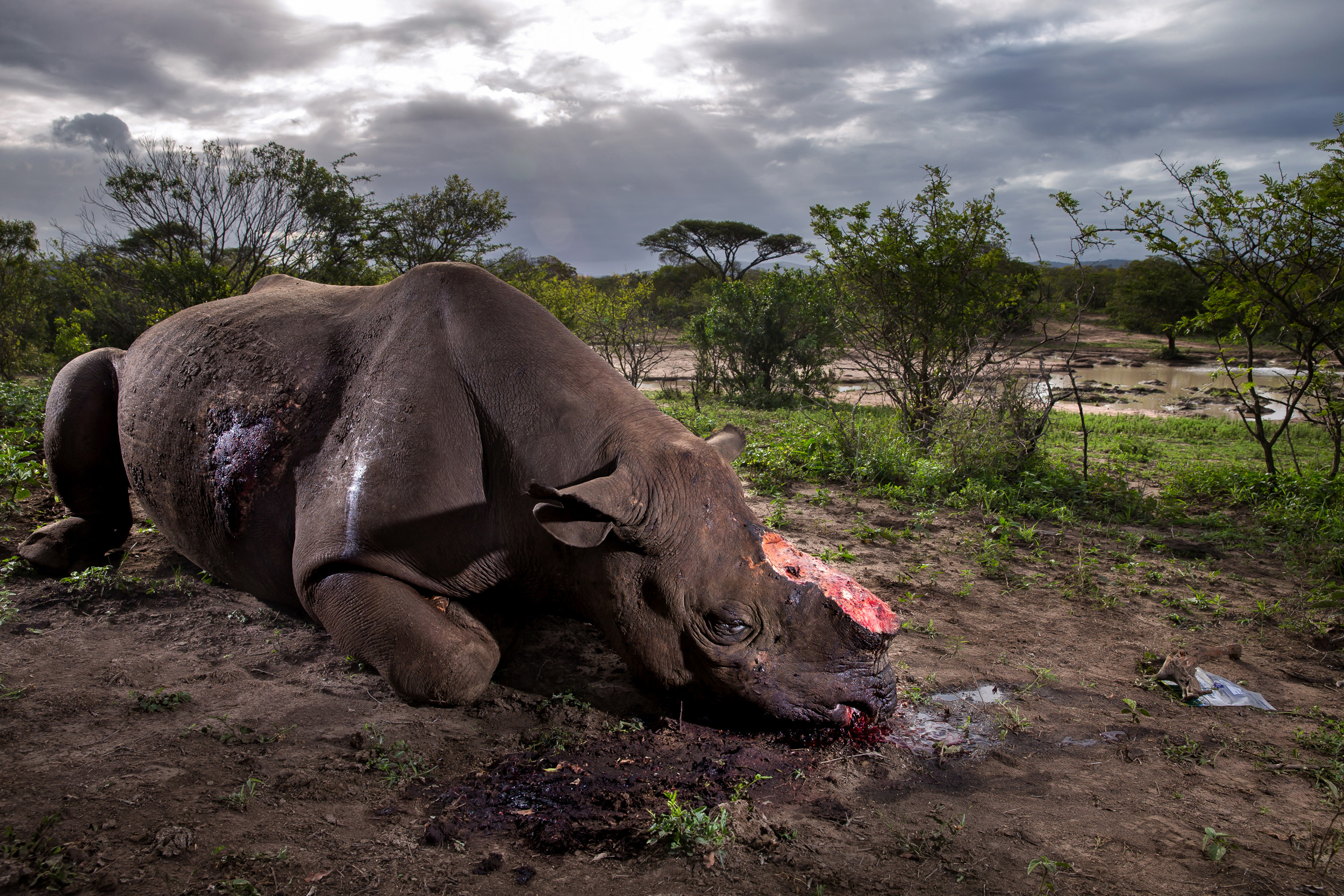
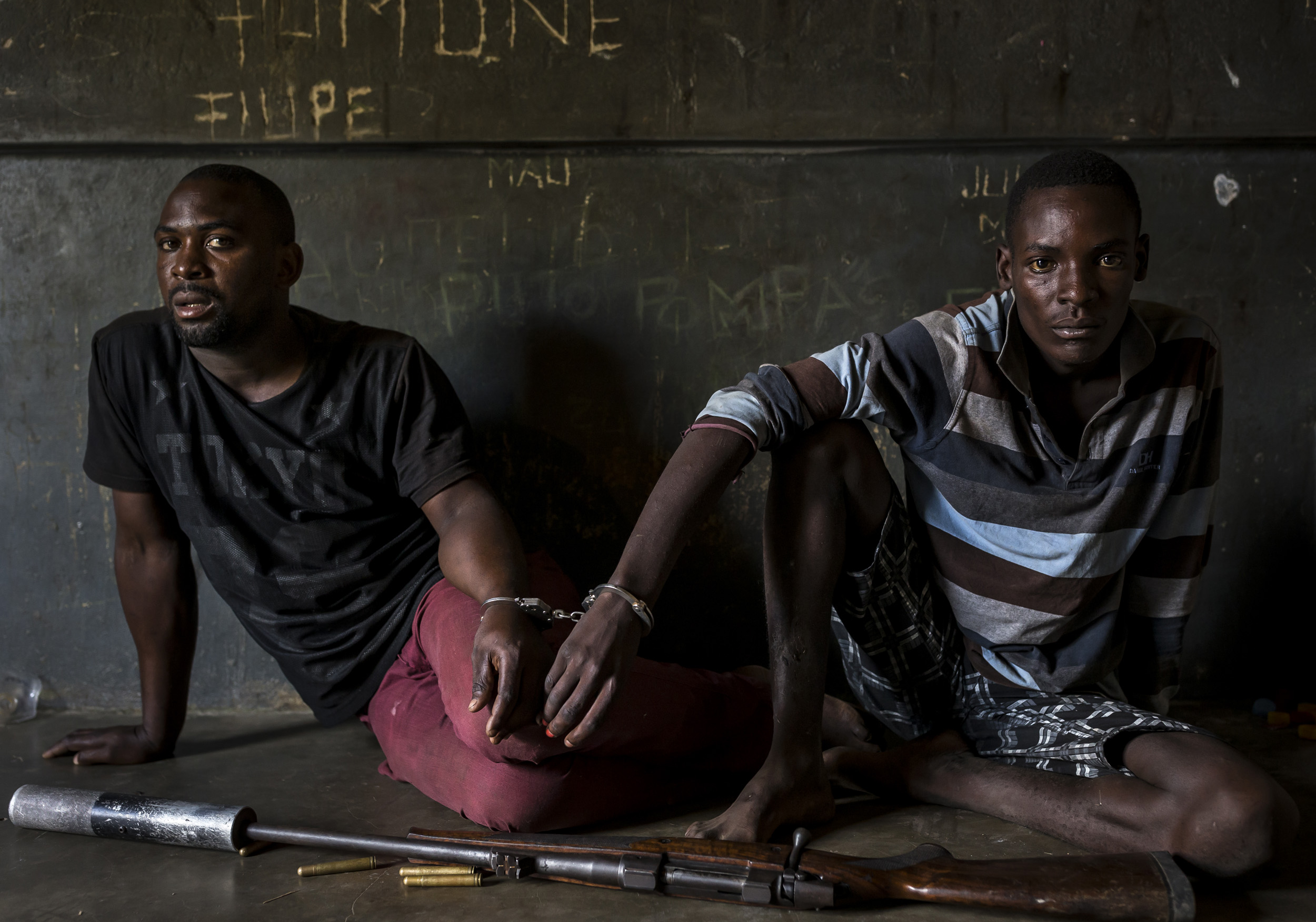
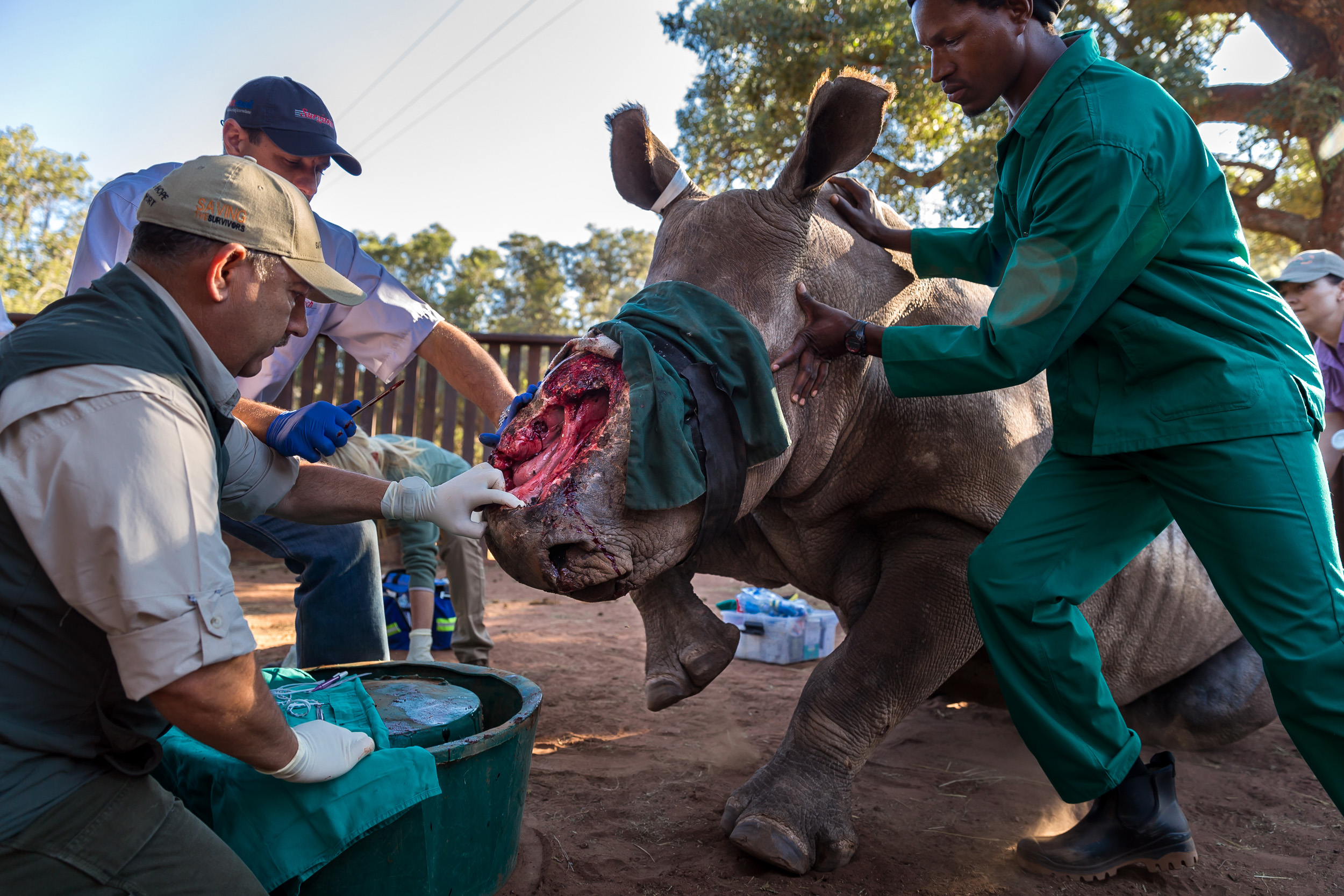
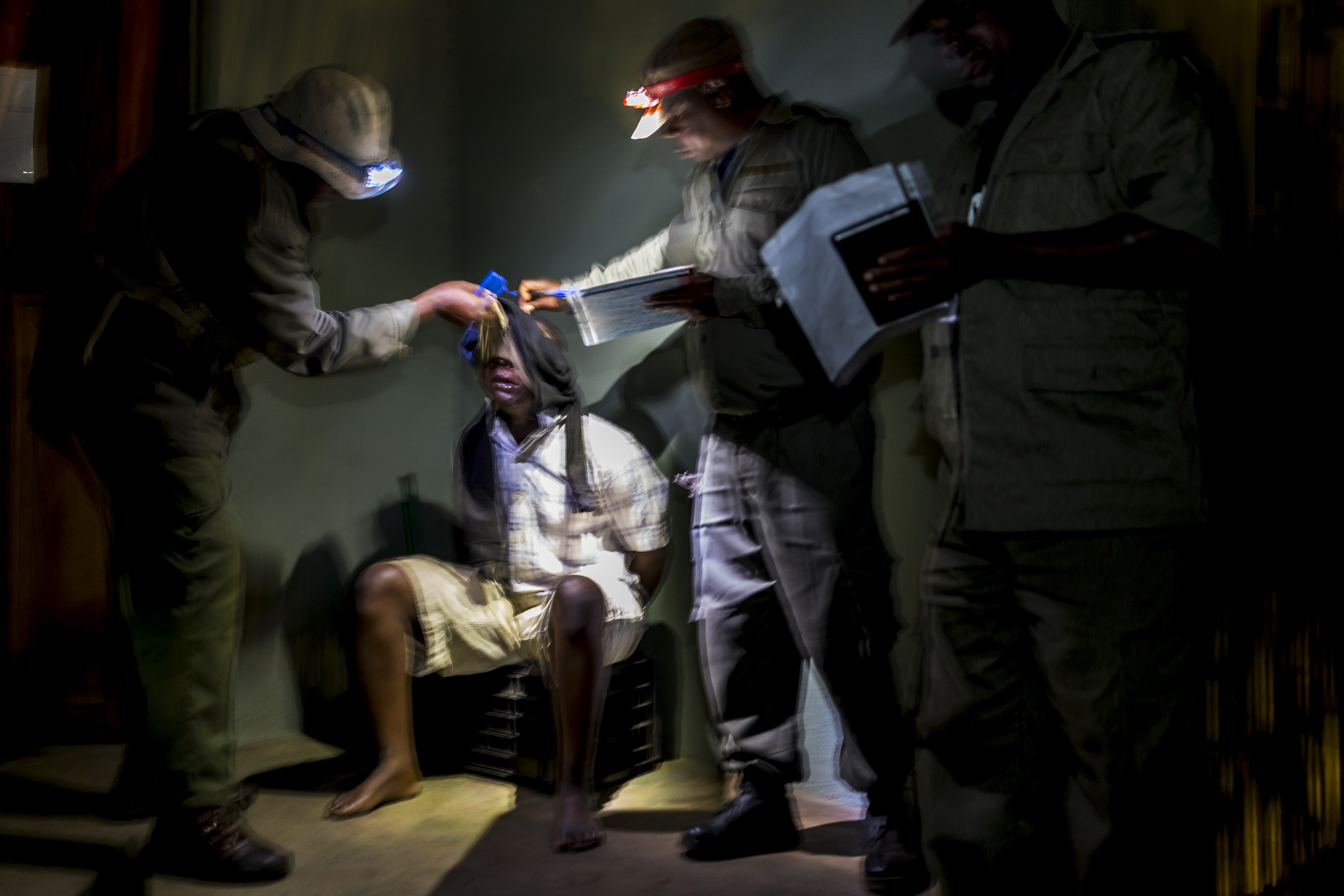
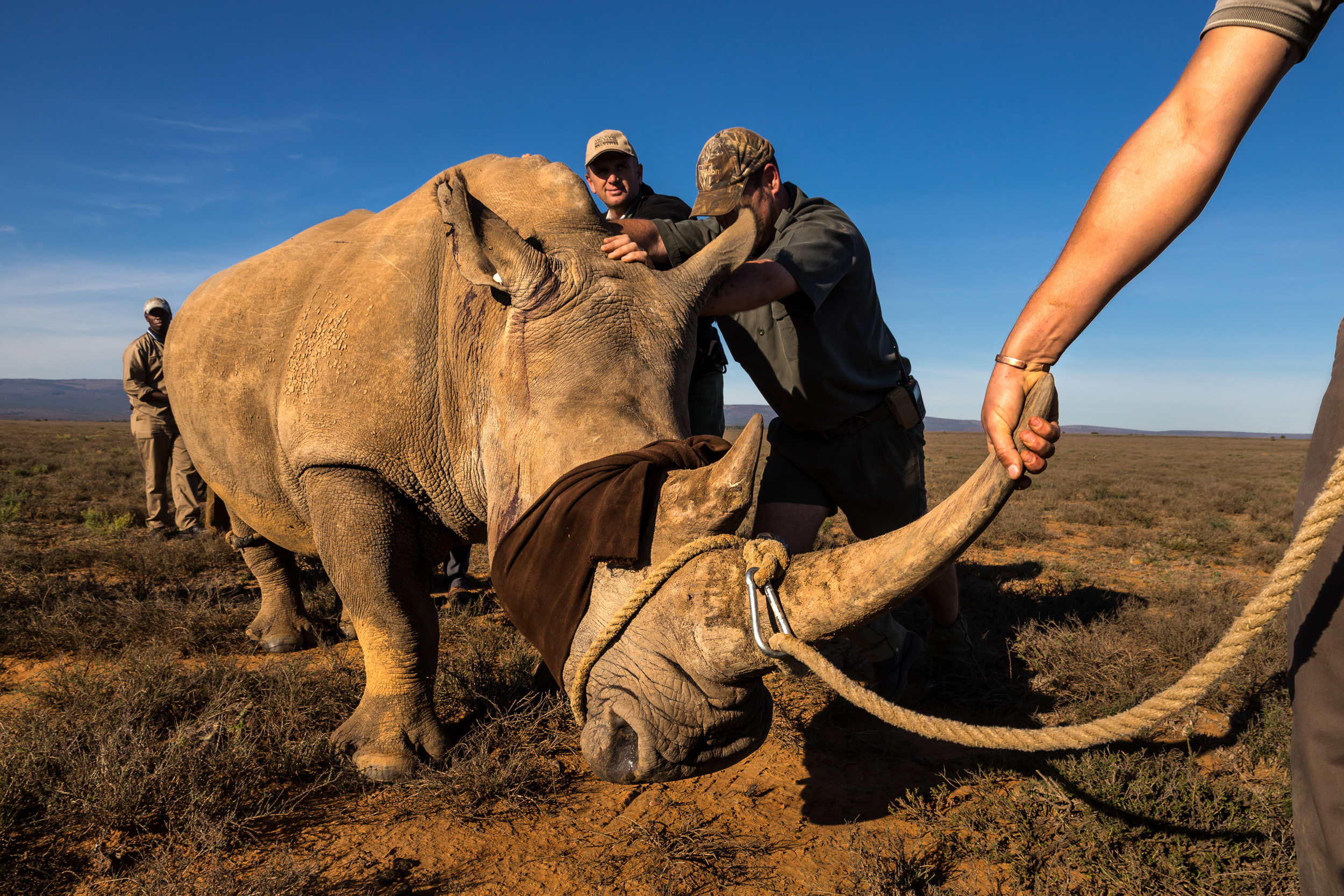
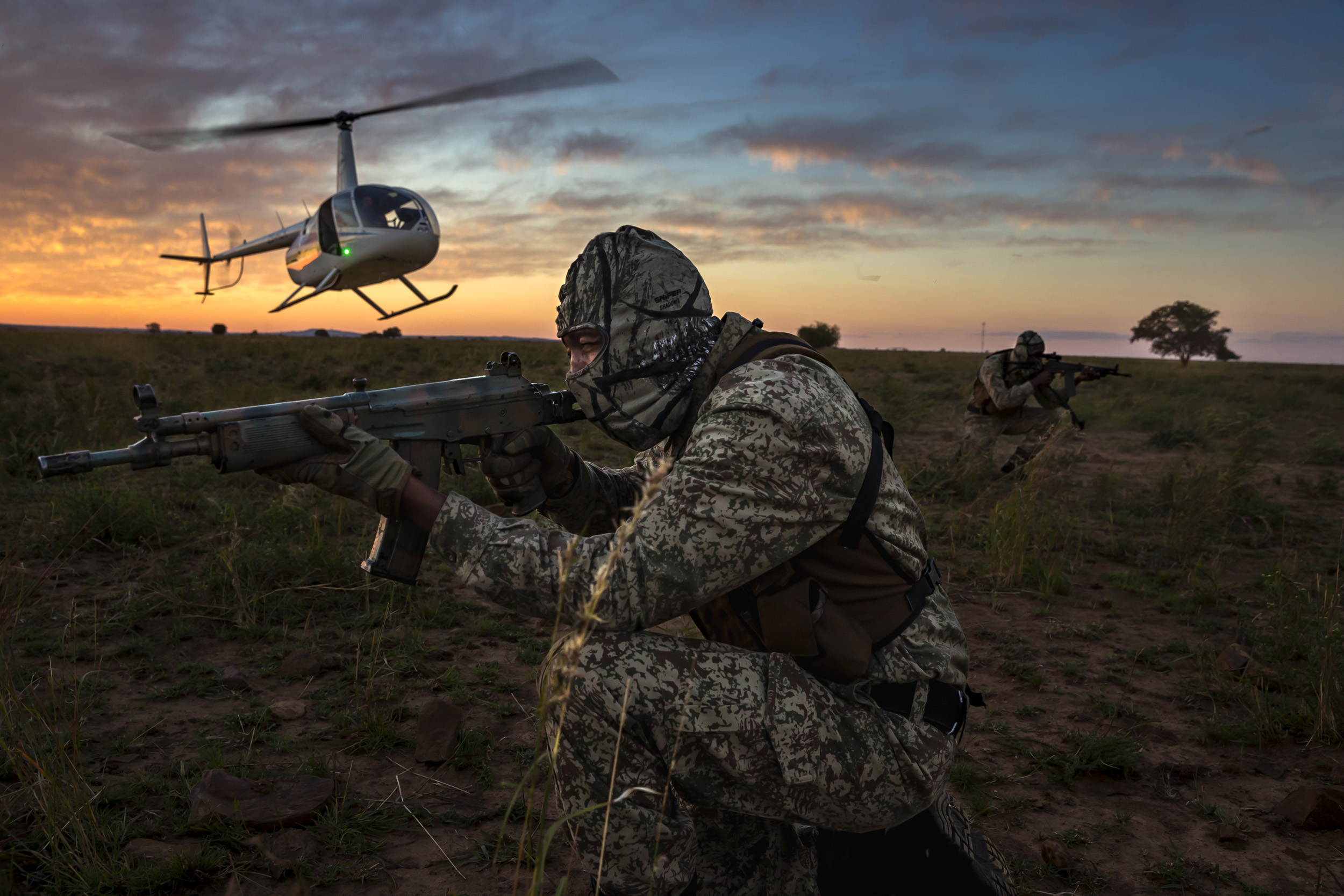
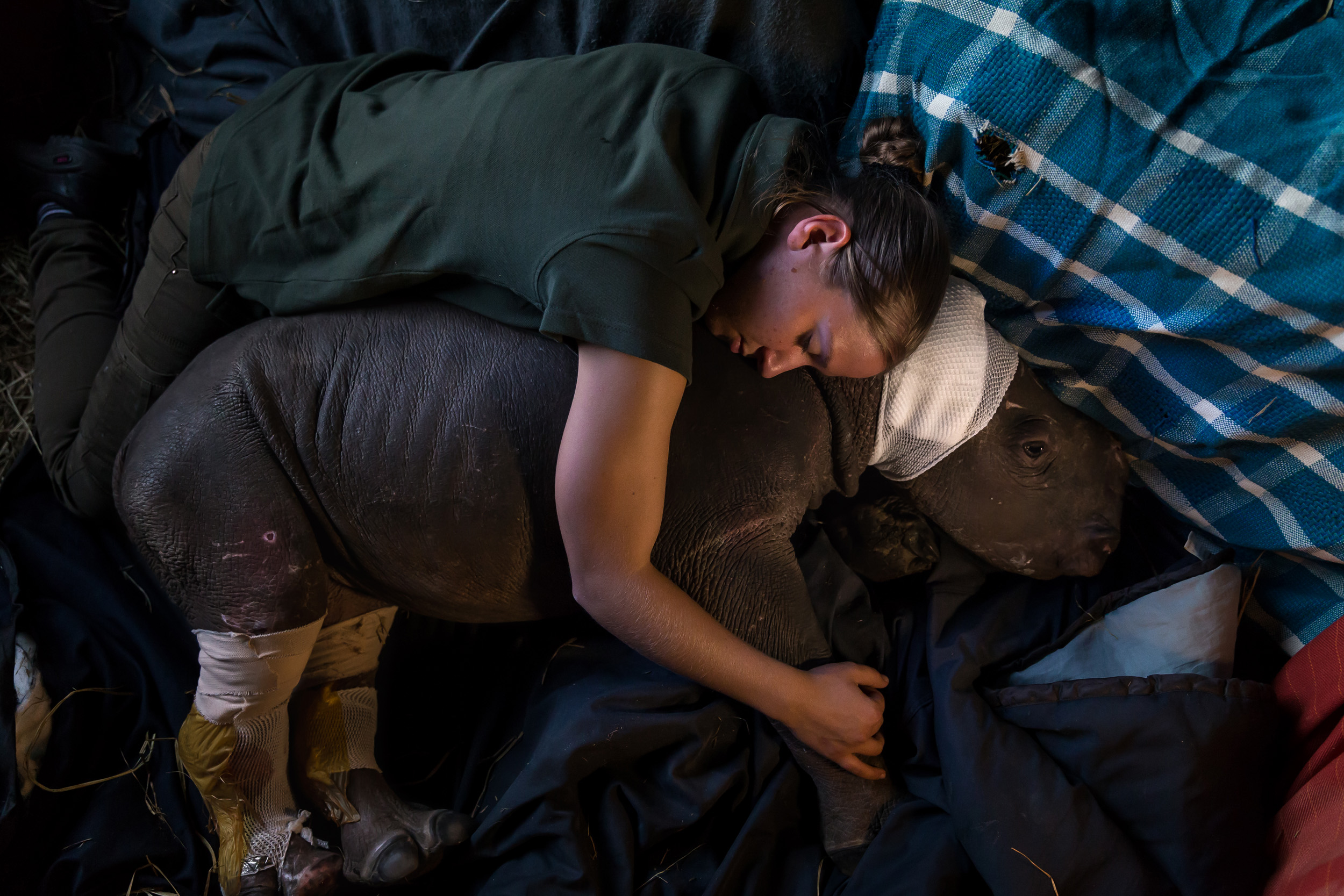
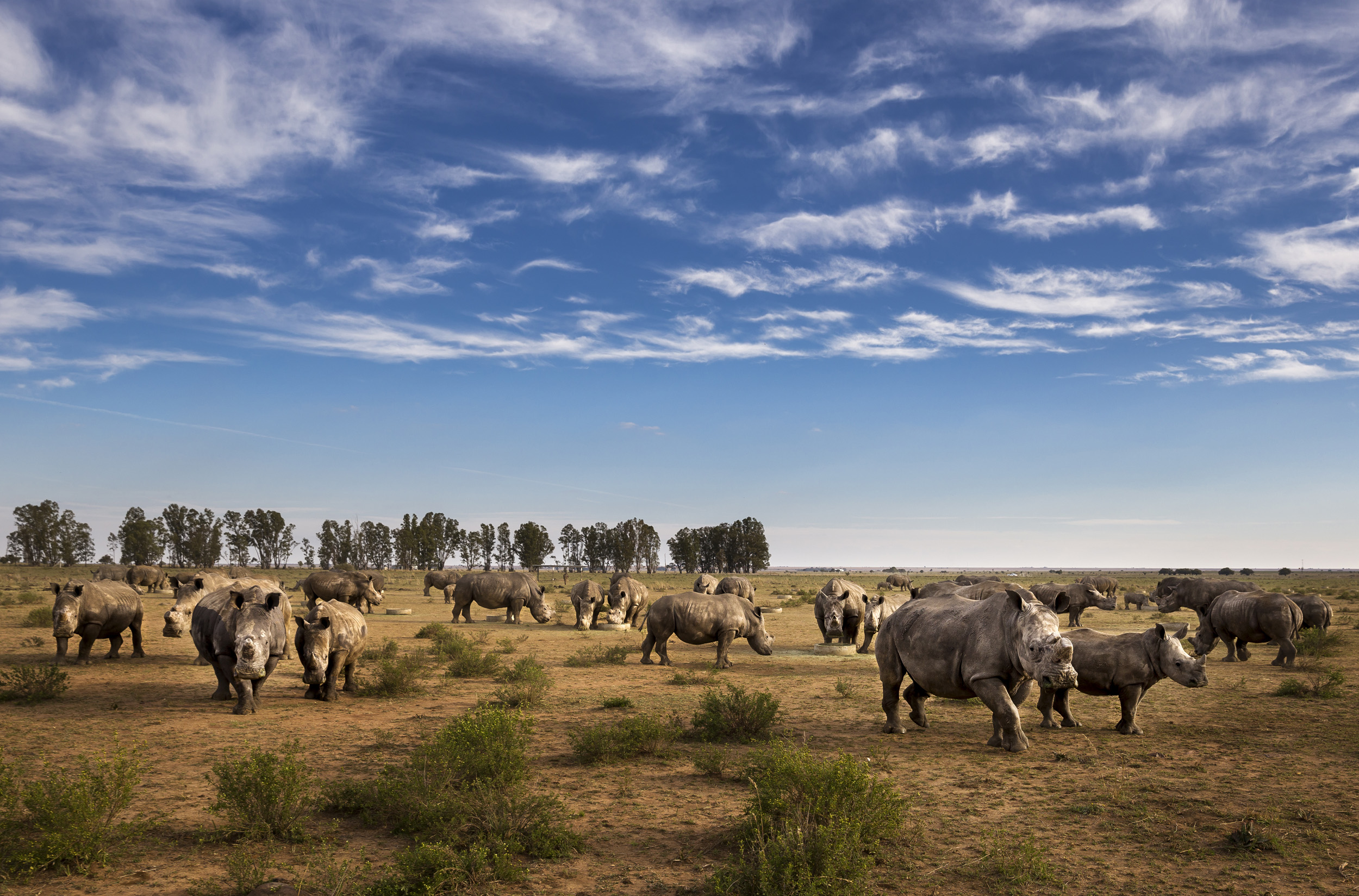

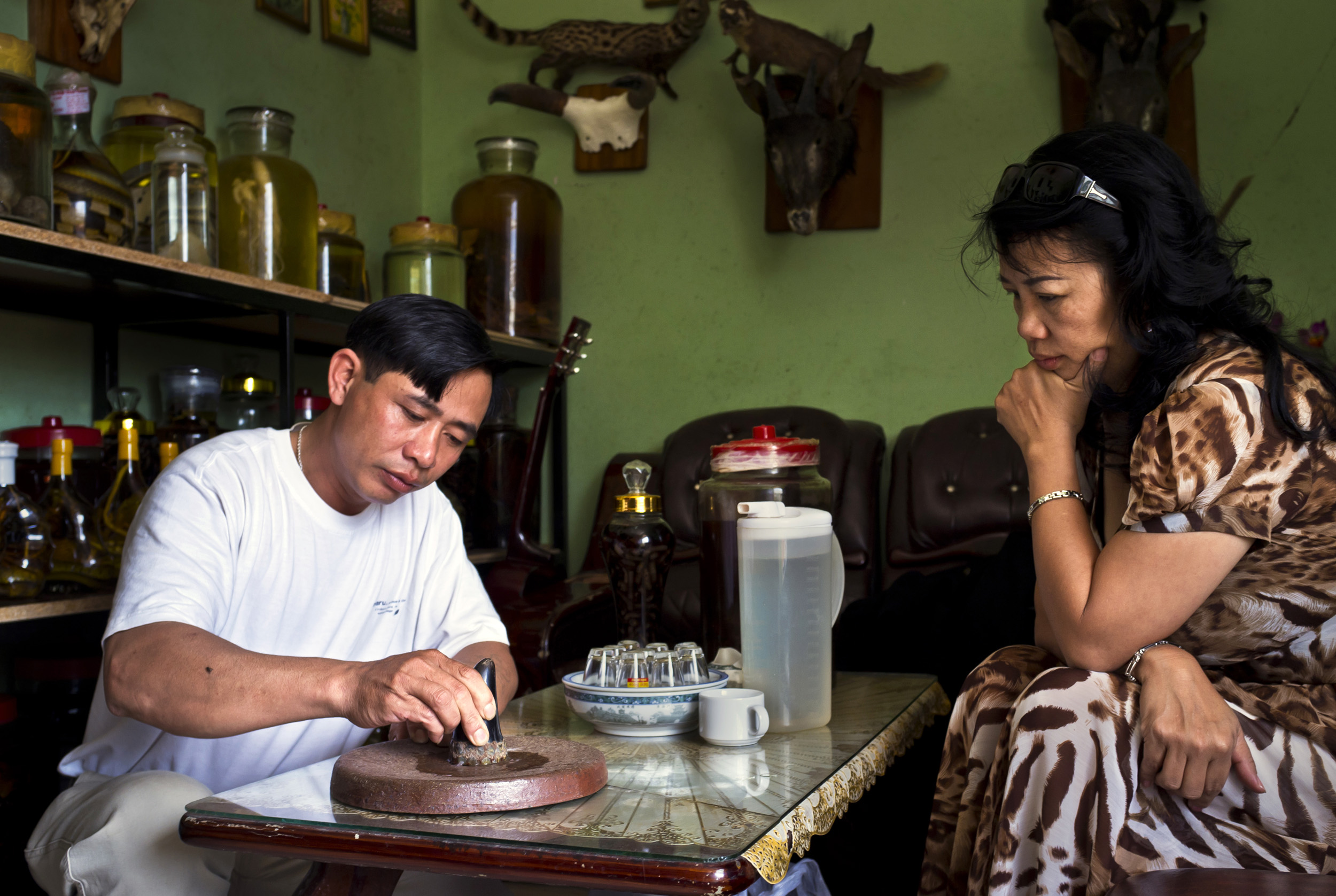
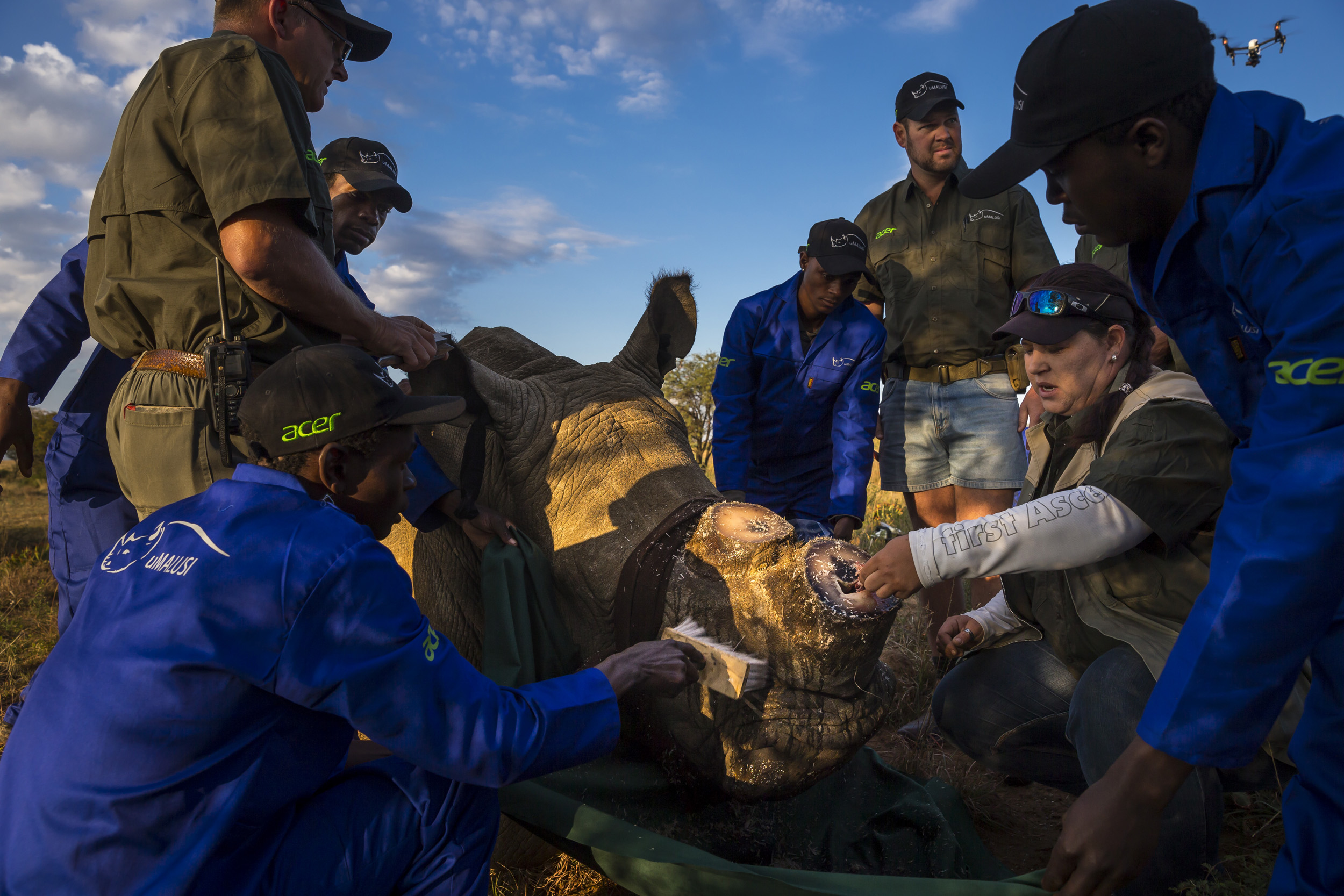
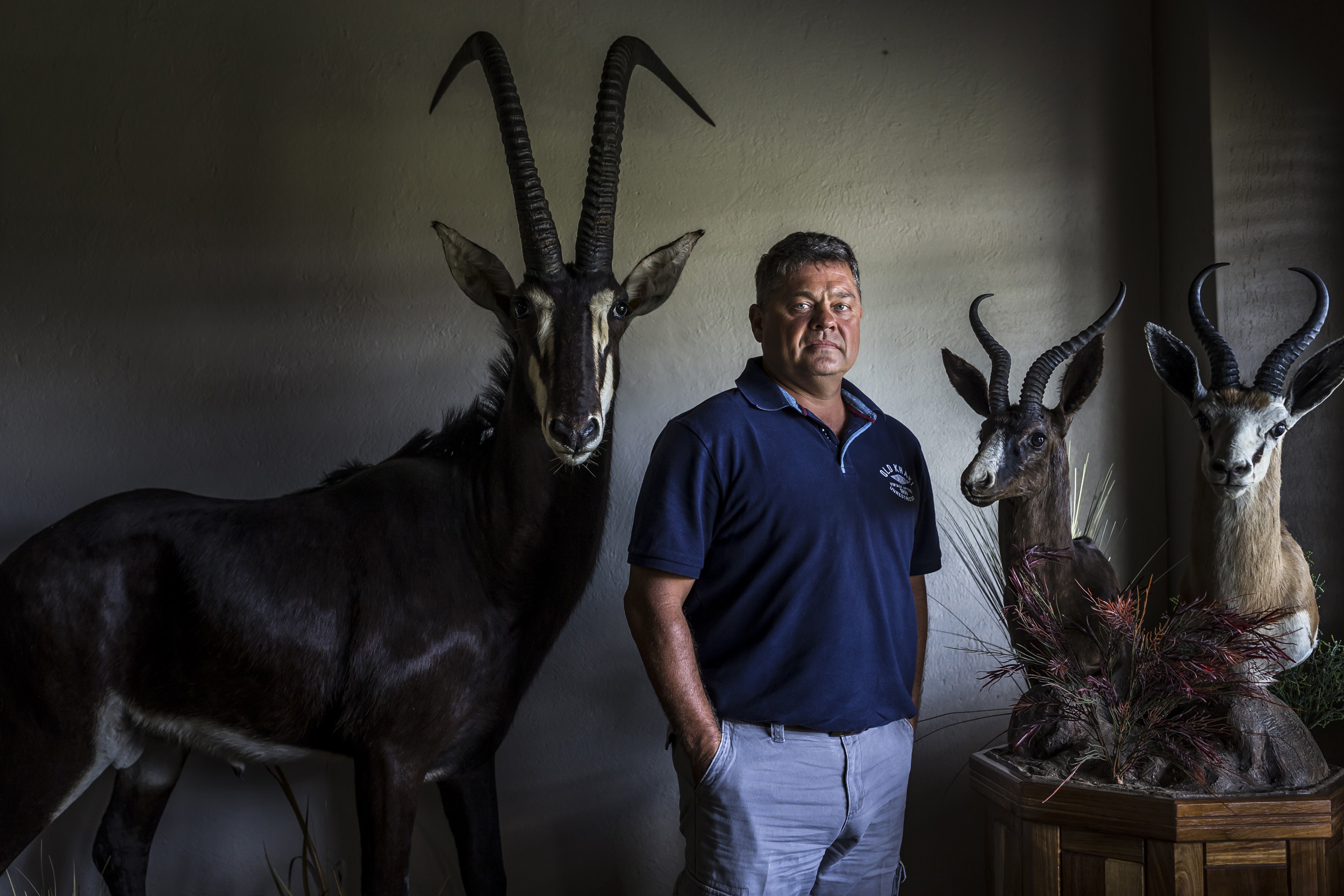

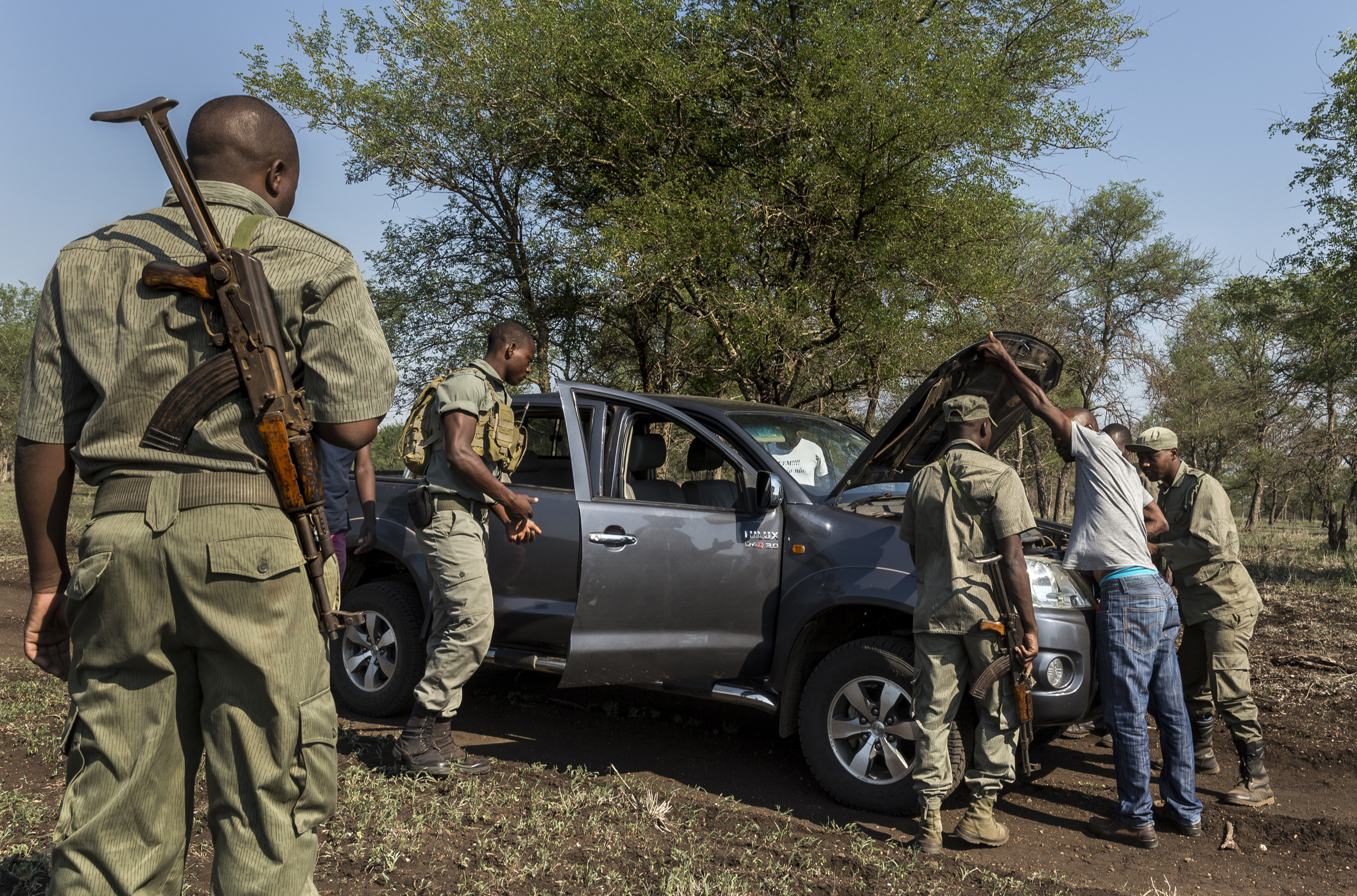

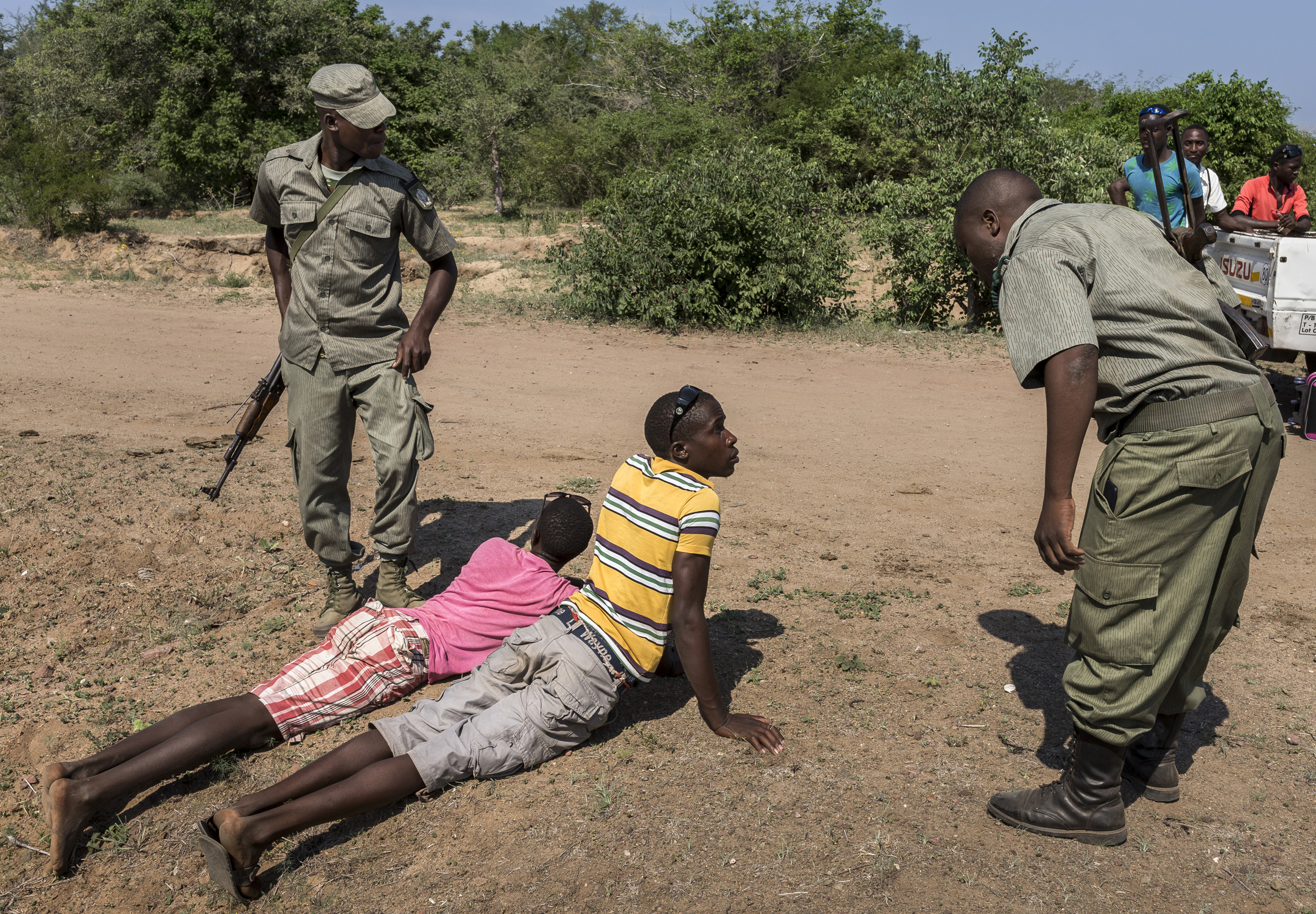
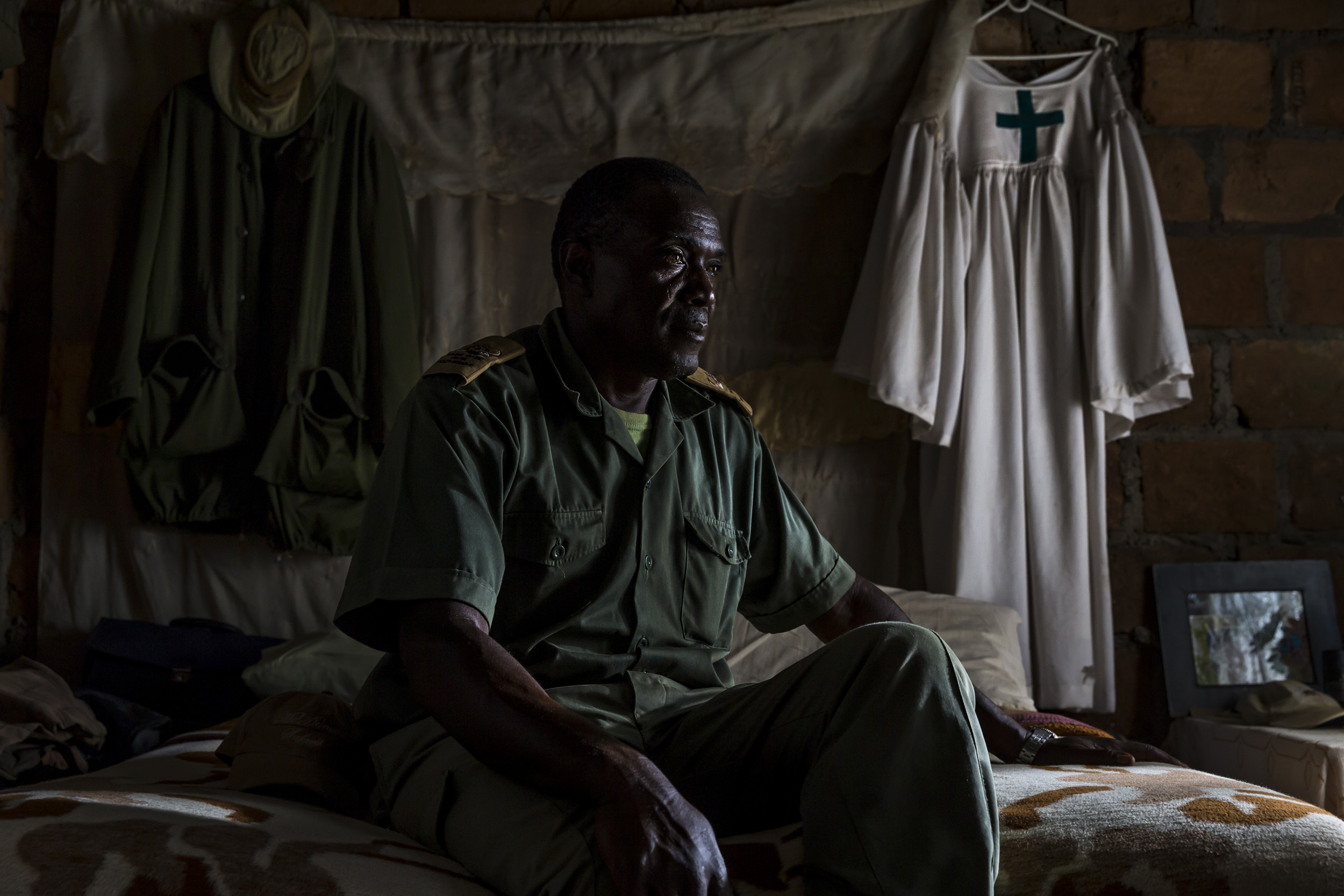

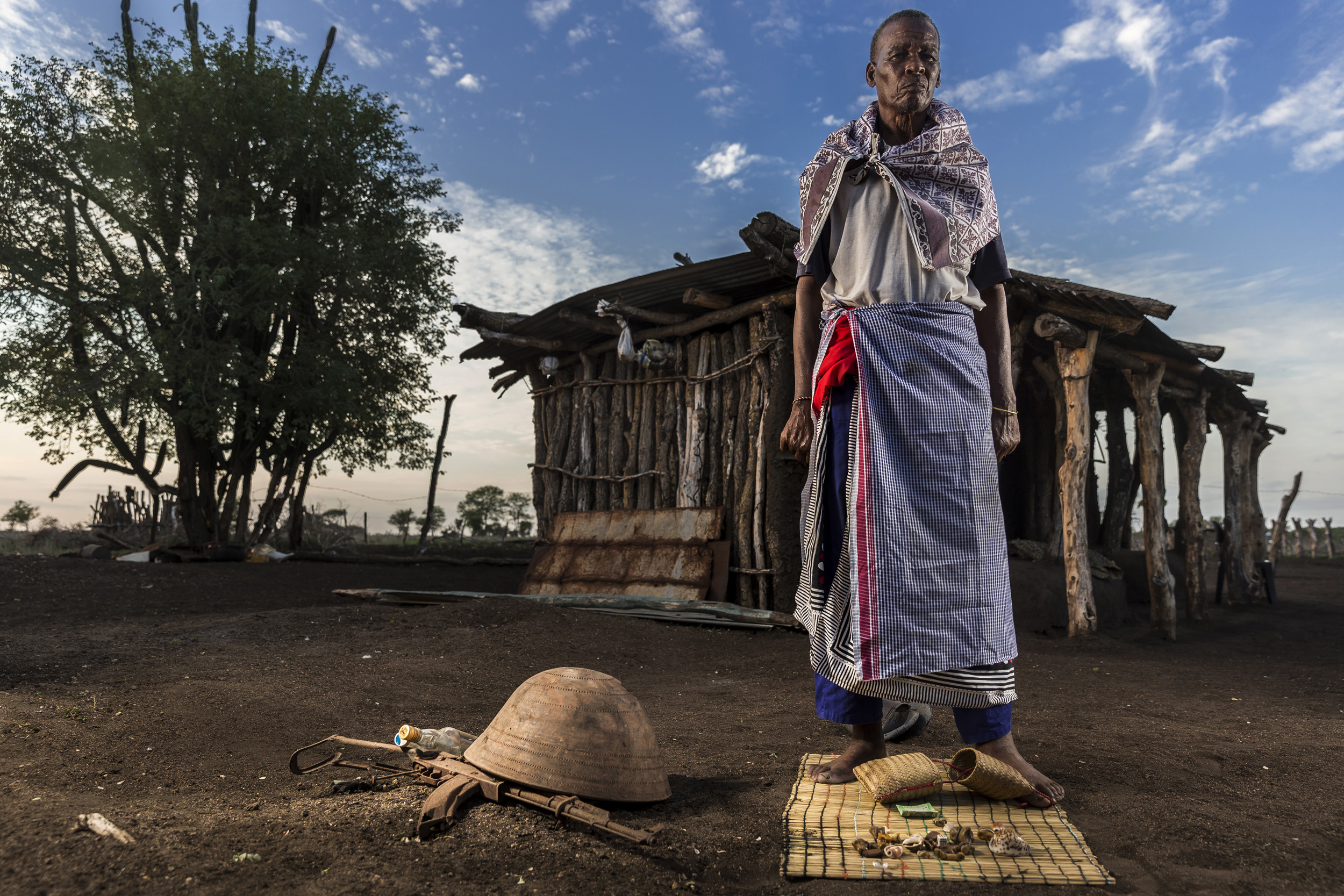
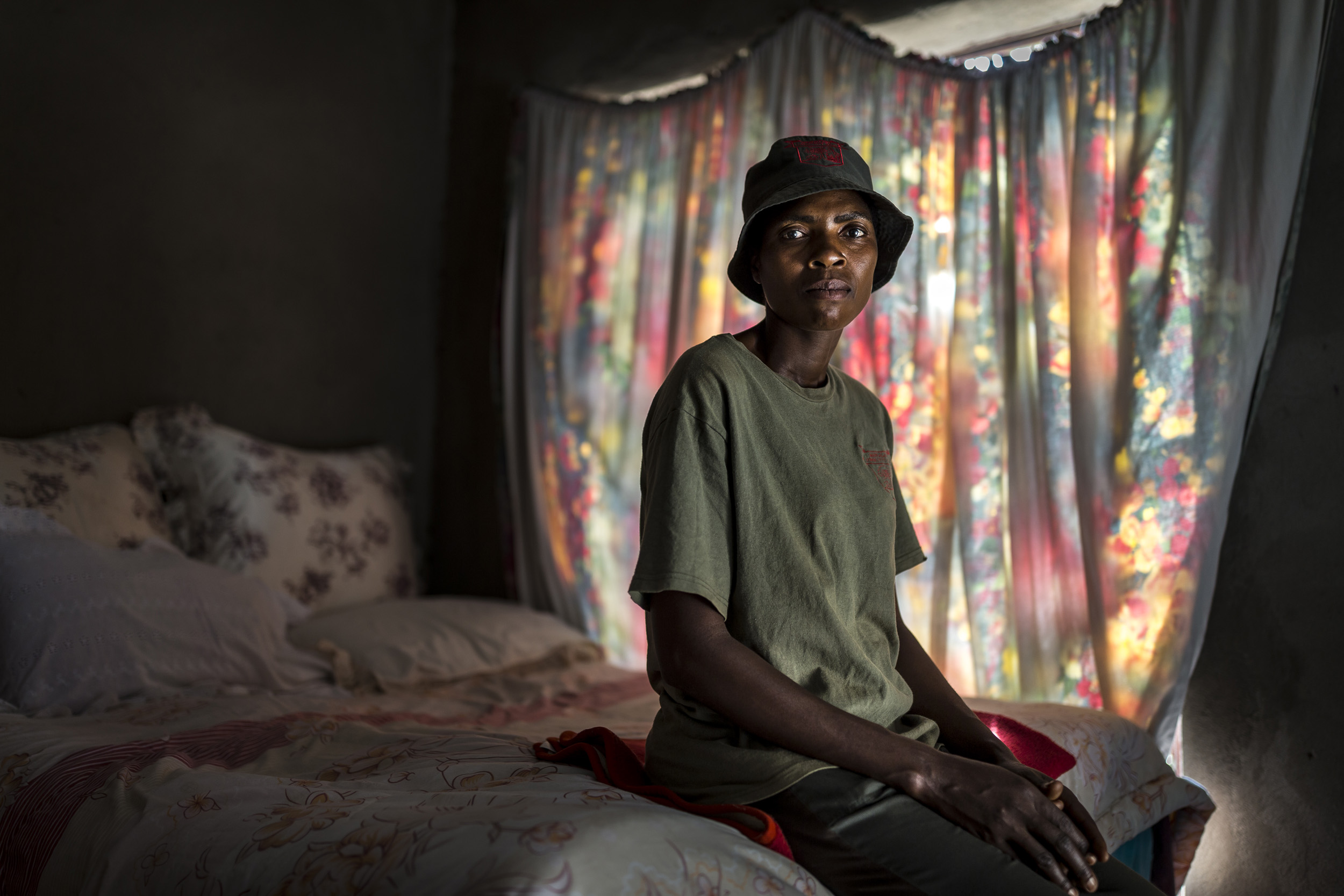
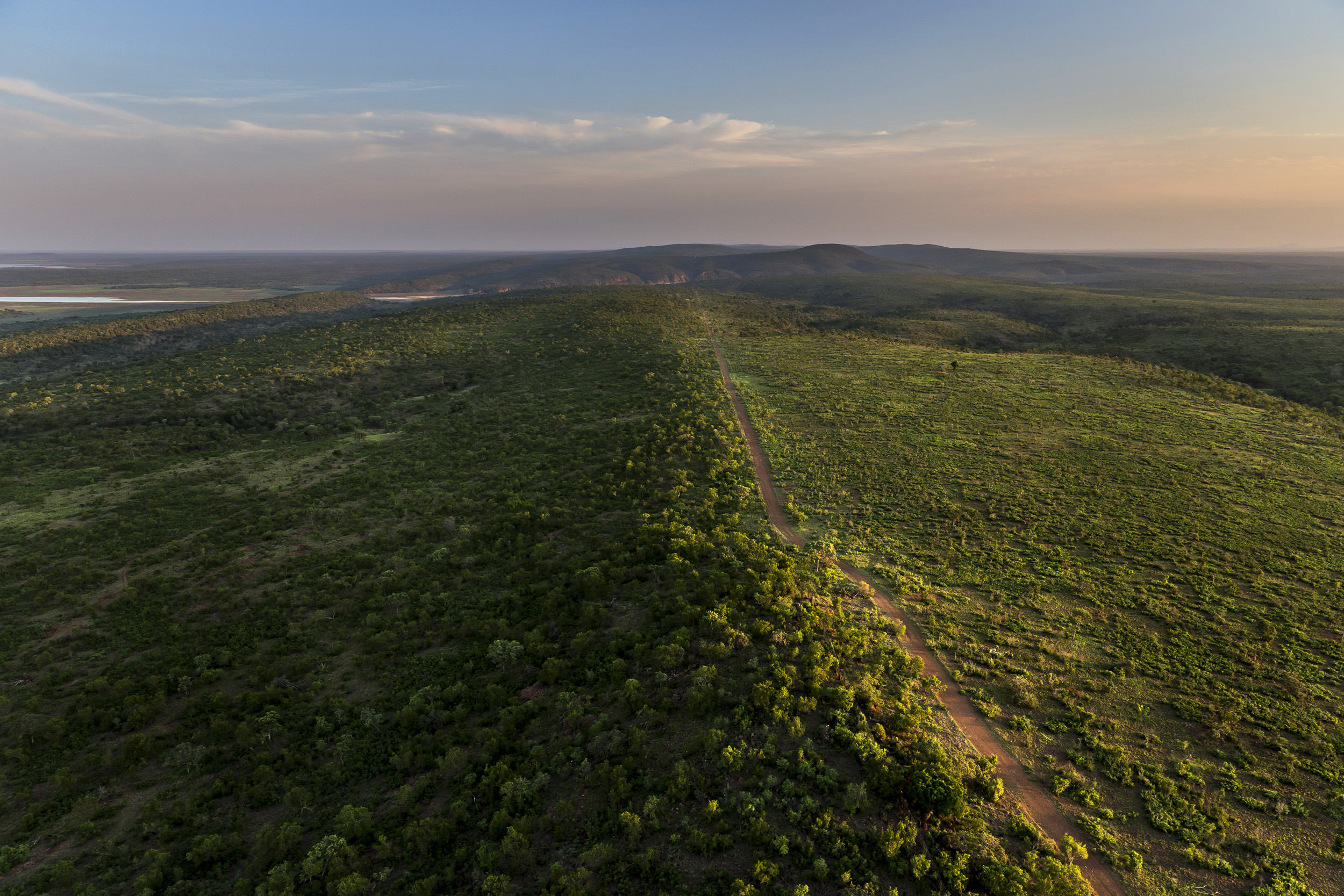
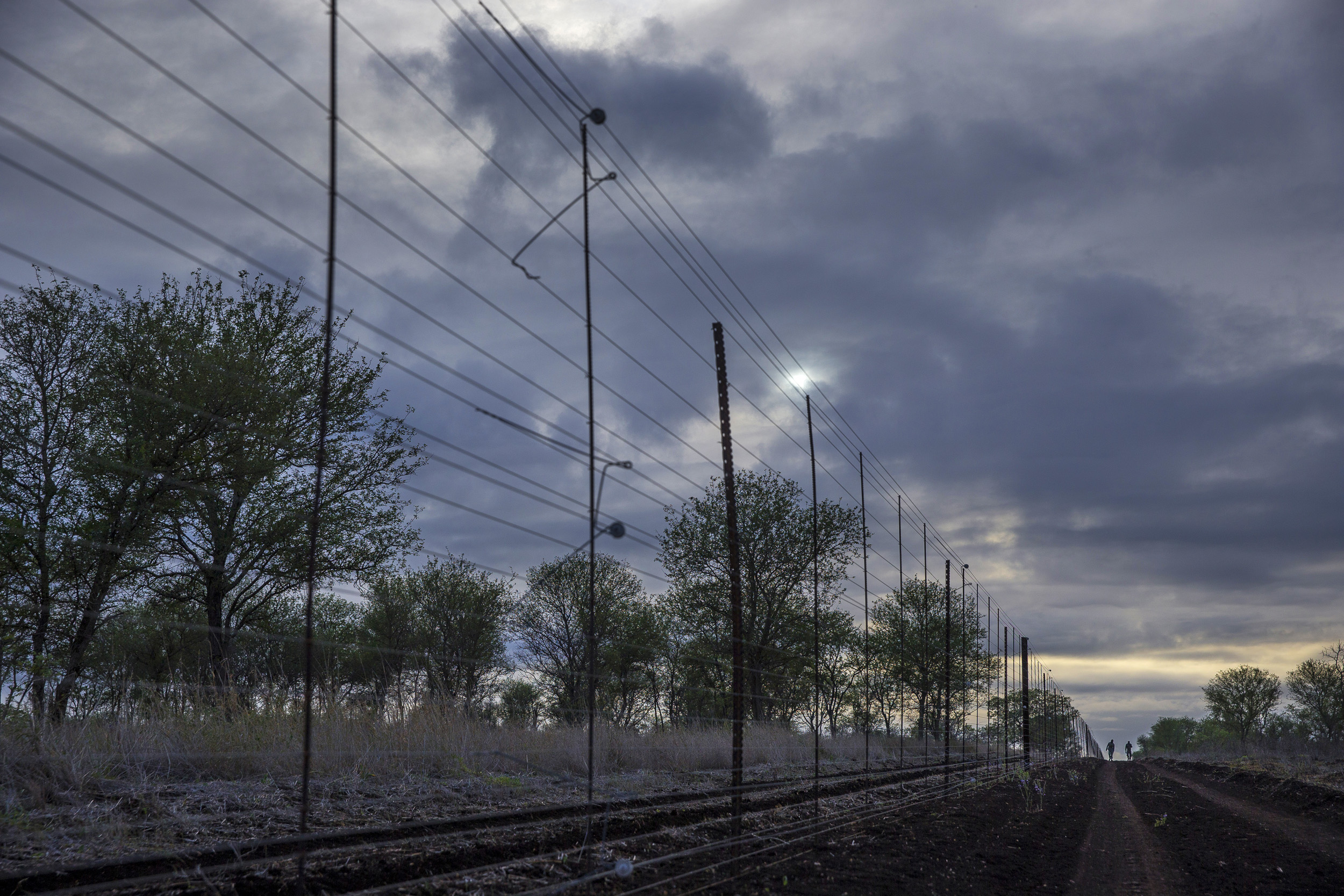
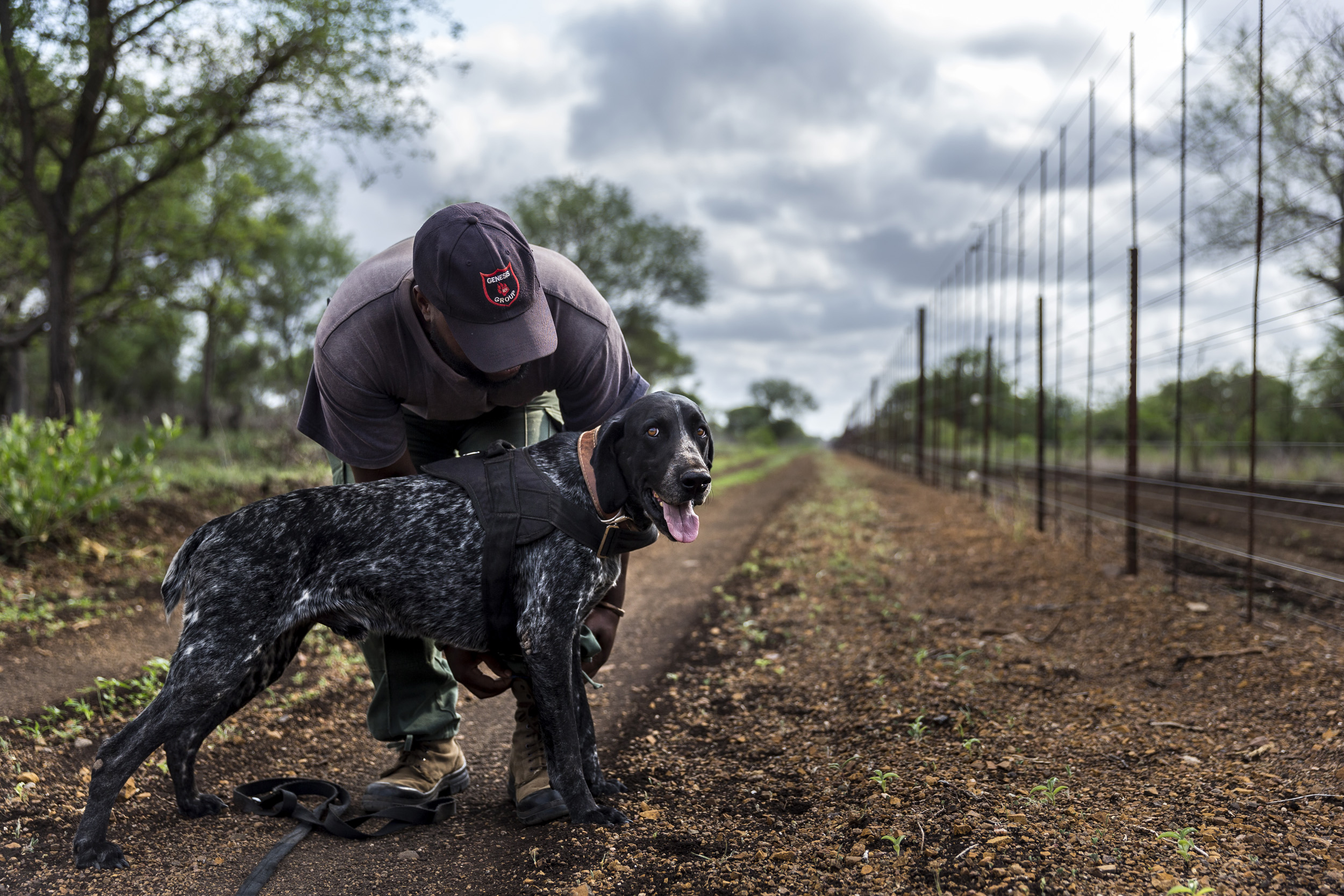

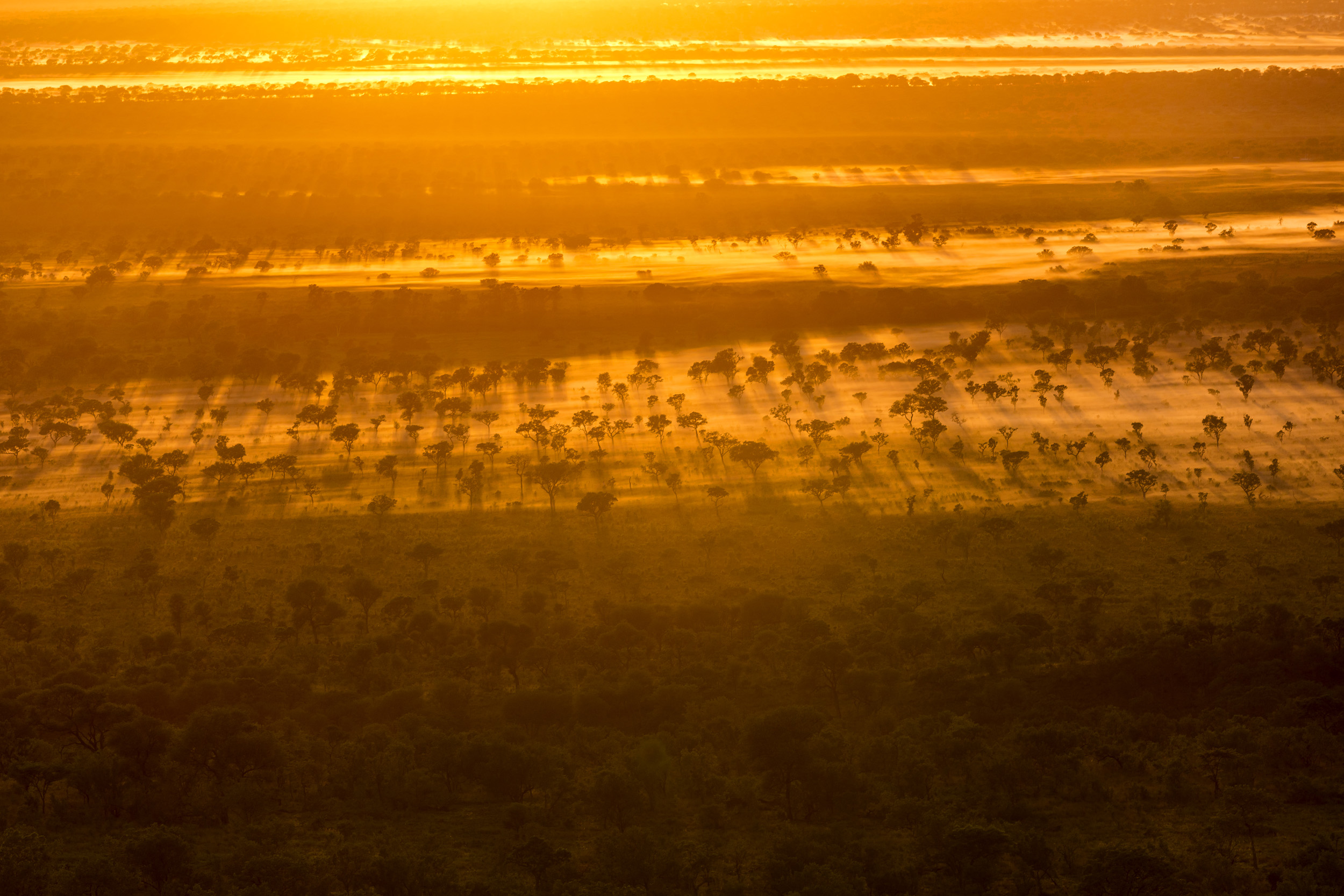
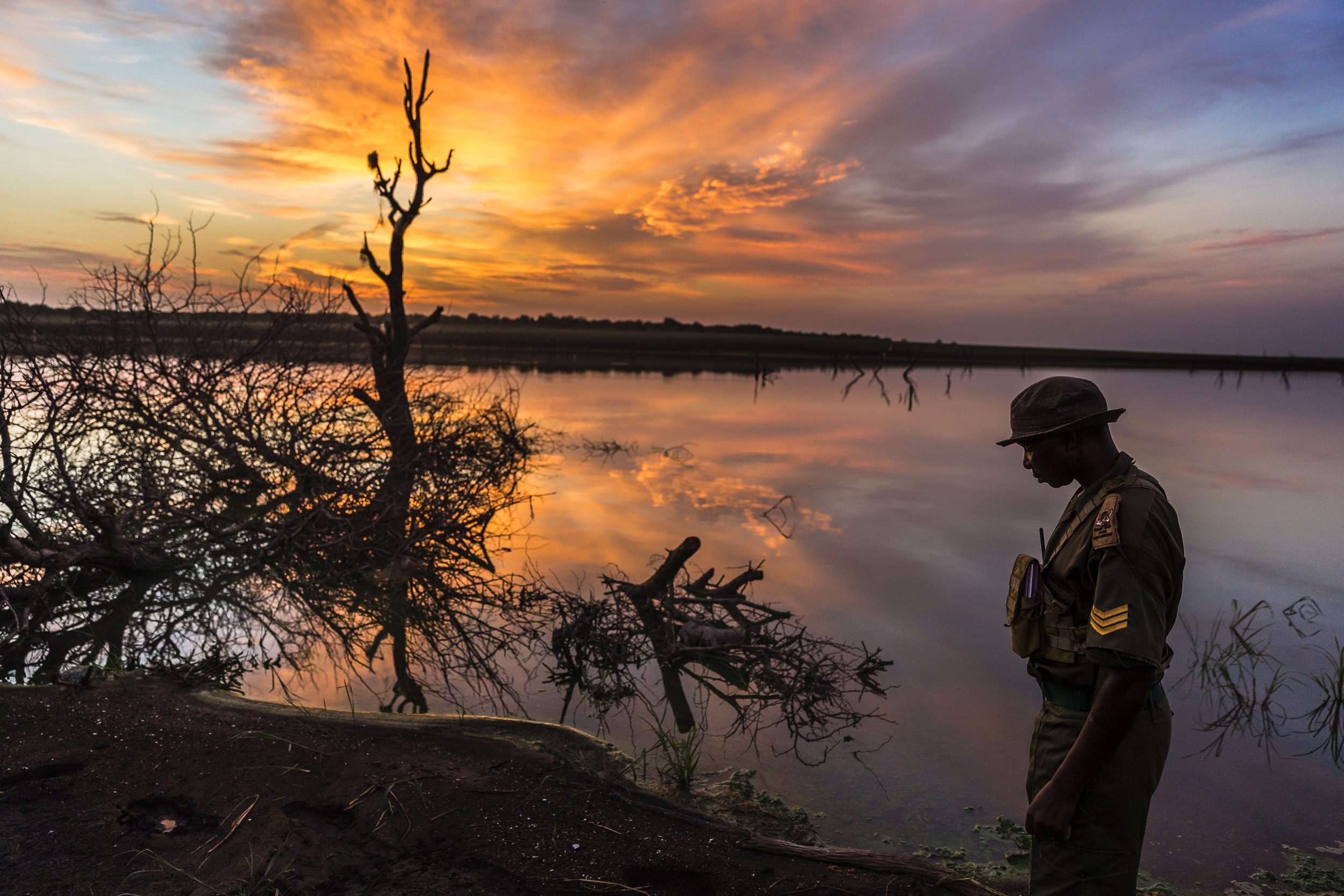
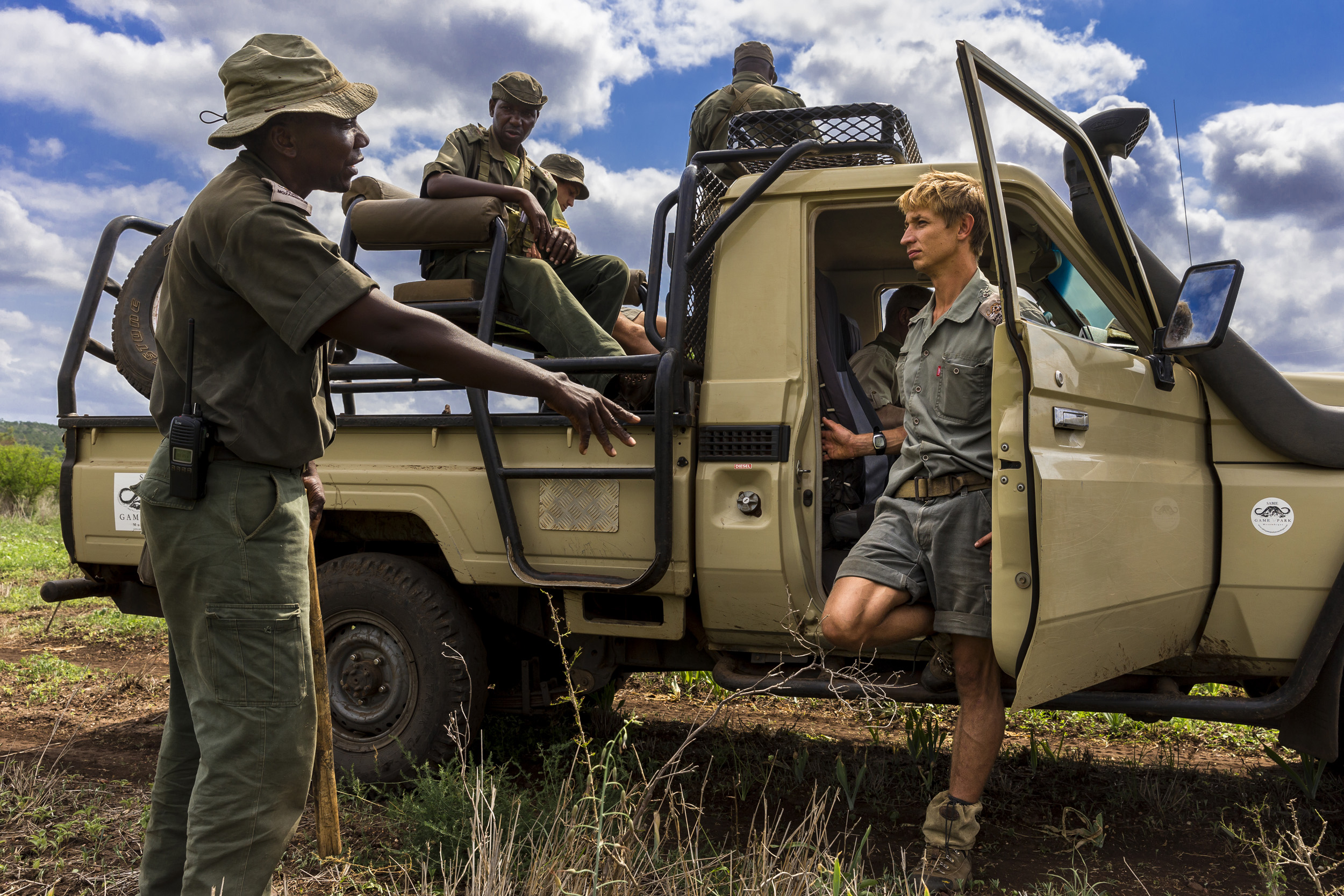
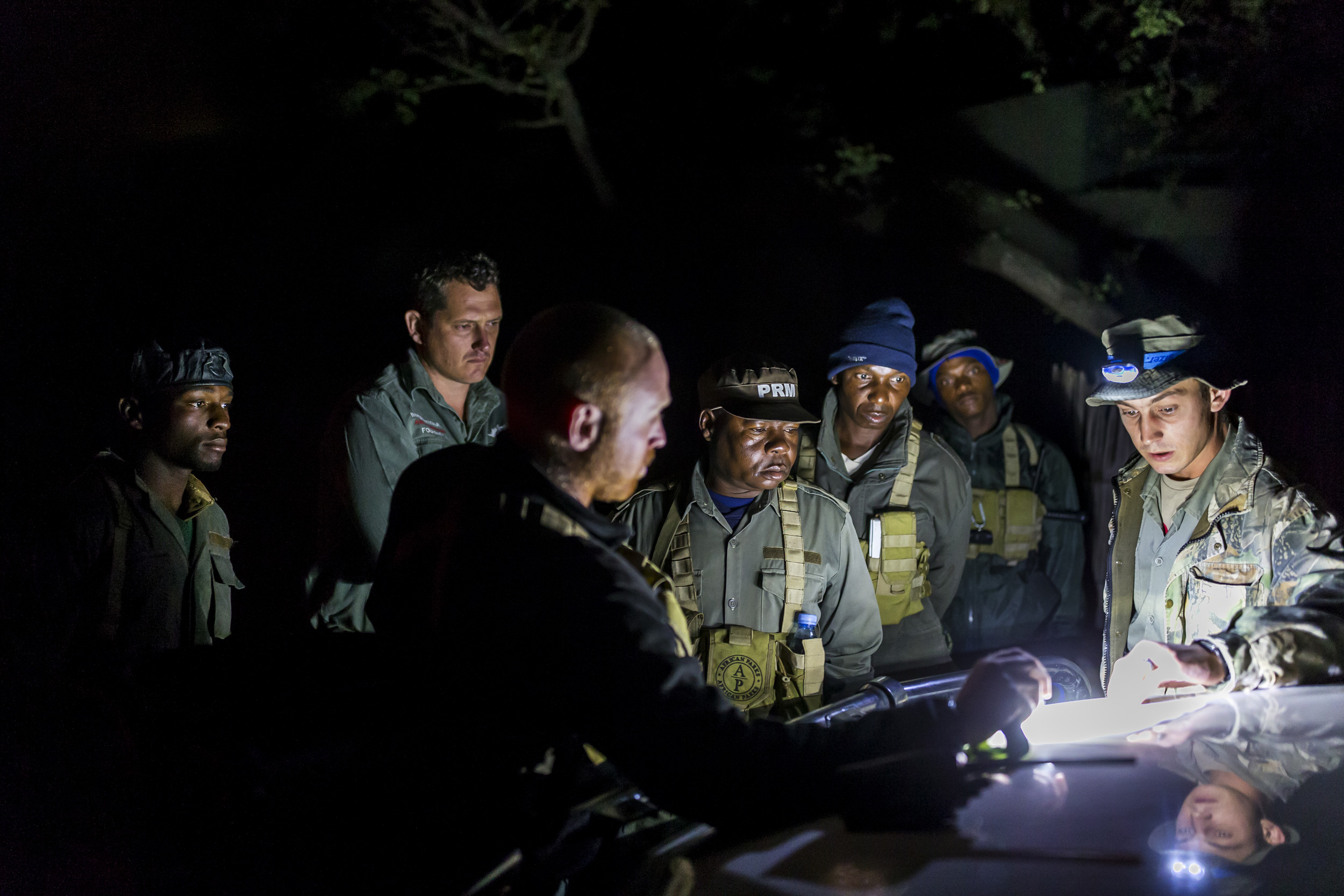
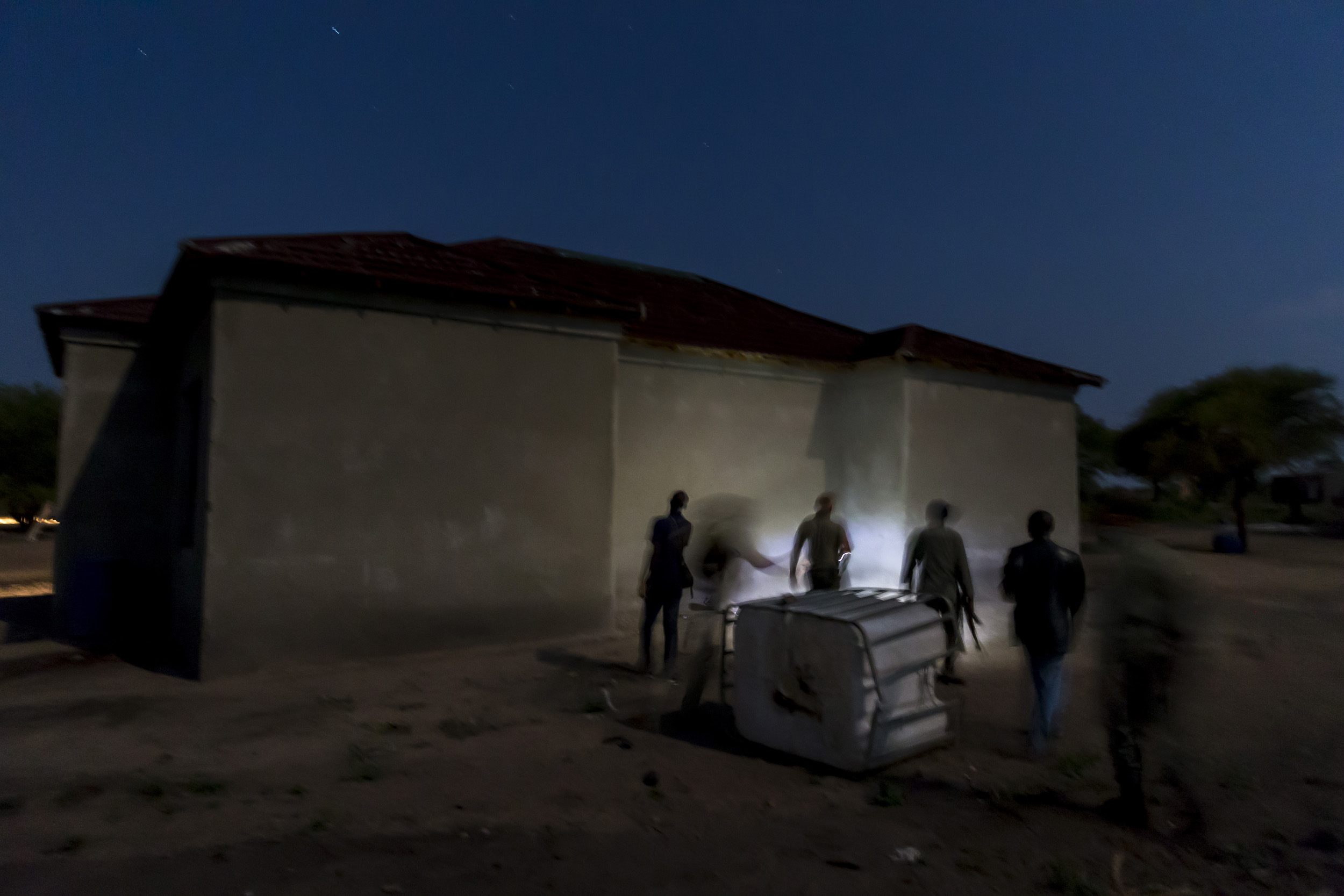
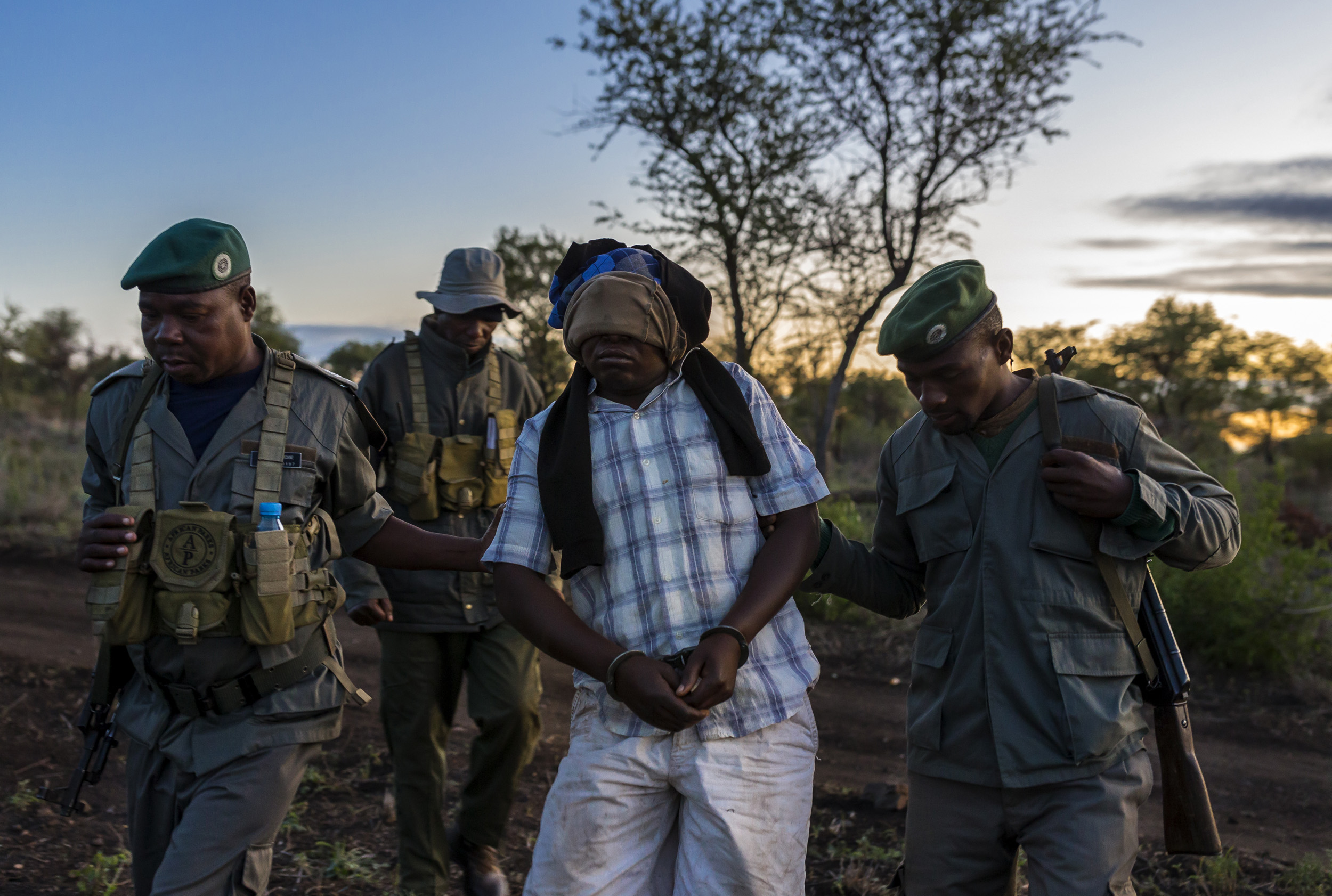
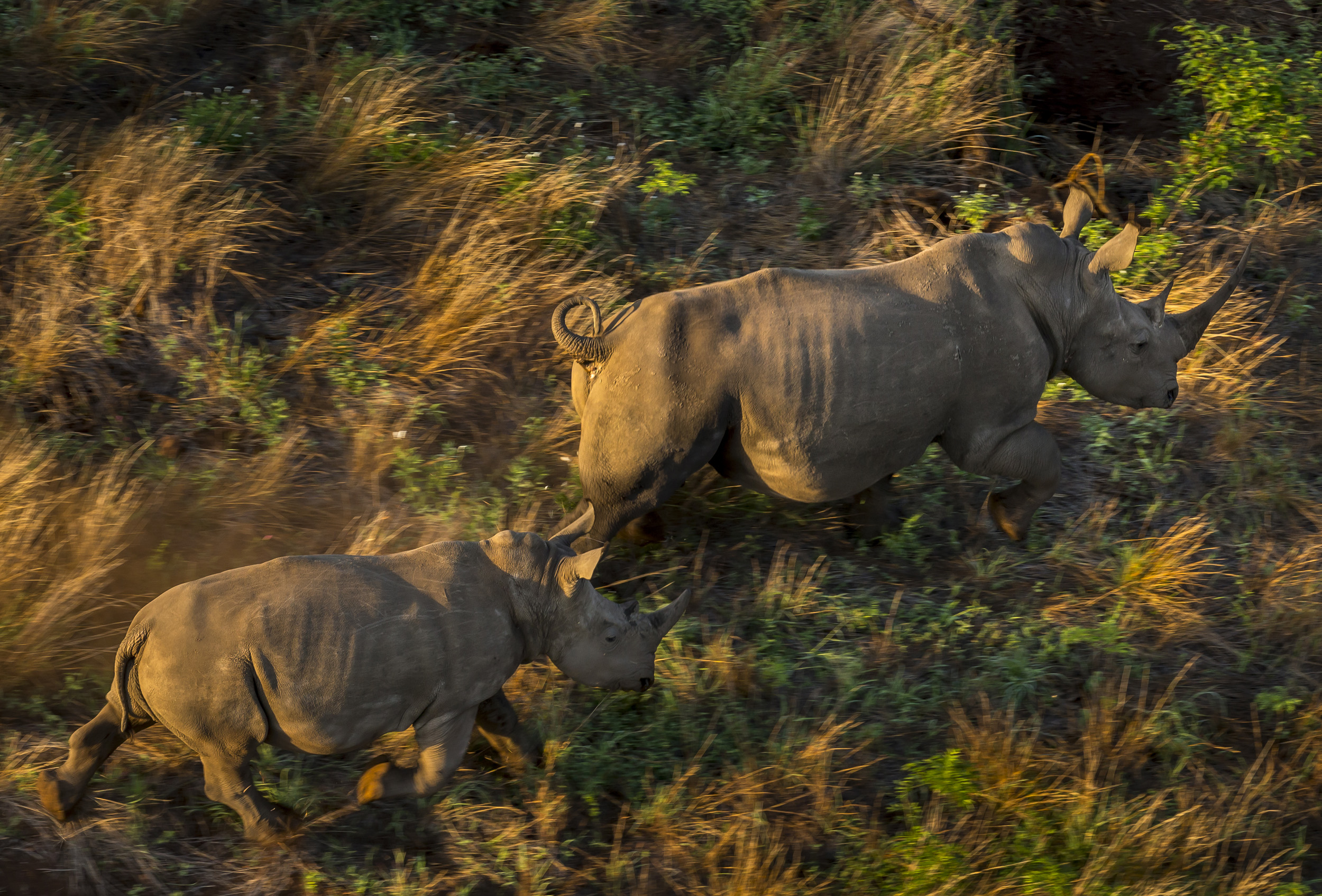
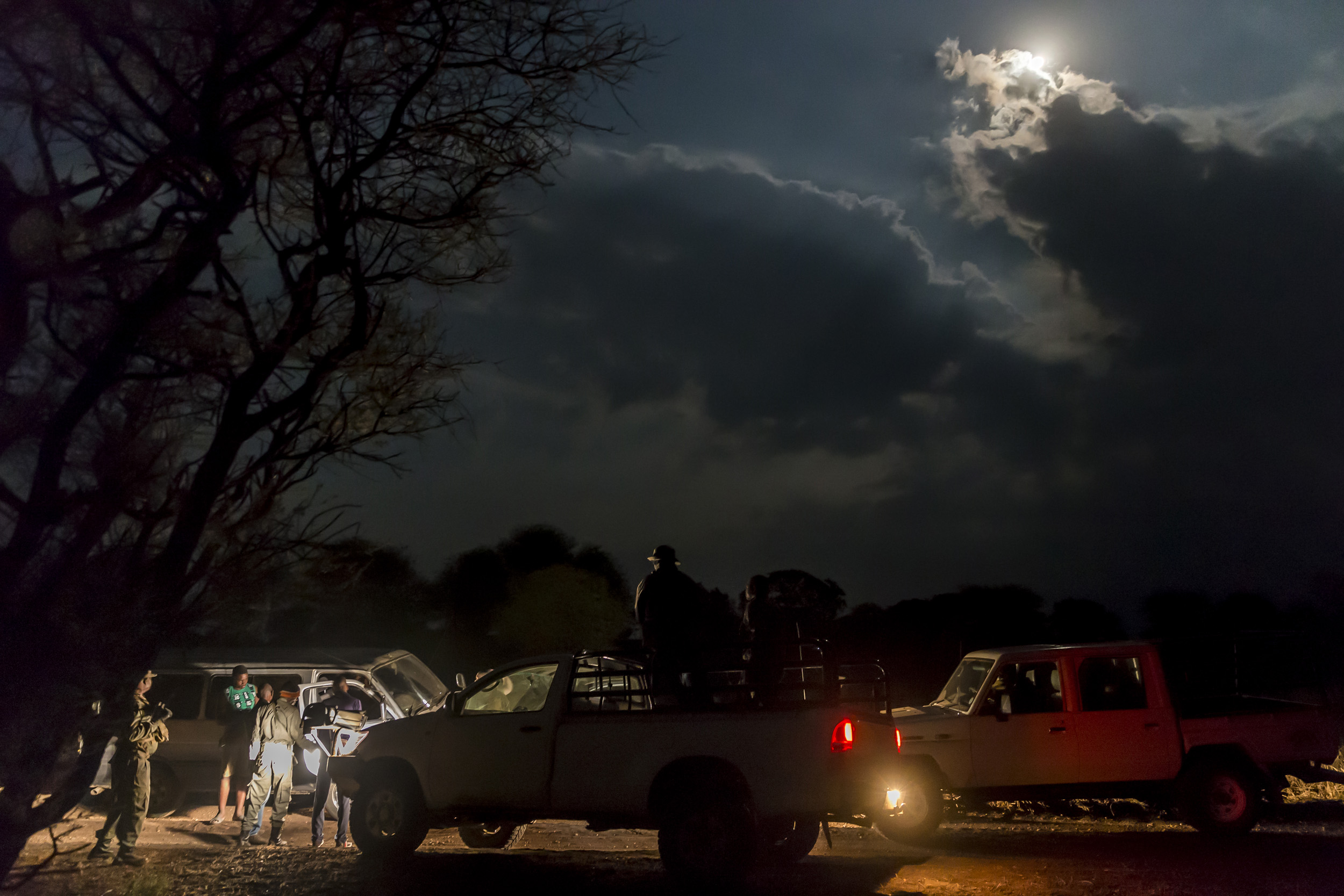
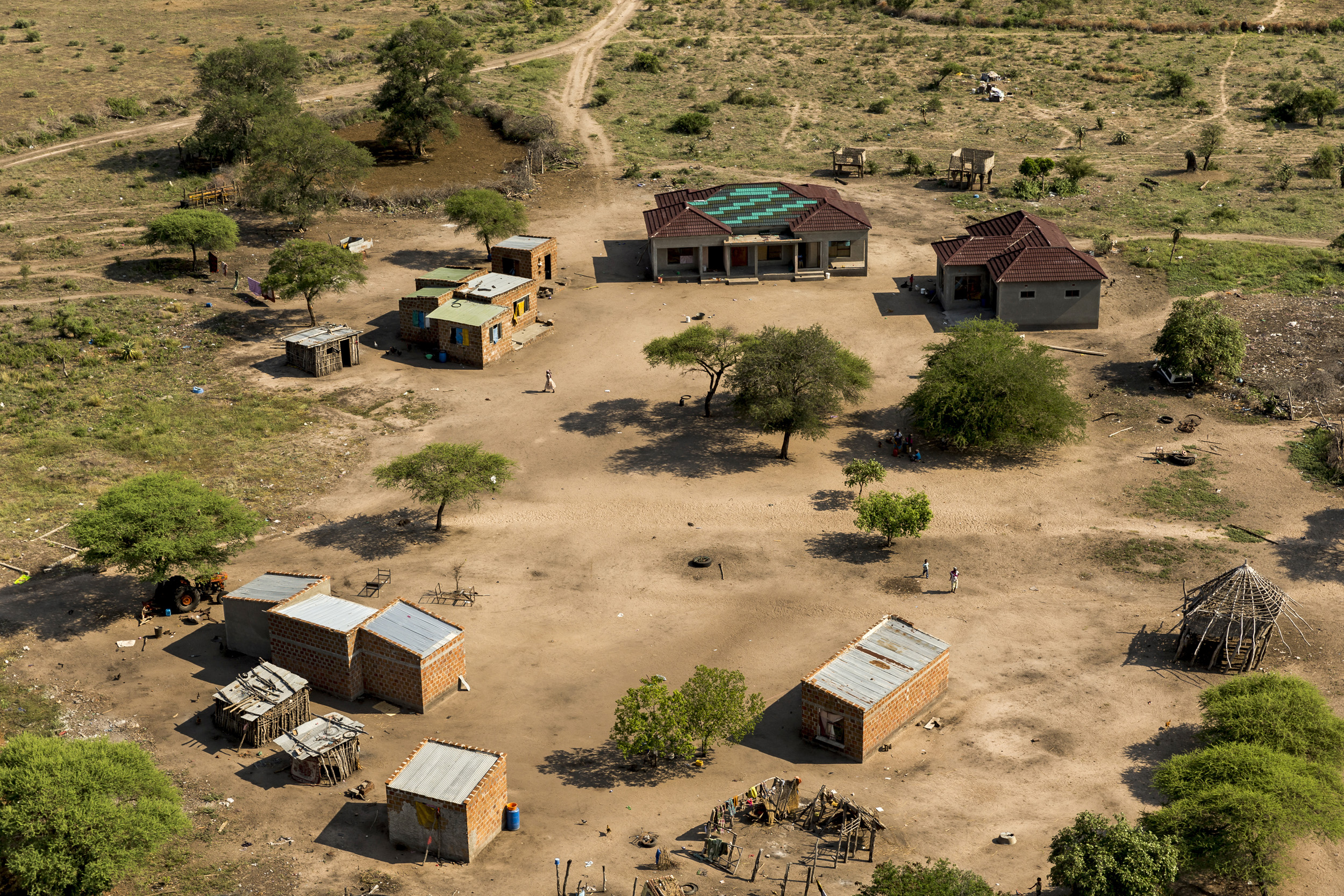
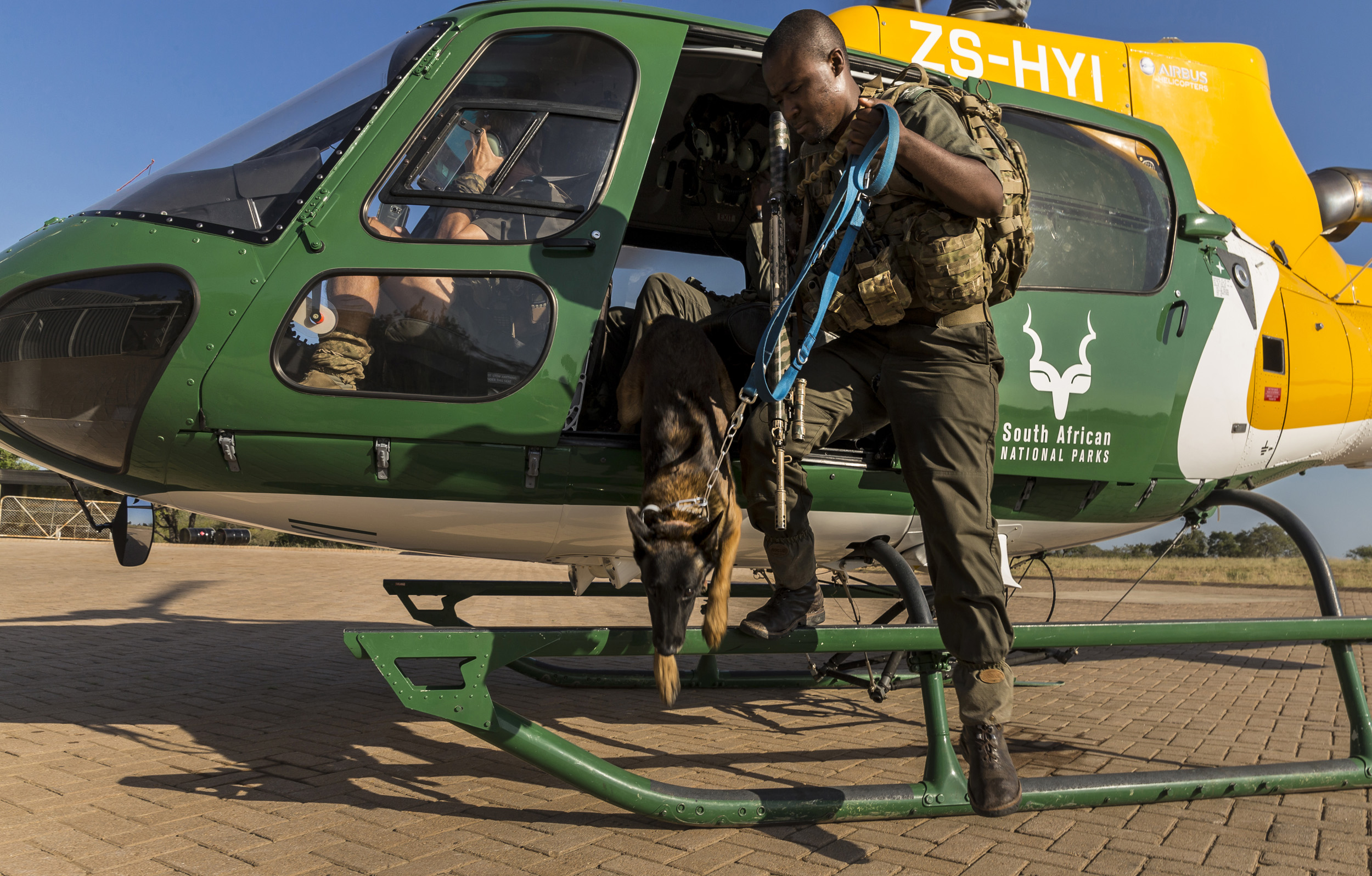
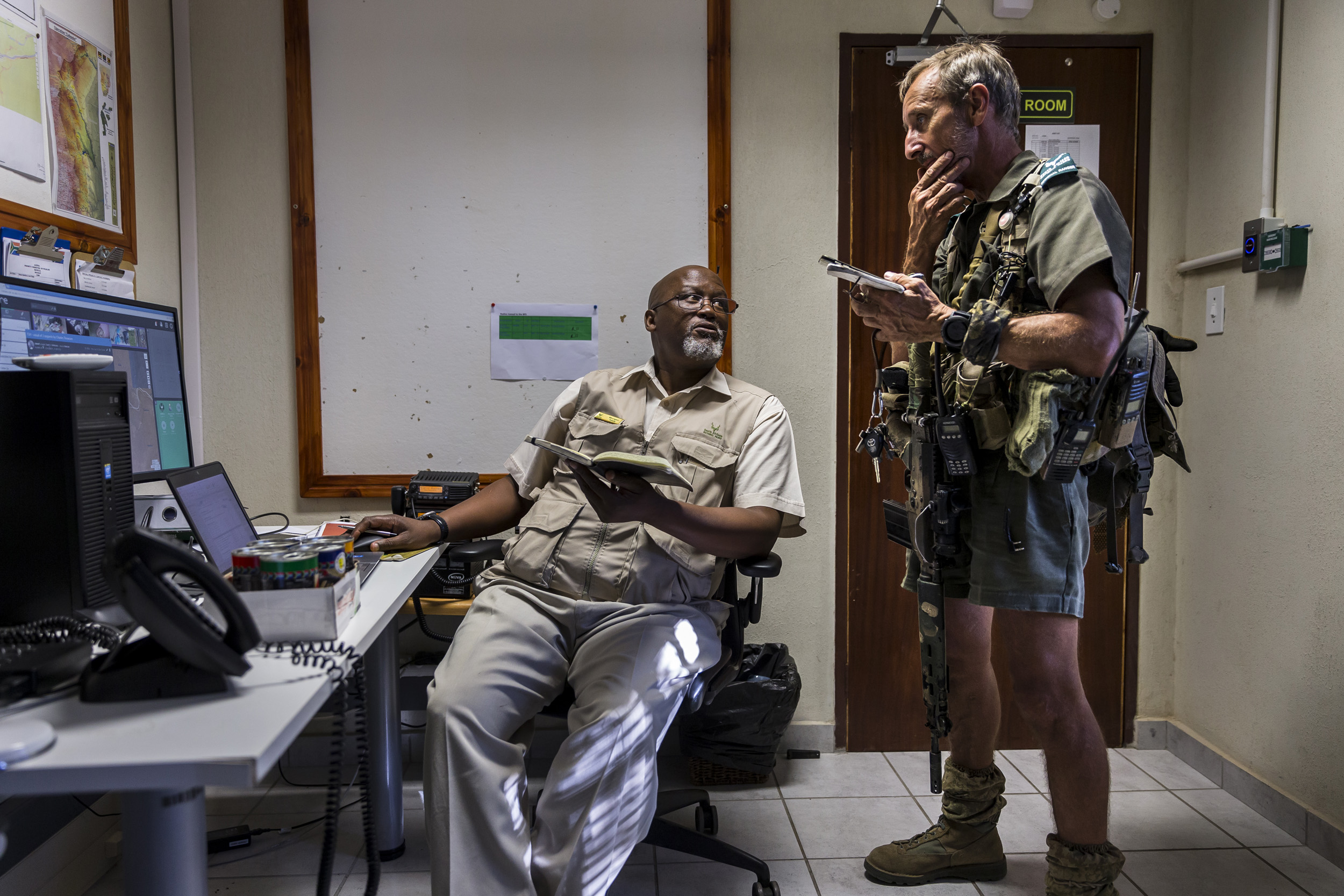
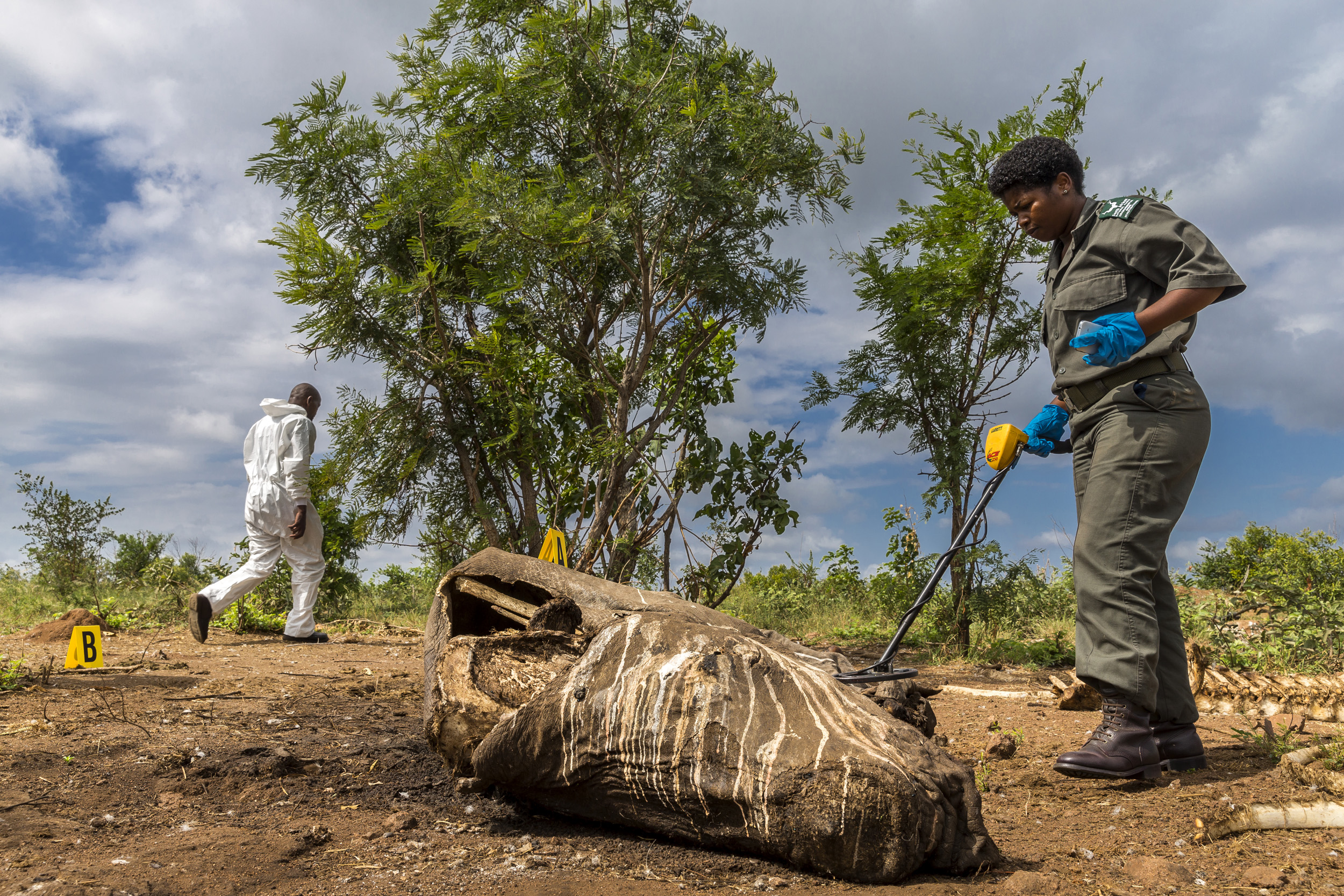
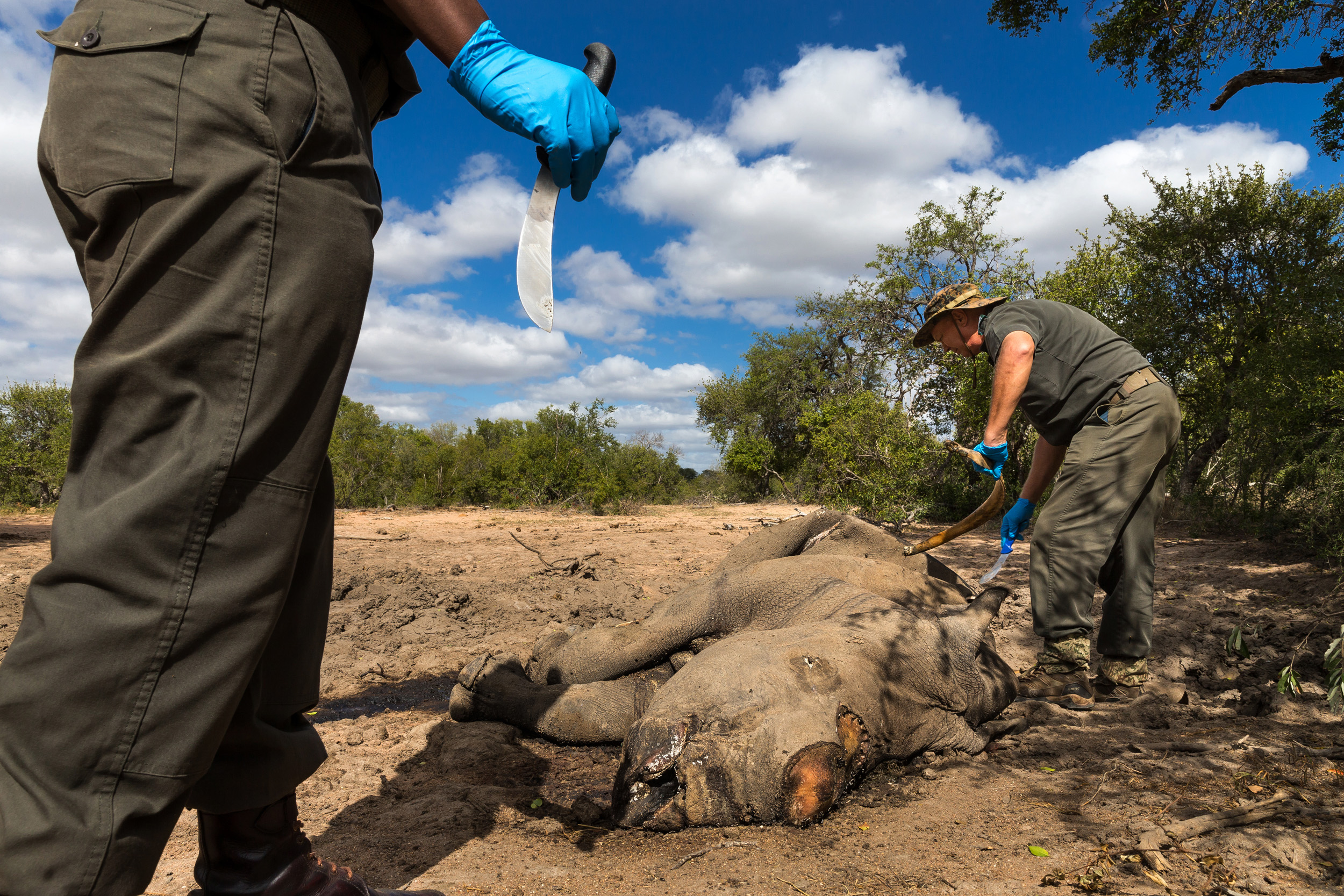
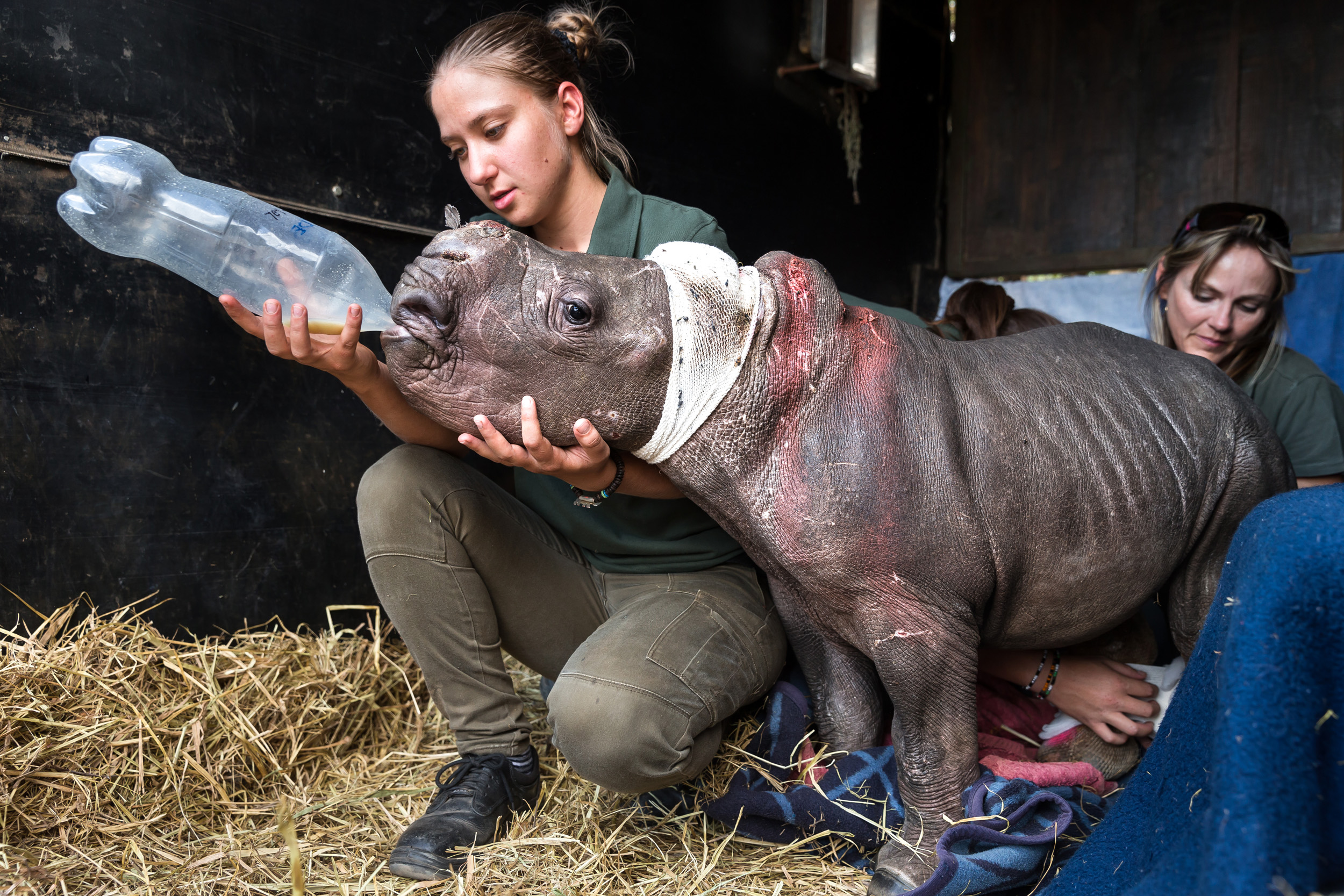
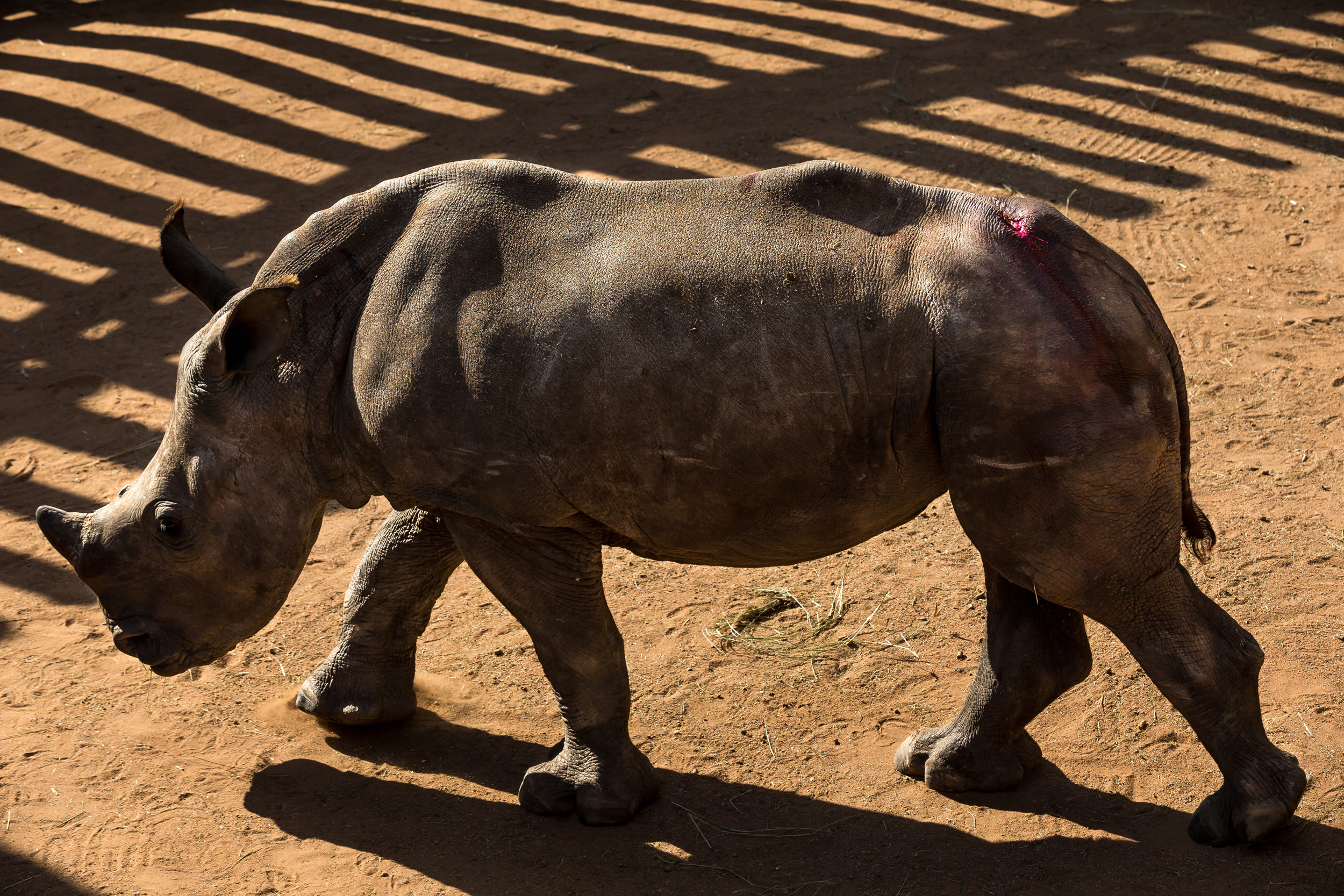
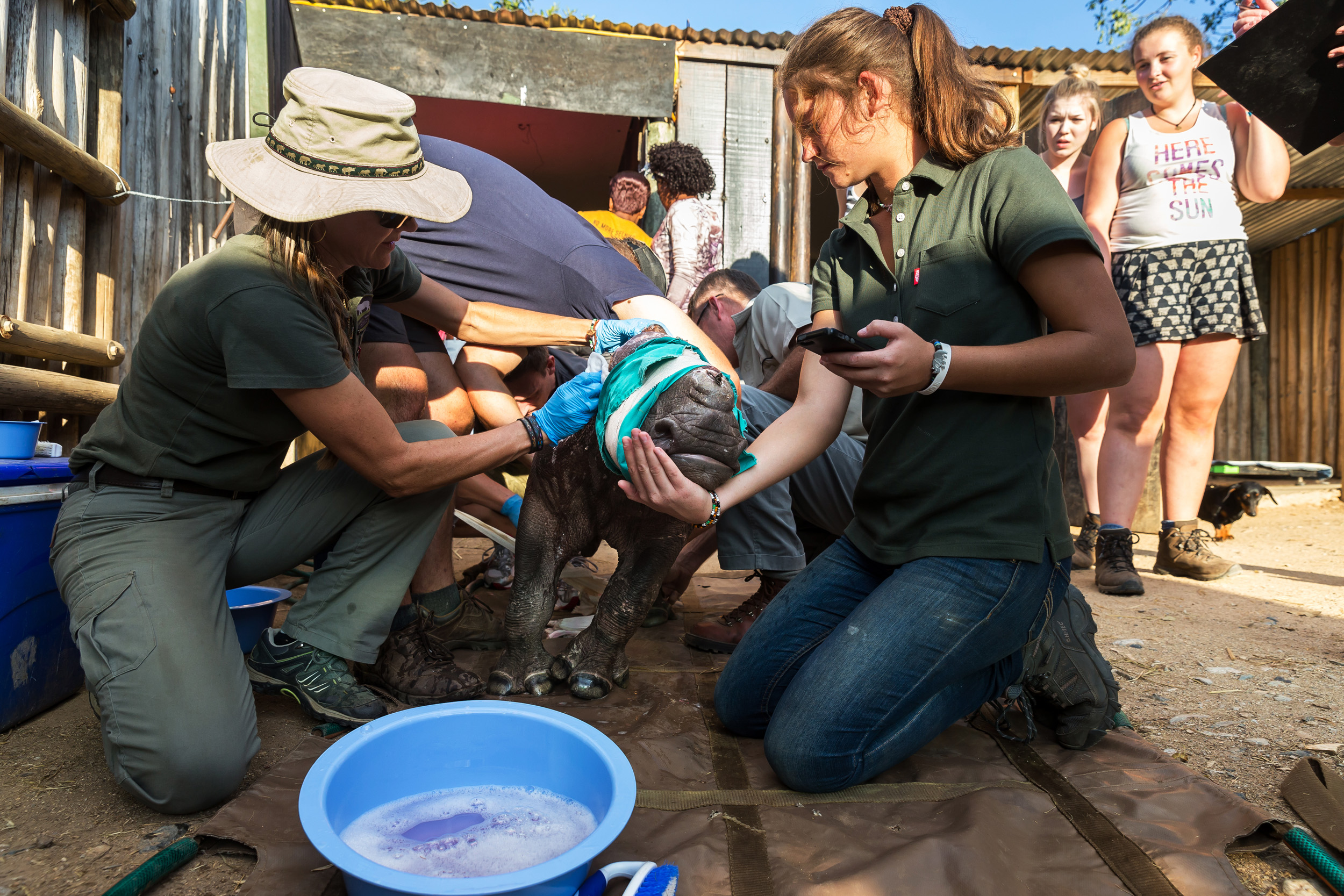

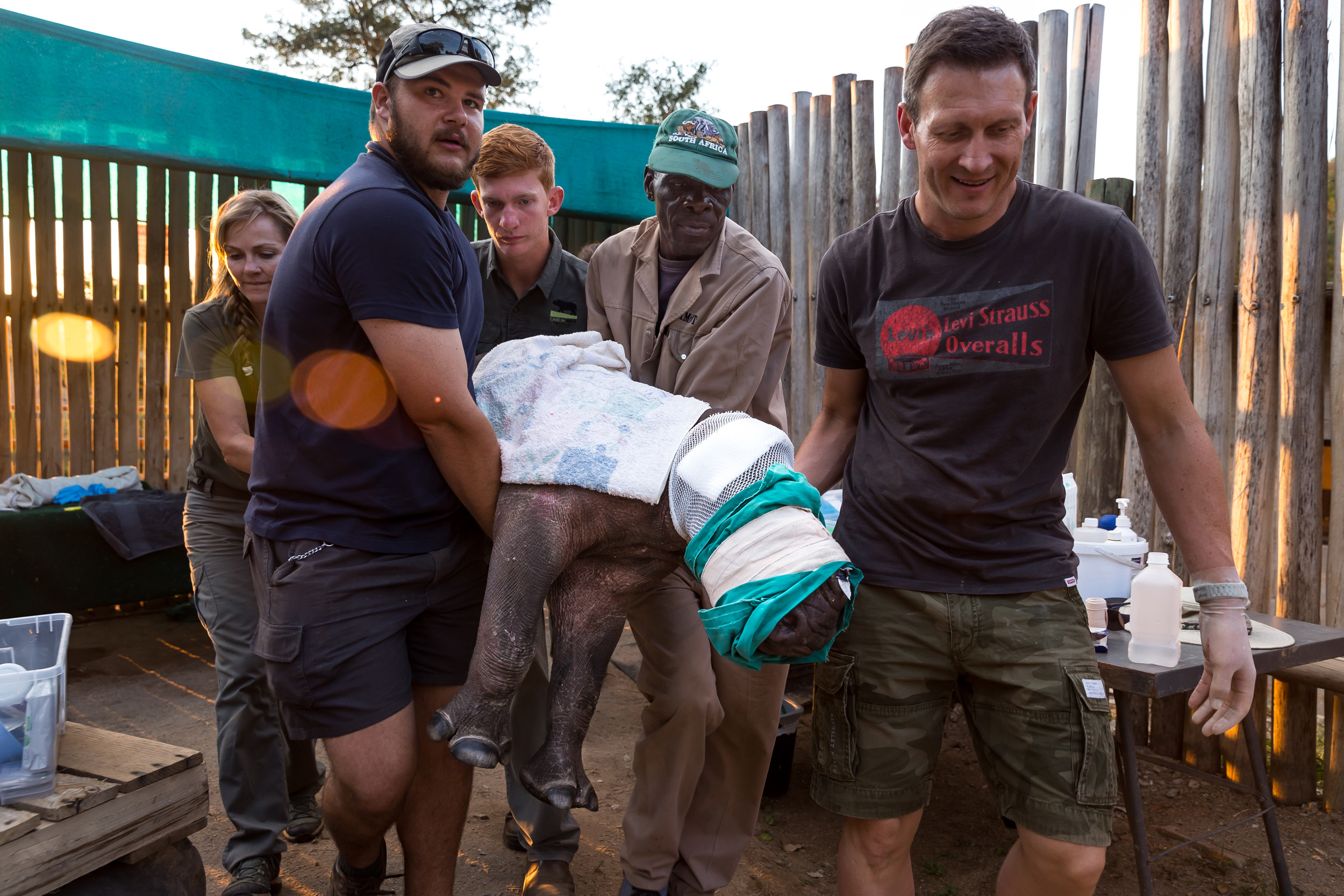
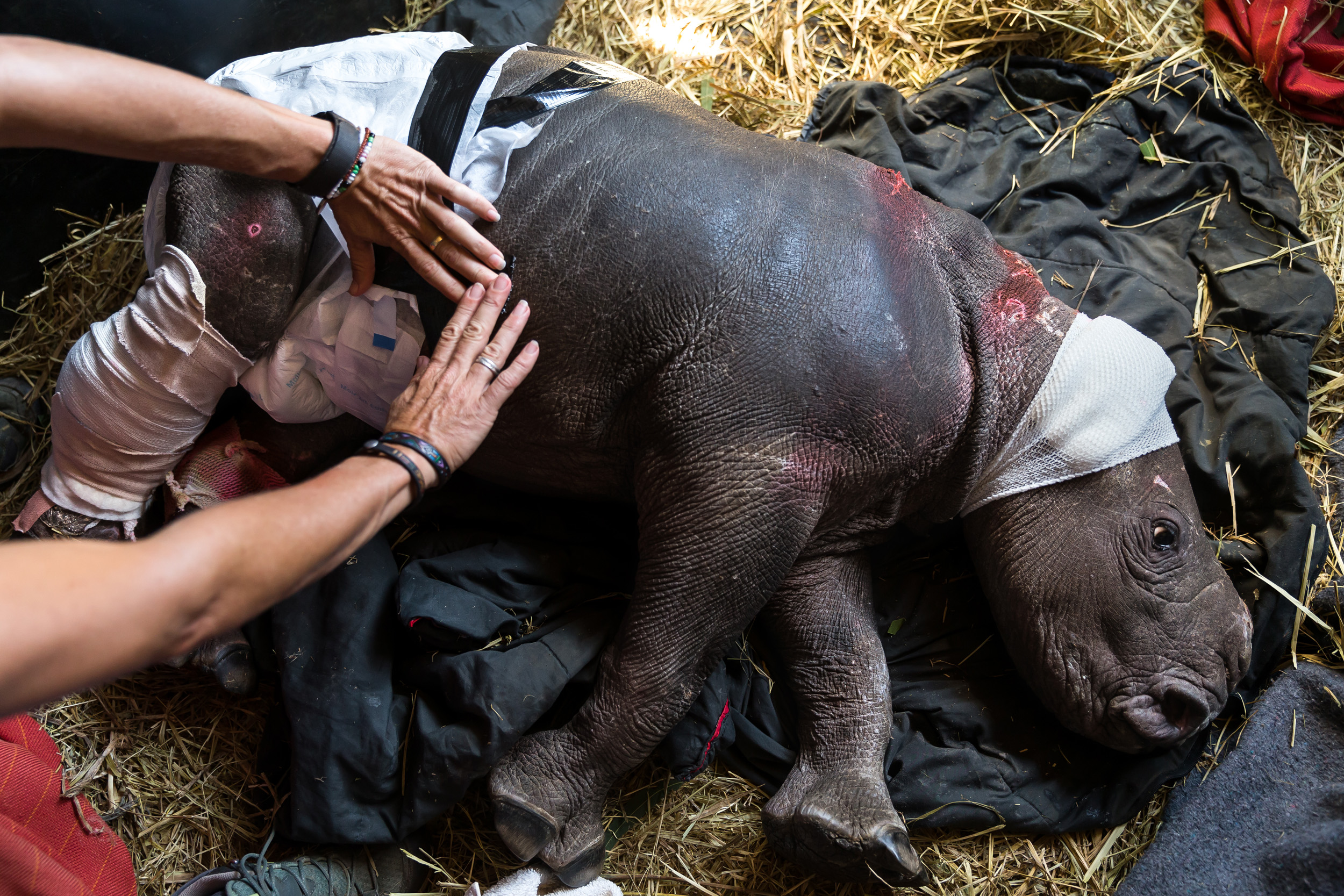
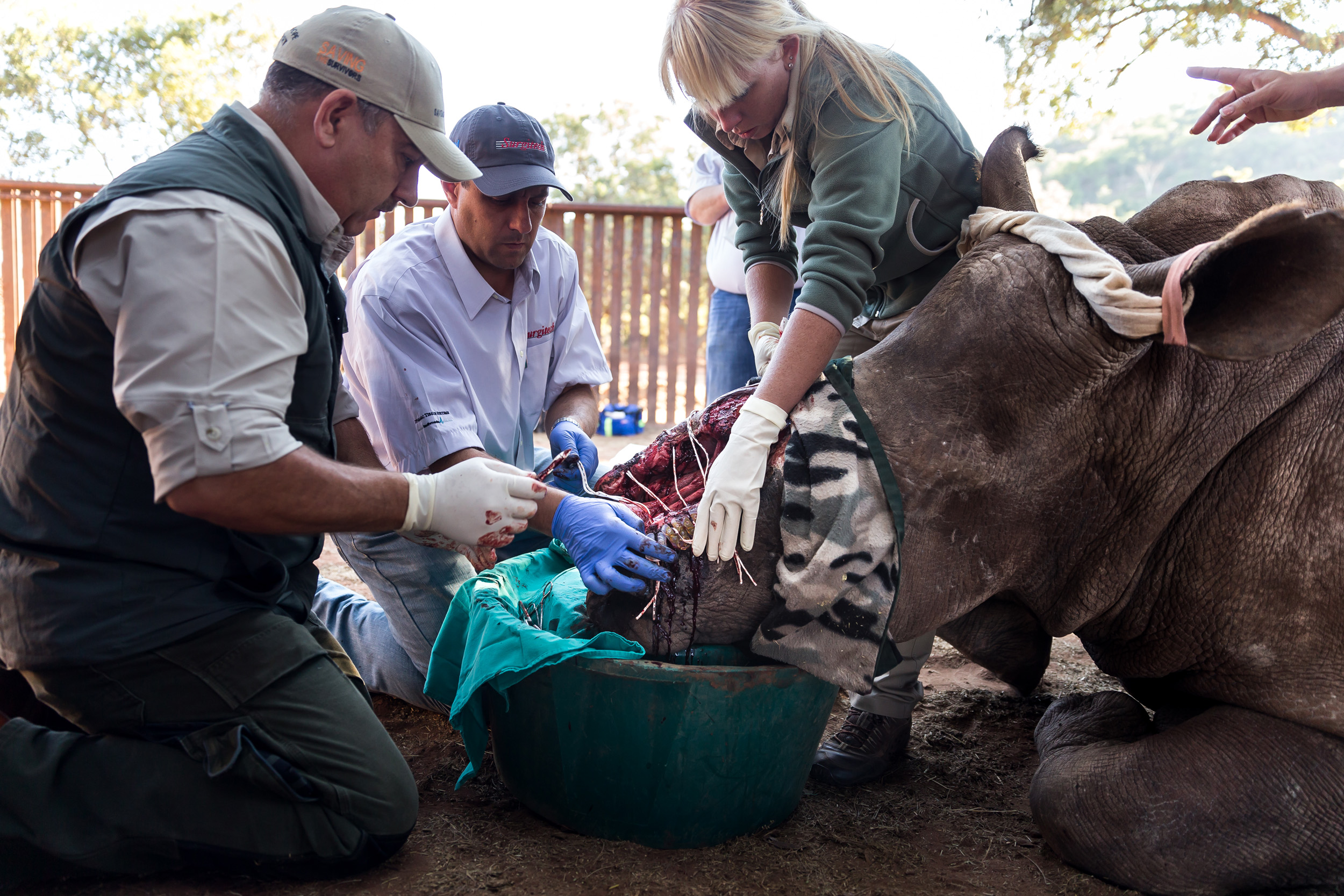
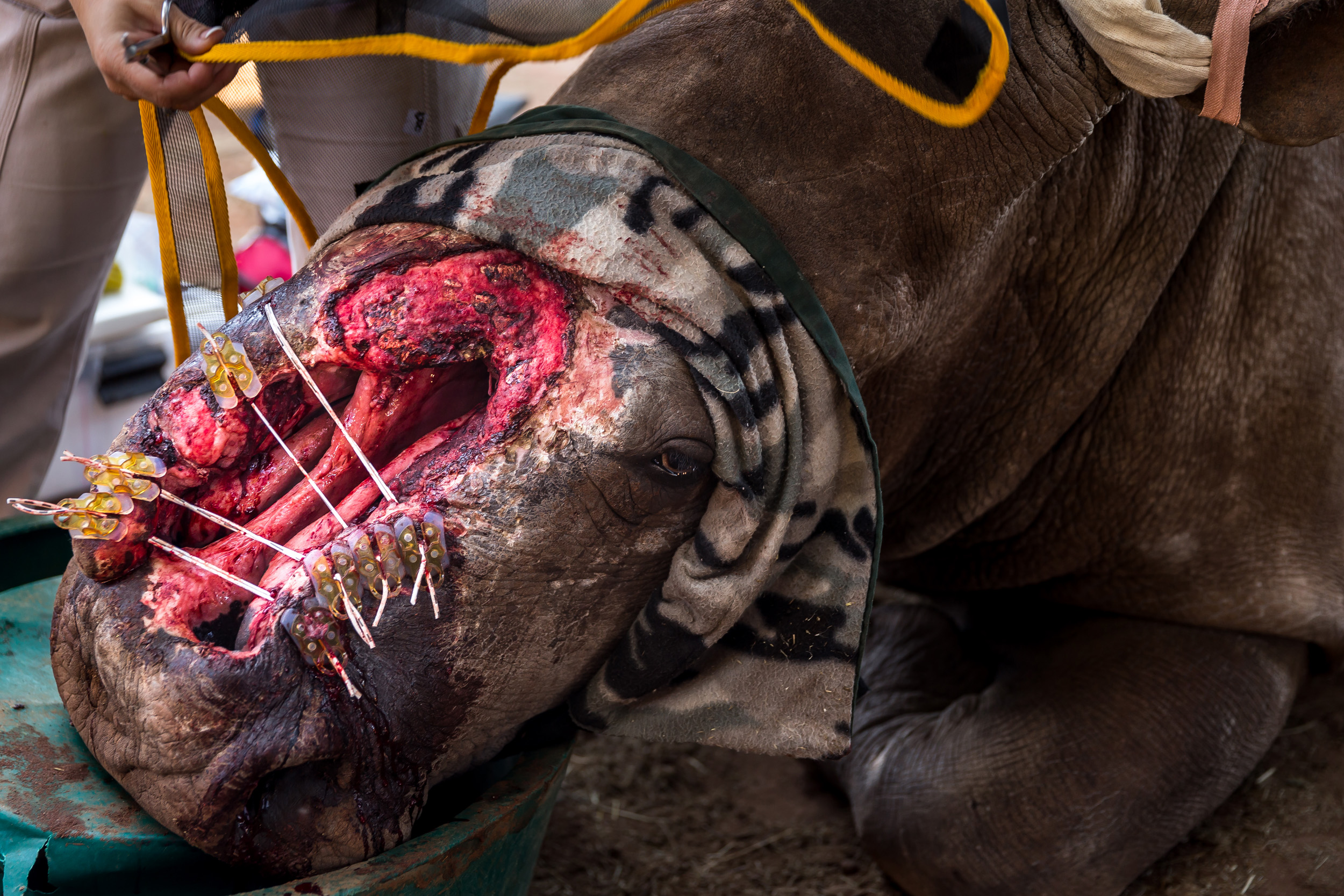
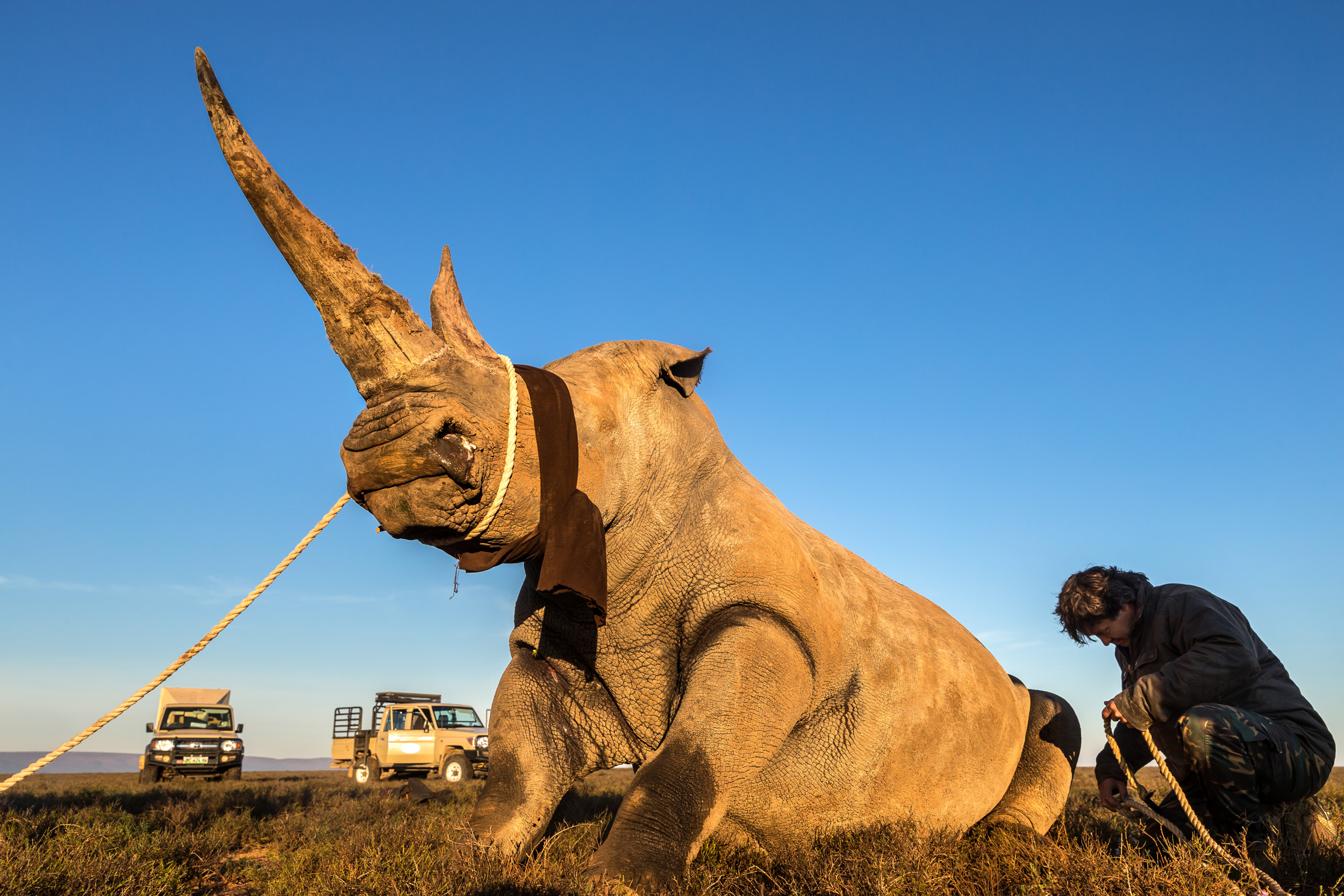
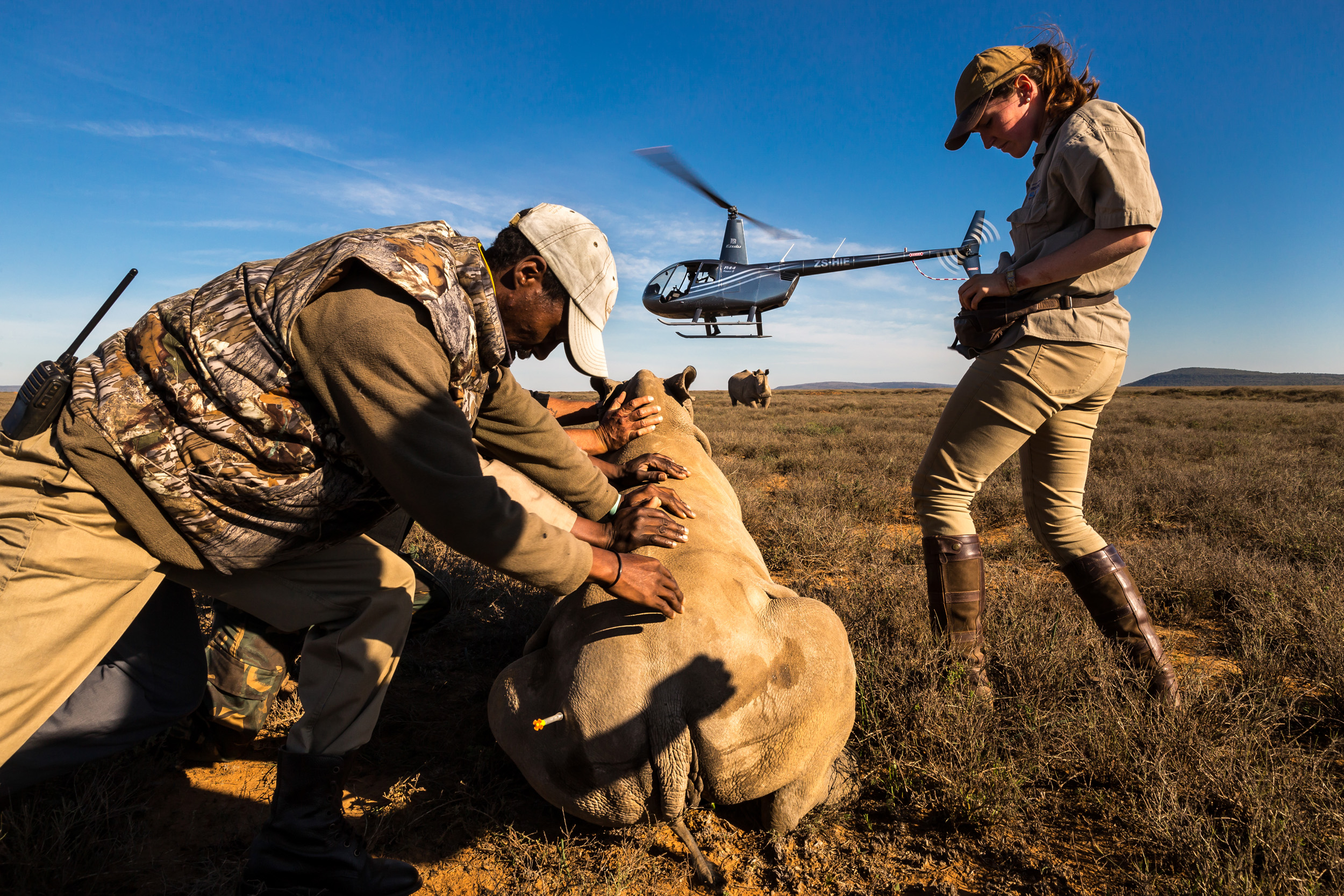

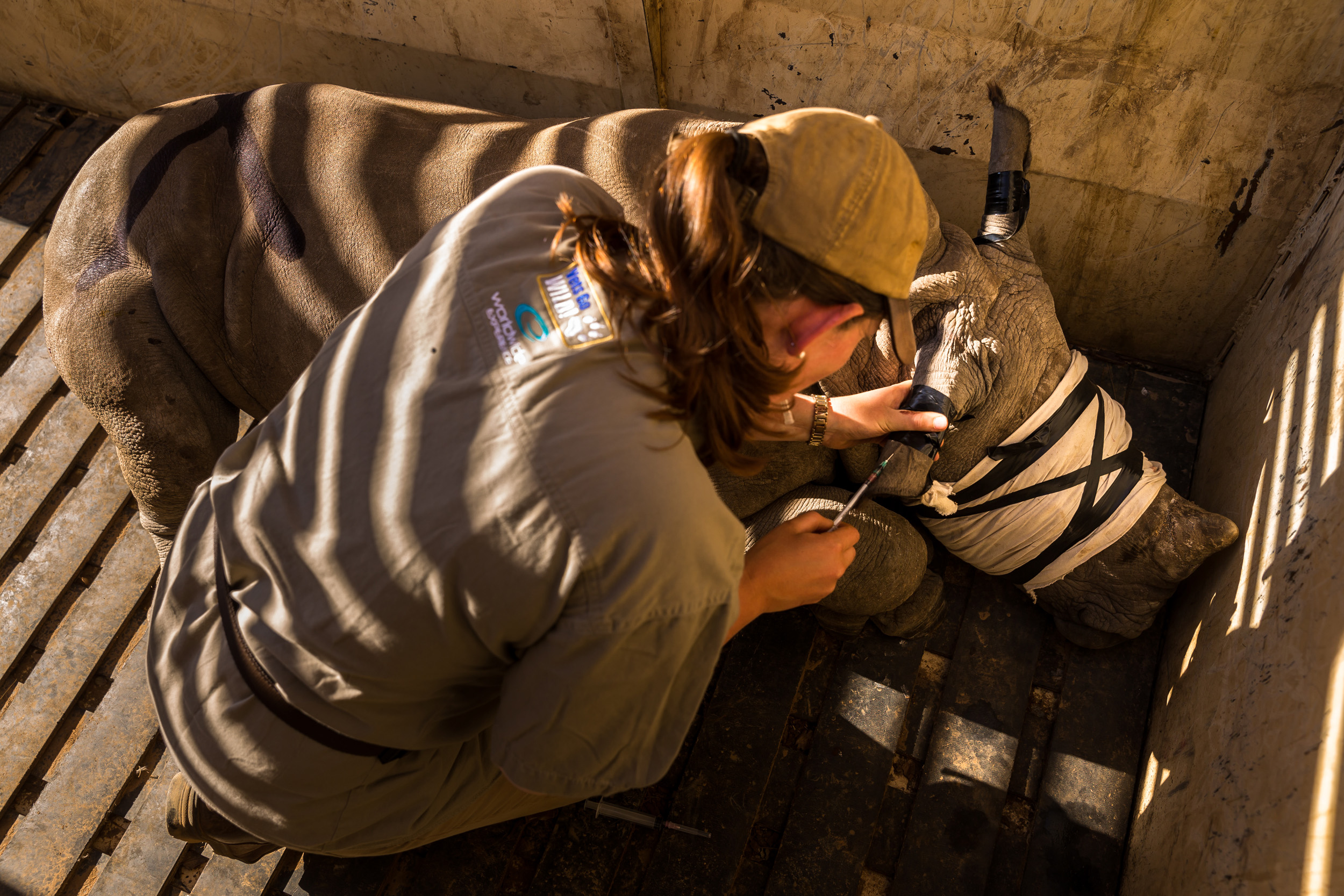
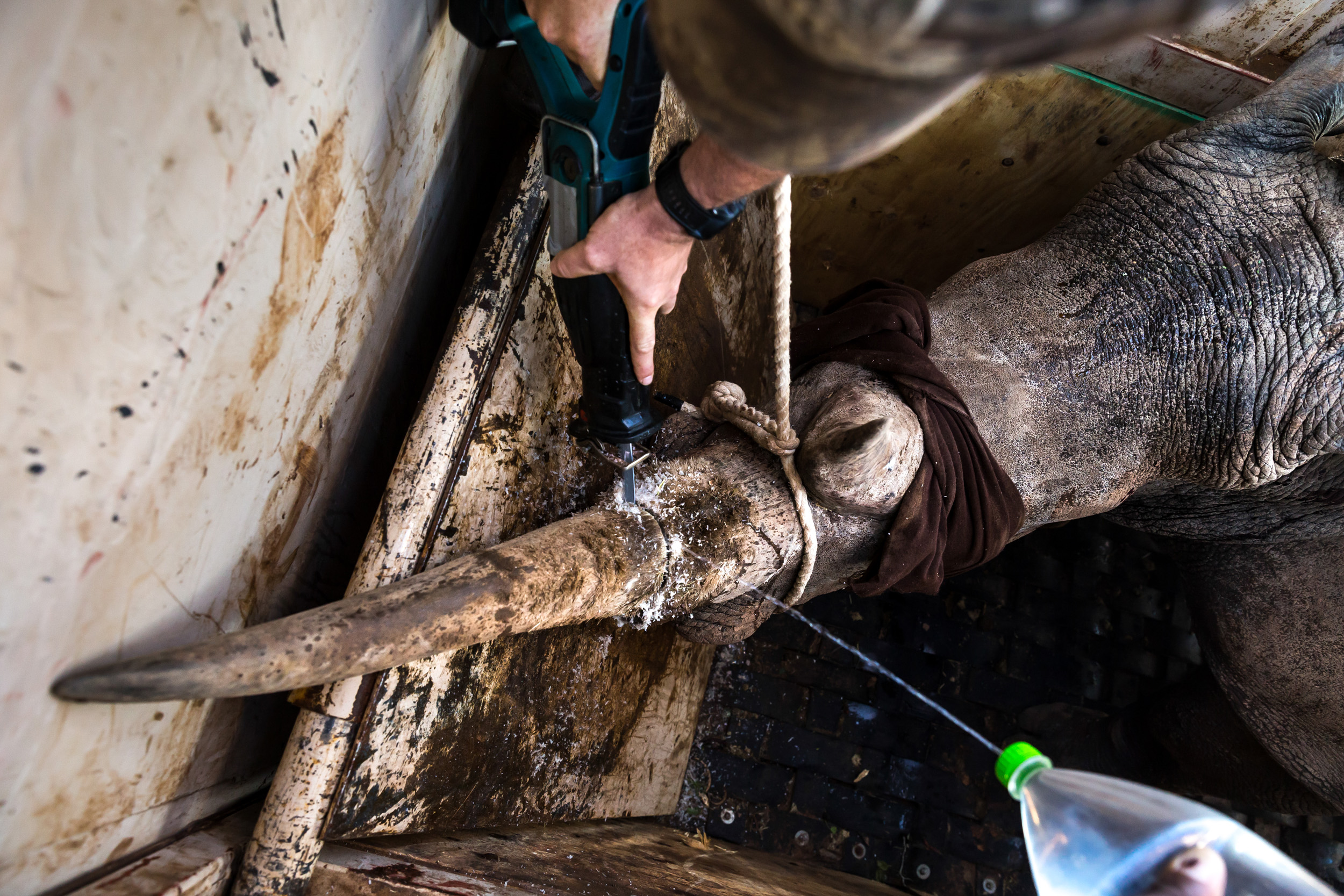
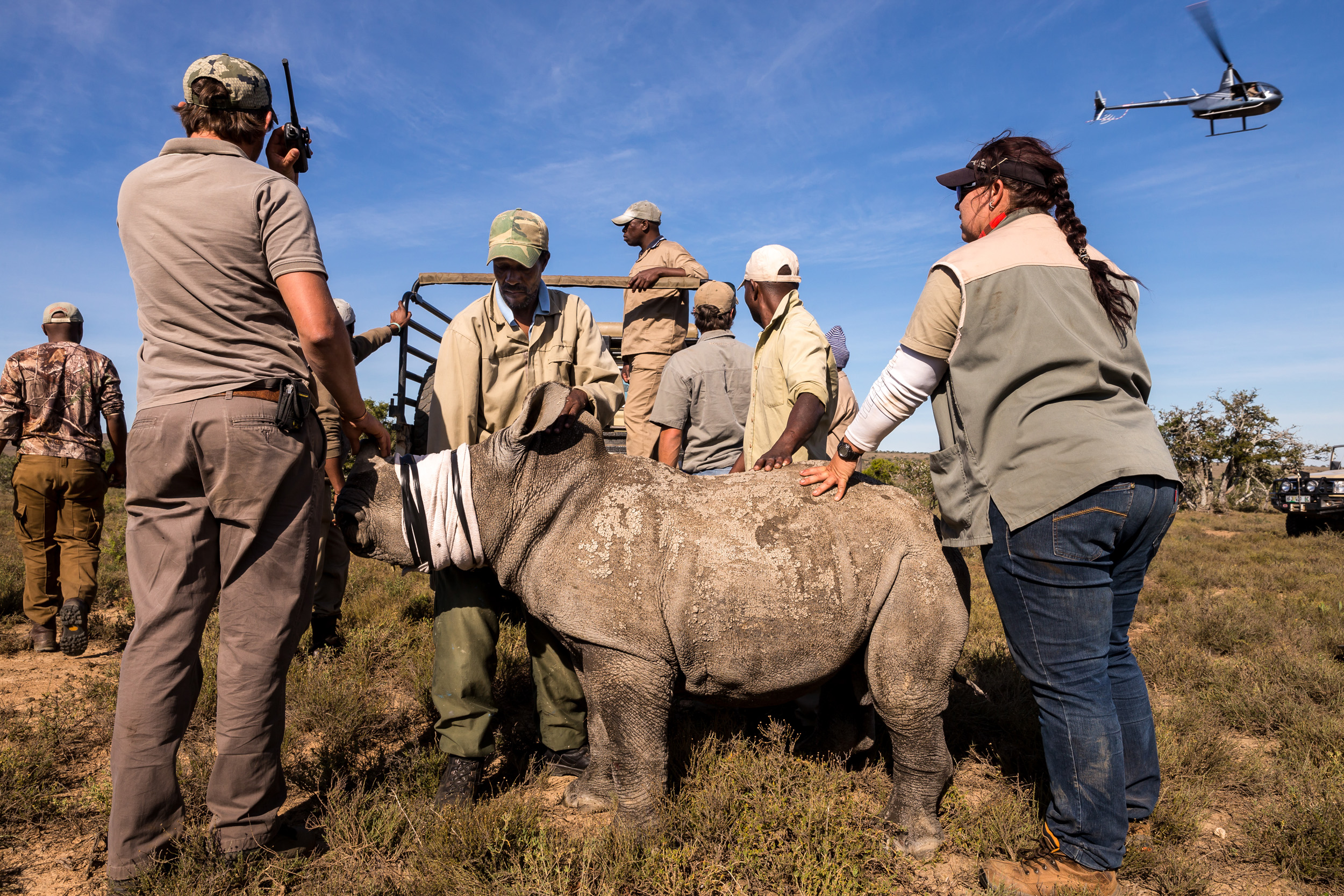
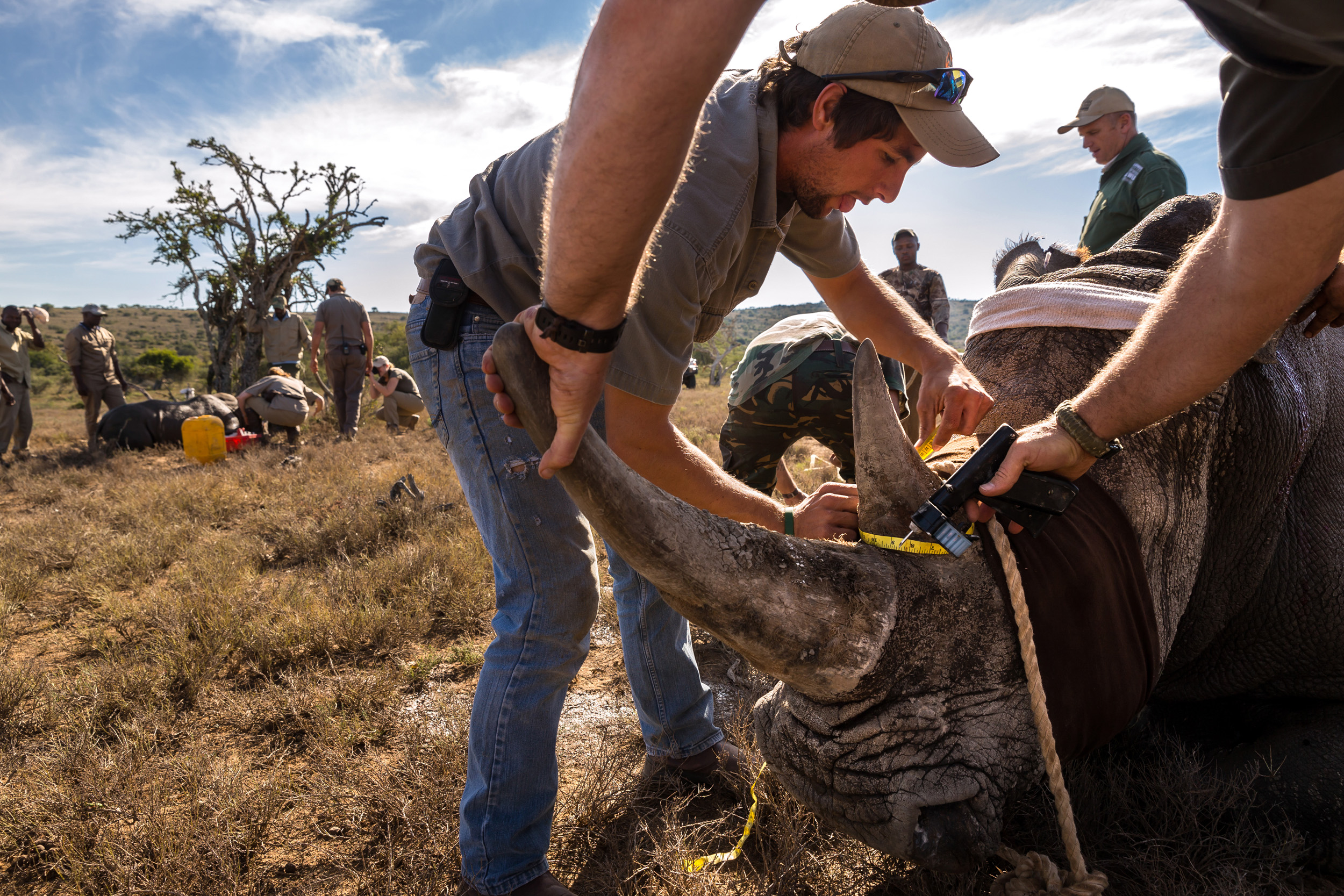

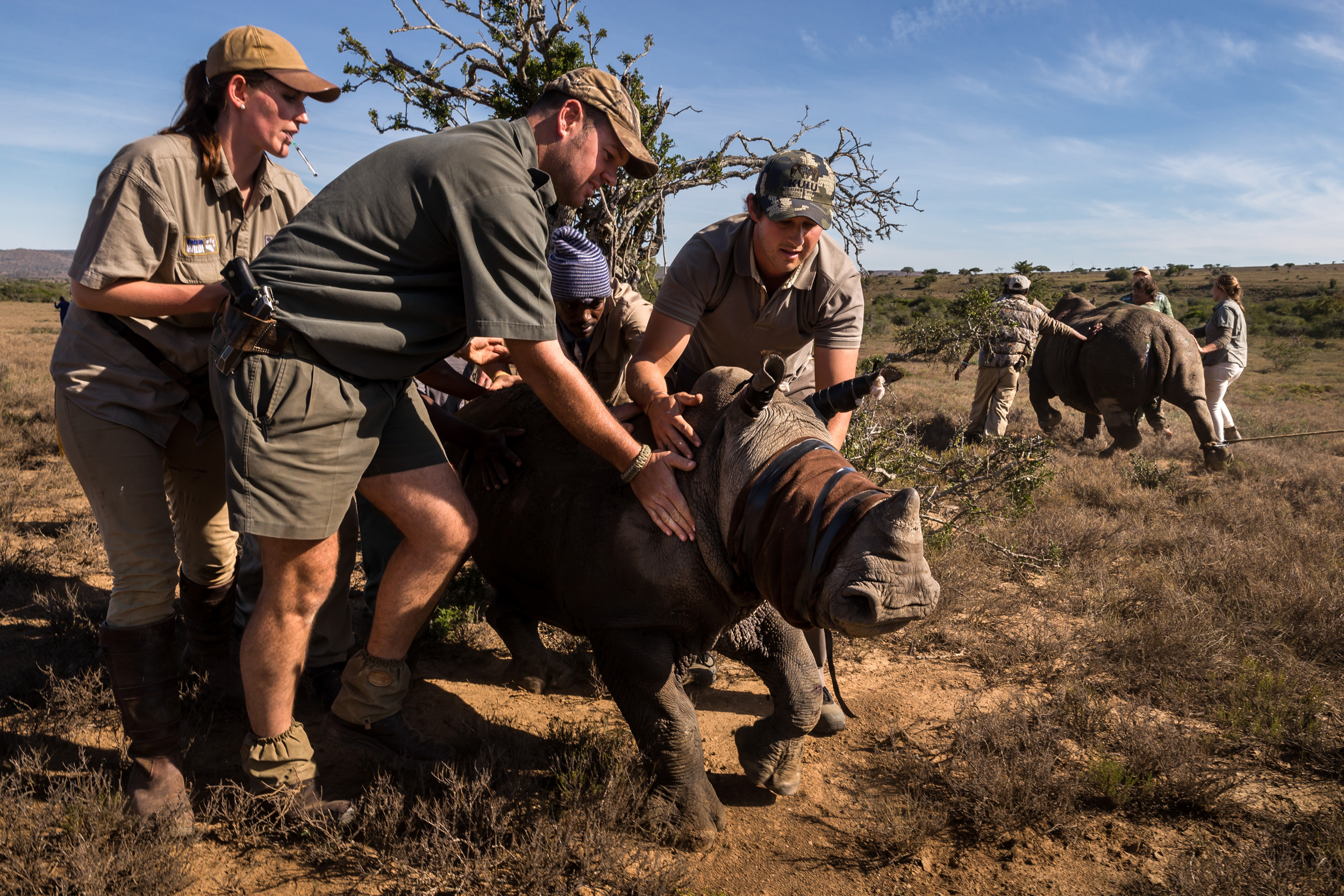
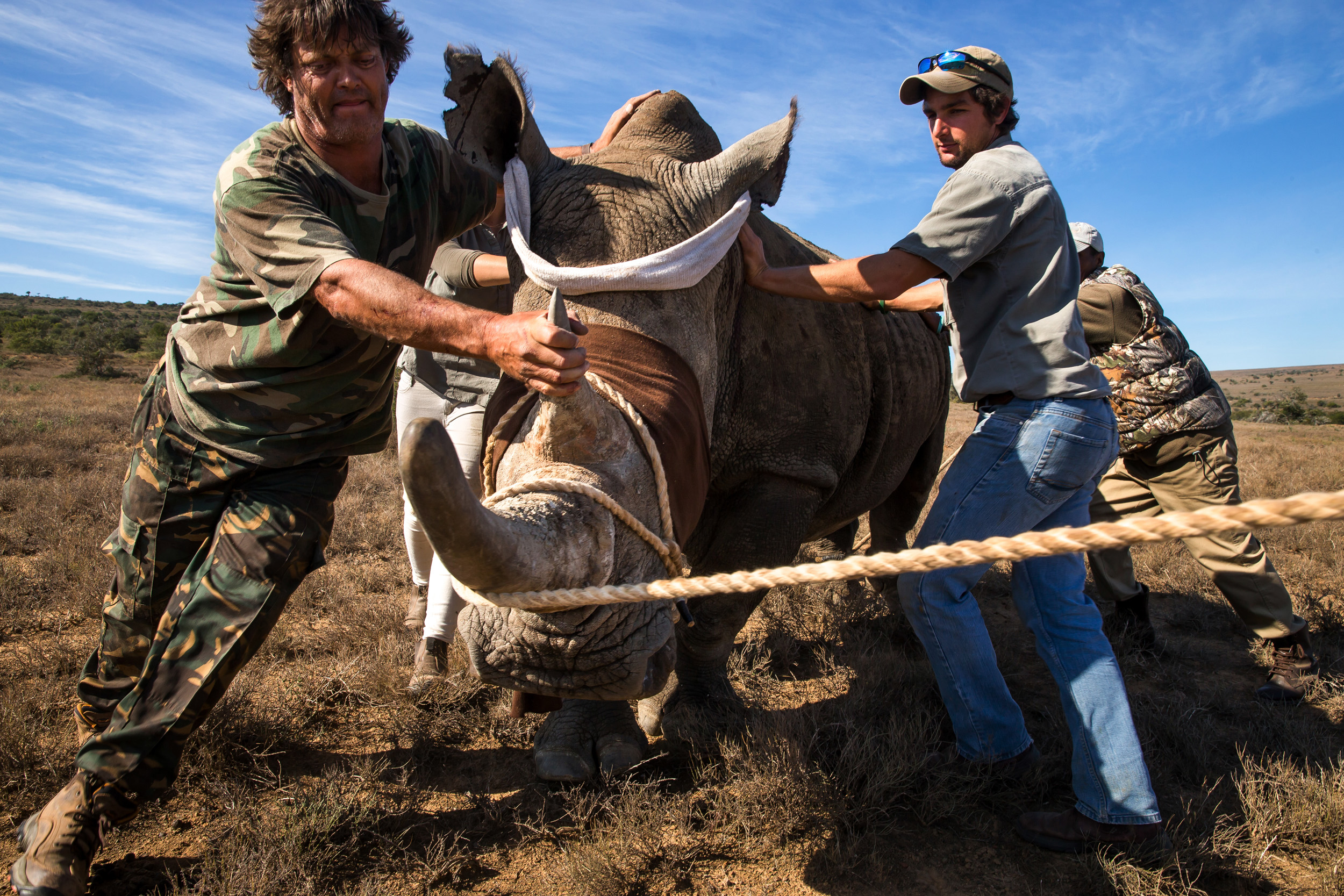
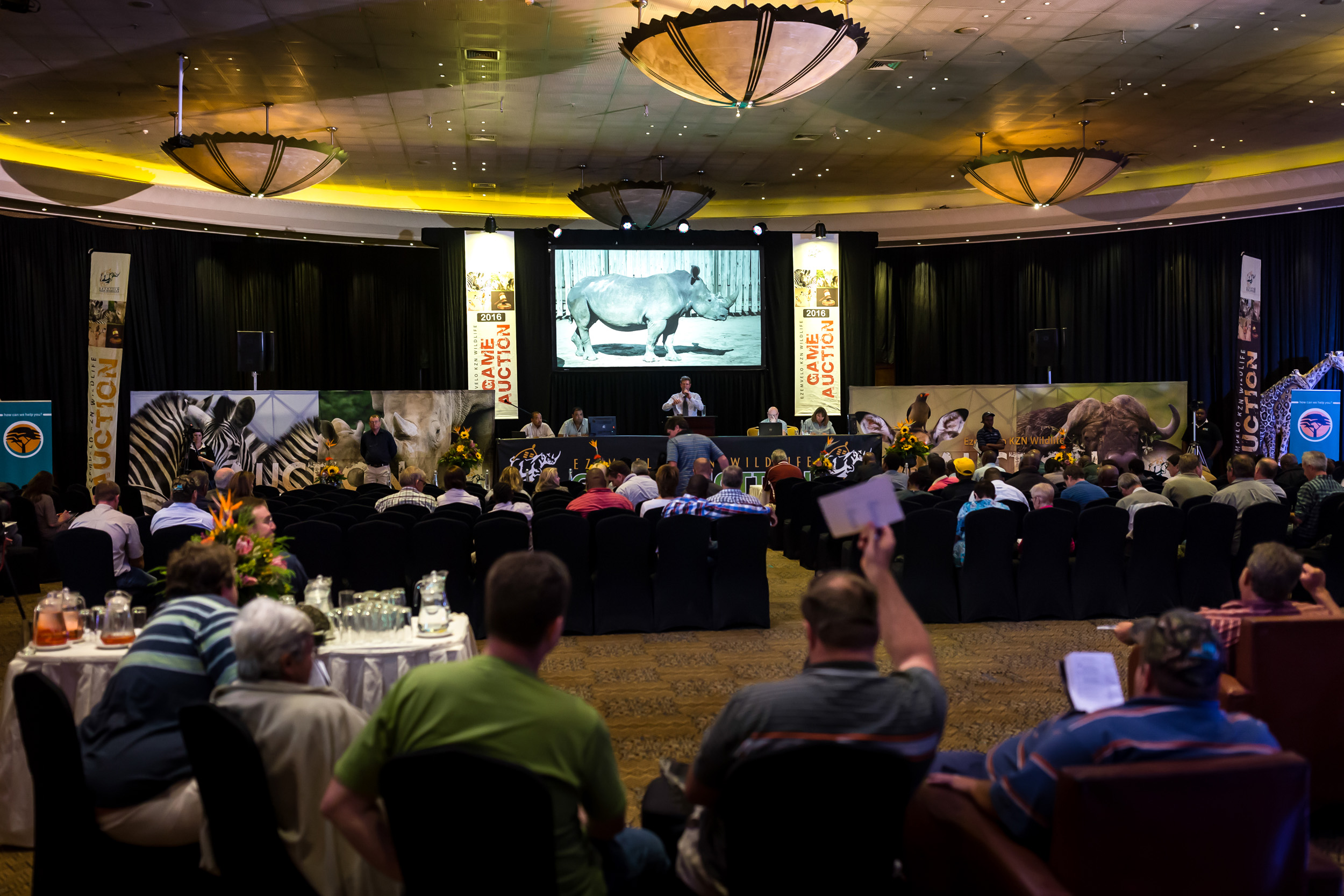
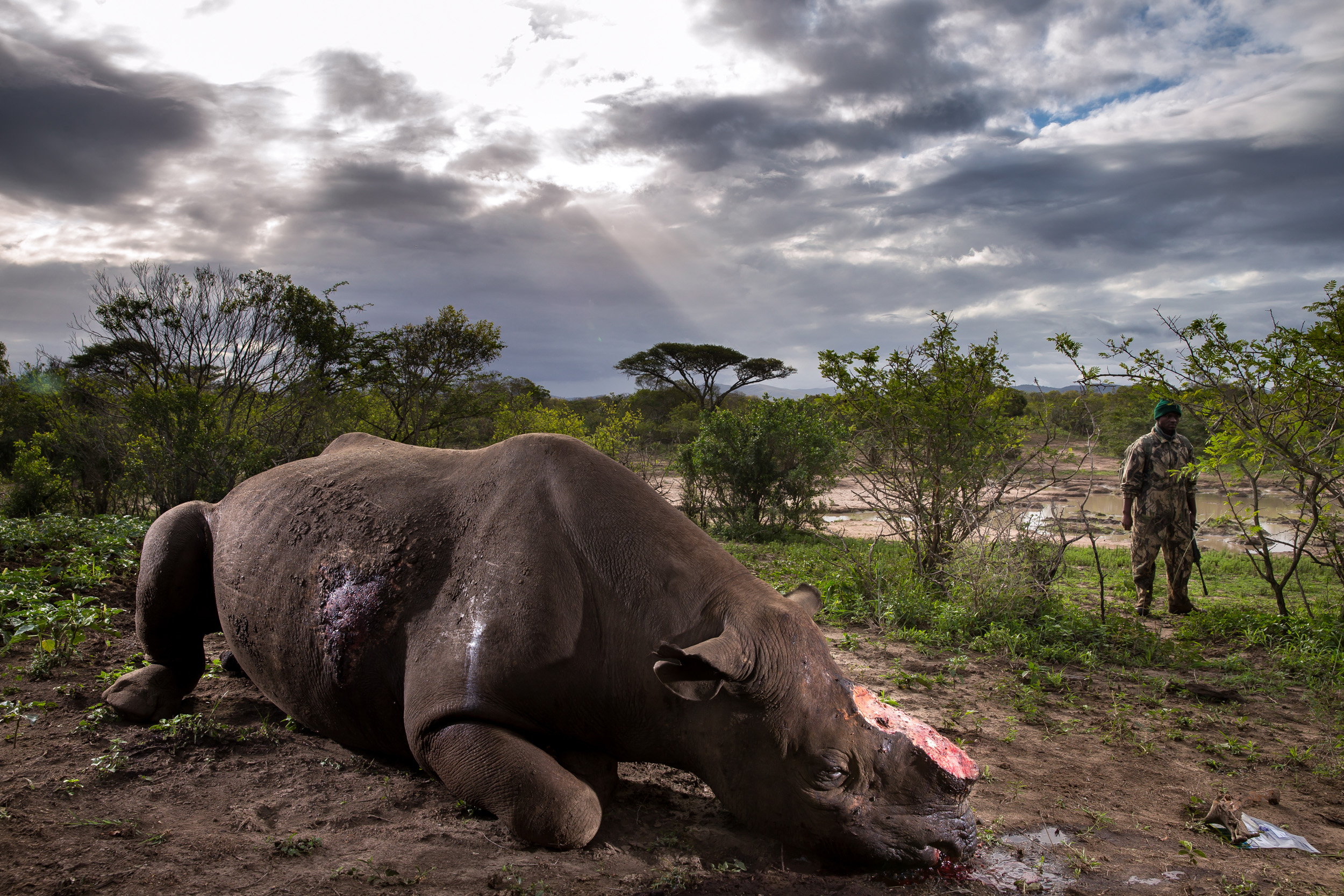
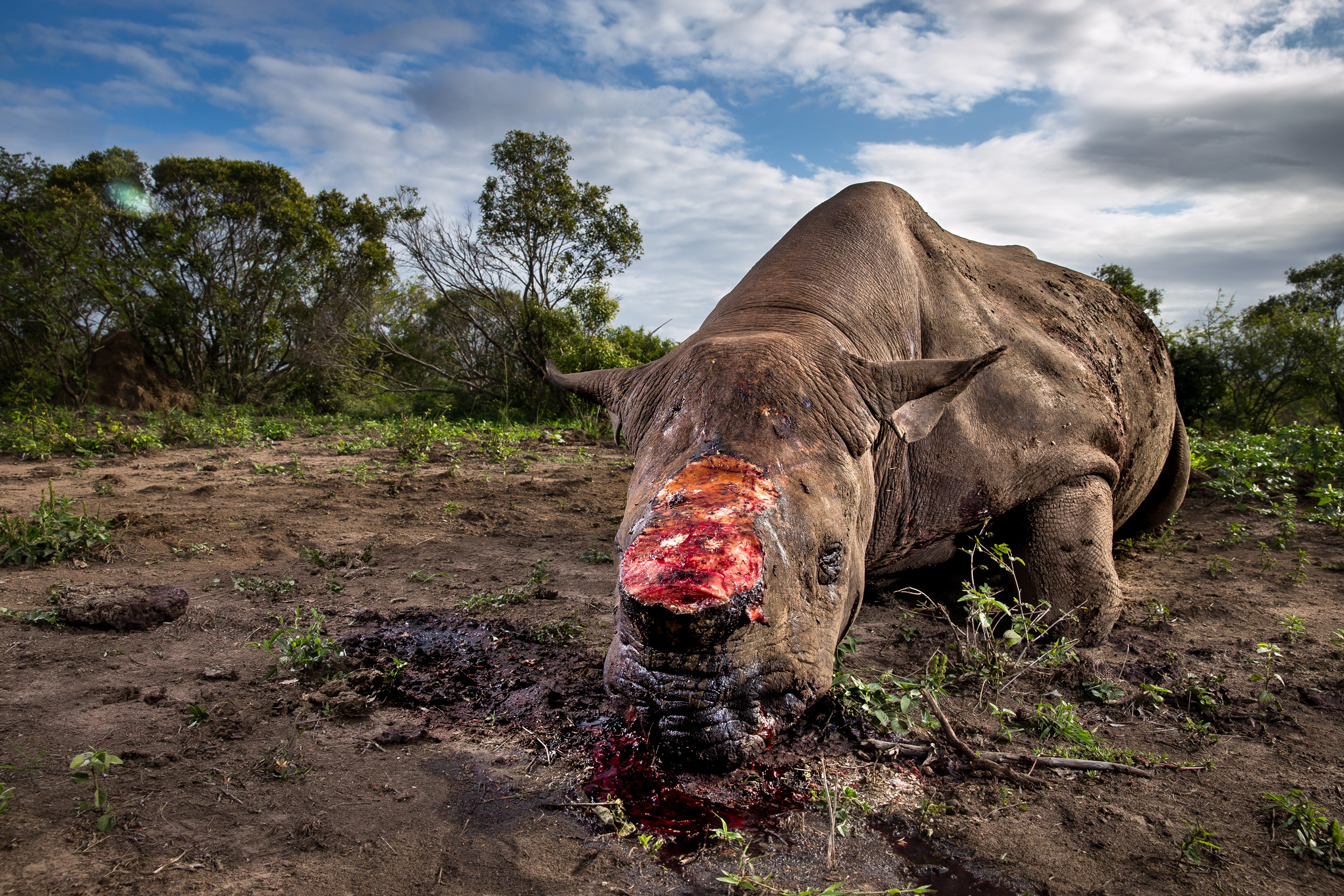


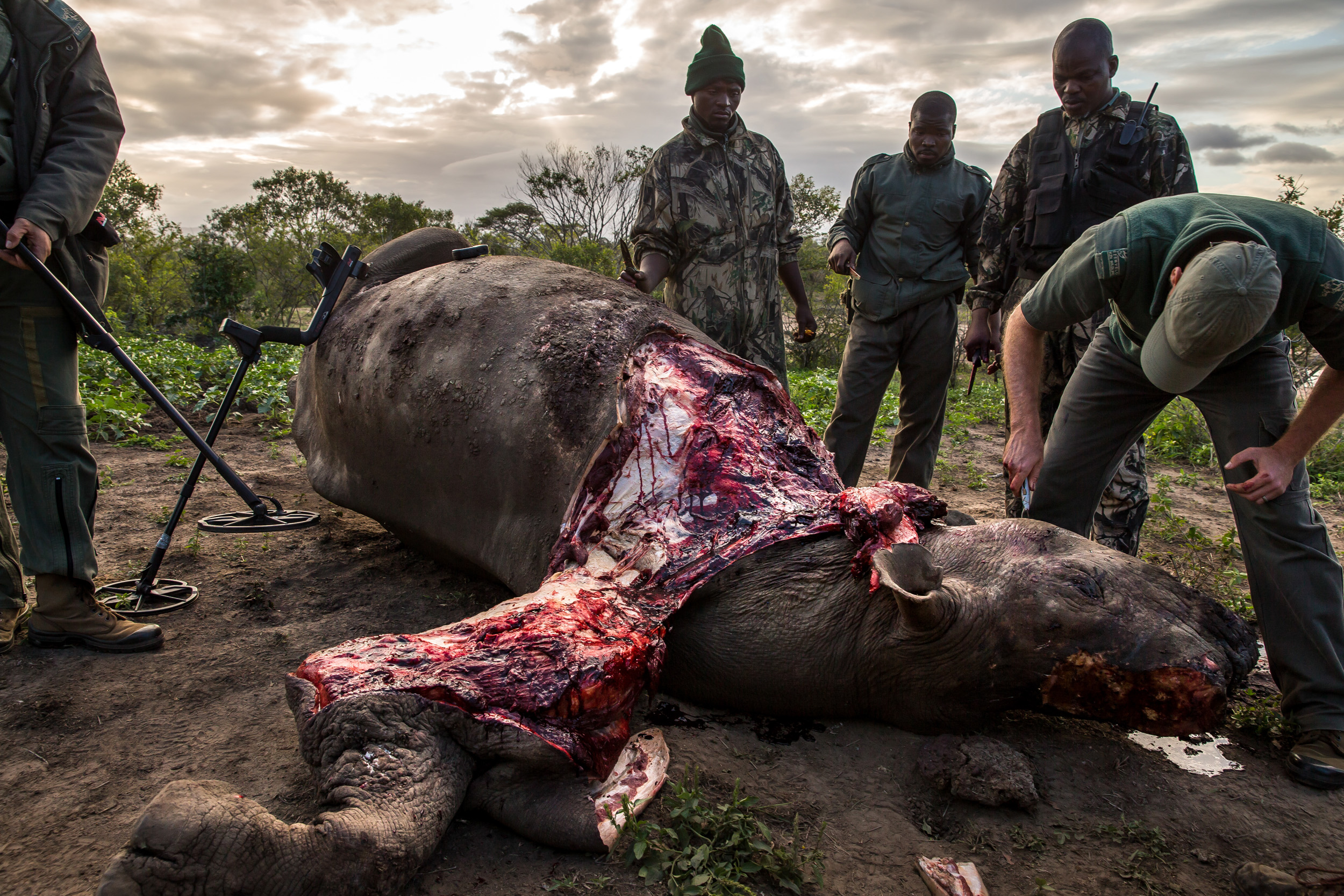
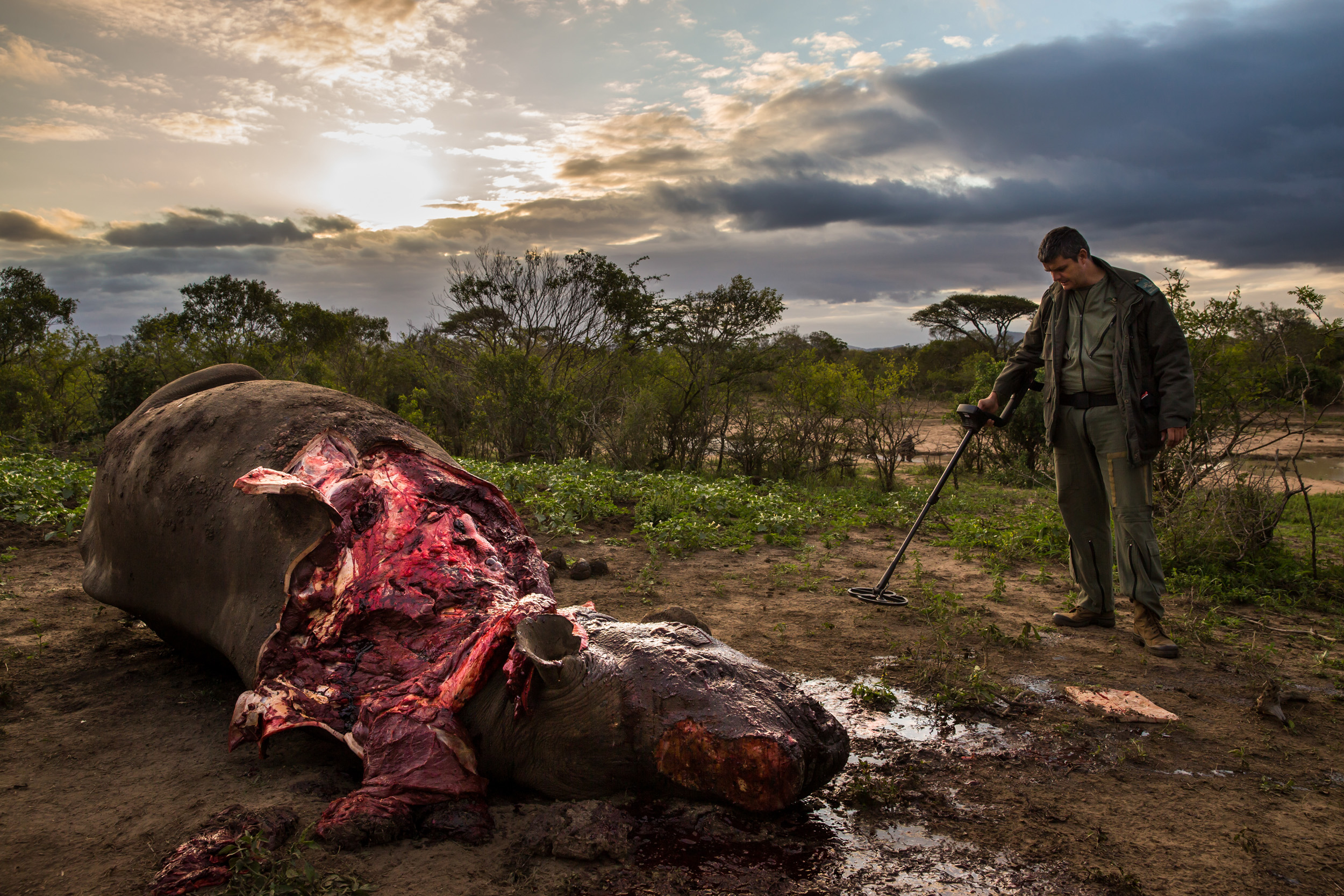
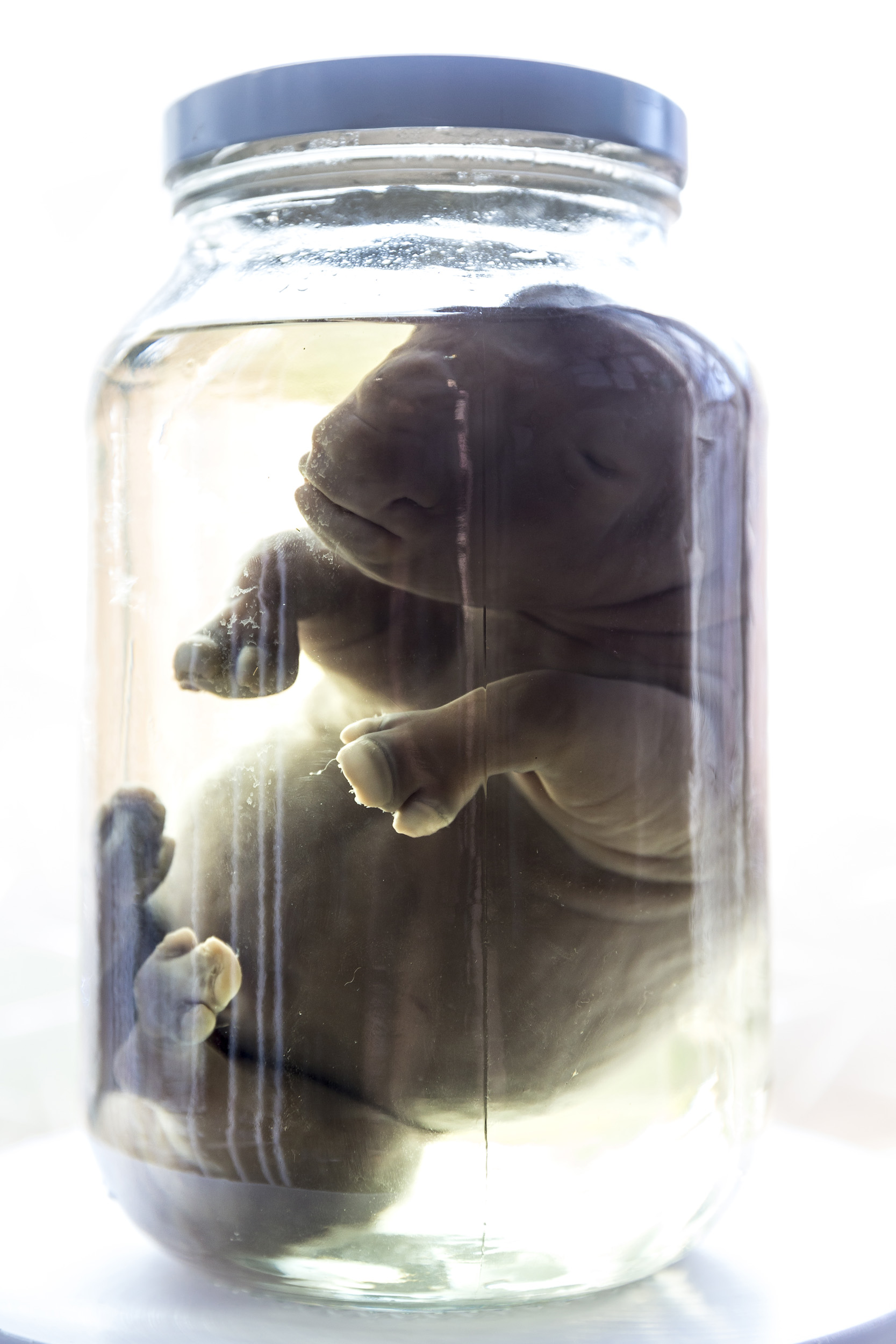


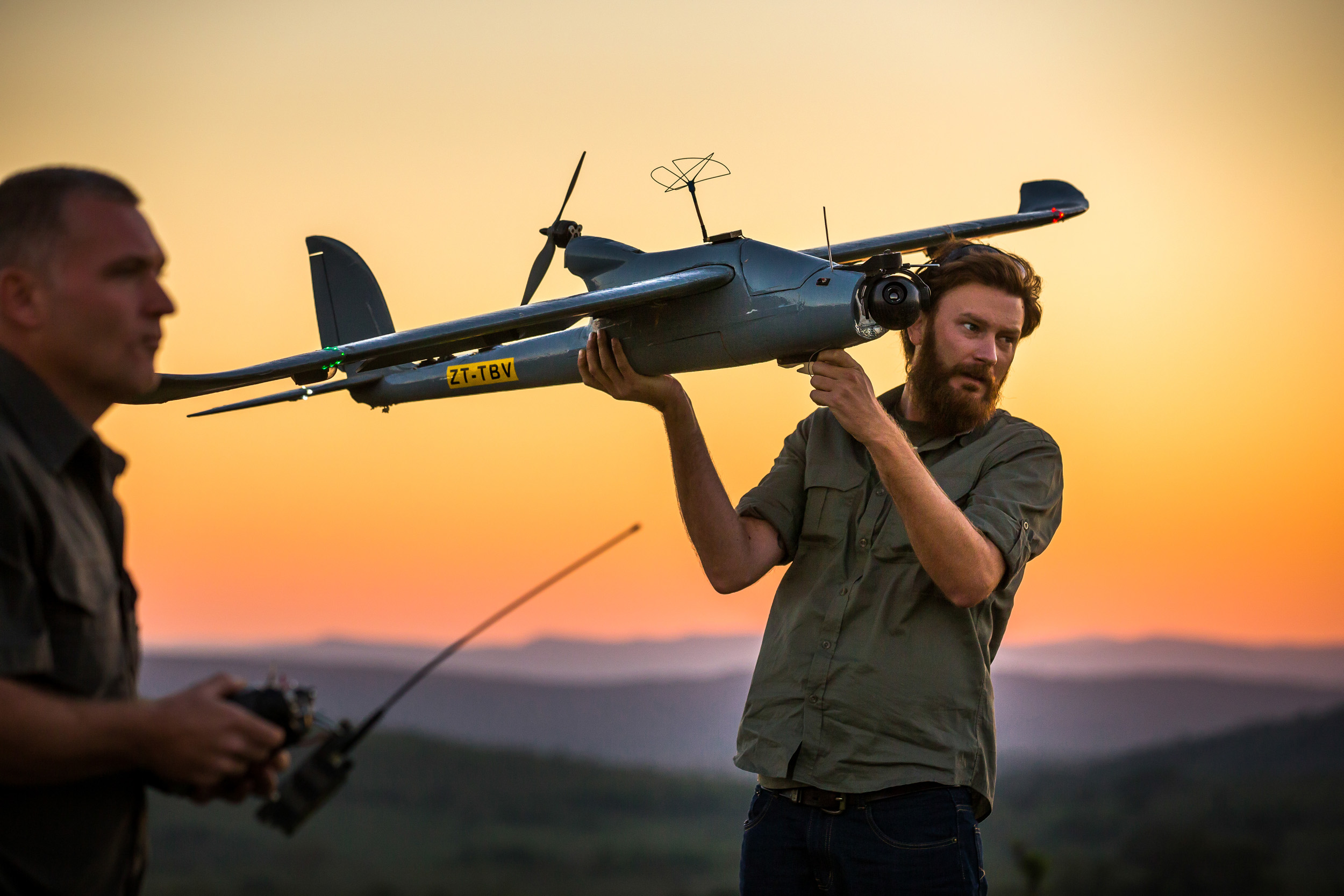
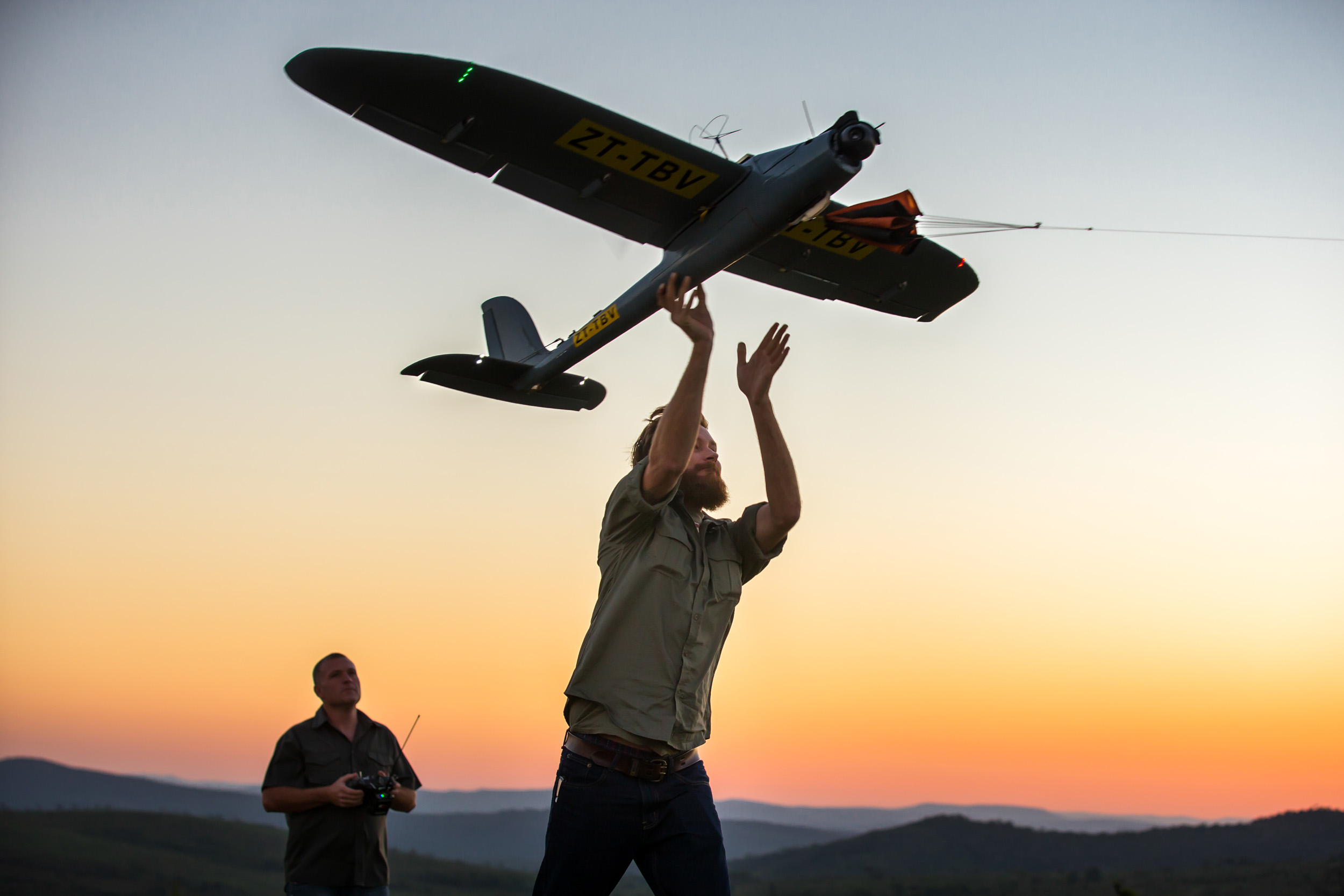
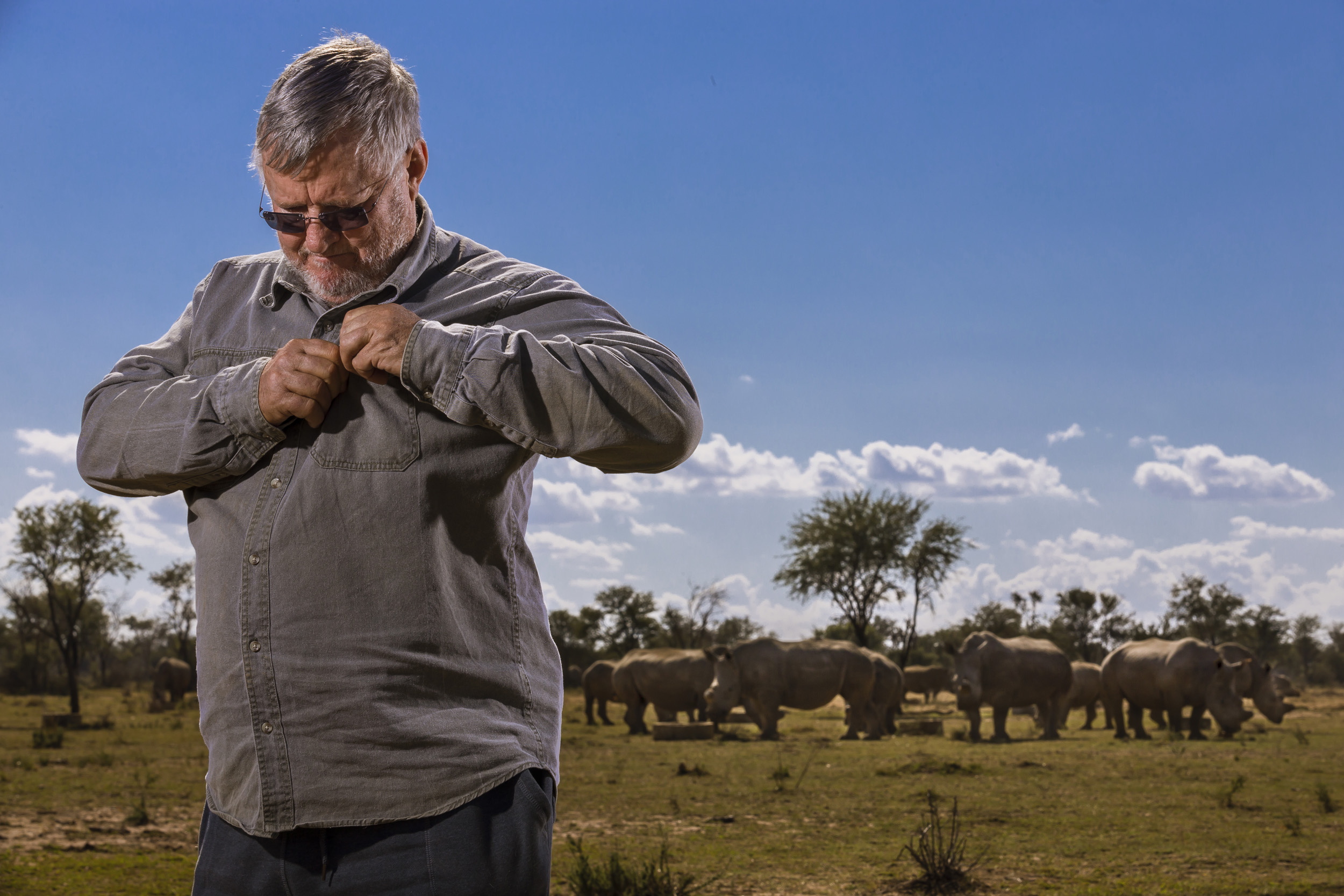

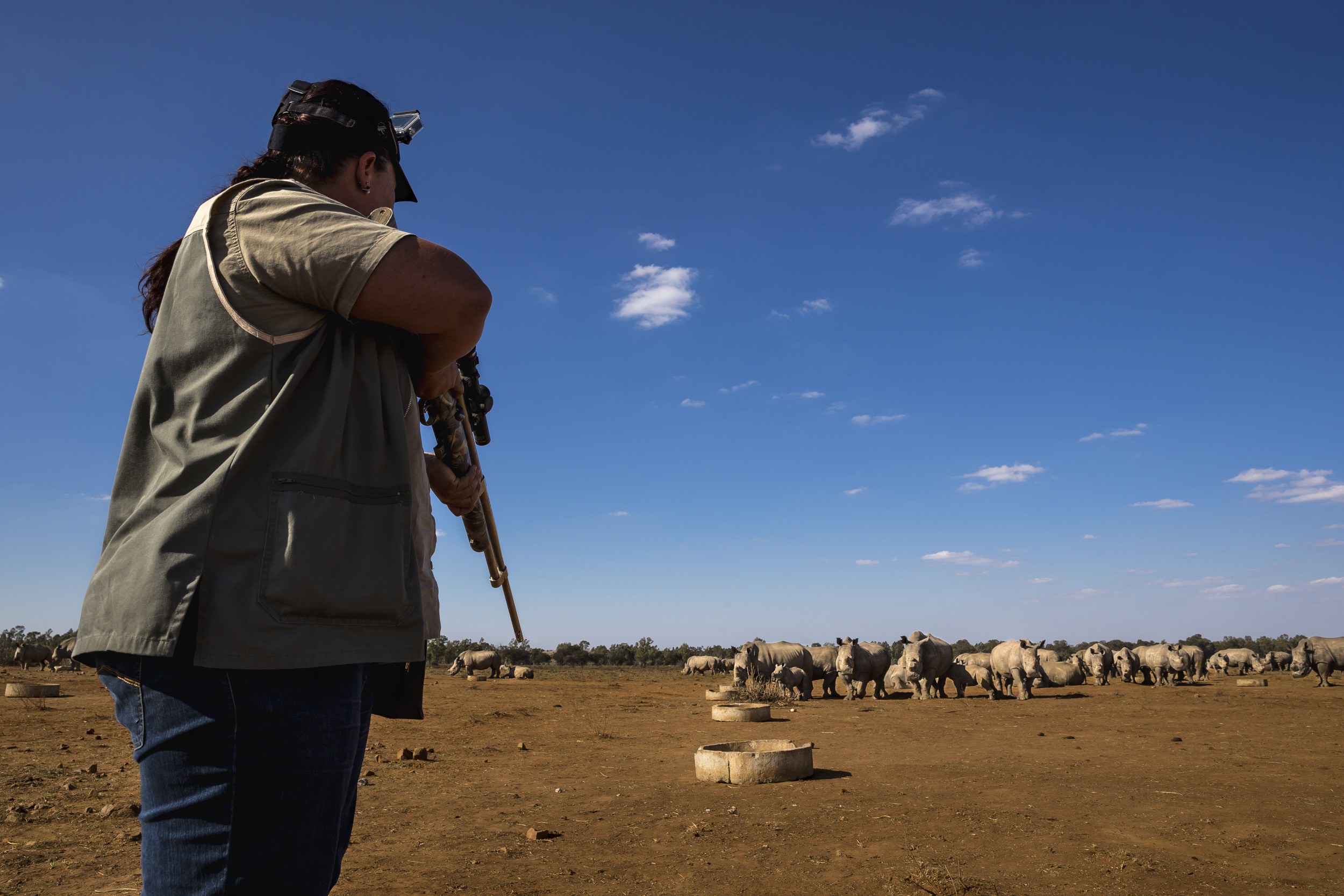
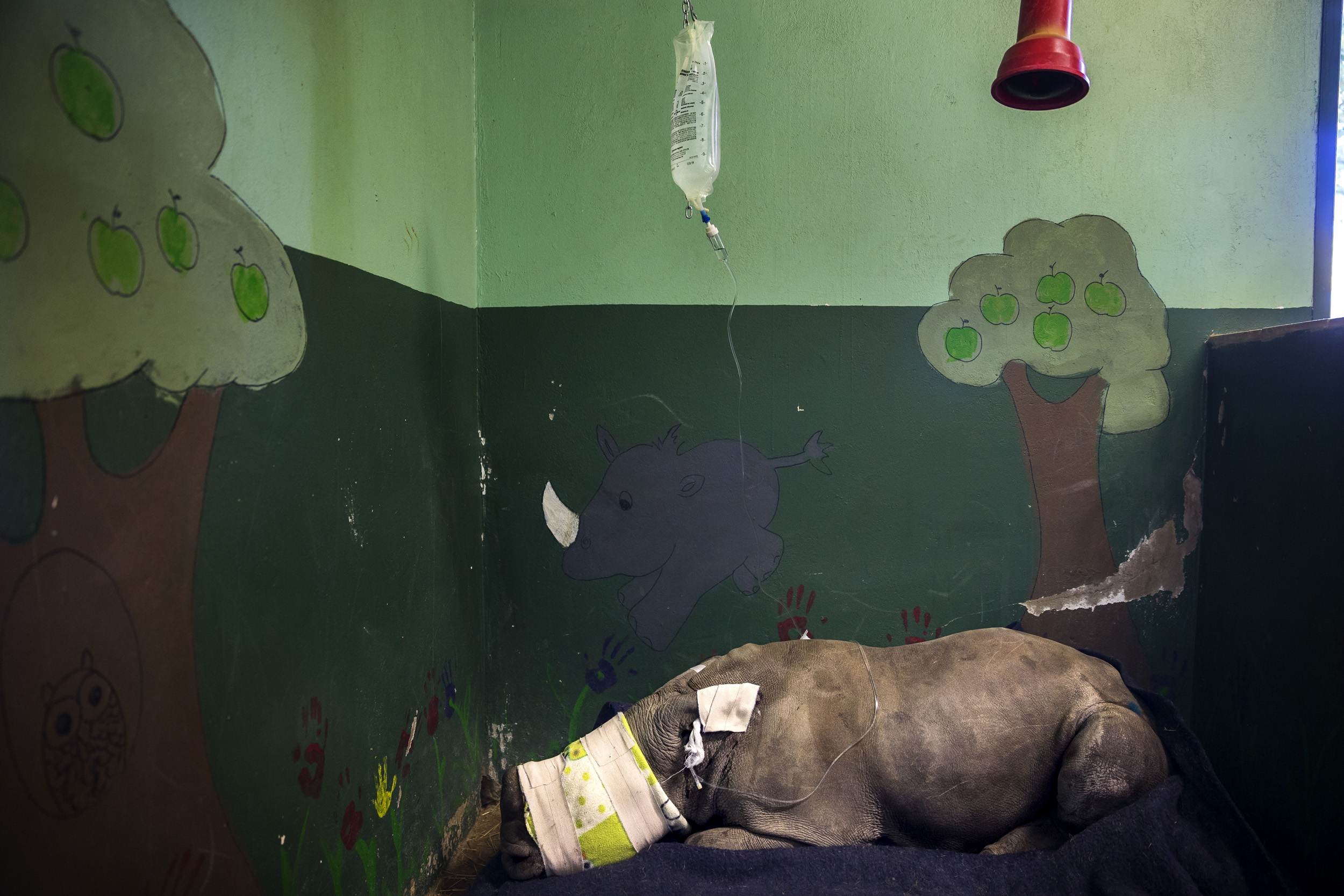
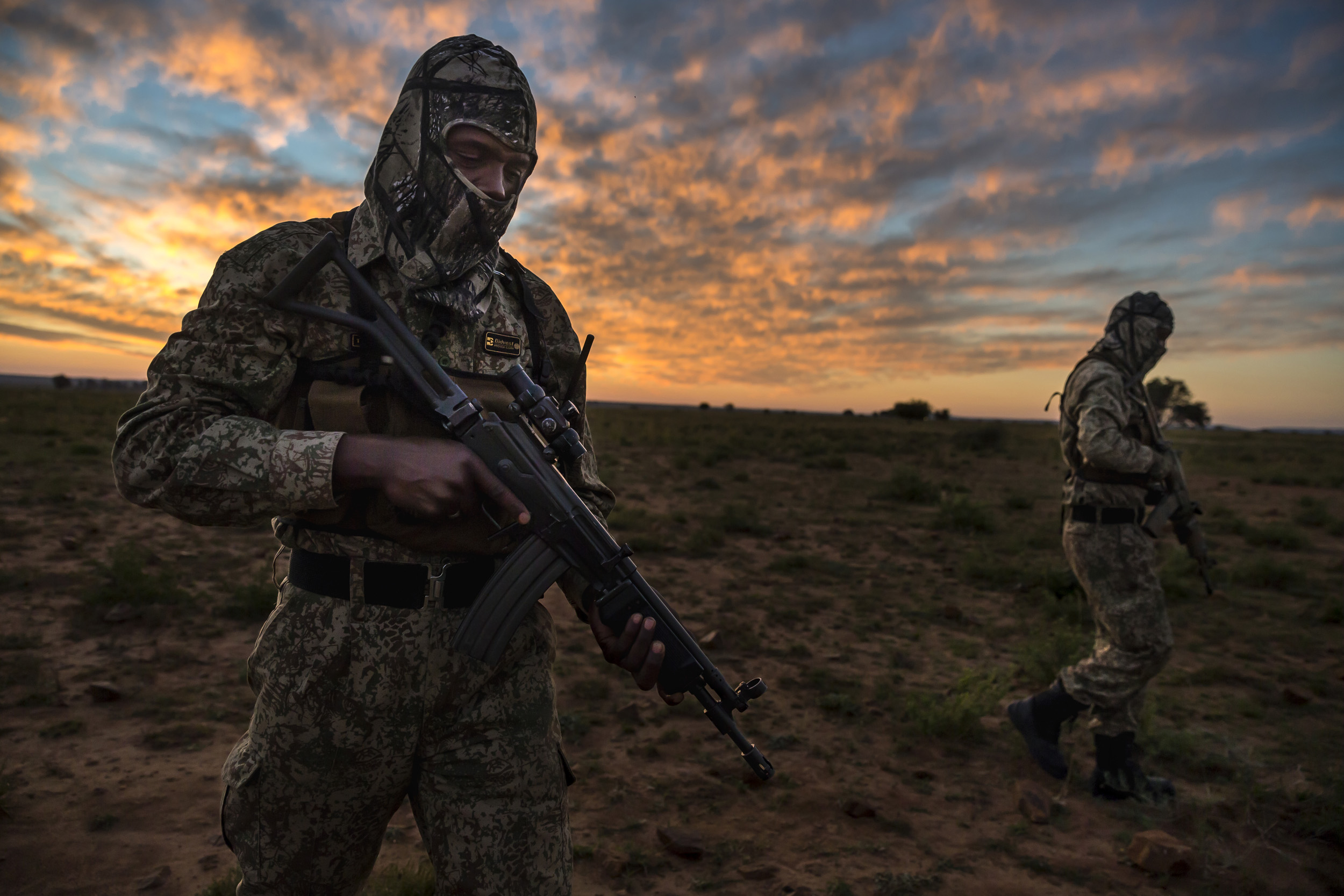
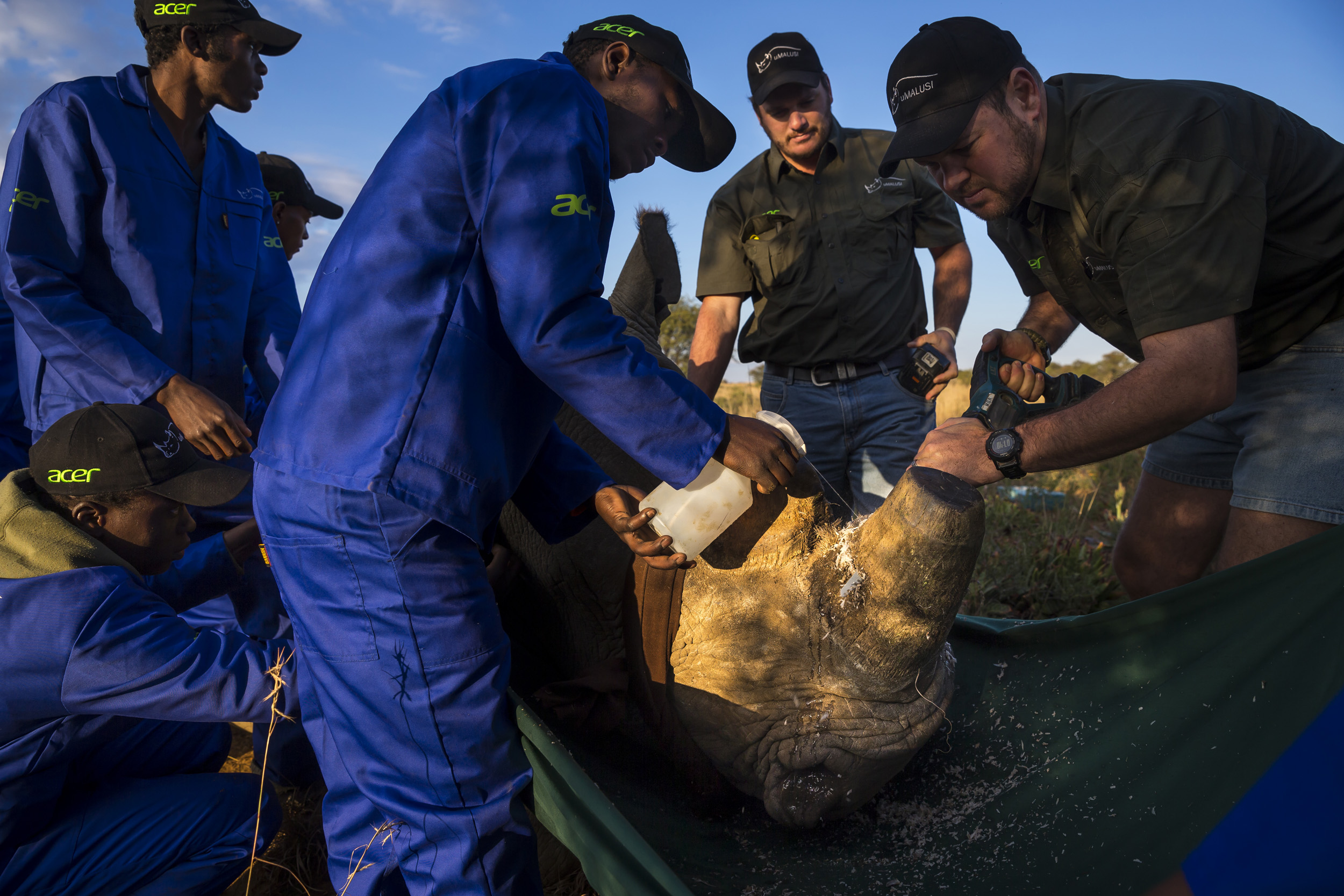
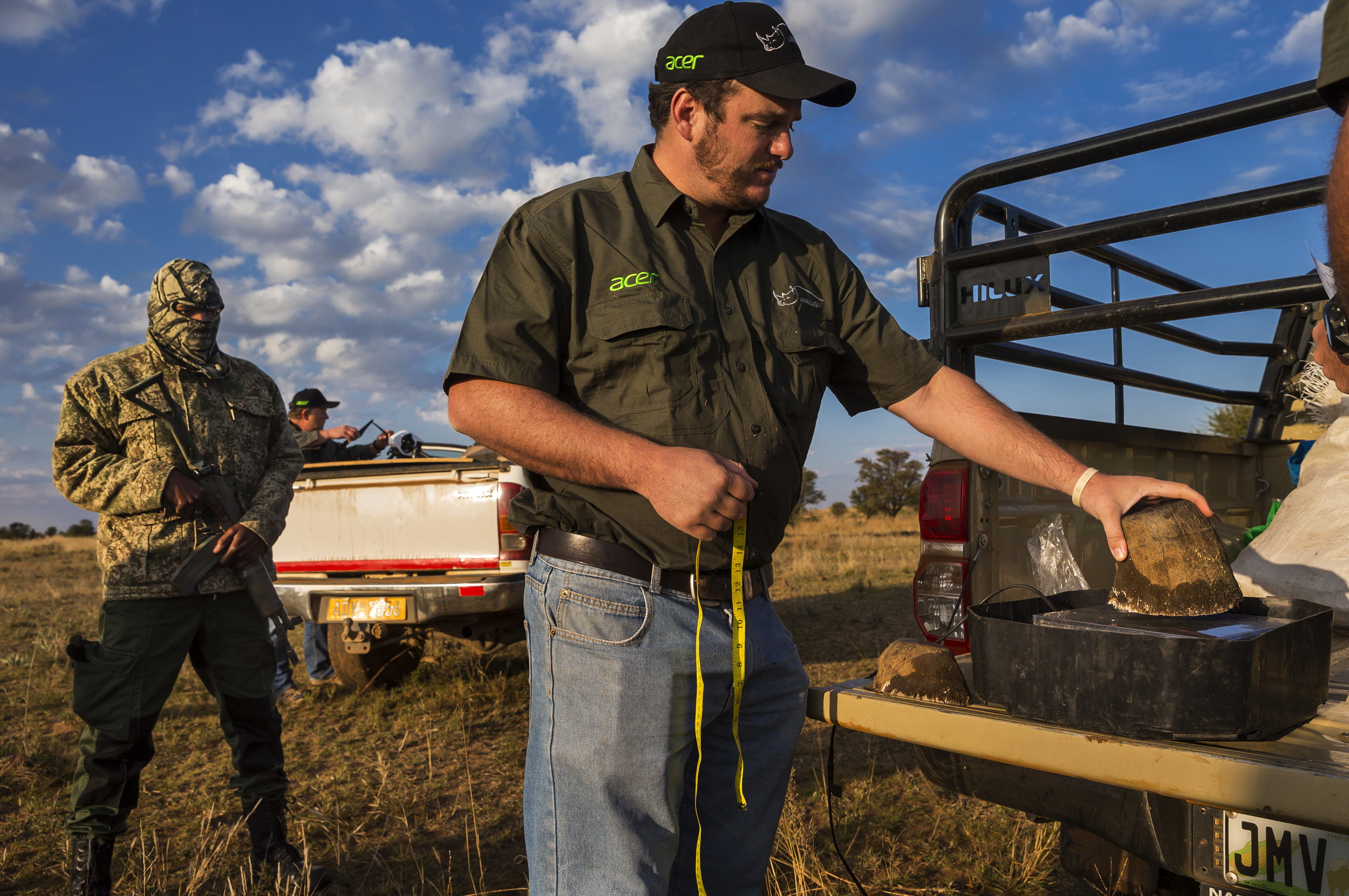
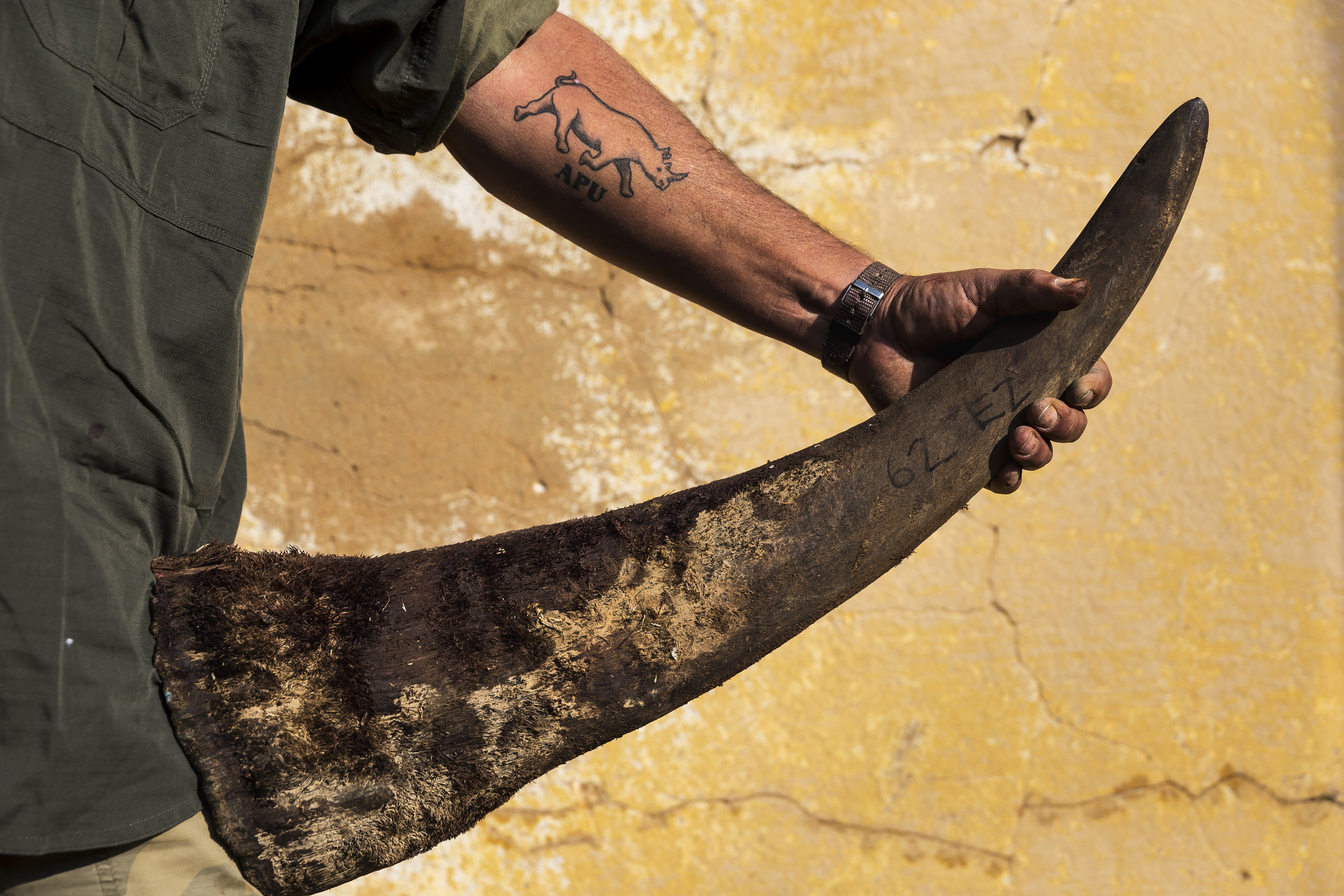

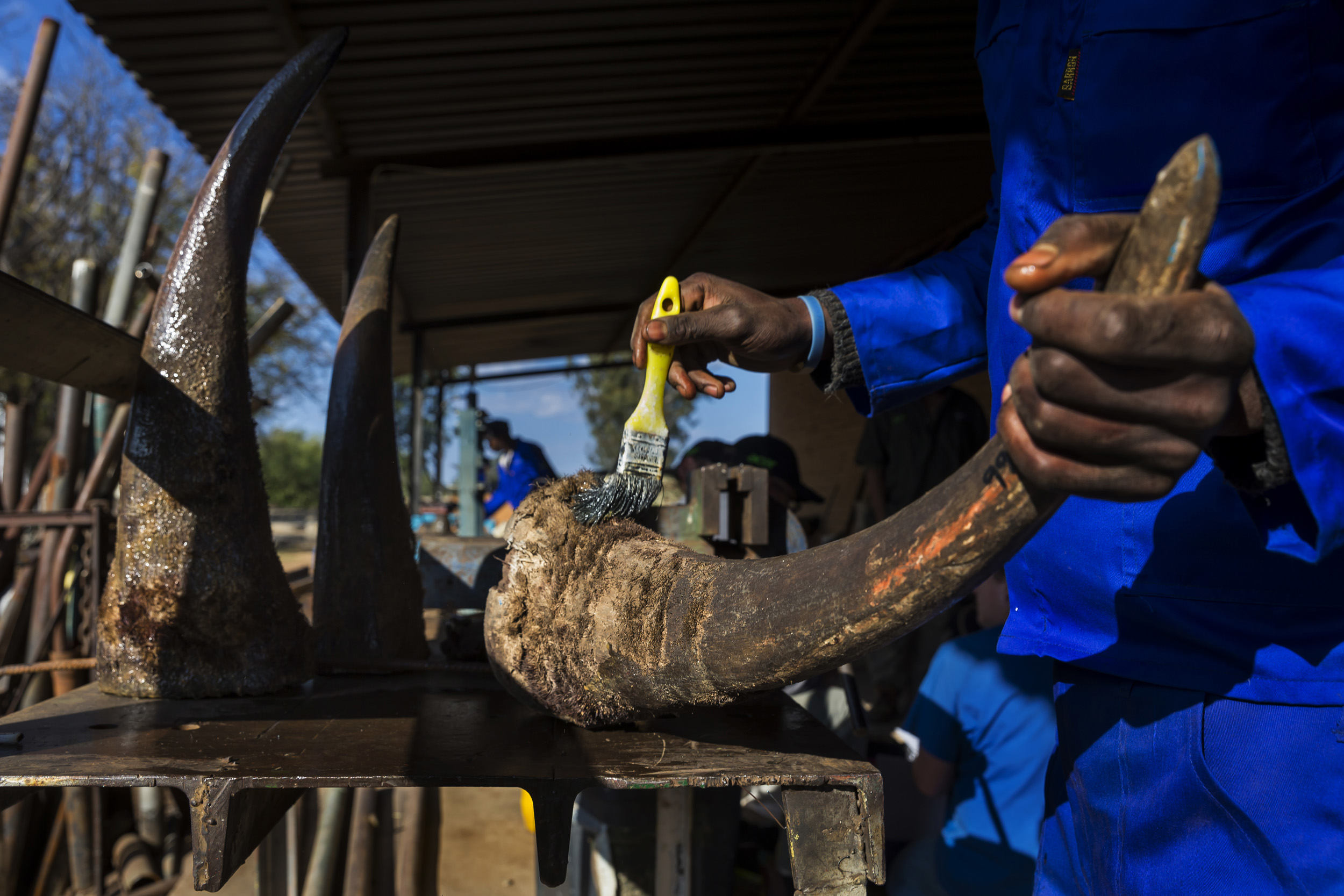
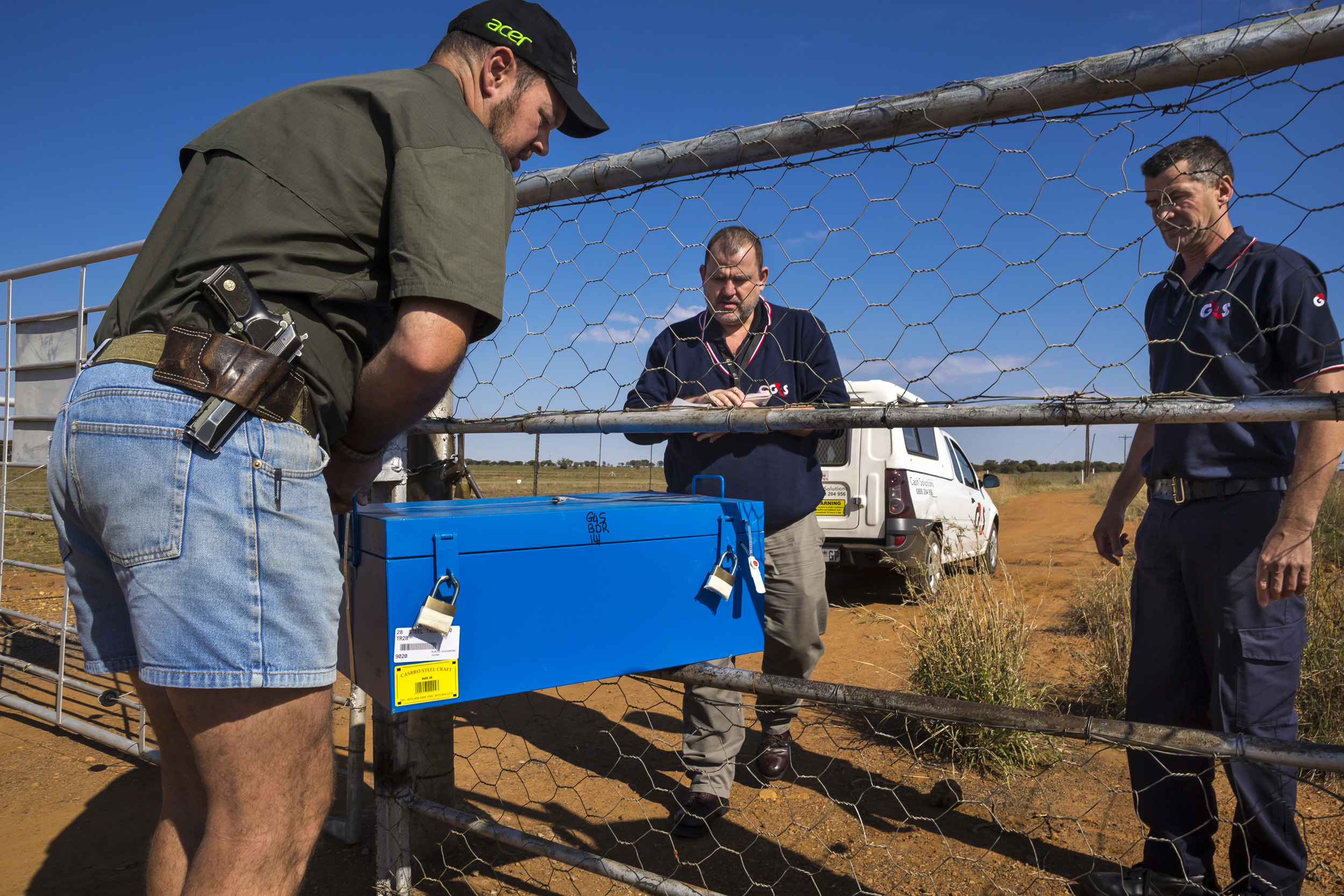
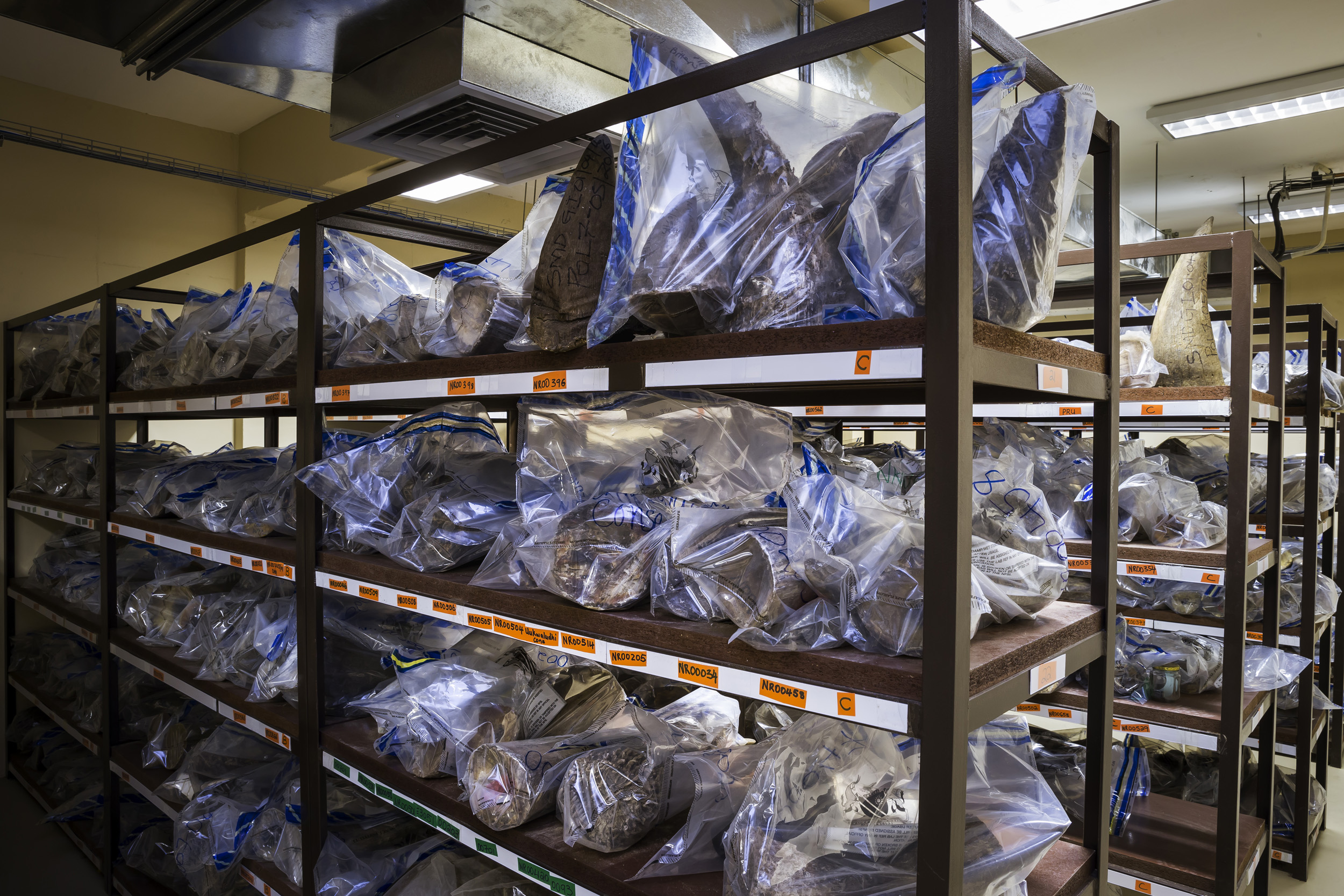
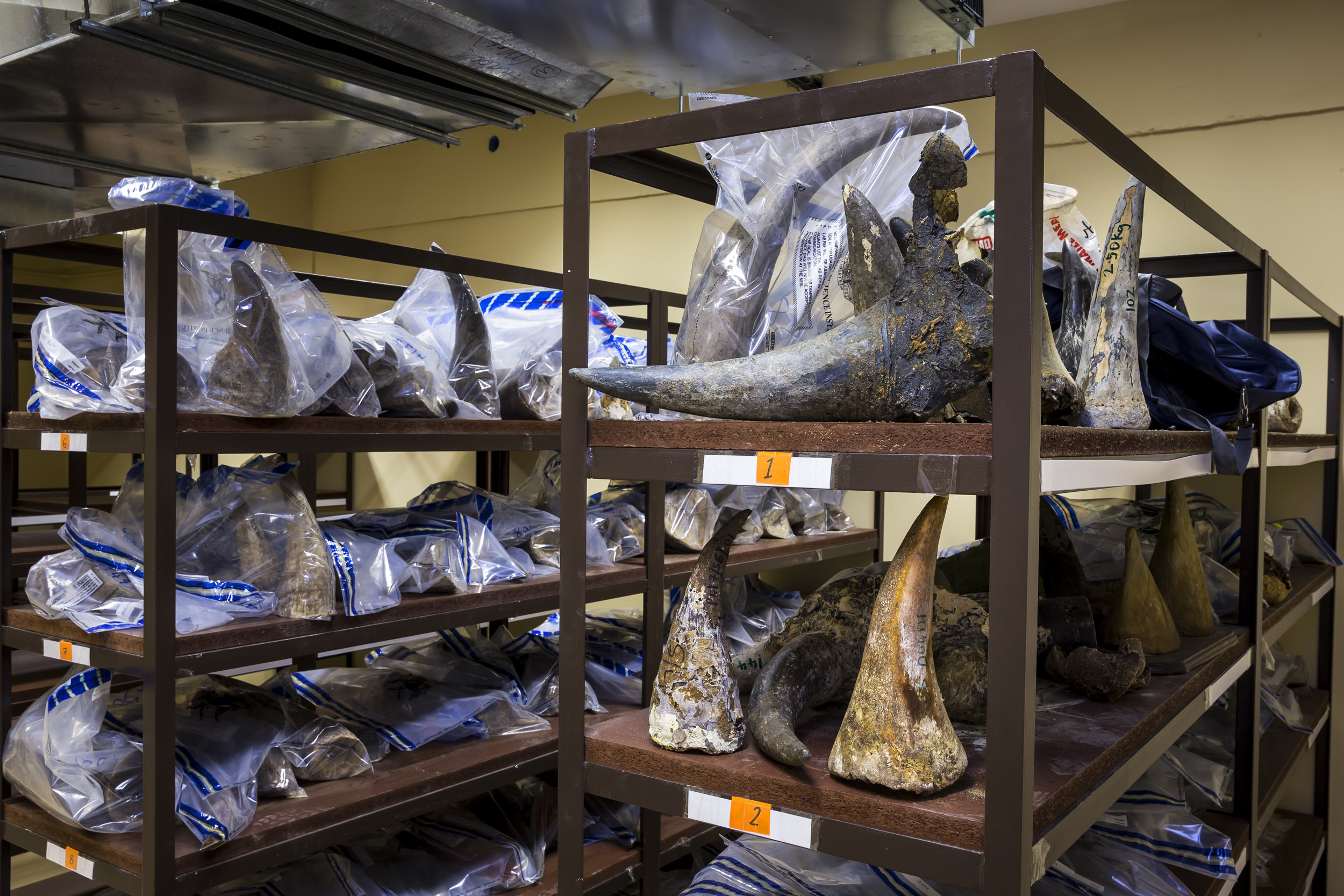
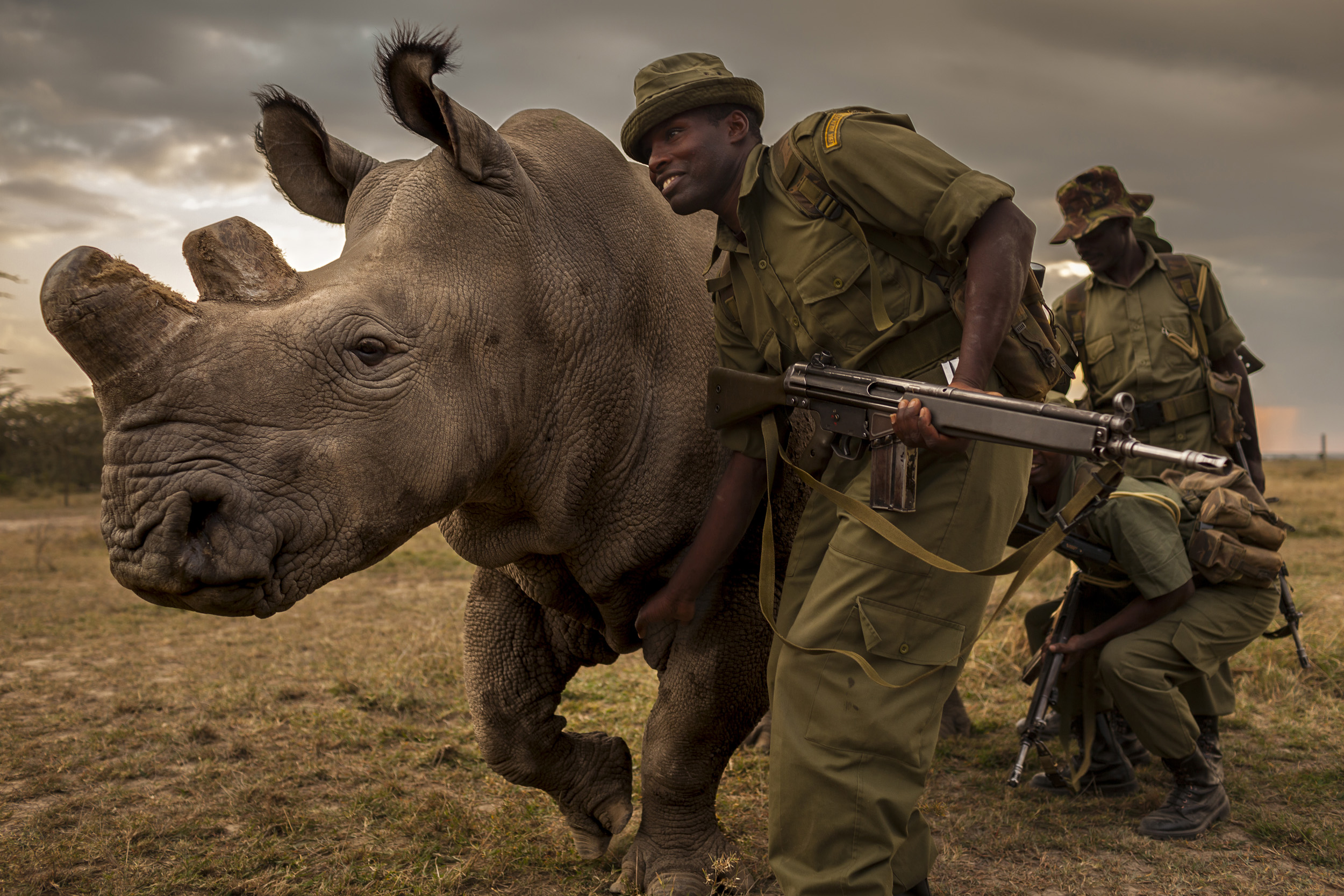

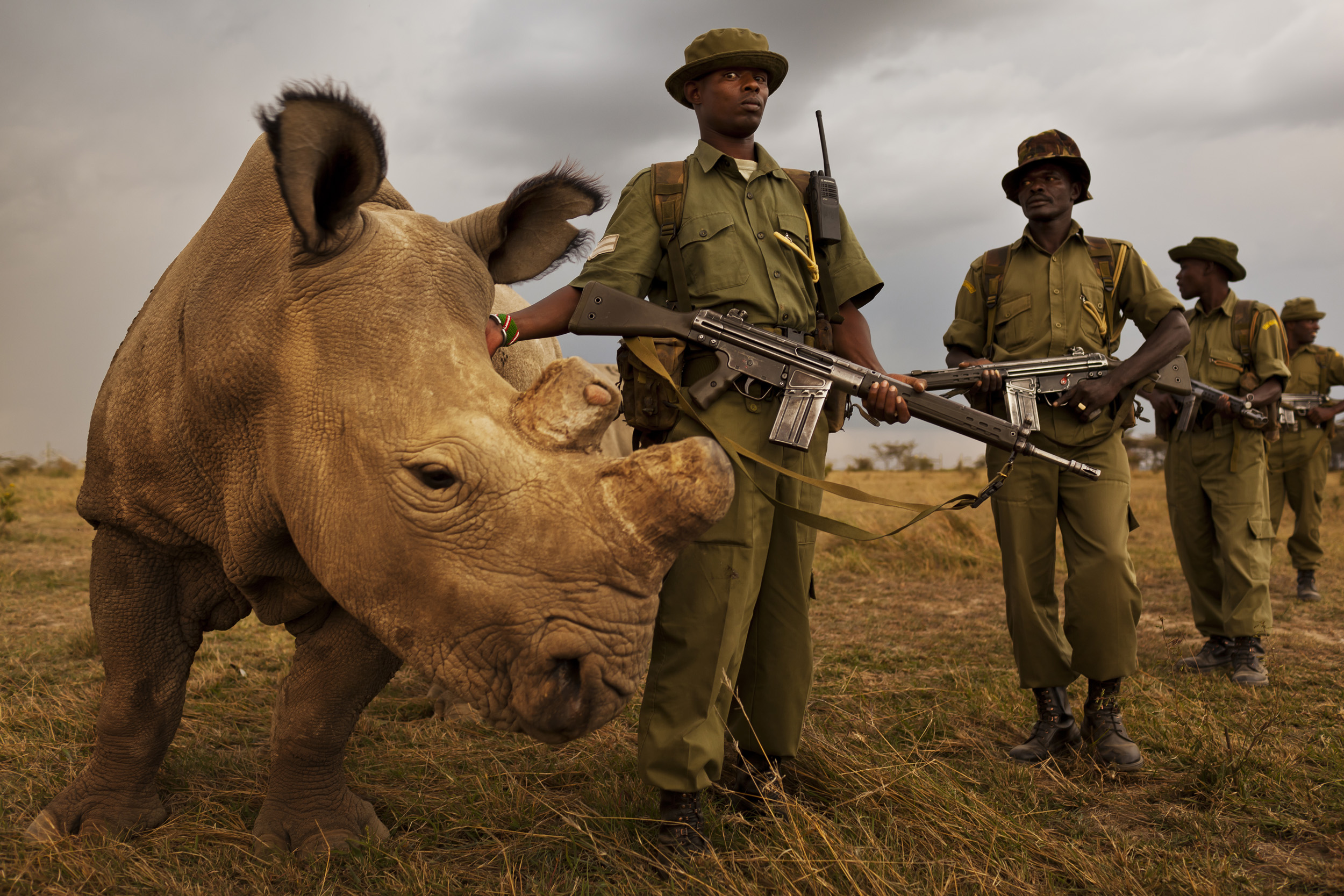
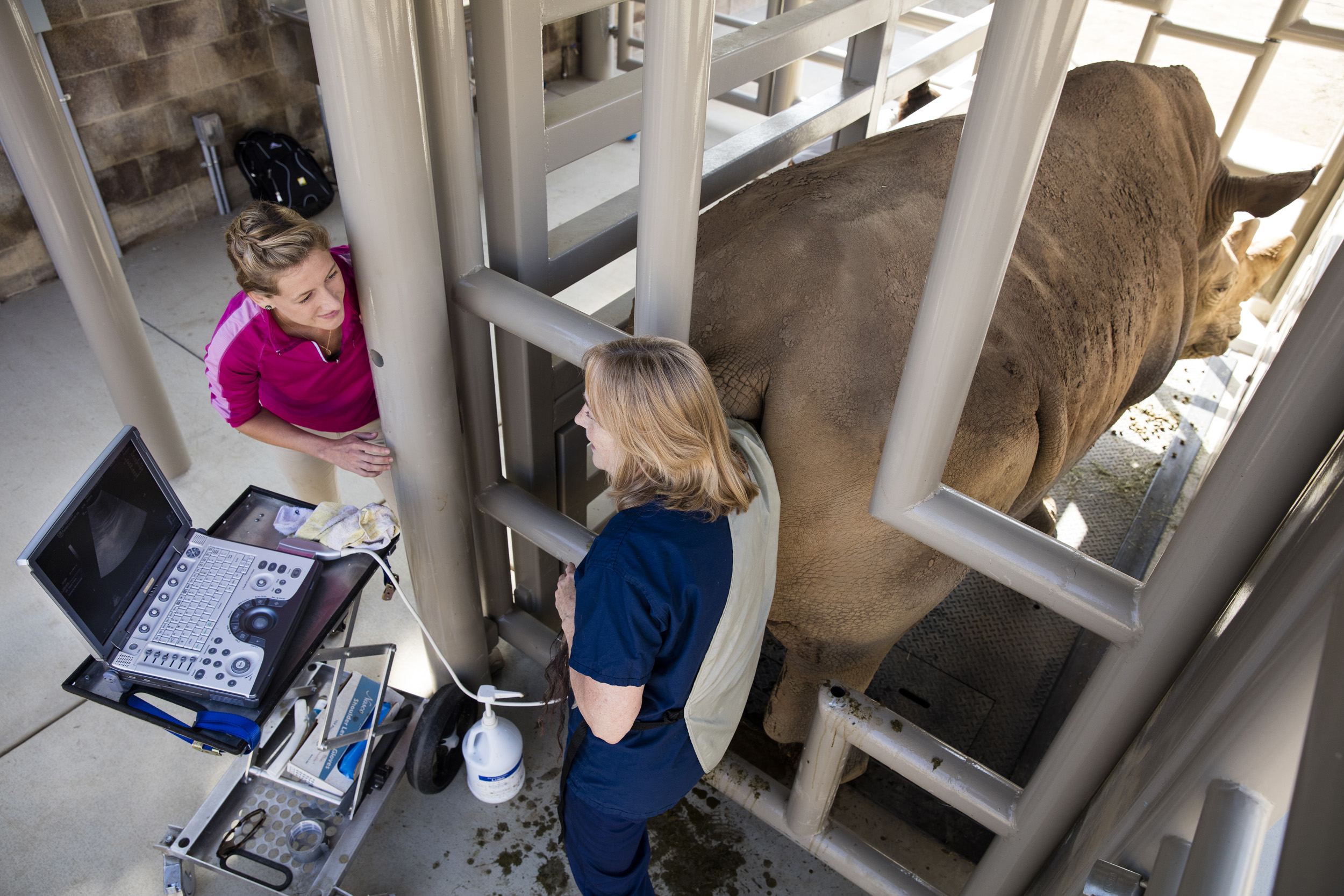


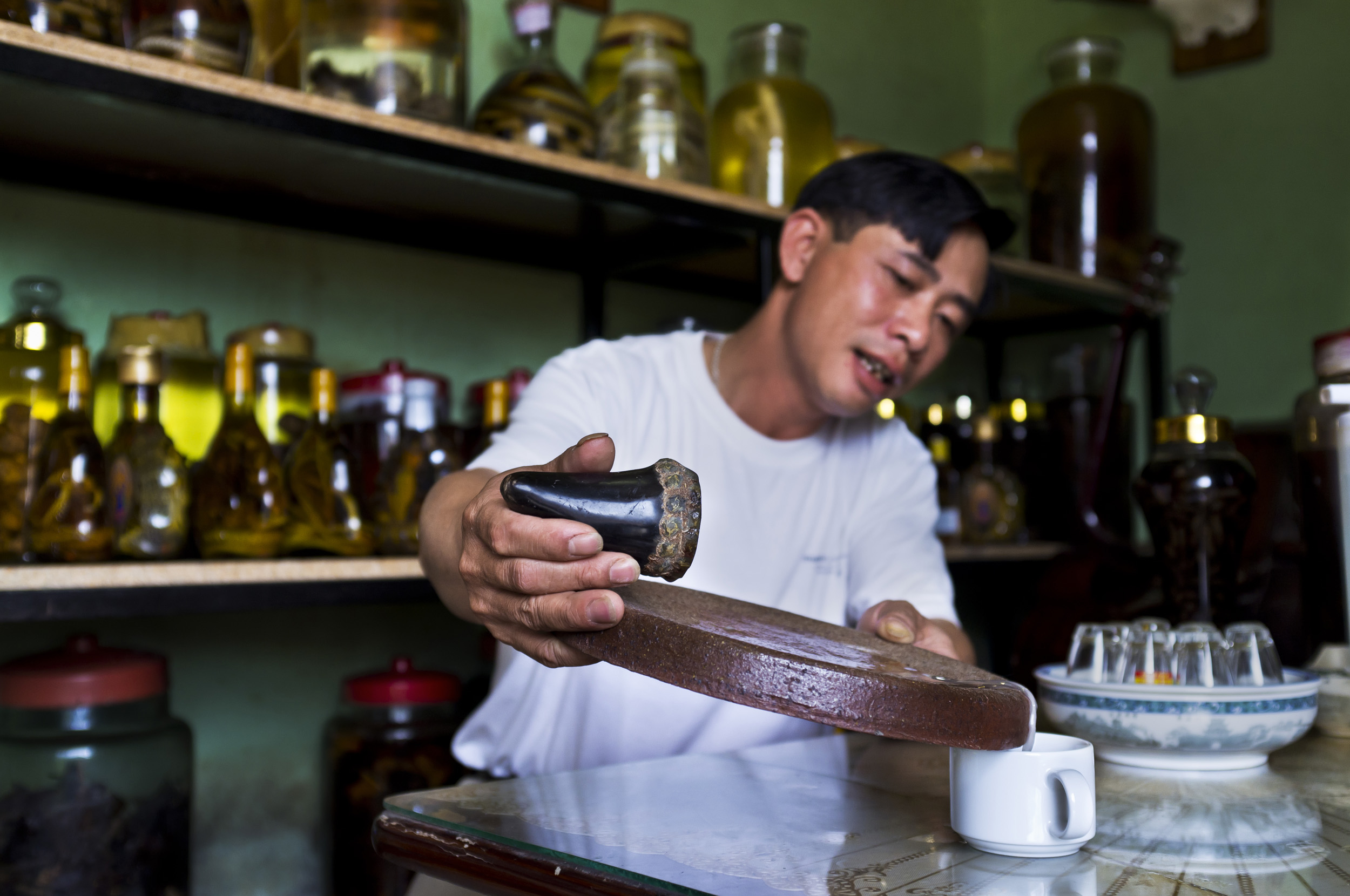
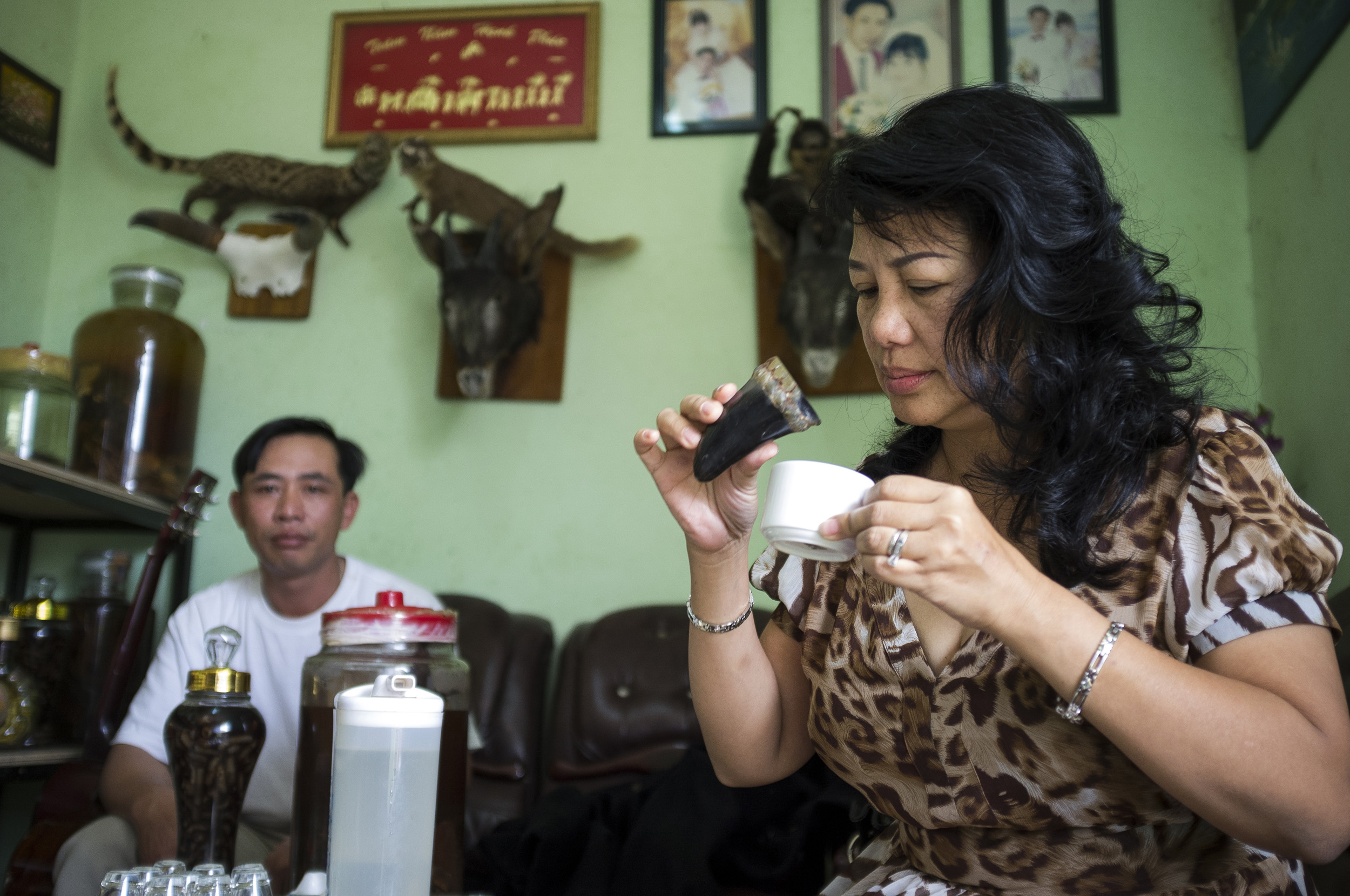
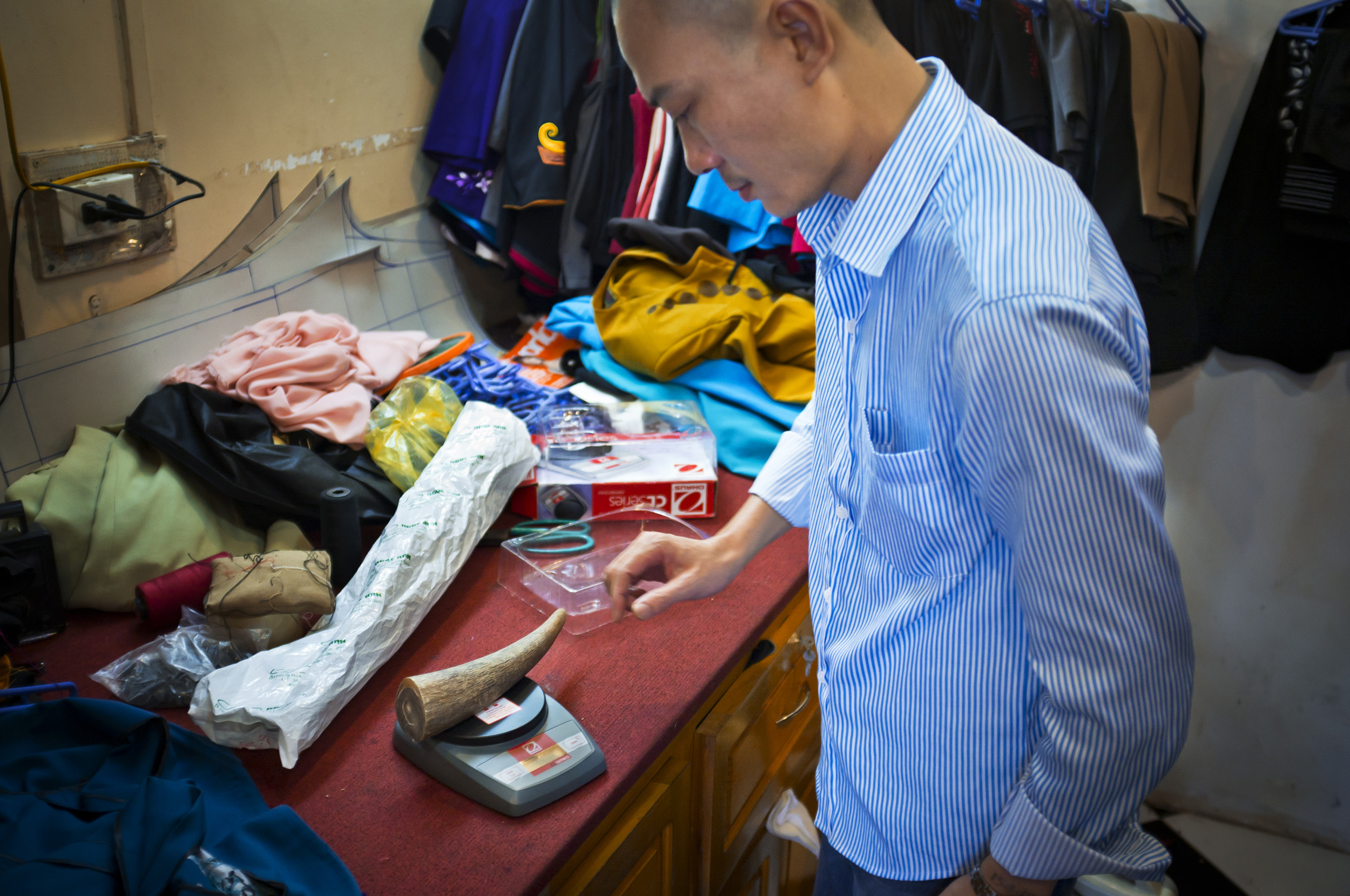
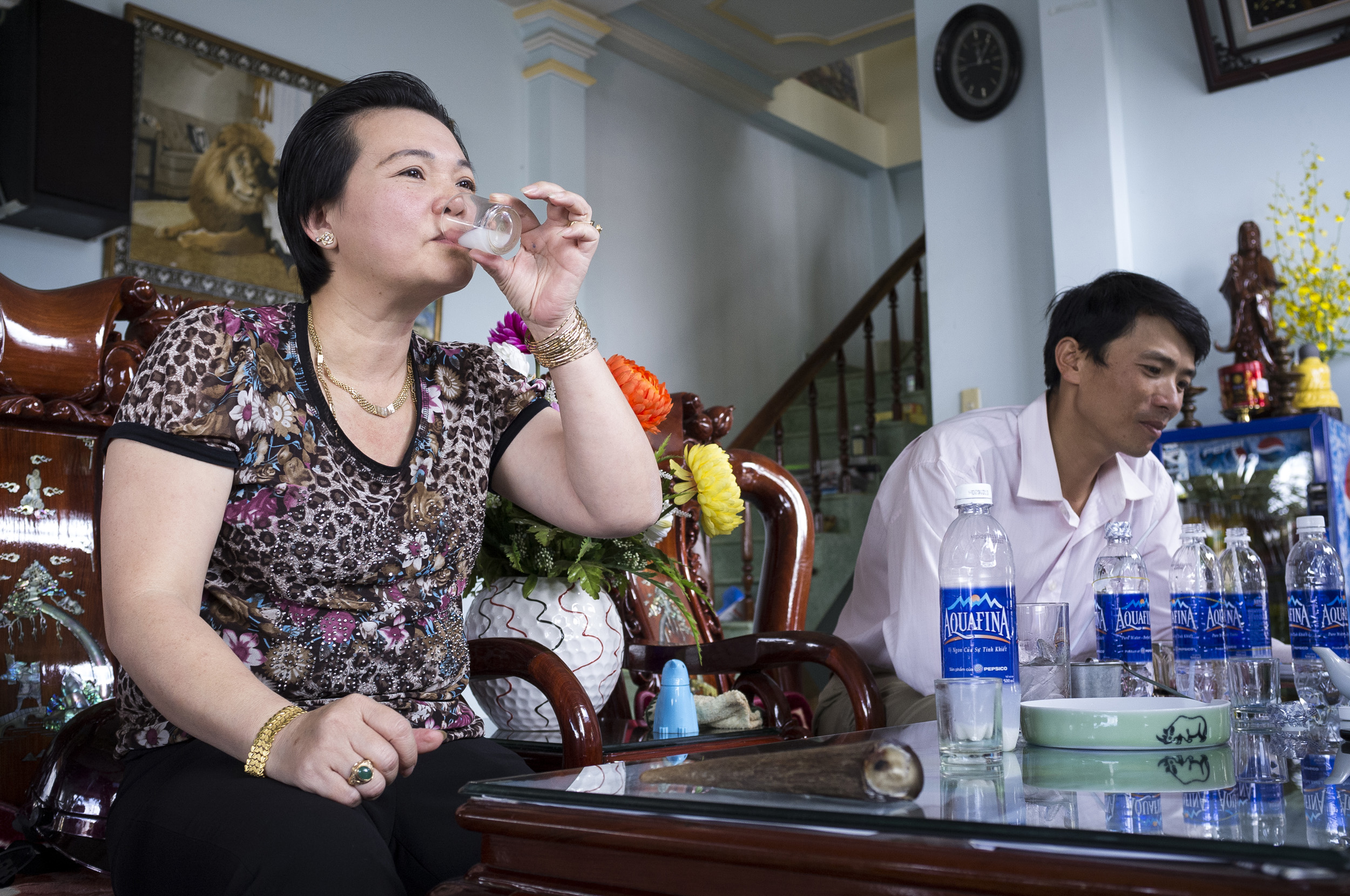

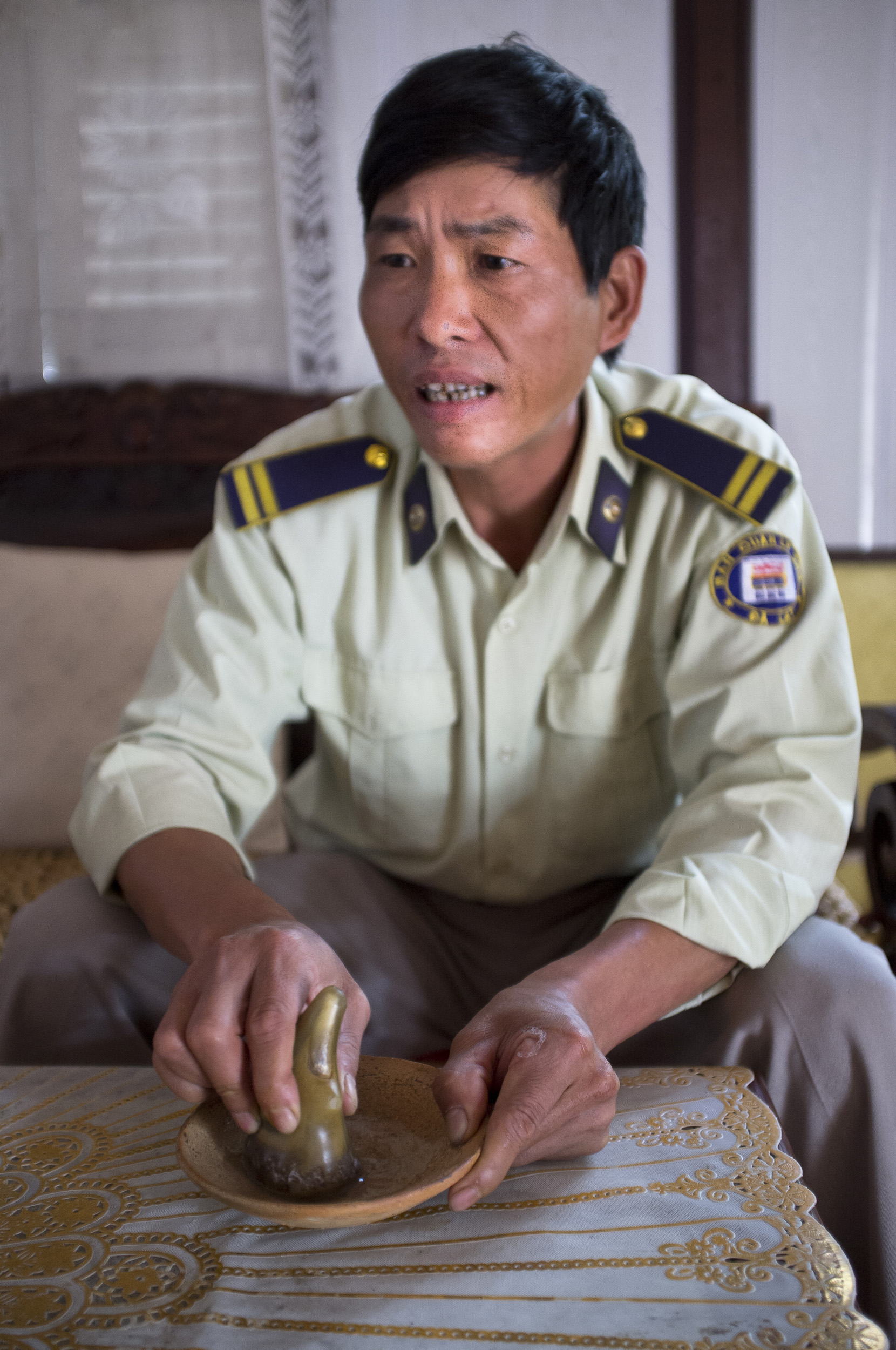
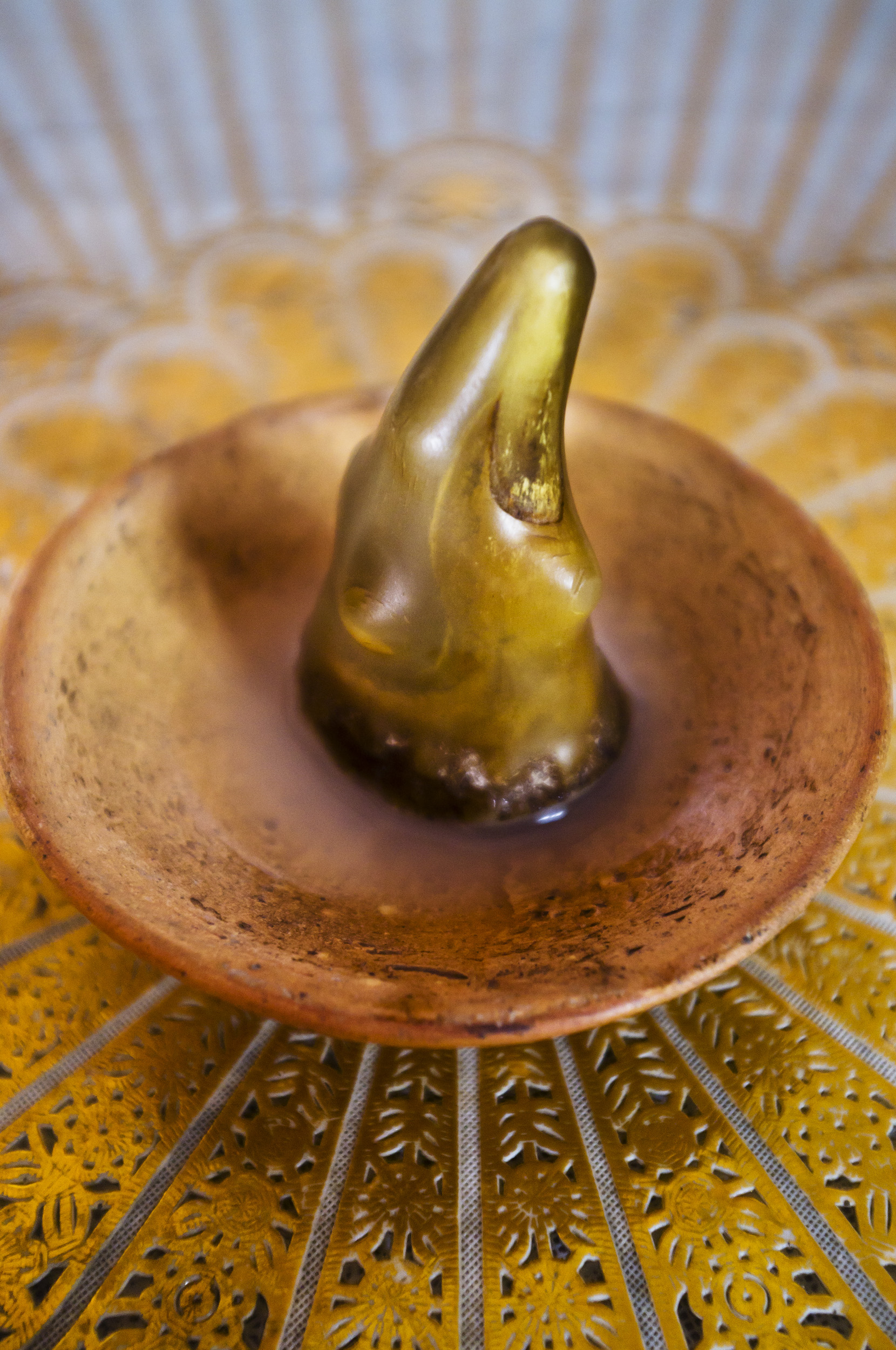

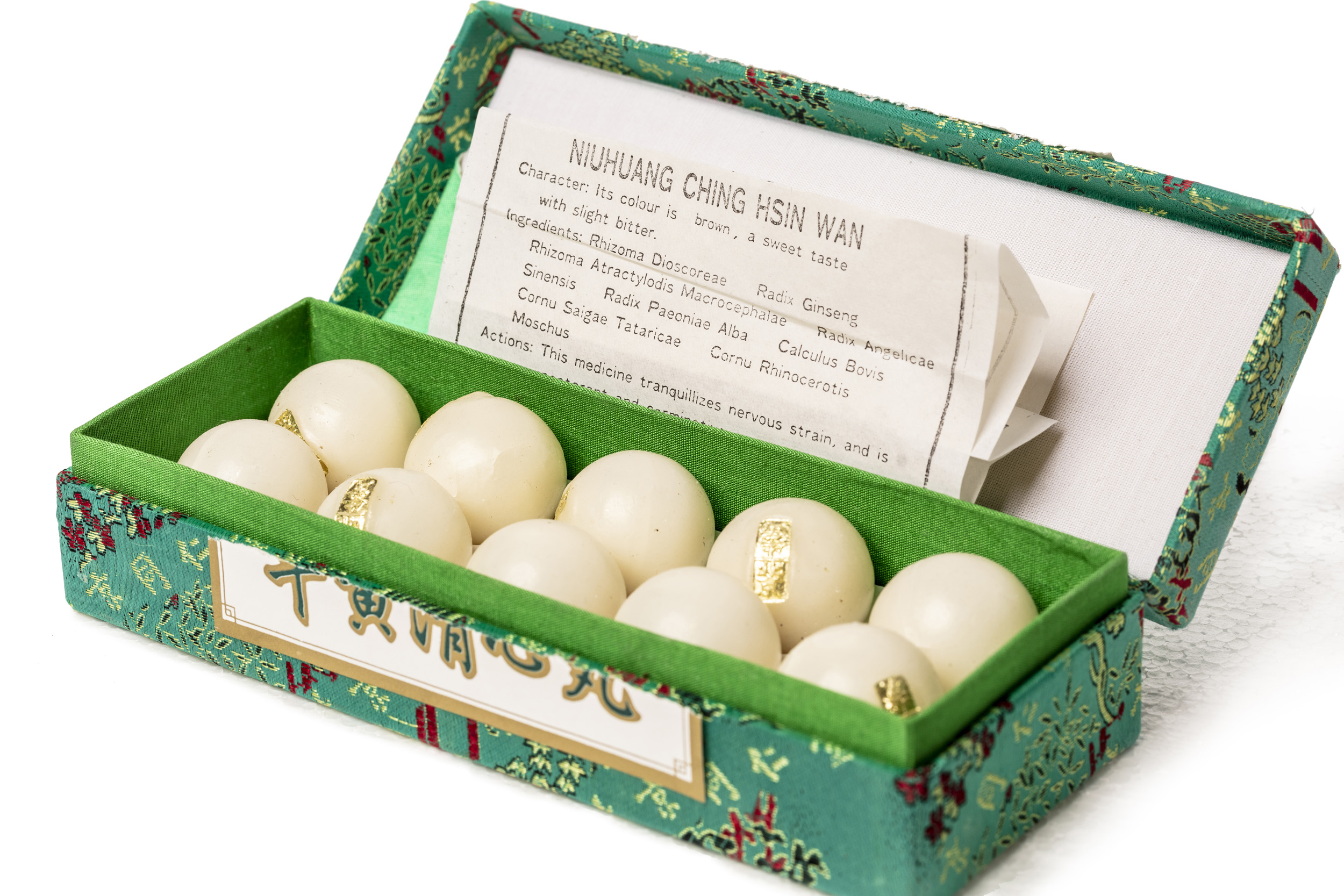
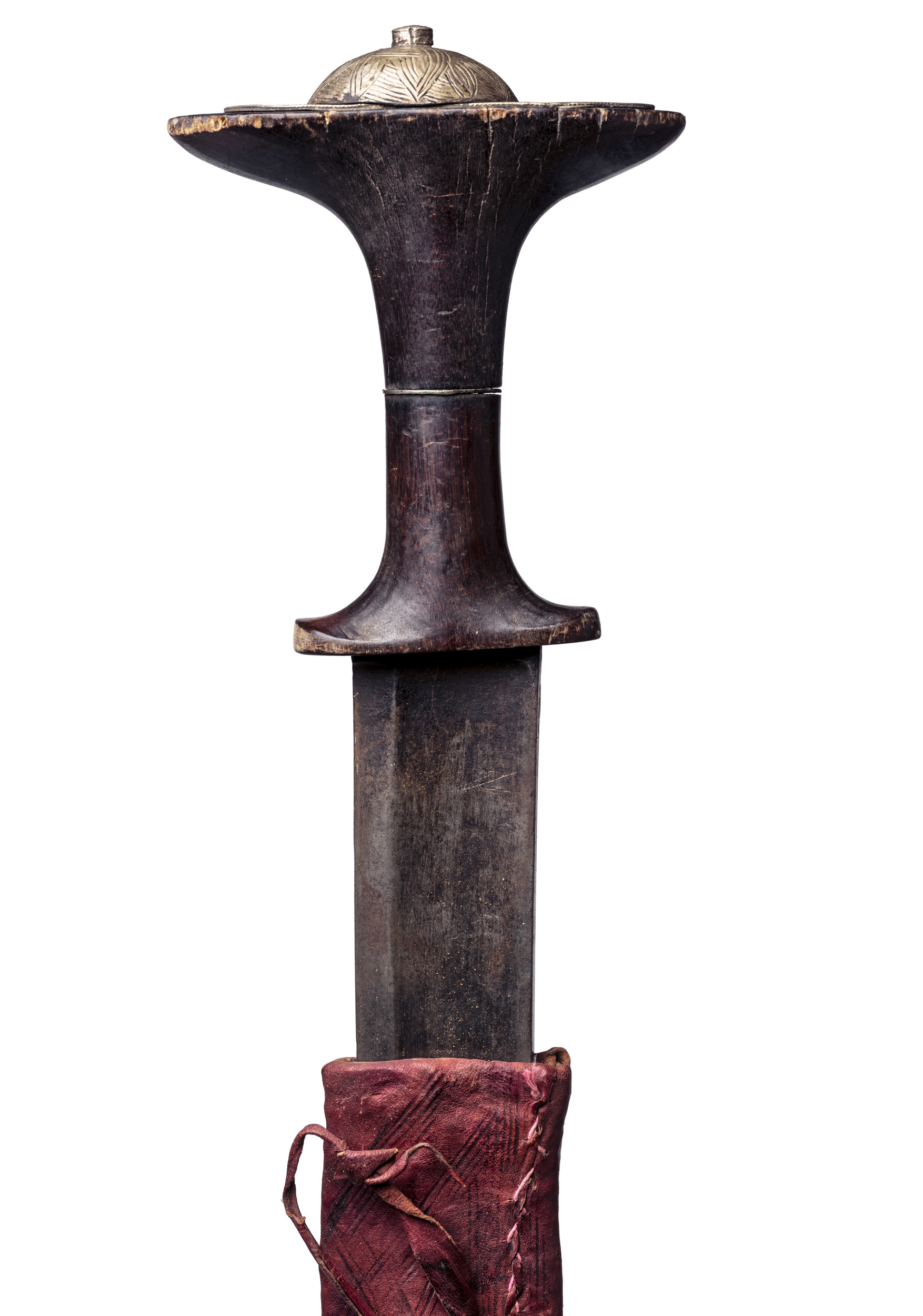
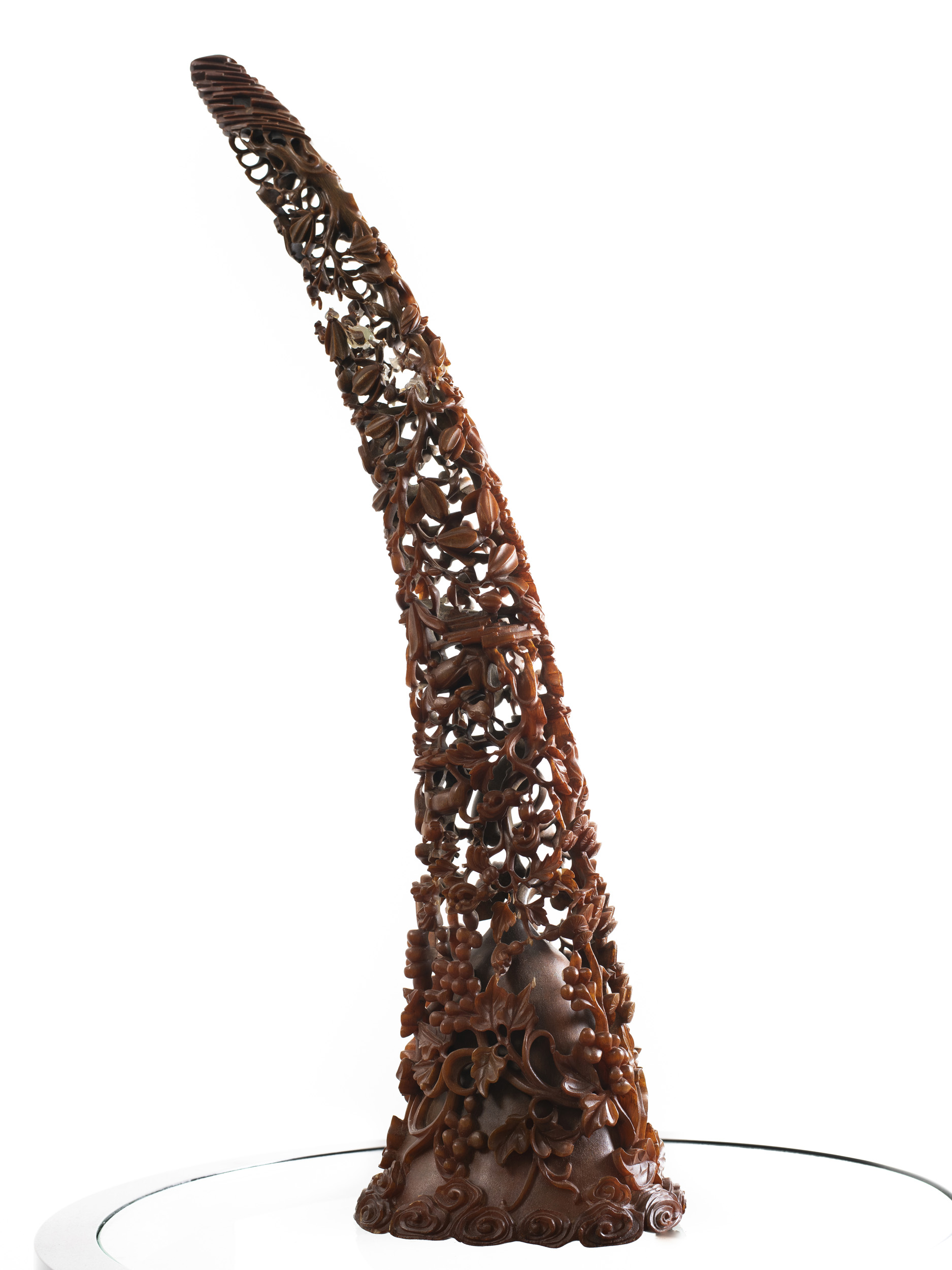
Rhino Wars This photo essay attempts to look at the environmental crisis caused by Asia’s appetite for Rhino horn. The horn is part of an ancient Asian medical system and today is seen as a curative for everything from Cancer to Kidney stones. Essentially keratin, a mild alkaline substance identical to fingernails, the horn is ground down in grinding bowls and mixed with water. This is then ingested by the sick and the wealthy of Vietnam and China, the imbiber hoping for miracle cures, when in fact science shows us it has a placebo effect at best. The use of horn dates back over 2000 years but the recent economic rise of countries like China and Vietnam and the subsequent wealth of the new upper class has had disastrous effects on the world’s remaining rhino population. Rhino horn is now worth more than gold and the poaching crisis is a perfect storm of that value playing out in the most corrupt wildlife systems with some of the poorest poachers as well as rhino ranchers who see millions of dollars in pushing to legalize the trade. South Africa is the main repository of the world’s remaining rhino, figure less than 20,000 animals. South Africa is on track to lose over 1600 animals this year, a figure that has risen every year since 2006 when less than 20 animals were killed for their horns. This essay examines the crisis along the Mozambique/South African border where daily incursions by armed poachers has resulted in a war which plays out inside Kruger National Park, the largest reserve for rhino in the world. We see the poachers with silenced weapons, the middle men arrested in sting operations by Mozambican authorities and the few rhino who dare to venture into Mozambique, protected by a tiny NGO who is the only effective organization in country. The average life expectancy for a Kruger rhino in Mozambique is 24 hours, a country where they were recently declared extinct. The essay goes on to show widows who have lost husbands and sons in this fight, range
MOAMBA, MOZAMBIQUE, 19 APRIL 2016: Two rhino poachers, one 19, the other 28 years old, apprehended by an anti-poaching team in Mozambique close to Kruger National Park border. They are seen waiting to be processed in the local jail. After a three day chase they were caught in a roadblock and the rifle seized shortly thereafter. This was due to a co-ordinated effort between Kruger National Park in South Africa where the poachers intended to shoot rhino for their horn; and Sabi Game Park, a conservancy on the Mozabique side. The poachers were tracked and identified by their unique shoe pattern. They tried to say they had been on their way to buy cattle but had no money on their persons and the alleged cattle owner said he did not know anything about selling his cattle. A Czech CZ .458 hunting rifle was seized, complete with a professionally built silencer. Both men admitted their guilt and will be charged under new Mozambican law which states that possesion on the weapon and bullets indicates intent to poach rhino, this carries a maximum sentence of 12 years and/or $80,000.00. Their Toyota Hilux vehicle was also confiscated. The younger of the two poachers, 19, later led police to the homes of suspected weapons and transport suppliers, higher ups in the rhino poaching syndicates known as level 2's and 3's. Those men had fled by the time the police arrived but significant information was discovered in the form of identity documents, both real and forged, as well as banking account information. (Photo by Brent Stirton/National Geographic Magazine.)
LIMPOPO, SOUTH AFRICA, 2 APRIL 2016: “Shoelaces on steroids.” That's how Saving the Survivors PR Spokesperson Suzanne Boswell Rudham described Tuesday's groundbreaking procedure using human abdominal surgery technology to stretch the wounded edges the gaping wound created by horn poachers who removed most of the face of the world's most famous rhino, “Hope.” The Saving the Survivors team member joined a team of top wildlife vets on a Limpopo plot of land, where they stitched the elastymers, imported from Canada, on to Hope's battered face. They are hoping that it will to pull the edges of the wound together and finally heal the massive wound, which happened when poachers hacked off almost all of her face last May. But the world-famous animal with the indomitable spirit has clung to life - and has become an ambassador for the conservation of her ever-threatened species, Johan Marais, a wildlife vet and founder of Saving the Survivors, told a small group of onlookers gathered around him and his team. In a procedure that lasted just over an hour, they inserted pulley systems in Hope’s skin to "crank the laces" to close the massive cavity on her face. In Hope's latest procedure - she has already had five major surgeries and other smaller ones - they used an abdominal re-approximation anchor system, imported from Canada by local distributors Surgitech. "Basically it's developed for people who've had stomach surgery where they can't close the wound," Rudham explained. "Whereas before they used it to stitch it and staple it, now this system... actually pulls in the tissue without destroying any cells." In the past year, 60% of Hope's face has healed, but she's not out of the woods yet, explains Marais. Hope’s gaping wound is constantly attacked by flies and maggots. "We're hoping to make that cavity a lot smaller and then we'll put a wound matrix over that with collagen for the cells to start growing together," adds Rudham. After the procedure, the bandaged rhi
SABIE GAME PARK, MOZAMBIQUE, 9 APRIL 2016: A combined force of Sabie Game Park Rangers, Garda Frontier soldiers and Fauna Bravia soldiers arrest and detain Moses Chauque, a level 2 rhino poacher who arranges weapons and transport for rhino poachers. There are multiple arrest warrants for Chauque, both in Mozambique and South Africa. This arrest was put together with intelligence gathered by IAPF, the International Anti-Poaching Foundation, the only effective Anti-poaching group on the ground in Mozambique. Moses Chauque was identified in statements from two seperate groups of poachers who were arrested in Mozambique with CZ hunting rifles and rhino horn. Both groups made sworn statements the Chauque contracted them for rhino poaching in nearby Kruger National Park. There are also further warrants in South Africa for his alleged involvement in two murder cases. When Chauque was delivered into Police custody in Mouamba, Mozambique, the police apparently cheered that he had finally been caught. The case against him in Mozambique will now revolve around weapons charges and the statements against him made by the two groups of arrested rhino poachers. (Photo by Brent Stirton/Getty Images Reportage for National Geographic Magazine.)
EZULU GAME FARM, GRAHAMSTOWN, SOUTH AFRICA, 15 MAY 2016: Four pairs of Cow and calf rhinos are captured and moved into transport for relocation to a more secure facility. This is the last of 27 Rhino that are being moved away from game farms in the Port Elizabeth/Grahamstown region where it is feared that security is inadequate to protect these rhino from poachers. 6 rhino have already been killed in the last 3 months and the professional manner in which they were poached has prompted owners to say that it is better for these rhino to leave their farms and go to a more secure facility. The rhinos will travel for 20 hours to their new location and will be sedated every three hours by a vet who will accompany them at all times. They will also be guarded by full time security for their journey and full time at their final location. It is a truism of rhino ownership these days that owners can often not afford the expense of full time security for these animals, such is the pressure from poachers and the value of their horn in Asia. (Photo by Brent Stirton/Getty Images Reportage for National Geographic Magazine.)
BUFFALO DREAM RANCH, KLERKSDORP, SOUTH AFRICA, 24 MAY 2016: A two-man security team deploys by helicopter at sunset for anti-poaching duties on the worlds largest Rhino breeding ranch. The teams are at work 24 hours a day and conduct security operations from rotating positions, observation points and on mobile patrols on foot, in vehicles and by helicopter. John Hume has close to 1400 Rhino to protect on his property and they are constantly monitored by his vet Dr Michelle Otto and by Hume’s Security teams. Hume’s running costs are close to 5 million Rand a month, around $330, 000.00 per month. $200,000.00 of that is spent on security. Hume is a long time proponent of legalizing the Rhino horn trade by using humane dehorning and is one of the biggest influences in trying to get CITES to change their anti-trade stance. Hume is reputed to have more than 5 tons of rhino horn in secure locations. This would be worth around $40, 000, 000.00 on the Asian market at current prices. There are many supporters of the pro-trade agreement, with more than 1300 rhino likely to be poached per annum in this current crisis. Critics of trade state that legalizing horn trade would create loopholes that would exacerbate the killing of rhino. (Photo by Brent Stirton/Reportage by Getty Images for National Geographic Magazine.)
NELSPRUIT, SOUTH AFRICA, 4 MAY 2016: CARE FOR WILD AFRICA is a donor run NGO that specializes in caring for wounded animals. They have a special focus on rhino and have taken in many rhino orphans from the poaching wars across South Africa at this time. Petronel Niewoudt runs the facility with a small team of incredibly dedicated staff and groups of volunteers who come in from all over the world. Many of their rhino are small calves who have seen their mothers killed and often been attacked by the poachers themselves. Wounds from machetes across the spinal area are common as poachers try to break their spines so they cannot run away. Their latest orphan is Lulah, her mother was killed in Kruger National Park and when the rangers found Lulah she was estimated to be one month old. Hyenas had attacked the tiny calf and chewed off her ears, parts of her nose and inflicted a terrible bite on her rear right leg. Lulah has a strong will to live and despite fighting off infection in the wound she is looking like she will survive. Lulah has a full time caregiver Dorota Ladosz, 25, who are full time staff at C.W.A. Dorota has an honors degree in both Animal Science and Wildlife Management. She lives full time with Lulah at the time of this picture and sleeps with her in her enclosure. She maintains a constant watch on Lulah’s injuries and her temperature and feeds her at regular intervals. Lulah received surgery on this day and her wounds were cleaned out by Jan-Louis Ras, a surgeon who volunteers his services to Care for Wild Africa but actually usually works on humans. Vet Donnie Engelbrecht handled the anesthetic and the Care for Wild Africa staff assisted. Infections in Lulah’s leg were cleaned out and her ears and the top of her head were dressed and disinfected. Care for Wild Africa has taken care of multiple rhino calves like this and today they have 27 survivors living on the property. (Photo by Brent Stirton/Reportage by Getty Images for National Geographic Maga
BUFFALO DREAM RANCH, KLERKSDORP, SOUTH AFRICA: A group of Rhino at a supplementary feeding site at the ranch of the worlds largest rhino breeder. According to the Ranche vet, Dr Michelle Otto, these feeding sites are meant to supplement the rhino diet in this time of drought, their main food source remains the grasslands on the farm. John Hume has close to 1400 Rhino on his property and they are constantly monitored by Dr Otto and by Hume’s Security teams. Hume’s running costs are close to 5 million Rand a month, around $330, 000.00 per month. He is a long time proponent of legalizing the Rhino horn trade and is one of the biggest influences in trying to get CITES to change their trade stance. Hume is reputed to have more than 5 tons of rhino horn in secure locations. This would be worth around $40, 000, 000.00 on the Asian market at current prices. There are many supporters of the pro-trade agreement, with more than 1300 rhino likely to be poached per annum in this current crisis. Critics of trade state that legalizing horn trade would create loopholes that would exacerbate the killing of rhino.
OL PEJETA CONSERVANCY, KENYA: A four man anti-poaching team permanently guards Northern White Rhino on Ol Pejeta Conservancy in Kenya, 13 July 2011. The Ol Pejeta Conservancy is an important “not-for-profit” wildlife conservancy in the Laikipia District of Kenya and the largest sanctuary for black rhinos in East Africa. It is also the home of 4 of the world's remaining 8 Northern White Rhino, the worlds most endangered animal. There has been an increase in poaching incidents on Ol Pejeta recently, in line with a massive worldwide increase in rhino poaching linked to the rise in the Asian middle class. Anti-poaching teams provide close protection to the rhino, with 24 hour observation over all rhino on Ol Pejeta and 24 hour armed guard protection over the 4 Northern White Rhino who are kept in their own Boma area. The team have developed extraordinary relationships with these Rhino, leaning on them, scratching them and displaying tremendous affection towards these most endangered of animals. Each of the men in these teams feels a genuine vocation towards the protection of these animals, something the rhino seem to sense, and this emerges on a daily basis as the men walk with the rhino through their day.
SAIGON, VIETNAM: A traditional medicine specialist pours the grindings of Rhino horn mixed with water into a cup for drinking, Saigon, Vietnam. He has a client with breast cancer and she has been told that drinking Rhino horn can cure her cancer. She is one of millions of Vietnamese who are prepared to try a cure which has been part of the culture for thousands of years. Rhino horn is illegal in Vietnam yet sells for around $2500 per 100 grams for locals and for as much as $8500 per 100 grams for foreigners.
BUFFALO DREAM RANCH, KLERKSDORP, SOUTH AFRICA, 24 MAY 2016: A rhino dehorning team, led by Vet Dr Michelle Otto and her team, discovers a horn abcess during a routine dehorning on a new Bull Rhino that has recently been brought to this ranch from another property. Dr Otto speculates that when this bull was previously dehorned, his previous owners cut too close to living tissue and that has resulted in the abcess inside this Bulls's horn. Dr Otto utilized an intra-mammary anti-biotic and treated the injury topically, she then applied Stockholm Tar to keep insects out of the infection. She will monitor the Rhino and continue to apply corrective treatment if necessary. All the Rhinos on this property are routinely dehorned for anti-poaching purposes. A humane minimum length of 110 millimeters is left to ensure no damage is done to the tissue at the base of the horn. Rhino horn typically grows back at a rate of a kilogram a year on an adult rhino. The horn that has been removed is microchipped, cataloged, registered with the Nature Conservation Authorities and held in a secure off-site facility. John Hume has close to 1400 Rhino to protect on his property and they are constantly monitored by his vet Dr Michelle Otto and by Hume’s Security teams. Hume’s running costs are close to 5 million Rand a month, around $330, 000.00 per month. $200,000.00 of that is spent on security. Hume is a long time proponent of legalizing the Rhino horn trade by using humane dehorning and is one of the biggest influences in trying to get CITES to change their anti-trade stance. Hume is reputed to have more than 5 tons of rhino horn in secure locations. This would be worth around $40, 000, 000.00 on the Asian market at current prices. There are many supporters of the pro-trade agreement, with more than 1300 rhino likely to be poached per annum in this current crisis. Critics of trade state that legalizing horn trade would create loopholes that would exacerbate the killing of rhino. (Phot
POLOKWANE, SOUTH AFRICA, 27 APRIL 2016: Dawie Groenewalt, South Africa's alleged Rhino horn kingpin and the subject of a 6 year old court case involving multiple charges related to illegal Rhino handling, horn theft, money laundering amongst other charges. He is seen on his game farm in Polokwane where he breeds high-end game for sale and hunting purposes. Groenewalt has also been charged and arrested in the USA on animal trophy charges. Groenwalt denies any wrong doing. He is also one of the driving forces behind the court effort to legalize the rhino trade in South Africa. Interestingly, if horn was to be legalized, most of his charges would disapear and he would be in a prime position as a breeder to make significant money from rhino horn. He owns two large properties for breeding and hunting purposes and he hosts many international hunters on those properties. In a small circle of breeders, vets, lawyers and hunters, Dawie is connected to many people in this world. He states freely that South Africa's recent decent not to apply to CITES for the legalization of horn is a death knell for rhino in the wild in South Africa. He further alleges that Kruger National Park, the largest repository for Rhino in the world, vastly over-reports their rhino numbers. Interestingly again, Kruger is Groenwalt's largest source for Rhino, he has won repeated tenders for rhino from the park. He is also connected to John Hume, the worlds largest Rhino breeder and one of three partners in Groenwalt's legal efforts to legalize Rhino horn for export to Asia. He claims to receive multiple calls from both Chinese and Vietnamese buyers on a monthly basis, all asking for horn. He also tells of taking representatives from both nations to John Hume's place and to show them Hume's cache of horns from dehorning. This cache is allegedly worth in excess of 300 000 000 South African Rand, around 20 million dollars. He argues in favour of breeding and dehorning for export, stating that John Hume al
WASHINGTON DC, USA, 7 JUNE 2016: U.S. Fish and Wildlife Special Agent in Charge, International Operations Unit, David H. Hubbard. He is seen in the lobby of Fish and Wildlife Headquarters in Washington DC. Hubbard is a key agent in Operation Crash, a complex investigation into the illegal hunting of rhinos by U.S. clients of "Out of Africa," a South African hunting organization. (Photo by Brent Stirton/Reportage by Getty Images for National Geographic Magazine.)
BAPTINE, MOZAMBIQUE, 1 APRIL 2016: A member of Sabie Game Park's IAPF contingent works with Mozabican Fauna Bravia units searching new and suspicious looking cars for evidence of Rhino poaching. Fauna Bravia are wildlife police in Mozambique. This is a very economically poor area and new cars are often considered a sign of money gained from rhino poaching. The police are treated with contempt by many of the local population, with one young man being arrested for saying, "fuck the police." Poaching is considered an important part of the local economy, with money from poachers often trickling into the local economy in this depressed area. (Photo by Brent Stirton/Getty Images Reportage for National Geographic Magazine.)
BAPTINE, MOZAMBIQUE, 1 APRIL 2016: A member of Sabie Game Park's IAPF contingent works with Mozabican Fauna Bravia units searching new and suspicious looking cars for evidence of Rhino poaching. Fauna Bravia are wildlife police in Mozambique. This is a very economically poor area and new cars are often considered a sign of money gained from rhino poaching. The police are treated with contempt by many of the local population, with one young man being arrested for saying, "fuck the police." Poaching is considered an important part of the local economy, with money from poachers often trickling into the local economy in this depressed area. (Photo by Brent Stirton/Getty Images Reportage for National Geographic Magazine.)
BAPTINE, MOZAMBIQUE, 1 APRIL 2016: A member of Sabie Game Park's IAPF contingent works with Mozabican Fauna Bravia units searching new and suspicious looking cars for evidence of Rhino poaching. Fauna Bravia are wildlife police in Mozambique. This is a very economically poor area and new cars are often considered a sign of money gained from rhino poaching. The police are treated with contempt by many of the local population, with one young man being arrested for saying, "fuck the police." Poaching is considered an important part of the local economy, with money from poachers often trickling into the local economy in this depressed area. (Photo by Brent Stirton/Getty Images Reportage for National Geographic Magazine.)
BAPTINE, MOZAMBIQUE, 1 APRIL 2016: Head of village police at nearby Sabie Game reserve Mateus Matusse, 52. Matusse worked at Sabie since 2003 but in 2014 was dismissed for complicity in rhino poaching activity. Men who worked under him at the time as well as management confirmed this. Matusse denies this, saying he left of his own accord. He was later rehired to be in charge of a village police force but he is not longer allowed to work inside the park. He is an ex Frelimo Special forces soldier who received his training through Ghadaffis forces in Libya. He worked in the Mozambique Military for a long time before becoming a ranger at Sabi. The amount of money a poor man can make from the tremendous money Rhino commands is often hard to resist and it is not uncommon for Rangers to supply information to poachers or to poach themselves. Matusse is currently under probation while he works outside the park. (Photo by Brent Stirton/Getty Images Reportage for National Geographic Magazine.)
BAPTINE, MOZAMBIQUE, 1 APRIL 2016: Regina Mbiza is a widow who lost her first husband to a landmine explosion, her second husband was killed while poaching rhino in Kruger National Park in South Africa just across the border 5 kilometers from her. One of Regina's son's was arrested inside Kruger National Park for poaching rhino and her daughter also lost her husband when he was fatally wounded while poaching for Rhino in Kruger. Regina has ten children and relies on help from another of her son's who ironically works for IAPF, an anti-poaching organization. Rhino poaching is hugely influential over the whole community in this poor region of Mozambique which borders Kruger National Park. Poachers rise quickly in this community and enforce a code of silence with intimidations, beatings and killings. People are reluctant to speak about what is happening but new houses and cars in this community most often point to successful poachers and middlemen. (Photo by Brent Stirton/Getty Images Reportage for National Geographic Magazine.)
MACACASAR, MOZAMBIQUE, 5 APRIL 2016: Sabie Game park Village Police member Nomsa Nduvane, 38, seen in her modest home inside the community of Macacasar, Mozambique South Africa border. Her community is rife with rhino poachers with repeated cases coming from this poor rural community. The village has been know to shelter poachers running from the authorities. Nomsa walks more than 21 kilomteres of game fence ever few days as part of her role in the Village police, an initiative set up by the anti-poaching team at Sabie Game Park, the most active reserve on the Mozambiqe side of the border. They are the only really buffer between Kruger National Park and the many rhino poachers eager to cash in on the Rhino Horn price. Nomsa and the other village police are threatened by their community who say they are interfering in money coming into the village from poachers. Sabie Game Park borders Kruger National Park over the border in South Africa, epicenter of the poaching war for Rhino horn. (Photo by Brent Stirton/Getty Images Reportage for National Geographic Magazine.)
MACACASAR, MOZAMBIQUE, 5 APRIL 2016: Aerial views of the border fence and poacher access points on the Mozambique/South Africa border into Kruger National Park, epicenter of the poaching war for Rhino horn. Kruger is so large and the manpower so limited it is impossible to patrol the border completely. Authorities tend to react to sightings of poachers or shots fired, making the rhino population that much more vulnerable. (Photo by Brent Stirton/Getty Images Reportage for National Geographic Magazine.)
SABIE GAME RESERVE, MOZAMBIQUE, 1 APRIL 2016: IAPF/Sabie Rangers patrol the fence with a Garda Frontier soldier looking for evidence of rhino poachers. (Photo by Brent Stirton/Getty Images Reportage for National Geographic Magazine.)
SABIE GAME RESERVE, MOZAMBIQUE, 10 APRIL 2016: An early morning view over Sabie Game Park in Mozambique. Sightings of white rhino inside Sabie Game reserve in Mozambique have led to the need for serios anti-poaching work. Rhino have been declared officially extinct in Mozambique and these rhino are part of a select few that venture out of nearby Kruger National Park in South Africa and into Sabie Game Park on the Mozambique side. Rhino poaching is rampant on the Mozambique side of the border and Sabie Game Park is working with IAPF, the International Anti-Poaching Foundation, an NGO dedicated to Rhino protection. Thanks to their efforts Rhino have begun to apprear safely again in the Sabie Game Park area of Mozambique. The general life expectancy of a rhino that ventures out of Kruger into Mozambique is 12 to 24 hours before it will be shot for its horn. (Photo by Brent Stirton/Getty Images Reportage for National Geographic Magazine.)
SABIE GAME RESERVE, MOZAMBIQUE, 10 APRIL 2016: An early morning view over Sabie Game Park in Mozambique. Sightings of white rhino inside Sabie Game reserve in Mozambique have led to the need for serios anti-poaching work. Rhino have been declared officially extinct in Mozambique and these rhino are part of a select few that venture out of nearby Kruger National Park in South Africa and into Sabie Game Park on the Mozambique side. Rhino poaching is rampant on the Mozambique side of the border and Sabie Game Park is working with IAPF, the International Anti-Poaching Foundation, an NGO dedicated to Rhino protection. Thanks to their efforts Rhino have begun to apprear safely again in the Sabie Game Park area of Mozambique. The general life expectancy of a rhino that ventures out of Kruger into Mozambique is 12 to 24 hours before it will be shot for its horn. (Photo by Brent Stirton/Getty Images Reportage for National Geographic Magazine.)
SABIE GAME RESERVE, MOZAMBIQUE, 5 APRIL 2016: A Sabie Game guard and a Garda Frontier soldier patrol a lakeshore Sabie Game reserve border looking for Rhino poacher tracks. Sabie Game Park borders Kruger National Park over the border in South Africa, epicenter of the poaching war for Rhino horn. (Photo by Brent Stirton/Getty Images Reportage for National Geographic Magazine.)
SABIE GAME PARK, MOZAMBIQUE, 9 APRIL 2016: A combined force of Sabie Game Park Rangers, Garda Frontier soldiers and Fauna Bravia soldiers arrest and detain Moses Chauque, a level 2 rhino poacher who arranges weapons and transport for rhino poachers. There are multiple arrest warrants for Chauque, both in Mozambique and South Africa. This arrest was put together with intelligence gathered by IAPF, the International Anti-Poaching Foundation, the only effective Anti-poaching group on the ground in Mozambique. Moses Chauque was identified in statements from two seperate groups of poachers who were arrested in Mozambique with CZ hunting rifles and rhino horn. Both groups made sworn statements the Chauque contracted them for rhino poaching in nearby Kruger National Park. There are also further warrants in South Africa for his alleged involvement in two murder cases. When Chauque was delivered into Police custody in Mouamba, Mozambique, the police apparently cheered that he had finally been caught. The case against him in Mozambique will now revolve around weapons charges and the statements against him made by the two groups of arrested rhino poachers. (Photo by Brent Stirton/Getty Images Reportage for National Geographic Magazine.)
MOAMBA, MOZAMBIQUE, 19 APRIL 2016: Mozambican PIC Police, Garda Frontier and FAuna Bravia search a new home of a suspected high level weapons provider for illegal Rhino poaching. They were led to this home by a rhino poacher who was arrested the day before with a silenced hunting rifle and bullets. This informant claims that the owner of this compound of houses is a significant weapons and transport co-ordinator for rhino poaching, the number one enrichment path in this impoverished area of Mozambique which border Kruger National Park. Two rhino poachers, one 19, the other 28 years old, apprehended by an anti-poaching team in Mozambique close to Kruger National Park border. After a three day chase they were caught in a roadblock and the rifle seized shortly thereafter. This was due to a co-ordinated effort between Kruger National Park in South Africa where the poachers intended to shoot rhino for their horn; and Sabi Game Park, a conservancy on the Mozabique side. The poachers were tracked and identified by their unique shoe pattern. They tried to say they had been on their way to buy cattle but had no money on their persons and the alleged cattle owner said he did not know anything about selling his cattle. A Czech CZ .458 hunting rifle was seized, complete with a professionally built silencer. Both men admitted their guilt and will be charged under new Mozambican law which states that possesion on the weapon and bullets indicates intent to poach rhino, this carries a maximum sentence of 12 years and/or $80,000.00. Their Toyota Hilux vehicle was also confiscated. The younger of the two poachers, 19, later led police to the homes of suspected weapons and transport suppliers, higher ups in the rhino poaching syndicates known as level 2's and 3's. Those men had fled by the time the police arrived but significant information was discovered in the form of identity documents, both real and forged, as well as banking account information. (Photo by Brent Stirton/National G
SABIE GAME PARK, MOZAMBIQUE, 9 APRIL 2016: A combined force of Sabie Game Park Rangers, Garda Frontier soldiers and Fauna Bravia soldiers arrest and detain Moses Chauque, a level 2 rhino poacher who arranges weapons and transport for rhino poachers. There are multiple arrest warrants for Chauque, both in Mozambique and South Africa. This arrest was put together with intelligence gathered by IAPF, the International Anti-Poaching Foundation, the only effective Anti-poaching group on the ground in Mozambique. Moses Chauque was identified in statements from two seperate groups of poachers who were arrested in Mozambique with CZ hunting rifles and rhino horn. Both groups made sworn statements the Chauque contracted them for rhino poaching in nearby Kruger National Park. There are also further warrants in South Africa for his alleged involvement in two murder cases. When Chauque was delivered into Police custody in Mouamba, Mozambique, the police apparently cheered that he had finally been caught. The case against him in Mozambique will now revolve around weapons charges and the statements against him made by the two groups of arrested rhino poachers. (Photo by Brent Stirton/Getty Images Reportage for National Geographic Magazine.)
SABIE GAME RESERVE, MOZAMBIQUE, 10 APRIL 2016: Sighting of white rhinos inside Sabie Game reserve in Mozambique. Rhino have been declared officially extinct in Mozambique and these rhino are part of a brave few that venture out of nearby Kruger National Park in South Africa and into Sabie Game Park on the Mozambique side. Rhino poaching is rampant on the Mozambique side of the border and Sabie Game Park is working with IAPF, the International Anti-Poaching Foundation, an NGO dedicated to Rhino protection. Thanks to their efforts Rhino have begun to apprear safely again in the Sabie Game Park area of Mozambique. The general life expectancy of a rhino that ventures out of Kruger into Mozambique is 12 to 24 hours before it will be shot for its horn. (Photo by Brent Stirton/Getty Images Reportage for National Geographic Magazine.)
MOAMBA, MOZAMBIQUE, 19 APRIL 2016: Mozambican PIC Police, Garda Frontier and FAuna Bravia search a new home of a suspected high level weapons provider for illegal Rhino poaching. They were led to this home by a rhino poacher who was arrested the day before with a silenced hunting rifle and bullets. This informant claims that the owner of this compound of houses is a significant weapons and transport co-ordinator for rhino poaching, the number one enrichment path in this impoverished area of Mozambique which border Kruger National Park. Two rhino poachers, one 19, the other 28 years old, apprehended by an anti-poaching team in Mozambique close to Kruger National Park border. After a three day chase they were caught in a roadblock and the rifle seized shortly thereafter. This was due to a co-ordinated effort between Kruger National Park in South Africa where the poachers intended to shoot rhino for their horn; and Sabi Game Park, a conservancy on the Mozabique side. The poachers were tracked and identified by their unique shoe pattern. They tried to say they had been on their way to buy cattle but had no money on their persons and the alleged cattle owner said he did not know anything about selling his cattle. A Czech CZ .458 hunting rifle was seized, complete with a professionally built silencer. Both men admitted their guilt and will be charged under new Mozambican law which states that possesion on the weapon and bullets indicates intent to poach rhino, this carries a maximum sentence of 12 years and/or $80,000.00. Their Toyota Hilux vehicle was also confiscated. The younger of the two poachers, 19, later led police to the homes of suspected weapons and transport suppliers, higher ups in the rhino poaching syndicates known as level 2's and 3's. Those men had fled by the time the police arrived but significant information was discovered in the form of identity documents, both real and forged, as well as banking account information. (Photo by Brent Stirton/National G
MOAMBA, MOZAMBIQUE, 19 APRIL 2016: An aerial view of the new home of a suspected high level weapons provider for illegal Rhino poaching in the Baptine area of Mozambique. Police were led to this home the night before by a rhino poacher who was arrested the day before with a silenced hunting rifle and bullets. This informant claims that the owner of this compound of houses is a significant weapons and transport co-ordinator for rhino poaching, the number one enrichment path in this impoverished area of Mozambique which border Kruger National Park. Two rhino poachers, one 19, the other 28 years old, apprehended by an anti-poaching team in Mozambique close to Kruger National Park border. After a three day chase they were caught in a roadblock and the rifle seized shortly thereafter. This was due to a co-ordinated effort between Kruger National Park in South Africa where the poachers intended to shoot rhino for their horn; and Sabi Game Park, a conservancy on the Mozabique side. The poachers were tracked and identified by their unique shoe pattern. They tried to say they had been on their way to buy cattle but had no money on their persons and the alleged cattle owner said he did not know anything about selling his cattle. A Czech CZ .458 hunting rifle was seized, complete with a professionally built silencer. Both men admitted their guilt and will be charged under new Mozambican law which states that possesion on the weapon and bullets indicates intent to poach rhino, this carries a maximum sentence of 12 years and/or $80,000.00. Their Toyota Hilux vehicle was also confiscated. The younger of the two poachers, 19, later led police to the homes of suspected weapons and transport suppliers, higher ups in the rhino poaching syndicates known as level 2's and 3's. Those men had fled by the time the police arrived but significant information was discovered in the form of identity documents, both real and forged, as well as banking account information. (Photo by Brent Stirton
KRUGER NATIONAL PARK, SOUTH AFRICA, 25 APRIL 2016: Member of Kruger National Park's anti-poaching K9 unit enter a helicopter on their way to track 3 rhino poachers. The mission was successful and the suspects were apprehended before they could shoot a rhino. The dogs have come to form an important part of the chase element for anti-poaching in Kruger. Bruce McDonald leads this unit and co-ordinates with the Kruger Operations room and the chopper pilots for maximum efficiency. On this day no less than 5 chases occurred with multiple arrests. Kruger currently faces an armed insurgency of rhino poachers with no less than 18 people entering the park every day. (Photo by Brent Stirton/Reportage by Getty Images for National Geographic Magazine.)
KRUGER NATIONAL PARK, SOUTH AFRICA, 25 APRIL 2016: Member of Kruger National Park's anti-poaching K9 unit enter a helicopter on their way to track 3 rhino poachers. The mission was successful and the suspects were apprehended before they could shoot a rhino. The dogs have come to form an important part of the chase element for anti-poaching in Kruger. Bruce McDonald leads this unit and co-ordinates with the Kruger Operations room and the chopper pilots for maximum efficiency. On this day no less than 5 chases occurred with multiple arrests. Kruger currently faces an armed insurgency of rhino poachers with no less than 18 people entering the park every day. (Photo by Brent Stirton/Reportage by Getty Images for National Geographic Magazine.)
KRUGER NATIONAL PARK, SOUTH AFRICA, 25 APRIL 2016: A Crime Scene Forensic unit made up of SANPARKS and SOUTH AFRICAN POLICE forensics experts process a rhino carcass that was shot by poachers over three weeks ago. The carcass was only recently found and Kruger try to process all rhino poaching to add to the DNA database and cataloging of the weapons used. (Photo by Brent Stirton/Reportage by Getty Images for National Geographic Magazine.)
KRUGER NATIONAL PARK, SOUTH AFRICA, 10 MAY 2016: Frik Rossouw, Senior Investigator in KNP's Environmental Management Inspection unit, examines a fallen white rhino recently dead inside Kruger National Park, the epicenter of the current Rhino poaching crisis. He is assisted by Corporal Russell Mkansi as they search for an entry wound or some identifying characteristic which will tell them how this animal died. In many cases, explains Frik, the animal will fall on their weaker side, neccesitating either turning the animal over or cutting the carcass open in order to find the bullet or another wound which might explain the death. Kruger National Park is the second largest Game reserve in Africa, with over 2 million hectares of ground. It is exceptionally difficult to police this area and Kruger is doing a good job with too few resources on the ground. (Photo by Brent Stirton/Getty Images Reportage for National Geographic Magazine.)
NELSPRUIT, SOUTH AFRICA, 4 MAY 2016: CARE FOR WILD AFRICA is a donor run NGO that specializes in caring for wounded animals. They have a special focus on rhino and have taken in many rhino orphans from the poaching wars across South Africa at this time. Petronel Niewoudt runs the facility with a small team of incredibly dedicated staff and groups of volunteers who come in from all over the world. Many of their rhino are small calves who have seen their mothers killed and often been attacked by the poachers themselves. Wounds from machetes across the spinal area are common as poachers try to break their spines so they cannot run away. Their latest orphan is Lulah, her mother was killed in Kruger National Park and when the rangers found Lulah she was estimated to be one month old. Hyenas had attacked the tiny calf and chewed off her ears, parts of her nose and inflicted a terrible bite on her rear right leg. Lulah has a strong will to live and despite fighting off infection in the wound she is looking like she will survive. Lulah has a full time caregiver Dorota Ladosz, 25, who are full time staff at C.W.A. Dorota has an honors degree in both Animal Science and Wildlife Management. She lives full time with Lulah at the time of this picture and sleeps with her in her enclosure. She maintains a constant watch on Lulah’s injuries and her temperature and feeds her at regular intervals. Lulah received surgery on this day and her wounds were cleaned out by Jan-Louis Ras, a surgeon who volunteers his services to Care for Wild Africa but actually usually works on humans. Vet Donnie Engelbrecht handled the anesthetic and the Care for Wild Africa staff assisted. Infections in Lulah’s leg were cleaned out and her ears and the top of her head were dressed and disinfected. Care for Wild Africa has taken care of multiple rhino calves like this and today they have 27 survivors living on the property. (Photo by Brent Stirton/Reportage by Getty Images for National Geographic Maga
NELSPRUIT, SOUTH AFRICA, 4 MAY 2016: CARE FOR WILD AFRICA is a donor run NGO that specializes in caring for wounded animals. They have a special focus on rhino and have taken in many rhino orphans from the poaching wars across South Africa at this time. Petronel Niewoudt runs the facility with a small team of incredibly dedicated staff and groups of volunteers who come in from all over the world. Many of their rhino are small calves who have seen their mothers killed and often been attacked by the poachers themselves. Wounds from machetes across the spinal area are common as poachers try to break their spines so they cannot run away. Their latest orphan is Lulah, her mother was killed in Kruger National Park and when the rangers found Lulah she was estimated to be one month old. Hyenas had attacked the tiny calf and chewed off her ears, parts of her nose and inflicted a terrible bite on her rear right leg. Lulah has a strong will to live and despite fighting off infection in the wound she is looking like she will survive. Lulah has a full time caregiver Dorota Ladosz, 25, who are full time staff at C.W.A. Dorota has an honors degree in both Animal Science and Wildlife Management. She lives full time with Lulah at the time of this picture and sleeps with her in her enclosure. She maintains a constant watch on Lulah’s injuries and her temperature and feeds her at regular intervals. Lulah received surgery on this day and her wounds were cleaned out by Jan-Louis Ras, a surgeon who volunteers his services to Care for Wild Africa but actually usually works on humans. Vet Donnie Engelbrecht handled the anesthetic and the Care for Wild Africa staff assisted. Infections in Lulah’s leg were cleaned out and her ears and the top of her head were dressed and disinfected. Care for Wild Africa has taken care of multiple rhino calves like this and today they have 27 survivors living on the property. (Photo by Brent Stirton/Reportage by Getty Images for National Geographic Maga
NELSPRUIT, SOUTH AFRICA, 4 MAY 2016: CARE FOR WILD AFRICA is a donor run NGO that specializes in caring for wounded animals. They have a special focus on rhino and have taken in many rhino orphans from the poaching wars across South Africa at this time. Petronel Niewoudt runs the facility with a small team of incredibly dedicated staff and groups of volunteers who come in from all over the world. Many of their rhino are small calves who have seen their mothers killed and often been attacked by the poachers themselves. Wounds from machetes across the spinal area are common as poachers try to break their spines so they cannot run away. Their latest orphan is Lulah, her mother was killed in Kruger National Park and when the rangers found Lulah she was estimated to be one month old. Hyenas had attacked the tiny calf and chewed off her ears, parts of her nose and inflicted a terrible bite on her rear right leg. Lulah has a strong will to live and despite fighting off infection in the wound she is looking like she will survive. Lulah has a full time caregiver Dorota Ladosz, 25, who are full time staff at C.W.A. Dorota has an honors degree in both Animal Science and Wildlife Management. She lives full time with Lulah at the time of this picture and sleeps with her in her enclosure. She maintains a constant watch on Lulah’s injuries and her temperature and feeds her at regular intervals. Lulah received surgery on this day and her wounds were cleaned out by Jan-Louis Ras, a surgeon who volunteers his services to Care for Wild Africa but actually usually works on humans. Vet Donnie Engelbrecht handled the anesthetic and the Care for Wild Africa staff assisted. Infections in Lulah’s leg were cleaned out and her ears and the top of her head were dressed and disinfected. Care for Wild Africa has taken care of multiple rhino calves like this and today they have 27 survivors living on the property. (Photo by Brent Stirton/Reportage by Getty Images for National Geographic Maga
NELSPRUIT, SOUTH AFRICA, 4 MAY 2016: CARE FOR WILD AFRICA is a donor run NGO that specializes in caring for wounded animals. They have a special focus on rhino and have taken in many rhino orphans from the poaching wars across South Africa at this time. Petronel Niewoudt runs the facility with a small team of incredibly dedicated staff and groups of volunteers who come in from all over the world. Many of their rhino are small calves who have seen their mothers killed and often been attacked by the poachers themselves. Wounds from machetes across the spinal area are common as poachers try to break their spines so they cannot run away. Their latest orphan is Lulah, her mother was killed in Kruger National Park and when the rangers found Lulah she was estimated to be one month old. Hyenas had attacked the tiny calf and chewed off her ears, parts of her nose and inflicted a terrible bite on her rear right leg. Lulah has a strong will to live and despite fighting off infection in the wound she is looking like she will survive. Lulah has a full time caregiver Dorota Ladosz, 25, who are full time staff at C.W.A. Dorota has an honors degree in both Animal Science and Wildlife Management. She lives full time with Lulah at the time of this picture and sleeps with her in her enclosure. She maintains a constant watch on Lulah’s injuries and her temperature and feeds her at regular intervals. Lulah received surgery on this day and her wounds were cleaned out by Jan-Louis Ras, a surgeon who volunteers his services to Care for Wild Africa but actually usually works on humans. Vet Donnie Engelbrecht handled the anesthetic and the Care for Wild Africa staff assisted. Infections in Lulah’s leg were cleaned out and her ears and the top of her head were dressed and disinfected. Care for Wild Africa has taken care of multiple rhino calves like this and today they have 27 survivors living on the property. (Photo by Brent Stirton/Reportage by Getty Images for National Geographic Maga
NELSPRUIT, SOUTH AFRICA, 4 MAY 2016: CARE FOR WILD AFRICA is a donor run NGO that specializes in caring for wounded animals. They have a special focus on rhino and have taken in many rhino orphans from the poaching wars across South Africa at this time. Petronel Niewoudt runs the facility with a small team of incredibly dedicated staff and groups of volunteers who come in from all over the world. Many of their rhino are small calves who have seen their mothers killed and often been attacked by the poachers themselves. Wounds from machetes across the spinal area are common as poachers try to break their spines so they cannot run away. Their latest orphan is Lulah, her mother was killed in Kruger National Park and when the rangers found Lulah she was estimated to be one month old. Hyenas had attacked the tiny calf and chewed off her ears, parts of her nose and inflicted a terrible bite on her rear right leg. Lulah has a strong will to live and despite fighting off infection in the wound she is looking like she will survive. Lulah has a full time caregiver Dorota Ladosz, 25, who are full time staff at C.W.A. Dorota has an honors degree in both Animal Science and Wildlife Management. She lives full time with Lulah at the time of this picture and sleeps with her in her enclosure. She maintains a constant watch on Lulah’s injuries and her temperature and feeds her at regular intervals. Lulah received surgery on this day and her wounds were cleaned out by Jan-Louis Ras, a surgeon who volunteers his services to Care for Wild Africa but actually usually works on humans. Vet Donnie Engelbrecht handled the anesthetic and the Care for Wild Africa staff assisted. Infections in Lulah’s leg were cleaned out and her ears and the top of her head were dressed and disinfected. Care for Wild Africa has taken care of multiple rhino calves like this and today they have 27 survivors living on the property. (Photo by Brent Stirton/Reportage by Getty Images for National Geographic Maga
NELSPRUIT, SOUTH AFRICA, 4 MAY 2016: CARE FOR WILD AFRICA is a donor run NGO that specializes in caring for wounded animals. They have a special focus on rhino and have taken in many rhino orphans from the poaching wars across South Africa at this time. Petronel Niewoudt runs the facility with a small team of incredibly dedicated staff and groups of volunteers who come in from all over the world. Many of their rhino are small calves who have seen their mothers killed and often been attacked by the poachers themselves. Wounds from machetes across the spinal area are common as poachers try to break their spines so they cannot run away. Their latest orphan is Lulah, her mother was killed in Kruger National Park and when the rangers found Lulah she was estimated to be one month old. Hyenas had attacked the tiny calf and chewed off her ears, parts of her nose and inflicted a terrible bite on her rear right leg. Lulah has a strong will to live and despite fighting off infection in the wound she is looking like she will survive. Lulah has a full time caregiver Dorota Ladosz, 25, who are full time staff at C.W.A. Dorota has an honors degree in both Animal Science and Wildlife Management. She lives full time with Lulah at the time of this picture and sleeps with her in her enclosure. She maintains a constant watch on Lulah’s injuries and her temperature and feeds her at regular intervals. Lulah received surgery on this day and her wounds were cleaned out by Jan-Louis Ras, a surgeon who volunteers his services to Care for Wild Africa but actually usually works on humans. Vet Donnie Engelbrecht handled the anesthetic and the Care for Wild Africa staff assisted. Infections in Lulah’s leg were cleaned out and her ears and the top of her head were dressed and disinfected. Care for Wild Africa has taken care of multiple rhino calves like this and today they have 27 survivors living on the property. (Photo by Brent Stirton/Reportage by Getty Images for National Geographic Maga
LIMPOPO, SOUTH AFRICA, 2 APRIL 2016: “Shoelaces on steroids.” That's how Saving the Survivors PR Spokesperson Suzanne Boswell Rudham described Tuesday's groundbreaking procedure using human abdominal surgery technology to stretch the wounded edges the gaping wound created by horn poachers who removed most of the face of the world's most famous rhino, “Hope.” The Saving the Survivors team member joined a team of top wildlife vets on a Limpopo plot of land, where they stitched the elastymers, imported from Canada, on to Hope's battered face. They are hoping that it will to pull the edges of the wound together and finally heal the massive wound, which happened when poachers hacked off almost all of her face last May. But the world-famous animal with the indomitable spirit has clung to life - and has become an ambassador for the conservation of her ever-threatened species, Johan Marais, a wildlife vet and founder of Saving the Survivors, told a small group of onlookers gathered around him and his team. In a procedure that lasted just over an hour, they inserted pulley systems in Hope’s skin to "crank the laces" to close the massive cavity on her face. In Hope's latest procedure - she has already had five major surgeries and other smaller ones - they used an abdominal re-approximation anchor system, imported from Canada by local distributors Surgitech. "Basically it's developed for people who've had stomach surgery where they can't close the wound," Rudham explained. "Whereas before they used it to stitch it and staple it, now this system... actually pulls in the tissue without destroying any cells." In the past year, 60% of Hope's face has healed, but she's not out of the woods yet, explains Marais. Hope’s gaping wound is constantly attacked by flies and maggots. "We're hoping to make that cavity a lot smaller and then we'll put a wound matrix over that with collagen for the cells to start growing together," adds Rudham. After the procedure, the bandaged rhi
LIMPOPO, SOUTH AFRICA, 2 APRIL 2016: “Shoelaces on steroids.” That's how Saving the Survivors PR Spokesperson Suzanne Boswell Rudham described Tuesday's groundbreaking procedure using human abdominal surgery technology to stretch the wounded edges the gaping wound created by horn poachers who removed most of the face of the world's most famous rhino, “Hope.” The Saving the Survivors team member joined a team of top wildlife vets on a Limpopo plot of land, where they stitched the elastymers, imported from Canada, on to Hope's battered face. They are hoping that it will to pull the edges of the wound together and finally heal the massive wound, which happened when poachers hacked off almost all of her face last May. But the world-famous animal with the indomitable spirit has clung to life - and has become an ambassador for the conservation of her ever-threatened species, Johan Marais, a wildlife vet and founder of Saving the Survivors, told a small group of onlookers gathered around him and his team. In a procedure that lasted just over an hour, they inserted pulley systems in Hope’s skin to "crank the laces" to close the massive cavity on her face. In Hope's latest procedure - she has already had five major surgeries and other smaller ones - they used an abdominal re-approximation anchor system, imported from Canada by local distributors Surgitech. "Basically it's developed for people who've had stomach surgery where they can't close the wound," Rudham explained. "Whereas before they used it to stitch it and staple it, now this system... actually pulls in the tissue without destroying any cells." In the past year, 60% of Hope's face has healed, but she's not out of the woods yet, explains Marais. Hope’s gaping wound is constantly attacked by flies and maggots. "We're hoping to make that cavity a lot smaller and then we'll put a wound matrix over that with collagen for the cells to start growing together," adds Rudham. After the procedure, the bandaged rhi
EZULU GAME FARM, GRAHAMSTOWN, SOUTH AFRICA, 15 MAY 2016: Four pairs of Cow and calf rhinos are captured and moved into transport for relocation to a more secure facility. This is the last of 27 Rhino that are being moved away from game farms in the Port Elizabeth/Grahamstown region where it is feared that security is inadequate to protect these rhino from poachers. 6 rhino have already been killed in the last 3 months and the professional manner in which they were poached has prompted owners to say that it is better for these rhino to leave their farms and go to a more secure facility. The rhinos will travel for 20 hours to their new location and will be sedated every three hours by a vet who will accompany them at all times. They will also be guarded by full time security for their journey and full time at their final location. It is a truism of rhino ownership these days that owners can often not afford the expense of full time security for these animals, such is the pressure from poachers and the value of their horn in Asia. (Photo by Brent Stirton/Getty Images Reportage for National Geographic Magazine.)
EZULU GAME FARM, GRAHAMSTOWN, SOUTH AFRICA, 15 MAY 2016: Four pairs of Cow and calf rhinos are captured and moved into transport for relocation to a more secure facility. This is the last of 27 Rhino that are being moved away from game farms in the Port Elizabeth/Grahamstown region where it is feared that security is inadequate to protect these rhino from poachers. 6 rhino have already been killed in the last 3 months and the professional manner in which they were poached has prompted owners to say that it is better for these rhino to leave their farms and go to a more secure facility. The rhinos will travel for 20 hours to their new location and will be sedated every three hours by a vet who will accompany them at all times. They will also be guarded by full time security for their journey and full time at their final location. It is a truism of rhino ownership these days that owners can often not afford the expense of full time security for these animals, such is the pressure from poachers and the value of their horn in Asia. (Photo by Brent Stirton/Getty Images Reportage for National Geographic Magazine.)
EZULU GAME FARM, GRAHAMSTOWN, SOUTH AFRICA, 15 MAY 2016: Four pairs of Cow and calf rhinos are captured and moved into transport for relocation to a more secure facility. This is the last of 27 Rhino that are being moved away from game farms in the Port Elizabeth/Grahamstown region where it is feared that security is inadequate to protect these rhino from poachers. 6 rhino have already been killed in the last 3 months and the professional manner in which they were poached has prompted owners to say that it is better for these rhino to leave their farms and go to a more secure facility. The rhinos will travel for 20 hours to their new location and will be sedated every three hours by a vet who will accompany them at all times. They will also be guarded by full time security for their journey and full time at their final location. It is a truism of rhino ownership these days that owners can often not afford the expense of full time security for these animals, such is the pressure from poachers and the value of their horn in Asia. (Photo by Brent Stirton/Getty Images Reportage for National Geographic Magazine.)
EZULU GAME FARM, GRAHAMSTOWN, SOUTH AFRICA, 15 MAY 2016: Four pairs of Cow and calf rhinos are captured and moved into transport for relocation to a more secure facility. This is the last of 27 Rhino that are being moved away from game farms in the Port Elizabeth/Grahamstown region where it is feared that security is inadequate to protect these rhino from poachers. 6 rhino have already been killed in the last 3 months and the professional manner in which they were poached has prompted owners to say that it is better for these rhino to leave their farms and go to a more secure facility. The rhinos will travel for 20 hours to their new location and will be sedated every three hours by a vet who will accompany them at all times. They will also be guarded by full time security for their journey and full time at their final location. It is a truism of rhino ownership these days that owners can often not afford the expense of full time security for these animals, such is the pressure from poachers and the value of their horn in Asia. (Photo by Brent Stirton/Getty Images Reportage for National Geographic Magazine.)
EZULU GAME FARM, GRAHAMSTOWN, SOUTH AFRICA, 15 MAY 2016: A horn is removed for safety in transport as four pairs of Cow and calf rhinos are captured for relocation to a more secure facility. This is the last of 27 Rhino that are being moved away from game farms in the Port Elizabeth/Grahamstown region where it is feared that security is inadequate to protect these rhino from poachers. 6 rhino have already been killed in the last 3 months and the professional manner in which they were poached has prompted owners to say that it is better for these rhino to leave their farms and go to a more secure facility. The rhinos will travel for 20 hours to their new location and will be sedated every three hours by a vet who will accompany them at all times. They will also be guarded by full time security for their journey and full time at their final location. It is a truism of rhino ownership these days that owners can often not afford the expense of full time security for these animals, such is the pressure from poachers and the value of their horn in Asia. (Photo by Brent Stirton/Getty Images Reportage for National Geographic Magazine.)
EZULU GAME FARM, GRAHAMSTOWN, SOUTH AFRICA, 15 MAY 2016: Four pairs of Cow and calf rhinos are captured and moved into transport for relocation to a more secure facility. This is the last of 27 Rhino that are being moved away from game farms in the Port Elizabeth/Grahamstown region where it is feared that security is inadequate to protect these rhino from poachers. 6 rhino have already been killed in the last 3 months and the professional manner in which they were poached has prompted owners to say that it is better for these rhino to leave their farms and go to a more secure facility. The rhinos will travel for 20 hours to their new location and will be sedated every three hours by a vet who will accompany them at all times. They will also be guarded by full time security for their journey and full time at their final location. It is a truism of rhino ownership these days that owners can often not afford the expense of full time security for these animals, such is the pressure from poachers and the value of their horn in Asia. (Photo by Brent Stirton/Getty Images Reportage for National Geographic Magazine.)
EZULU GAME FARM, GRAHAMSTOWN, SOUTH AFRICA, 15 MAY 2016: Four pairs of Cow and calf rhinos are captured and moved into transport for relocation to a more secure facility. This is the last of 27 Rhino that are being moved away from game farms in the Port Elizabeth/Grahamstown region where it is feared that security is inadequate to protect these rhino from poachers. 6 rhino have already been killed in the last 3 months and the professional manner in which they were poached has prompted owners to say that it is better for these rhino to leave their farms and go to a more secure facility. The rhinos will travel for 20 hours to their new location and will be sedated every three hours by a vet who will accompany them at all times. They will also be guarded by full time security for their journey and full time at their final location. It is a truism of rhino ownership these days that owners can often not afford the expense of full time security for these animals, such is the pressure from poachers and the value of their horn in Asia. (Photo by Brent Stirton/Getty Images Reportage for National Geographic Magazine.)
EZULU GAME FARM, GRAHAMSTOWN, SOUTH AFRICA, 15 MAY 2016: Four pairs of Cow and calf rhinos are captured and moved into transport for relocation to a more secure facility. This is the last of 27 Rhino that are being moved away from game farms in the Port Elizabeth/Grahamstown region where it is feared that security is inadequate to protect these rhino from poachers. 6 rhino have already been killed in the last 3 months and the professional manner in which they were poached has prompted owners to say that it is better for these rhino to leave their farms and go to a more secure facility. The rhinos will travel for 20 hours to their new location and will be sedated every three hours by a vet who will accompany them at all times. They will also be guarded by full time security for their journey and full time at their final location. It is a truism of rhino ownership these days that owners can often not afford the expense of full time security for these animals, such is the pressure from poachers and the value of their horn in Asia. (Photo by Brent Stirton/Getty Images Reportage for National Geographic Magazine.)
EZULU GAME FARM, GRAHAMSTOWN, SOUTH AFRICA, 15 MAY 2016: Four pairs of Cow and calf rhinos are captured and moved into transport for relocation to a more secure facility. This is the last of 27 Rhino that are being moved away from game farms in the Port Elizabeth/Grahamstown region where it is feared that security is inadequate to protect these rhino from poachers. 6 rhino have already been killed in the last 3 months and the professional manner in which they were poached has prompted owners to say that it is better for these rhino to leave their farms and go to a more secure facility. The rhinos will travel for 20 hours to their new location and will be sedated every three hours by a vet who will accompany them at all times. They will also be guarded by full time security for their journey and full time at their final location. It is a truism of rhino ownership these days that owners can often not afford the expense of full time security for these animals, such is the pressure from poachers and the value of their horn in Asia. (Photo by Brent Stirton/Getty Images Reportage for National Geographic Magazine.)
EZULU GAME FARM, GRAHAMSTOWN, SOUTH AFRICA, 15 MAY 2016: Four pairs of Cow and calf rhinos are captured and moved into transport for relocation to a more secure facility. This is the last of 27 Rhino that are being moved away from game farms in the Port Elizabeth/Grahamstown region where it is feared that security is inadequate to protect these rhino from poachers. 6 rhino have already been killed in the last 3 months and the professional manner in which they were poached has prompted owners to say that it is better for these rhino to leave their farms and go to a more secure facility. The rhinos will travel for 20 hours to their new location and will be sedated every three hours by a vet who will accompany them at all times. They will also be guarded by full time security for their journey and full time at their final location. It is a truism of rhino ownership these days that owners can often not afford the expense of full time security for these animals, such is the pressure from poachers and the value of their horn in Asia. (Photo by Brent Stirton/Getty Images Reportage for National Geographic Magazine.)
SIBAYA CASINO AND ENTERTAINMENT COMPLEX, KWAZULU NATAL, SOUTH AFRICA, 18 MAY 2016: Scenes from the annual Ezemvelo wildlife auction, Kwazulu Natal. The annual wildlife auction is an import fundraiser for the Reserves but the money raised goes straight back into reserve maintenance. The Rhino raises by far the most money and is indicative of its economic importance overall to these reserves. The highest price raised for rhino for this years auction is R800,000.00, the equivalent of $51, 000.00 USD. Dumisani Zwane, head of Game Capture at Hluhluwe Umfolozi Reserve, states that Rhino are the key species in the reserve economy and in all the towns that ring the three main reserves. They are what people come to see and what buyers will pay the most money for. Their role in keeping conservation alive cannot be underestimated. (Photo by Brent Stirton/Getty Images Reportage for National Geographic Magazine.)
HLUHLUWE UMFOLOZI GAME RESERVE, KWAZULU NATAL, SOUTH AFRICA, 17 MAY 2016: A Black Rhino Bull is seen dead, poached for its horns less than 24 hours earlier at Hluhluwe Umfolozi Game Reserve, South Africa. It is suspected that the killers came from a local community approximately 5 kilometers away, entering the park illegally, shooting the rhino at a water hole with a high-powered, silenced hunting rifle. An autopsy and postmortem carried out by members of the KZN Ezemvelo later revealed that the large calibre bullet went straight through this rhino, causing massive tissue damage. It was noted that he did not die immediately but ran a short distance, fell to his knees and a coup de grace shot was administered to the head from close range. Black Rhino are the most endangered rhino, HluHluwe Umfolozi is one of the last repositories for these animals, with less than 3000 left in the wild today. (Photo by Brent Stirton/Getty Images Reportage for National Geographic Magazine.)
HLUHLUWE UMFOLOZI GAME RESERVE, KWAZULU NATAL, SOUTH AFRICA, 17 MAY 2016: A Black Rhino Bull is seen dead, poached for its horns less than 24 hours earlier at Hluhluwe Umfolozi Game Reserve, South Africa. It is suspected that the killers came from a local community approximately 5 kilometers away, entering the park illegally, shooting the rhino at a water hole with a high-powered, silenced hunting rifle. An autopsy and postmortem carried out by members of the KZN Ezemvelo later revealed that the large calibre bullet went straight through this rhino, causing massive tissue damage. It was noted that he did not die immediately but ran a short distance, fell to his knees and a coup de grace shot was administered to the head from close range. Black Rhino are the most endangered rhino, HluHluwe Umfolozi is one of the last repositories for these animals, with less than 3000 left in the wild today. (Photo by Brent Stirton/Getty Images Reportage for National Geographic Magazine.)
HLUHLUWE UMFOLOZI GAME RESERVE, KWAZULU NATAL, SOUTH AFRICA, 17 MAY 2016: A Black Rhino Bull is seen dead, poached for its horns less than 24 hours earlier at Hluhluwe Umfolozi Game Reserve, South Africa. It is suspected that the killers came from a local community approximately 5 kilometers away, entering the park illegally, shooting the rhino at a water hole with a high-powered, silenced hunting rifle. An autopsy and postmortem carried out by members of the KZN Ezemvelo later revealed that the large calibre bullet went straight through this rhino, causing massive tissue damage. It was noted that he did not die immediately but ran a short distance, fell to his knees and a coup de grace shot was administered to the head from close range. Black Rhino are the most endangered rhino, HluHluwe Umfolozi is one of the last repositories for these animals, with less than 3000 left in the wild today. (Photo by Brent Stirton/Getty Images Reportage for National Geographic Magazine.)
HLUHLUWE UMFOLOZI GAME RESERVE, KWAZULU NATAL, SOUTH AFRICA, 17 MAY 2016: A Black Rhino Bull is seen dead, poached for its horns less than 24 hours earlier at Hluhluwe Umfolozi Game Reserve, South Africa. It is suspected that the killers came from a local community approximately 5 kilometers away, entering the park illegally, shooting the rhino at a water hole with a high-powered, silenced hunting rifle. An autopsy and postmortem carried out by members of the KZN Ezemvelo later revealed that the large calibre bullet went straight through this rhino, causing massive tissue damage. It was noted that he did not die immediately but ran a short distance, fell to his knees and a coup de grace shot was administered to the head from close range. Black Rhino are the most endangered rhino, HluHluwe Umfolozi is one of the last repositories for these animals, with less than 3000 left in the wild today. (Photo by Brent Stirton/Getty Images Reportage for National Geographic Magazine.)
HLUHLUWE UMFOLOZI GAME RESERVE, KWAZULU NATAL, SOUTH AFRICA, 17 MAY 2016: A Black Rhino Bull is seen dead, poached for its horns less than 24 hours earlier at Hluhluwe Umfolozi Game Reserve, South Africa. It is suspected that the killers came from a local community approximately 5 kilometers away, entering the park illegally, shooting the rhino at a water hole with a high-powered, silenced hunting rifle. An autopsy and postmortem carried out by members of the KZN Ezemvelo later revealed that the large calibre bullet went straight through this rhino, causing massive tissue damage. It was noted that he did not die immediately but ran a short distance, fell to his knees and a coup de grace shot was administered to the head from close range. Black Rhino are the most endangered rhino, HluHluwe Umfolozi is one of the last repositories for these animals, with less than 3000 left in the wild today. (Photo by Brent Stirton/Getty Images Reportage for National Geographic Magazine.)
HLUHLUWE UMFOLOZI GAME RESERVE, KWAZULU NATAL, SOUTH AFRICA, 17 MAY 2016: A Black Rhino Bull is seen dead, poached for its horns less than 24 hours earlier at Hluhluwe Umfolozi Game Reserve, South Africa. It is suspected that the killers came from a local community approximately 5 kilometers away, entering the park illegally, shooting the rhino at a water hole with a high-powered, silenced hunting rifle. An autopsy and postmortem carried out by members of the KZN Ezemvelo later revealed that the large calibre bullet went straight through this rhino, causing massive tissue damage. It was noted that he did not die immediately but ran a short distance, fell to his knees and a coup de grace shot was administered to the head from close range. Black Rhino are the most endangered rhino, HluHluwe Umfolozi is one of the last repositories for these animals, with less than 3000 left in the wild today. (Photo by Brent Stirton/Getty Images Reportage for National Geographic Magazine.)
BUFFALO DREAM RANCH, KLERKSDORP, SOUTH AFRICA, 24 MAY 2016: An example of a Rhino Fetus taken from the womb of a dead Rhino. According to Dr Michelle Otto, Vet for the world largest rhino breeder, 80% of all poached rhino are female and pregnant. This doubles the number of rhino being lost in the current poaching crisis, a fact that often goes unmentioned when numbers are reported. It is also easier for poachers to track a group of White Rhino and those are usually females who are more social and gregarious than Bulls. Females also often have a calf with them and they will stay to defend the calf rather than run, that often makes them an easier target for poachers. John Hume has close to 1400 Rhino on his property and they are constantly monitored by Dr Otto and by Hume’s Security teams. Hume’s running costs are close to 5 million Rand a month, around $330, 000.00 per month. He is a long time proponent of legalizing the Rhino horn trade and is one of the biggest influences in trying to get CITES to change their trade stance. Hume is reputed to have more than 5 tons of rhino horn in secure locations. This would be worth around $40, 000, 000.00 on the Asian market at current prices. There are many supporters of the pro-trade agreement, with more than 1300 rhino likely to be poached per annum in this current crisis. Critics of trade state that legalizing horn trade would create loopholes that would exacerbate the killing of rhino. (Photo by Brent Stirton/Reportage by Getty Images for National Geographic Magazine.)
HLUHLUWE UMFOLOZI GAME RESERVE, KWAZULU NATAL, SOUTH AFRICA, 20 MAY 2016: A white rhino Cow with a young calf seen at Hluhluwe Umfolozi Game Reserve, South Africa. (Photo by Brent Stirton/Getty Images Reportage for National Geographic Magazine.)
iMFOLOZI GAME RESERVE, NATAL, SOUTH AFRICA, MAY 2011: Images of a White Rhino cow and calf in iMfolozi Game Reserve in Natal, South Africa, May 3, 2011. Hluwhluwe iMfolozi Game Reserve is the worlds largest repository of Rhino, with an estimated 2300 rhino in total, a majority of which are White and a large contingent of Black Rhino. (Photo by Brent Stirton/Reportage for National Geographic Magazine.)
HLUHLUWE UMFOLOZI GAME RESERVE, KWAZULU NATAL, SOUTH AFRICA, 22 MAY 2016: Images of the drone program run by Air Shepherd, a foundation that seeks to assist in anti-poaching through the use of drones. The aircraft can fly an average of an hour and 45 minutes in one flight and use a thermal imaging camera that is viewed via laptops inside the control vehicle. The drones typically flies in grid formations or along fences close to communities outside the park that might harbor poachers. The team liases with Rangers on the ground for a more complete picture of where poachers may be operating in the park. The use of telemetry makes this a useful tool for anti-poaching if backed by a quick reaction team on the ground. Rangers are sceptical about drone programs, saying that they can remove funding for boots on the ground, seeing that as a better solution in the rhino poaching crisis. (Photo by Brent Stirton/Getty Images Reportage for National Geographic Magazine.)
HLUHLUWE UMFOLOZI GAME RESERVE, KWAZULU NATAL, SOUTH AFRICA, 22 MAY 2016: Images of the drone program run by Air Shepherd, a foundation that seeks to assist in anti-poaching through the use of drones. The aircraft can fly an average of an hour and 45 minutes in one flight and use a thermal imaging camera that is viewed via laptops inside the control vehicle. The drones typically flies in grid formations or along fences close to communities outside the park that might harbor poachers. The team liases with Rangers on the ground for a more complete picture of where poachers may be operating in the park. The use of telemetry makes this a useful tool for anti-poaching if backed by a quick reaction team on the ground. Rangers are sceptical about drone programs, saying that they can remove funding for boots on the ground, seeing that as a better solution in the rhino poaching crisis. (Photo by Brent Stirton/Getty Images Reportage for National Geographic Magazine.)
BUFFALO DREAM RANCH, KLERKSDORP, SOUTH AFRICA, 25 MAY 2016: John Hume is the world's largest breeder of Rhino, he has close to 1400 Rhino on his property and they are constantly monitored by his Vet, Dr Michelle Otto and by Hume’s Security teams. Hume’s running costs are close to 5 million Rand a month, around $330, 000.00 per month. He is a long time proponent of legalizing the Rhino horn trade and is one of the biggest influences in trying to get CITES to change their trade stance. Hume is reputed to have more than 5 tons of rhino horn in secure locations. This would be worth around $40, 000, 000.00 on the Asian market at current prices. There are many supporters of the pro-trade agreement, with more than 1300 rhino likely to be poached per annum in this current crisis. Critics of trade state that legalizing horn trade would create loopholes that would exacerbate the killing of rhino. (Photo by Brent Stirton/Reportage by Getty Images for National Geographic Magazine.)
BUFFALO DREAM RANCH, KLERKSDORP, SOUTH AFRICA, 24 MAY 2016: A group of Rhino at one of a number of supplementary feeding sites at the ranch of the worlds largest rhino breeder. According to resident Vet, Dr Michelle Otto, these feeding sites are meant to supplement the rhino diet in this time of drought, their main food source remains the grasslands on the farm. John Hume has close to 1400 Rhino on his property and they are constantly monitored by Dr Otto and by Hume’s Security teams. Hume’s running costs are close to 5 million Rand a month, around $330, 000.00 per month. He is a long time proponent of legalizing the Rhino horn trade and is one of the biggest influences in trying to get CITES to change their trade stance. Hume is reputed to have more than 5 tons of rhino horn in secure locations. This would be worth around $40, 000, 000.00 on the Asian market at current prices. There are many supporters of the pro-trade agreement, with more than 1300 rhino likely to be poached per annum in this current crisis. Critics of trade state that legalizing horn trade would create loopholes that would exacerbate the killing of rhino. (Photo by Brent Stirton/Reportage by Getty Images for National Geographic Magazine.)
BUFFALO DREAM RANCH, KLERKSDORP, SOUTH AFRICA, 24 MAY 2016: Dr Michelle Otto, resident Vet for John Hume, the world’s largest Rhino Breeder, prepares to dart and transport a malnourished, dehydrated rhino calf who has been rejected by the mother. John Hume has close to 1400 Rhino on his property and they are constantly monitored by Dr Otto and by Hume’s Security teams. Hume’s running costs are close to 5 million Rand a month, around $330, 000.00 per month. He is a long time proponent of legalizing the Rhino horn trade and is one of the biggest influences in trying to get CITES to change their trade stance. Hume is reputed to have more than 5 tons of rhino horn in secure locations. This would be worth around $40, 000, 000.00 on the Asian market at current prices. There are many supporters of the pro-trade agreement, with more than 1300 rhino likely to be poached per annum in this current crisis. Critics of trade state that legalizing horn trade would create loopholes that would exacerbate the killing of rhino. (Photo by Brent Stirton/Reportage by Getty Images for National Geographic Magazine.)
BUFFALO DREAM RANCH, KLERKSDORP, SOUTH AFRICA, 24 MAY 2016: Dr Michelle Otto, resident Vet for John Hume, the world’s largest Rhino Breeder, works to rehydrate a malnourished, dehydrated rhino calf who has been rejected by the mother. John Hume has close to 1400 Rhino on his property and they are constantly monitored by Dr Otto and by Hume’s Security teams. Hume’s running costs are close to 5 million Rand a month, around $330, 000.00 per month. He is a long time proponent of legalizing the Rhino horn trade and is one of the biggest influences in trying to get CITES to change their trade stance. Hume is reputed to have more than 5 tons of rhino horn in secure locations. This would be worth around $40, 000, 000.00 on the Asian market at current prices. There are many supporters of the pro-trade agreement, with more than 1300 rhino likely to be poached per annum in this current crisis. Critics of trade state that legalizing horn trade would create loopholes that would exacerbate the killing of rhino. (Photo by Brent Stirton/Reportage by Getty Images for National Geographic Magazine.)
BUFFALO DREAM RANCH, KLERKSDORP, SOUTH AFRICA, 24 MAY 2016: A two-man security team deploys by helicopter at sunset for anti-poaching duties on the worlds largest Rhino breeding ranch. The teams are at work 24 hours a day and conduct security operations from rotating positions, observation points and on mobile patrols on foot, in vehicles and by helicopter. John Hume has close to 1400 Rhino to protect on his property and they are constantly monitored by his vet Dr Michelle Otto and by Hume’s Security teams. Hume’s running costs are close to 5 million Rand a month, around $330, 000.00 per month. $200,000.00 of that is spent on security. Hume is a long time proponent of legalizing the Rhino horn trade by using humane dehorning and is one of the biggest influences in trying to get CITES to change their anti-trade stance. Hume is reputed to have more than 5 tons of rhino horn in secure locations. This would be worth around $40, 000, 000.00 on the Asian market at current prices. There are many supporters of the pro-trade agreement, with more than 1300 rhino likely to be poached per annum in this current crisis. Critics of trade state that legalizing horn trade would create loopholes that would exacerbate the killing of rhino. (Photo by Brent Stirton/Reportage by Getty Images for National Geographic Magazine.)
BUFFALO DREAM RANCH, KLERKSDORP, SOUTH AFRICA, 24 MAY 2016: A rhino dehorning team, led by Vet Dr Michelle Otto and her team, darts and dehorns a new Bull Rhino that has recently been brought to this ranch from another property. All the Rhinos on this property are routinely dehorned for anti-poaching purposes. A humane length of 110 milimeters is left to ensure no damage is done to the tissue at the base of the horn. Rhino horn typically grows back at a rate of a kilogram a year on an adult rhino. The horn that has been removed is microchipped, cataloged, registered with the Nature Conservation Authorities and held in a secure off-site facility. John Hume has close to 1400 Rhino to protect on his property and they are constantly monitored by his vet Dr Michelle Otto and by Hume’s Security teams. Hume’s running costs are close to 5 million Rand a month, around $330, 000.00 per month. $200,000.00 of that is spent on security. Hume is a long time proponent of legalizing the Rhino horn trade by using humane dehorning and is one of the biggest influences in trying to get CITES to change their anti-trade stance. Hume is reputed to have more than 5 tons of rhino horn in secure locations. This would be worth around $40, 000, 000.00 on the Asian market at current prices. There are many supporters of the pro-trade agreement, with more than 1300 rhino likely to be poached per annum in this current crisis. Critics of trade state that legalizing horn trade would create loopholes that would exacerbate the killing of rhino. (Photo by Brent Stirton/Reportage by Getty Images for National Geographic Magazine.)
BUFFALO DREAM RANCH, KLERKSDORP, SOUTH AFRICA, 24 MAY 2016: Rhino horn stumps from that morning's dehorning are weighed, measured, micro-chipped and cataloged onsite and then taken to a secure facility. All information is shared with the South African Nature Conservation Authority. All the Rhinos on this property are routinely dehorned for anti-poaching purposes. A humane length of 110 milimeters is left to ensure no damage is done to the tissue at the base of the horn. Rhino horn typically grows back at a rate of a kilogram a year on an adult rhino. The horn that has been removed is microchipped, cataloged, registered with the Nature Conservation Authorities and held in a secure off-site facility. John Hume has close to 1400 Rhino to protect on his property and they are constantly monitored by his vet Dr Michelle Otto and by Hume’s Security teams. Hume’s running costs are close to 5 million Rand a month, around $330, 000.00 per month. $200,000.00 of that is spent on security. Hume is a long time proponent of legalizing the Rhino horn trade by using humane dehorning and is one of the biggest influences in trying to get CITES to change their anti-trade stance. Hume is reputed to have more than 5 tons of rhino horn in secure locations. This would be worth around $40, 000, 000.00 on the Asian market at current prices. There are many supporters of the pro-trade agreement, with more than 1300 rhino likely to be poached per annum in this current crisis. Critics of trade state that legalizing horn trade would create loopholes that would exacerbate the killing of rhino. (Photo by Brent Stirton/Reportage by Getty Images for National Geographic Magazine.)
BUFFALO DREAM RANCH, KLERKSDORP, SOUTH AFRICA, 24 MAY 2016: An anti-poaching team member holds a recently removed rhino horn from an animal that was moved to this property for its own safety from a more vulnerable ranch in another part of South Africa. The tatoo on his arm stands for Anti-Poaching Unit and the horn in his hand is these days of an unusual length. All the Rhinos on this property are routinely dehorned for anti-poaching purposes. A humane length of 110 milimeters is left to ensure no damage is done to the tissue at the base of the horn. Rhino horn typically grows back at a rate of a kilogram a year on an adult rhino. The horn that has been removed is microchipped, cataloged, registered with the Nature Conservation Authorities and held in a secure off-site facility. John Hume has close to 1400 Rhino to protect on his property and they are constantly monitored by his vet Dr Michelle Otto and by Hume’s Security teams. Hume’s running costs are close to 5 million Rand a month, around $330, 000.00 per month. $200,000.00 of that is spent on security. Hume is a long time proponent of legalizing the Rhino horn trade by using humane dehorning and is one of the biggest influences in trying to get CITES to change their anti-trade stance. Hume is reputed to have more than 5 tons of rhino horn in secure locations. This would be worth around $40, 000, 000.00 on the Asian market at current prices. There are many supporters of the pro-trade agreement, with more than 1300 rhino likely to be poached per annum in this current crisis. Critics of trade state that legalizing horn trade would create loopholes that would exacerbate the killing of rhino. (Photo by Brent Stirton/Reportage by Getty Images for National Geographic Magazine.)
BUFFALO DREAM RANCH, KLERKSDORP, SOUTH AFRICA, 25 MAY 2016: A rhino horn security team prepares new horns that have come from that days legal dehornings. This is done in a secure location that changes every time horn is prepared for the sake of security. Each horn is drilled and individual microchips are inserted and catalogued. Each horn is weighed and measured and then painted with wax to preserve it. All horn shavings are also kept and catalogued. Individual horns receives a specific number and then the horns are placed into secure metal containers which are tamper proof. An independent security company will then fetch the boxes at an undisclosed location which is varied for every pick-up. The horns are all insured and all information is made available to the South African Nature Conservation Autorities. All the Rhinos on this property are routinely dehorned for anti-poaching purposes. A humane length of 110 milimeters is left to ensure no damage is done to the tissue at the base of the horn. Rhino horn typically grows back at a rate of a kilogram a year on an adult rhino. The horn that has been removed is microchipped, cataloged, registered with the Nature Conservation Authorities and held in a secure off-site facility. John Hume has close to 1400 Rhino to protect on his property and they are constantly monitored by his vet Dr Michelle Otto and by Hume’s Security teams. Hume’s running costs are close to 5 million Rand a month, around $330, 000.00 per month. $200,000.00 of that is spent on security. Hume is a long time proponent of legalizing the Rhino horn trade by using humane dehorning and is one of the biggest influences in trying to get CITES to change their anti-trade stance. Hume is reputed to have more than 5 tons of rhino horn in secure locations. This would be worth around $40, 000, 000.00 on the Asian market at current prices. There are many supporters of the pro-trade agreement, with more than 1300 rhino likely to be poached per annum in this cur
BUFFALO DREAM RANCH, KLERKSDORP, SOUTH AFRICA, 25 MAY 2016: A rhino horn security team prepares new horns that have come from that days legal dehornings. This is done in a secure location that changes every time horn is prepared for the sake of security. Each horn is drilled and individual microchips are inserted and catalogued. Each horn is weighed and measured and then painted with wax to preserve it. All horn shavings are also kept and catalogued. Individual horns receives a specific number and then the horns are placed into secure metal containers which are tamper proof. An independent security company will then fetch the boxes at an undisclosed location which is varied for every pick-up. The horns are all insured and all information is made available to the South African Nature Conservation Autorities. All the Rhinos on this property are routinely dehorned for anti-poaching purposes. A humane length of 110 milimeters is left to ensure no damage is done to the tissue at the base of the horn. Rhino horn typically grows back at a rate of a kilogram a year on an adult rhino. The horn that has been removed is microchipped, cataloged, registered with the Nature Conservation Authorities and held in a secure off-site facility. John Hume has close to 1400 Rhino to protect on his property and they are constantly monitored by his vet Dr Michelle Otto and by Hume’s Security teams. Hume’s running costs are close to 5 million Rand a month, around $330, 000.00 per month. $200,000.00 of that is spent on security. Hume is a long time proponent of legalizing the Rhino horn trade by using humane dehorning and is one of the biggest influences in trying to get CITES to change their anti-trade stance. Hume is reputed to have more than 5 tons of rhino horn in secure locations. This would be worth around $40, 000, 000.00 on the Asian market at current prices. There are many supporters of the pro-trade agreement, with more than 1300 rhino likely to be poached per annum in this cur
BUFFALO DREAM RANCH, KLERKSDORP, SOUTH AFRICA, 25 MAY 2016: A rhino horn security team prepares new horns that have come from that days legal dehornings. This is done in a secure location that changes every time horn is prepared for the sake of security. Each horn is drilled and individual microchips are inserted and catalogued. Each horn is weighed and measured and then painted with wax to preserve it. All horn shavings are also kept and catalogued. Individual horns receives a specific number and then the horns are placed into secure metal containers which are tamper proof. An independent security company will then fetch the boxes at an undisclosed location which is varied for every pick-up. The horns are all insured and all information is made available to the South African Nature Conservation Autorities. All the Rhinos on this property are routinely dehorned for anti-poaching purposes. A humane length of 110 milimeters is left to ensure no damage is done to the tissue at the base of the horn. Rhino horn typically grows back at a rate of a kilogram a year on an adult rhino. The horn that has been removed is microchipped, cataloged, registered with the Nature Conservation Authorities and held in a secure off-site facility. John Hume has close to 1400 Rhino to protect on his property and they are constantly monitored by his vet Dr Michelle Otto and by Hume’s Security teams. Hume’s running costs are close to 5 million Rand a month, around $330, 000.00 per month. $200,000.00 of that is spent on security. Hume is a long time proponent of legalizing the Rhino horn trade by using humane dehorning and is one of the biggest influences in trying to get CITES to change their anti-trade stance. Hume is reputed to have more than 5 tons of rhino horn in secure locations. This would be worth around $40, 000, 000.00 on the Asian market at current prices. There are many supporters of the pro-trade agreement, with more than 1300 rhino likely to be poached per annum in this cur
WINDHOEK, NAMIBIA, 27 MAY 2016: Images from inside the legal Rhino Horn storage locker inside Namibia's Ministry of the Environment and Tourism. These horns have been collected from official de-horning programs as well as Rhinos that have died of natural, non-poaching causes. Namibia has expressed interest in placing a proposal to sell their horn on the table at a future CITES COP summit, repeatedly expressing that they would never destroy their stockpile of rhino horn. "We will never destroy our horn, it's a natural resource and to do so would be unconstitutional. Our constitution is clear, we must use our natural resources for the benefit of current and future generations. In the future we will surely propose to CITES to sell our horn," says Elly Hamunyela, director of Scientific Service and one of the supervisors of the stockpile. Namibia has been relatively unscathed in the current rhino poaching crisis but recently high levels of poaching have become more common. "Now we are experiencing a surge in poaching, this is something new. Rhino are a very important species but we place equal value on our other animals too." "One thing is clear, we will never destroy our horn stockpile," adds Dr Malan Lindeque, Permanent Secretary to the Ministry of the Environment and Tourism. (Photo by Brent Stirton/Reportage by Getty Images for National Geographic Magazine.)
WINDHOEK, NAMIBIA, 27 MAY 2016: Images from inside the illegal Rhino Horn storage locker inside Namibia's Ministry of the Environment and Tourism. These horns have been collected from poaching incidents and were recovered from arrests, confiscations and conservation ranger anti-poaching activity. Namibia has expressed interest in placing a proposal to sell their horn on the table at a future CITES COP summit, repeatedly expressing that they would never destroy their stockpile of rhino horn. "We will never destroy our horn, it's a natural resource and to do so would be unconstitutional. Our constitution is clear, we must use our natural resources for the benefit of current and future generations. In the future we will surely propose to CITES to sell our horn," says Elly Hamunyela, director of Scientific Service and one of the supervisors of the stockpile. Namibia has been relatively unscathed in the current rhino poaching crisis but recently high levels of poaching have become more common. "Now we are experiencing a surge in poaching, this is something new. Rhino are a very important species but we place equal value on our other animals too." "One thing is clear, we will never destroy our horn stockpile," adds Dr Malan Lindeque, Permanent Secretary to the Ministry of the Environment and Tourism. (Photo by Brent Stirton/Reportage by Getty Images for National Geographic Magazine.)
OL PEJETA CONSERVANCY, KENYA, JULY 2011: A four man anti-poaching team permanently guards Northern White Rhino on Ol Pejeta Conservancy in Kenya, 13 July 2011. The Ol Pejeta Conservancy is an important “not-for-profit” wildlife conservancy in the Laikipia District of Kenya and the largest sanctuary for black rhinos in East Africa. It is also the home of 4 of the world's remaining 8 Northern White Rhino, the worlds most endangered animal. There has been an increase in poaching incidents on Ol Pejeta recently, in line with a massive worldwide increase in rhino poaching linked to the rise in the Asian middle class. Anti-poaching teams provide close protection to the rhino, with 24 hour observation over all rhino on Ol Pejeta and 24 hour armed guard protection over the 4 Northern White Rhino who are kept in their own Boma area. The team have developed extraordinary relationships with these Rhino, leaning on them, scratching them and displaying tremendous affection towards these most endangered of animals. Each of the men in these teams feels a genuine vocation towards the protection of these animals, something the rhino seem to sense, and this emerges on a daily basis as the men walk with the rhino through their day. (Photo by Brent Stirton/Reportage for National Geographic.)
OL PEJETA CONSERVANCY, KENYA, JULY 2011: A four man anti-poaching team permanently guards Northern White Rhino on Ol Pejeta Conservancy in Kenya, 13 July 2011. The Ol Pejeta Conservancy is an important “not-for-profit” wildlife conservancy in the Laikipia District of Kenya and the largest sanctuary for black rhinos in East Africa. It is also the home of 4 of the world's remaining 8 Northern White Rhino, the worlds most endangered animal. There has been an increase in poaching incidents on Ol Pejeta recently, in line with a massive worldwide increase in rhino poaching linked to the rise in the Asian middle class. Anti-poaching teams provide close protection to the rhino, with 24 hour observation over all rhino on Ol Pejeta and 24 hour armed guard protection over the 4 Northern White Rhino who are kept in their own Boma area. The team have developed extraordinary relationships with these Rhino, leaning on them, scratching them and displaying tremendous affection towards these most endangered of animals. Each of the men in these teams feels a genuine vocation towards the protection of these animals, something the rhino seem to sense, and this emerges on a daily basis as the men walk with the rhino through their day. (Photo by Brent Stirton/Reportage for National Geographic.)
OL PEJETA CONSERVANCY, KENYA, JULY 2011: A four man anti-poaching team permanently guards Northern White Rhino on Ol Pejeta Conservancy in Kenya, 13 July 2011. The Ol Pejeta Conservancy is an important “not-for-profit” wildlife conservancy in the Laikipia District of Kenya and the largest sanctuary for black rhinos in East Africa. It is also the home of 4 of the world's remaining 8 Northern White Rhino, the worlds most endangered animal. There has been an increase in poaching incidents on Ol Pejeta recently, in line with a massive worldwide increase in rhino poaching linked to the rise in the Asian middle class. Anti-poaching teams provide close protection to the rhino, with 24 hour observation over all rhino on Ol Pejeta and 24 hour armed guard protection over the 4 Northern White Rhino who are kept in their own Boma area. The team have developed extraordinary relationships with these Rhino, leaning on them, scratching them and displaying tremendous affection towards these most endangered of animals. Each of the men in these teams feels a genuine vocation towards the protection of these animals, something the rhino seem to sense, and this emerges on a daily basis as the men walk with the rhino through their day. (Photo by Brent Stirton/Reportage for National Geographic.)
SAN DIEGO ZOO, CALIFORNIA, USA, 8 JUNE 2016: Dr Barbara Durrant, the Henshaw Chair and Director of Reproductive Physiology at the San Diego Zoo Institute for Conservation Research, performs an ultrasound on a Southern White Rhino Cow. Dr Durrant and the Institute are involved in an ambitious and scientifically unprecedented effort to bring back the almost extinct Northern White Rhino through IVF/Stemcell treatment using the wombs of Southern White Rhino. Their goal is to create a viable herd of Northern White Rhinos through this treatment and bring them back from the absolute brink of extinction. There are currently only 3 Northern White Rhino in the world, all under 24 hour armed guard protection at Ol Pejeta Conservancy in Kenya. Dr Durrant and her team have viable Northern White Sperm in cold storage as well as ovarian tissue from which it is a relatively simple process to create stem cells to produce eggs. "There are many people looking after Rhinos in the field, good anti-poaching efforts exist. What we are trying to bring to the table is a new science that reinforces the effort to save these rhinos and perhaps also other species one day. We study the animal, looking at the reproductive system in new ways, all of this is part of a plan to bring them back. We have the DNA base of 12 individuals, we have sperm from 2 males as well as ovarian and testicular tissue. From these tissues we can create viable stemcells, natural as opposed to manufactured eggs are possible from this. We have 6 Southern White females that have been brought in from South Africa exclusively for this research. No-one has ever attempted embryo transfer before so we will be entering new ground here. We have multiple collaborators all over the world, Australia, South Africa, Japan, Kenya and more. We make all of our protocols available to all of our partners. This will be a minimum 20 years process, our goal remains a self-sustaining population of Northern White rhino." Photo by Brent Stirton/
SAN DIEGO ZOO, CALIFORNIA, USA, 8 JUNE 2016: Dr Barbara Durrant, the Henshaw Chair and Director of Reproductive Physiology at the San Diego Zoo Institute for Conservation Research, extracts a sample of Northern Rhino sperm from cold storage. Dr Durrant and the Institute are involved in an ambitious and scientifically unprecedented effort to bring back the almost extinct Northern White Rhino through IVF/Stemcell treatment using the wombs of Southern White Rhino. Their goal is to create a viable herd of Northern White Rhinos through this treatment and bring them back from the absolute brink of extinction. There are currently only 3 Northern White Rhino in the world, all under 24 hour armed guard protection at Ol Pejeta Conservancy in Kenya. Dr Durrant and her team have viable Northern White Sperm in cold storage as well as ovarian tissue from which it is a relatively simple process to create stem cells to produce eggs. "There are many people looking after Rhinos in the field, good anti-poaching efforts exist. What we are trying to bring to the table is a new science that reinforces the effort to save these rhinos and perhaps also other species one day. We study the animal, looking at the reproductive system in new ways, all of this is part of a plan to bring them back. We have the DNA base of 12 individuals, we have sperm from 2 males as well as ovarian and testicular tissue. From these tissues we can create viable stemcells, natural as opposed to manufactured eggs are possible from this. We have 6 Southern White females that have been brought in from South Africa exclusively for this research. No-one has ever attempted embryo transfer before so we will be entering new ground here. We have multiple collaborators all over the world, Australia, South Africa, Japan, Kenya and more. We make all of our protocols available to all of our partners. This will be a minimum 20 years process, our goal remains a self-sustaining population of Northern White rhino." Photo by Brent S
SAN DIEGO ZOO, CALIFORNIA, USA, 8 JUNE 2016: A tray of frozen Northen White Rhino sperm and other rare and extinct species seen in the frozen zoo lab at SAn Diego Zoo Institute. Dr Barbara Durrant, the Henshaw Chair and Director of Reproductive Physiology at the San Diego Zoo Institute for Conservation Research, . is involved in an ambitious and scientifically unprecedented effort to bring back the almost extinct Northern White Rhino through IVF/Stemcell treatment using the wombs of Southern White Rhino. Their goal is to create a viable herd of Northern White Rhinos through this treatment and bring them back from the absolute brink of extinction. There are currently only 3 Northern White Rhino in the world, all under 24 hour armed guard protection at Ol Pejeta Conservancy in Kenya. Dr Durrant and her team have viable Northern White Sperm in cold storage as well as ovarian tissue from which it is a relatively simple process to create stem cells to produce eggs. "There are many people looking after Rhinos in the field, good anti-poaching efforts exist. What we are trying to bring to the table is a new science that reinforces the effort to save these rhinos and perhaps also other species one day. We study the animal, looking at the reproductive system in new ways, all of this is part of a plan to bring them back. We have the DNA base of 12 individuals, we have sperm from 2 males as well as ovarian and testicular tissue. From these tissues we can create viable stemcells, natural as opposed to manufactured eggs are possible from this. We have 6 Southern White females that have been brought in from South Africa exclusively for this research. No-one has ever attempted embryo transfer before so we will be entering new ground here. We have multiple collaborators all over the world, Australia, South Africa, Japan, Kenya and more. We make all of our protocols available to all of our partners. This will be a minimum 20 years process, our goal remains a self-sustaining populatio
SAIGON, VIETNAM, OCTOBER 2011: A traditional medicine specialist pours the grindings of Rhino horn mixed with water into a cup for drinking, Saigon, Vietnam, October 4, 2011. He has a client with breast cancer and she has been told that drinking Rhino horn can cure her cancer. She is one of millions of Vietnamese who are prepared to try a cure which has been part of the culture for thousands of years. Rhino horn is illegal in Vietnam yet sells for around $2500 per 100 grams for locals and for as much as $8500 per 100 grams for foreigners. (Photo by Brent Stirton/Reportage by Getty Images.)
SAIGON, VIETNAM, OCTOBER 2011: A traditional medicine specialist pours the grindings of Rhino horn mixed with water into a cup for drinking, Saigon, Vietnam, October 4, 2011. He has a client with breast cancer and she has been told that drinking Rhino horn can cure her cancer. She is one of millions of Vietnamese who are prepared to try a cure which has been part of the culture for thousands of years. Rhino horn is illegal in Vietnam yet sells for around $2500 per 100 grams for locals and for as much as $8500 per 100 grams for foreigners. (Photo by Brent Stirton/Reportage by Getty Images.)
HANOI, VIETNAM, OCTOBER 2011: A man weighs an illegal piece of African rhino horn in the back of a tailors shop, Hanoi, Vietnam, October 10, 2011. He attempted to sell the 135 grams of horn to the photographer for $8500. He says he sells to local Vietnamese for $2500 for the same weight. Rhino horn is a banned substance in Vietnam but this country is one of the illegal trade's biggest customers. (Photo by Brent Stirton/Reportage for Getty Images.)
Baoloc, Vietnam, 6 October 2011: A wealthy Vietnamese woman sits and grinds Rhino horn for her personal consumption in a roadside café in Baoloc, Vietnam. The dealer who sold her the horn sits next to her. Rhino Horn is an illegal substance in Vietnam yet both the woman and her dealer have no fear of the police, grinding the horn in a café in full view of the street. The dealer states that he pays $1500 a month to the right people and they can carry on with impunity. The woman says that it has cured her Kidney Stones and now she takes it daily for her general health. Rhino horn is generally used as a fever reducing agent and for the removal of toxins across Vietnam, the biggest market for horn today. Rhino horn has even been held up as a cure for Cancer by a senior Minister in the Vietnamese government. Rhino horn is now worth more than gold on the international market. 100 grams of Rhino horn in Vietnam sells for $2500 to locals and over $8500 to foreign buyers, these were the prices consistently offered to our investigative team in meetings with 5 separate dealers across the country in October 2011. The demand for Rhino horn is now fueled by a newly wealthy Asian middle and upper class that can afford the substance which was previously only for the wealthy. The price is further affected by the controlling influence of organized crime. The horn is used overwhelmingly as an anti-fever, anti-toxins medication, with thousands of years of cultural belief behind the practice. This is despite the fact that Rhino horn is now an illegal substance around the world. South Africa alone has lost more than 400 Rhino to illegal poaching incidents in 2011, to say nothing of those lost to legal hunting. There are less than 16000 rhino left in the world and at this compounded rate of killing, the Rhino is racing to extinction. (Photo by Brent Stirton/Reportage by Getty Images)
HANOI, VIETNAM, OCTOBER 2011: Two men grind Rhino horn in the open in a cafe at night in Hanoi, Vietnam, October 10, 2011. One of the men has a medical condition with his kidneys and he claims rhino horn is the only thing that helps. He bought the horn illegally from a dealer specialising in African Rhino horn. Rhino horn is a banned substance in Vietnam but this country is one of the illegal trade's biggest customers. (Photo by Brent Stirton/Reportage for Getty Images.)
SAIGON, VIETNAM, OCTOBER 2011: A Vietnamese official grinds rhino horn in a backroom out of sight, Saigon, Vietnam, October 4, 2011. He had hoped to sell this horn which he says belongs to his family. Rhino horn is illegal in Vietnam yet sells for around $2500 per 100 grams for locals and for as much as $8500 per 100 grams for foreigners. (Photo by Brent Stirton/Reportage by Getty Images.)
SAIGON, VIETNAM, OCTOBER 2011: A piece of Rhino horn sits on a table in a backroom out of sight of the public in a traditional medicine shop, Saigon, Vietnam, October 4, 2011. Rhino horn is illegal in Vietnam yet sells for around $2500 per 100 grams for locals and for as much as $8500 per 100 grams for foreigners. (Photo by Brent Stirton/Reportage by Getty Images.)
Chinese traditional medicine as well as Japanese traditional medicine involving the use of Rhino horn. Rhino horn is prescribed for multiple medical issues in Asian traditional medicine. None of these solutions have any basis in science and are most often simply placebo’s with strong marketing behind them.
Chinese traditional medicine involving the use of Rhino horn. This particular version is prescribed for nervous strain but rhino horn is also prescribed for multiple other medical issues. None of these solutions have any basis in science.
Black Rhino horn utilized as a sword handle in a sword from Yemen. The use of rhino horn was common in Yemen, and highly desirable for Jembia’s, the traditional knives Yemeni men use and wear as part of their daily garb.
A Rhino horn carving made in China and illegally exported to the US as a faux antique. It was intercepted and confiscated at JFK airport and handed to US Fish and Wildlife.
